September 25th, 2012. London, England.
Over the course of my six recent Diaries for Armchair Travelers, I’ve paid much attention to the landscapes I explored during my month-long journey. But now, as I complete this series of articles, I find myself remembering the skies of London even more vividly than I can recall the admittedly magnificent sights that lie beneath them.
The more I linger in London—a place that I love for its cornucopia of cultural riches, its parks, its food (London’s restaurants are varied, and fabulous, and not necessarily expensive) and its addictive buzz of energy—the more I suspect that London’s most immaterial aspect is in fact its greatest treasure. As a New Englander I’m accustomed to Blink-and-the-Weather’s-Different, but London’s mercurial skies redefine Meteorological-Quick-Change. Nowhere else have I been where such false twilights can creep so quickly into bright days…and then so abruptly depart. The incessant winds which attack the city from all points of the compass catch clouds, spread them over the city, and then blow mightily to hurry them away. My disorientation during these suddenly-dark moments is similar to the confusion I once felt during a High Noon solar eclipse: when the light unexpectedly fails, the mammal in me objects, and squirms. But London’s ever-changing illumination jolts us away from complacency. The sky–which in a single day can progress from clear sunrise, to high overcast, to coal-dark torrent, to pearly fog, to Cobalt blue and finally to salmon sunset (and with temperatures and levels of moisture which are correspondingly varied) –forces us to continually view the city’s built treasures with fresh eyes. Under each different light, the sights we thought we fully understood are made new, and must thus be reconsidered.
Such were the weather conditions on this Tuesday, an occasion which was privately momentous, as it marked the day upon which I passed (without enthusiasm) from one decade into the next. To ease this transition, my dear friends Anne and David Guy, and Janet Hardwick, from whom I’d taken leave on the previous Saturday, suggested that we meet on London’s South Bank, and then embark on a river trip down to Greenwich, where it was David’s inspired idea that I should straddle the Prime Meridian while observing my milestone birthday.
[Note: As in my previous 2 articles, Anne’s photographic contributions will be identified with “AG.”]
My friends’ passage from the Midlands down to London was a three-hour-ordeal: a triad of separate accidents along the various M-Highways had delayed them, and so I had plenty of time for a long morning amble from Sloane Square, through Eaton Square, along Victoria Street, past Parliament Square and Westminster Abbey. I realized as I passed the Abbey that exactly 4 years before, on Sept. 25, 2008, my sister Pam Quick and I had been at this very spot. Yes…if one must march into one’s dotage, London’s the place to do the marching.
I crossed Westminster Bridge, and, as always, admired the engineering of the London Eye…
….upon which, during another visit in 2009, when I exhibited my garden furniture at the Chelsea Flower Show, Pam had wisely insisted we ride. Only from the heights of the Eye can these views of London be had.
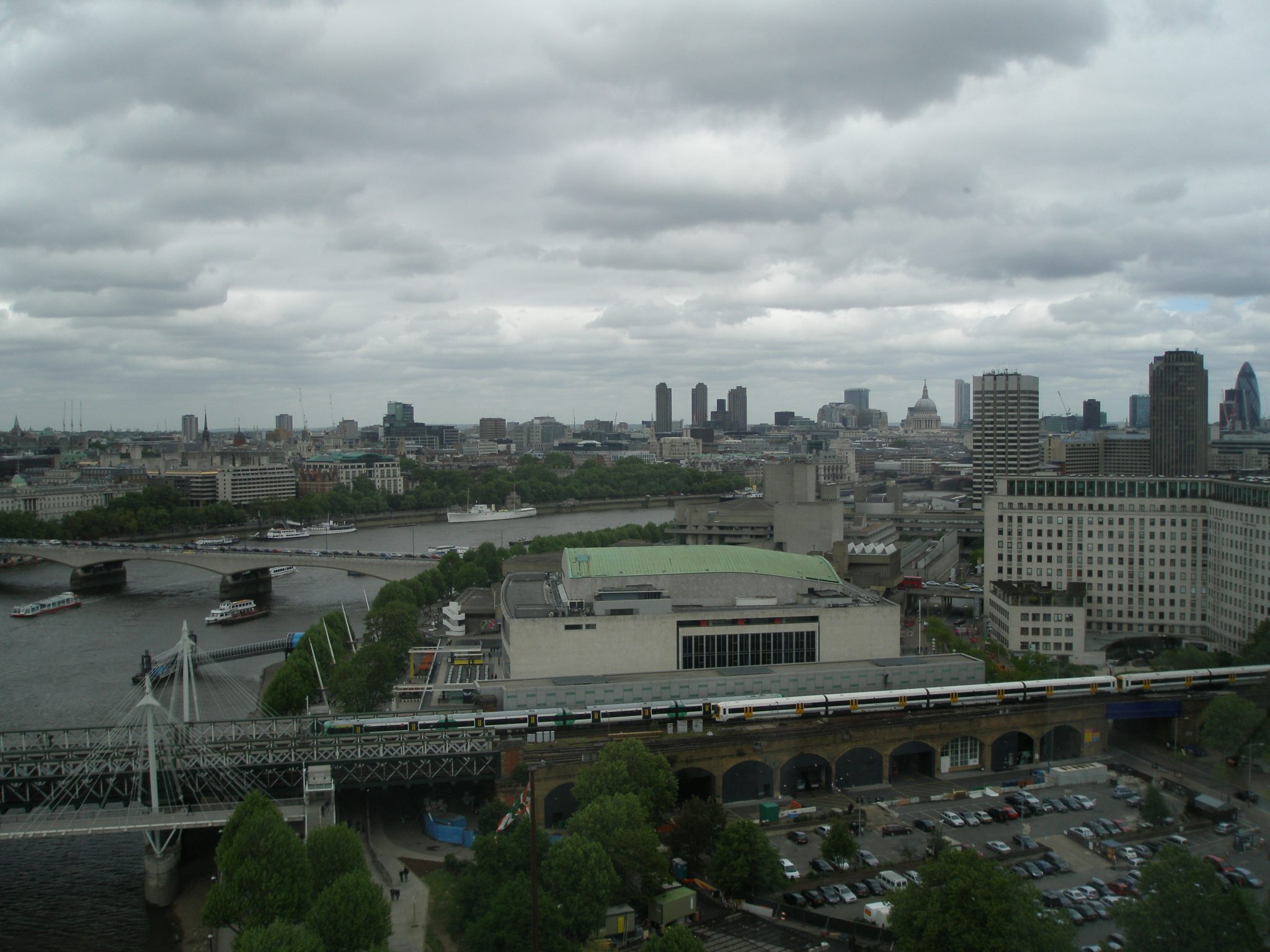
Even at sidewalk-level, the views of the Thames are nothing to sniff at:
Finally, at half past Noon, my friends appeared, smiling but bemused by the comedy of errors of their morning’s commute. We embarked on one of the Thames Clippers–the fastest fleet on the River–which delivered us to Greenwich in 37 minutes.
The sights alongside the Thames are so numerous and varied, however, that I would have been perfectly happy if our trip had taken twice the time. Our vessel sped smoothly past Southwark, and The City; past Wapping, and Limehouse; past Canary Wharf, the Isle of Dogs and the Docklands.
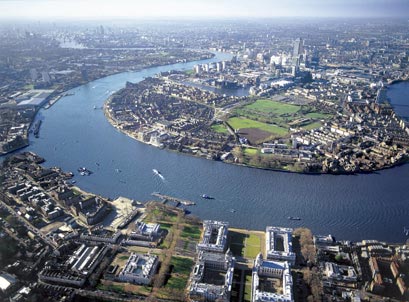
Isle of Dogs (upper part of photo), which is across the Thames from Greenwich (Royal Naval College is at bottom of photo)
On my next trip to England, I’ll concentrate upon each of those areas, but the goal today was to see Christopher Wren’s Old Royal Naval College, the centerpiece of the UNESCO-designated Maritime Greenwich World Heritage Site. Like all architecture-geeks, I’ve a soft spot for Wren. One could spend a significant chunk of one’s life visiting all of Wren’s buildings, but, apart from his exquisite St.Paul’s Cathedral (which has been thoroughly cleaned)…
…and his rebuilt Church of St.Mary-Le-Bow in Cheapside…
…if one wants to experience the essence of Wren at his Baroque finest, a trip to Greenwich is essential. The Greenwich Tourism Council nicely summarizes the history of the site:
“Greenwich Hospital was established in 1694 by Royal Charter for the relief and support of seamen and their descendants and for the improvement of navigation. Sir Christopher Wren planned the site, described as ‘one of the most sublime sights English architecture affords,’ and during the first half of the eighteenth century various illustrious architects, such as Hawksmoor and Vanbrugh, completed Wren’s grand design. The elaborate ceiling and wall paintings in the Great Hall (known as the ‘Painted Hall’) were executed by Sir James Thornhill between 1707 and 1726. The chapel was restored by James ‘Athenian’ Stuart after a fire in 1779. In 1869 the Hospital was closed, and in 1873 the complex became the Royal Naval College, where officers from all over the world came to train in the naval sciences. In 1998 the Royal Navy left Greenwich and handed the responsibility for the site to the Greenwich Foundation. In the Autumn of 1999 the University of Greenwich began to take up residence in two of the four Great Courts.”
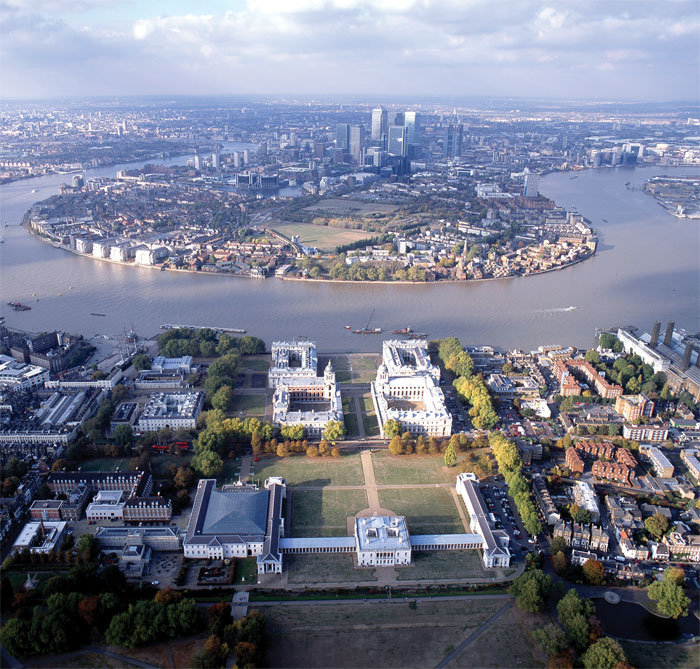
Greenwich World Heritage Site, with the Queen’s House in the foreground, and The Old Royal Naval College nearer to the Thames. The Isle of Dogs is across the River, with the skyscrapers of Canary Wharf further to the west.
Seen from pedestrian-level, Wren’s buildings along the Thames are hard to understand in their entirety. The gulls who soar above the River have the best view of the complex:
As we entered the West Gate, the skies restrained themselves…
… but , as if on cue, when we reached the main quadrangle of the Naval College, the clouds turned gray….
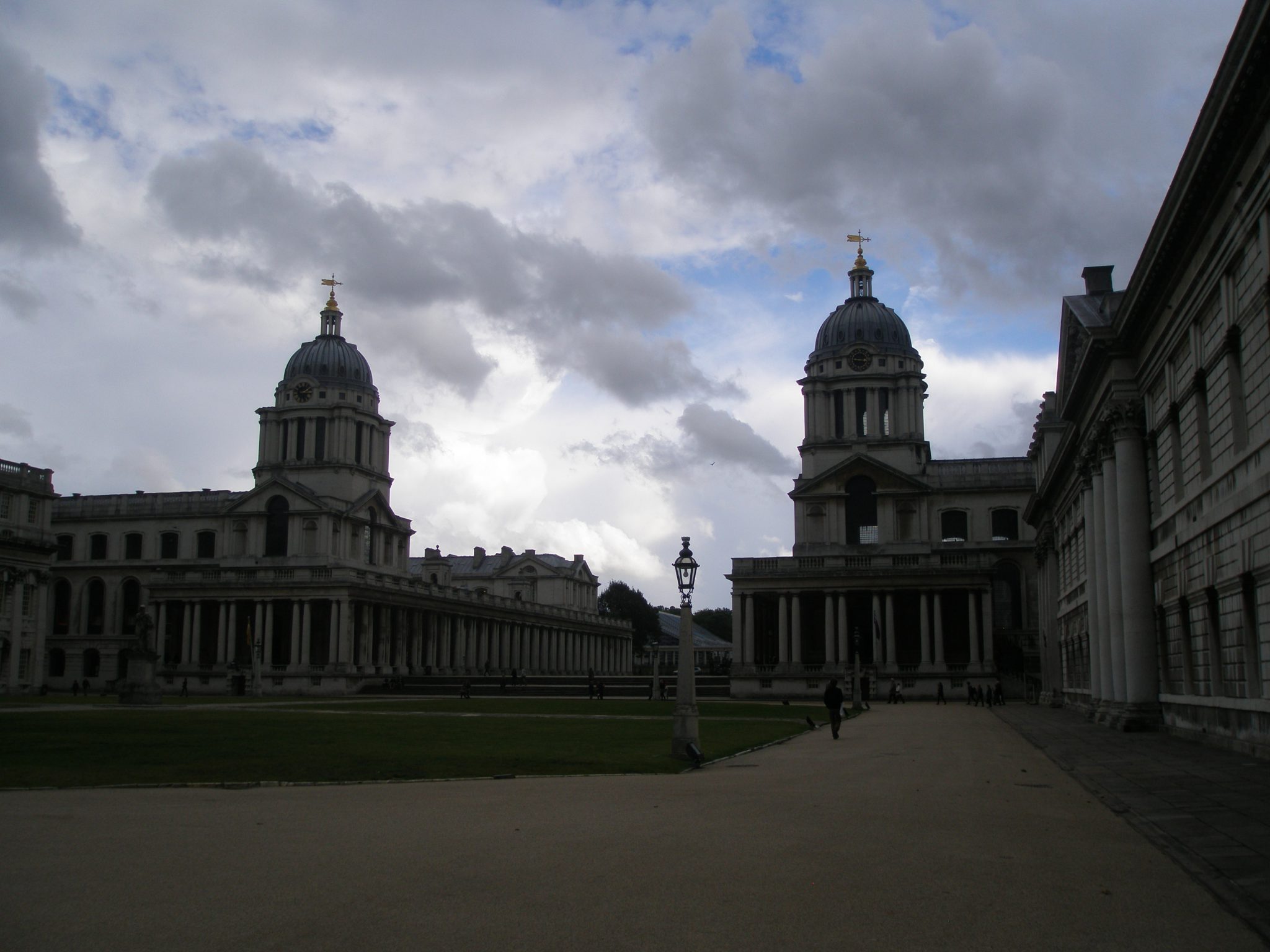
Old Royal Naval College. On the left: Queen Mary Court & Chapel. On the right: King William Court & The Painted Hall, which sits below the great dome.
…and then black:
A squall swept across the Thames…
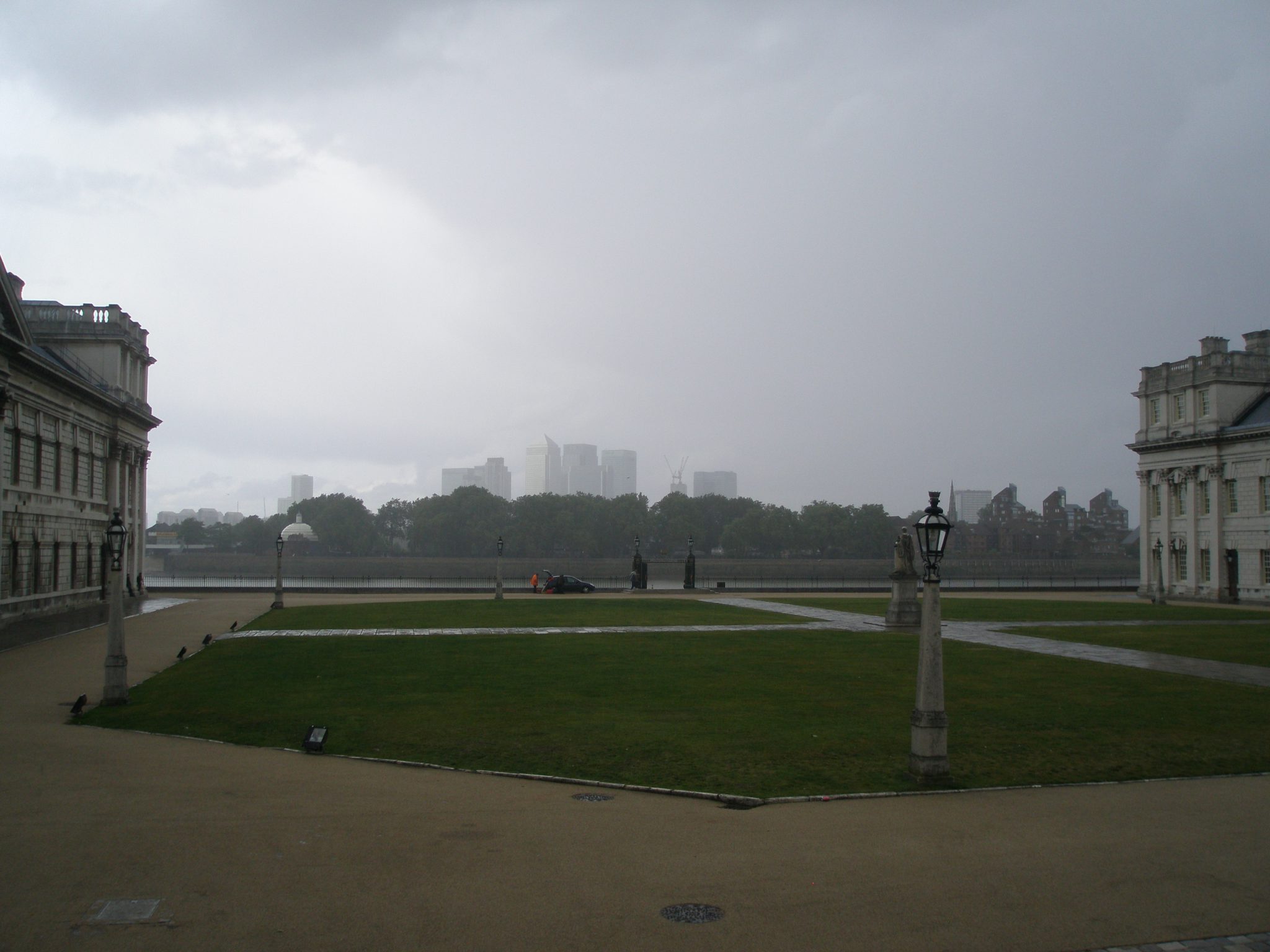
On the left: King Charles Court & Admiral’s House. On the right: Queen Anne Court. In the distance: Canary Wharf.
…but then cleared, within a matter of minutes:
We ducked inside King William Court, to the Painted Hall, where almost every inch of its walls and ceiling are covered with trompe l’oeil painting; effects which took James Thornhill 19 years to complete.
As of December 2012, a major grant from the Heritage Lottery Fund ended Mister Thornhill’s begging, and, as reported by THE GUARDIAN:
“A life-sized representation of the west wall in The Painted Gallery has been put in place to hide scaffolding ahead of a conservation project” of that wall. “The 110 square metre Baroque masterpiece is due to be restored to its former glory for the first time in 50 years.”
Here are my Before-Restoration-Photos of The Painted Gallery, which, though a bit faded, is still over-the-top-spectacular:
Exiting The Painted Hall, we proceeded down the colonnade, toward The Queen’s House, and into temporary sunshine:
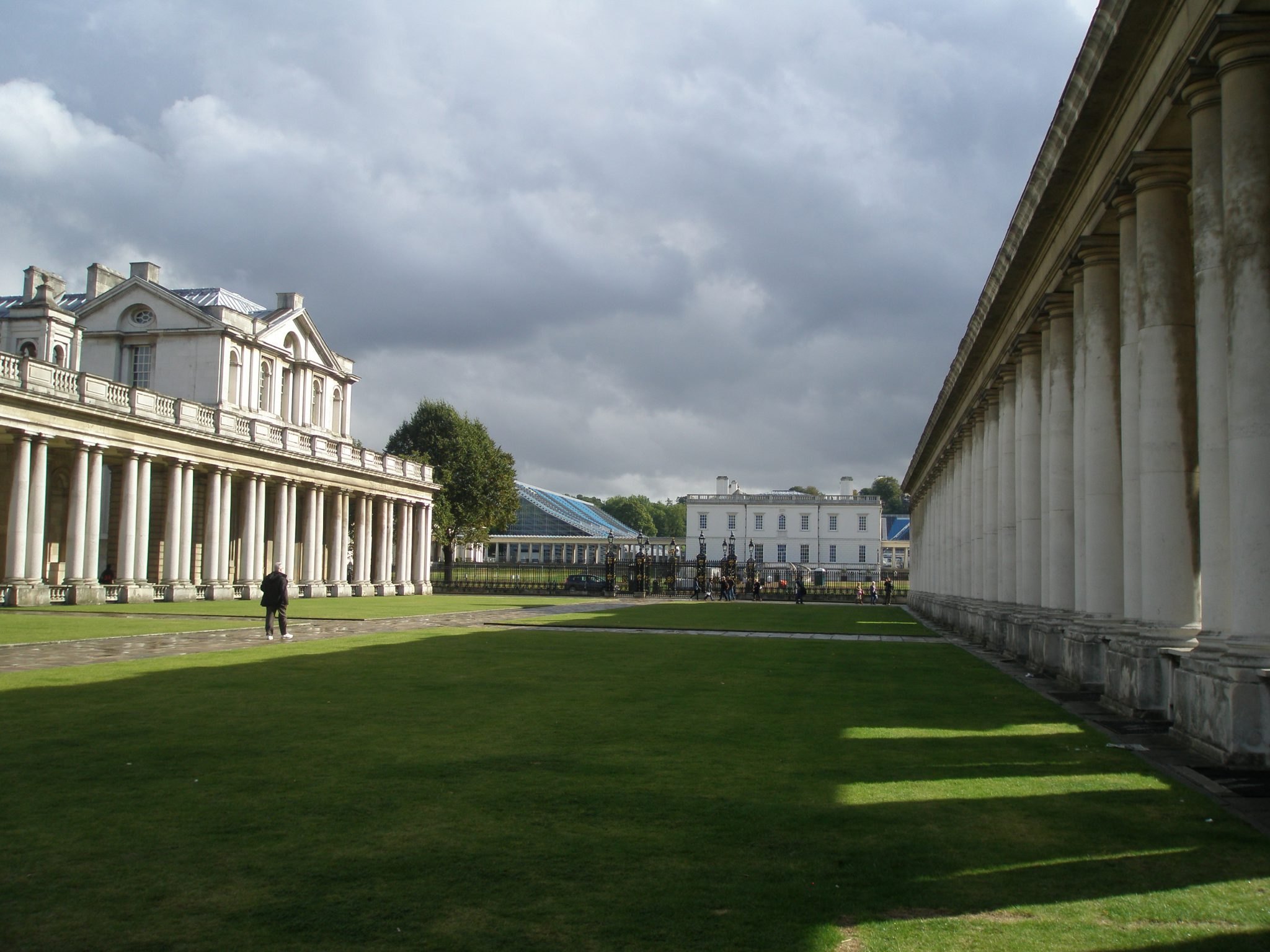
On the left: Colonnade of Queen Mary Court. On the right: Colonnade of King William Court. Center: The Queen’s House, designed in 1616 by Inigo Jones for Anne of Denmark, Consort of King James I. Behind The Queen’s House: temporary grandstands for the Olympics Equestrian Competitions
Anne of Denmark, for whom The Queen’s House was designed, died in 1618, and construction for her summer retreat was suspended. But the advent of a new King (Charles I), and a new consort (Queen Henrietta Maria), revived the project,
and the House was finished by 1638.
Despite the way in which the Olympics events had chewed up the grass and grounds north of the Queen’s House, the view toward Christopher Wren’s Old Royal Naval College, and then to the Thames, and finally to the distant skyscrapers of Canary Wharf presents a wonderful juxtaposition of past and present.
Today’s visitors to the Queen’s House haven’t the pleasure of sweeping up the grand stairway: they instead scurry into the building via a basement corridor which leads to vaulted chambers:
Access to the Ground Floor is made via the lovely Round or “Tulip” Stairs, which were the first centrally unsupported stairs built in England.
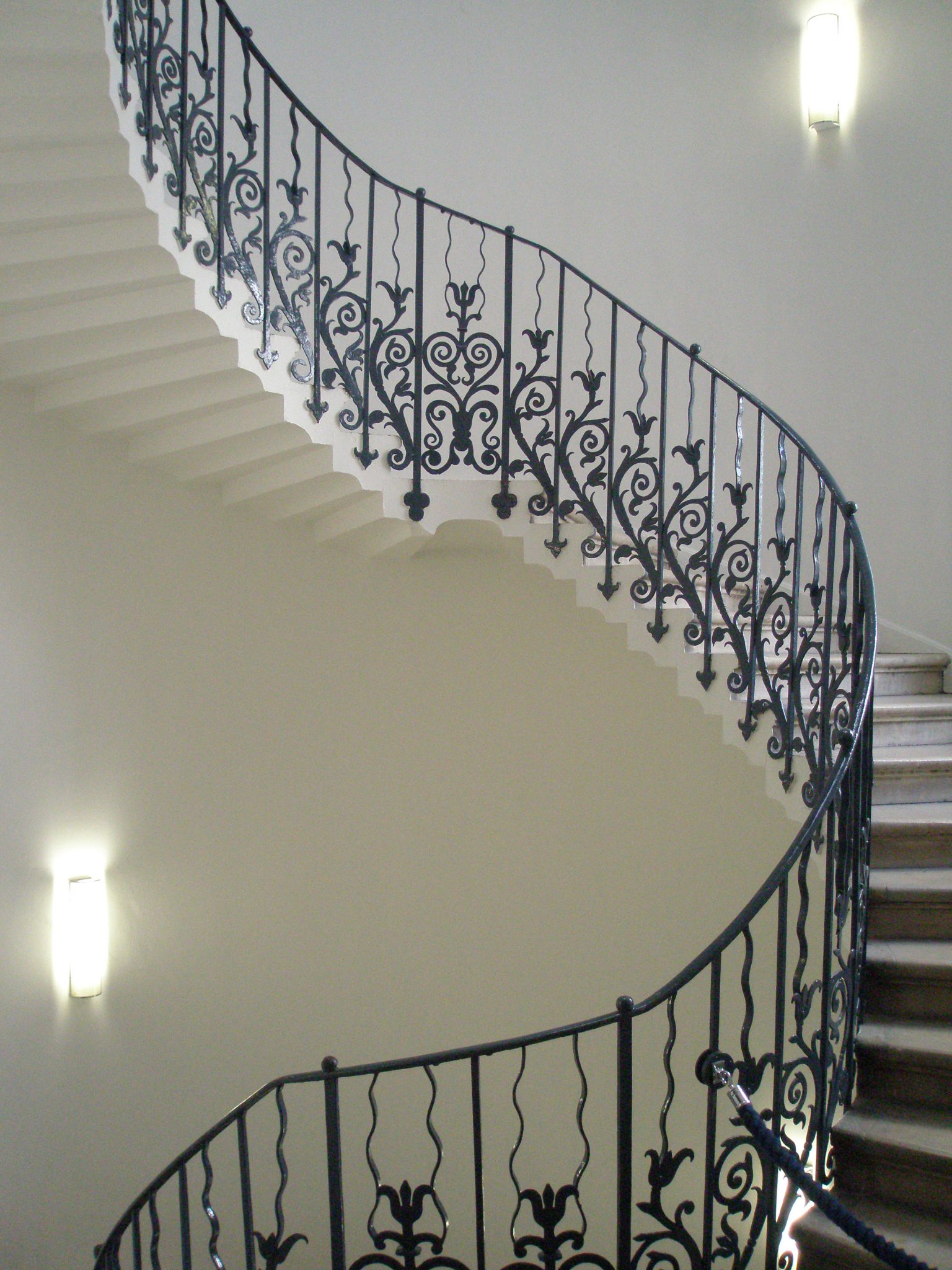
The first reference to the iron handrail design as “tulip” was in 1694. Despite this, the flowers are probably stylized fleurs-de-lys, to honor Queen Henrietta Maria.
Apart from the Tulip Stairs, the most impressive space within The Queen’s House is the double-height Great Hall:
For a royal residence, the design of The Queen’s House is restrained and almost austere. Because of this purity, the building seems modern, especially in its detailing:
Exiting The Queen’s House, the skies gave us a brief and welcoming wink of sunshine….
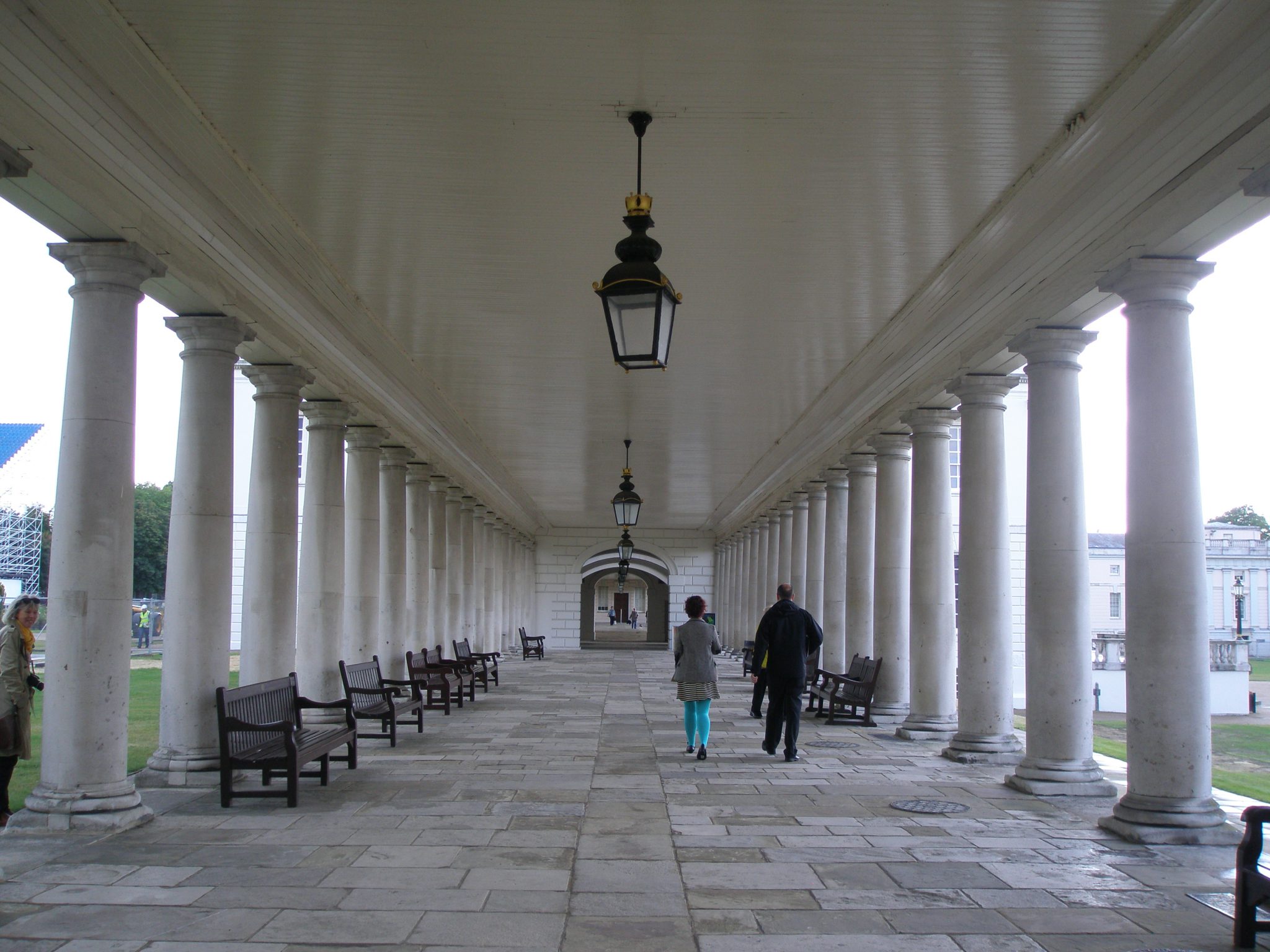
The “King’s Side,” or East Colonnade of The Queen’s House…with Anne (to the left) peeking at me from behind a column.
…before abruptly returning to their glowering. Work crews, well-accustomed to being soaked to their skins, continued disassembling the
enormous grandstands which had been erected nearby for the summer’s Olympics Equestrian Competitions.
Before we paused for an afternoon snack, David reminded me that, on this my day-of-birth, a bit of Prime Meridian straddling was in order.
A helpful guide at the Painted Hall had directed us to a part of the Meridian which is removed from the crowds at the Royal Observatory. The skies cooperated, the rain stopped, and so I posed for my birthday-portrait (I dislike being photographed); one foot in the Eastern Hemisphere, and the other in the Western…
…after which time my friends surprised me with gifts, and with a birthday cake that Anne had somehow concealed and carried. I began to suspect that Anne’s seemingly-bottomless valise was from the same shop where Mary Poppins found hers.
With daylight fading, we hiked through the parklands on the hillside to the south of The Queen’s House, up toward the Royal Observatory….
…where the panorama of London’s densely-built Eastern sprawl unfolded itself:
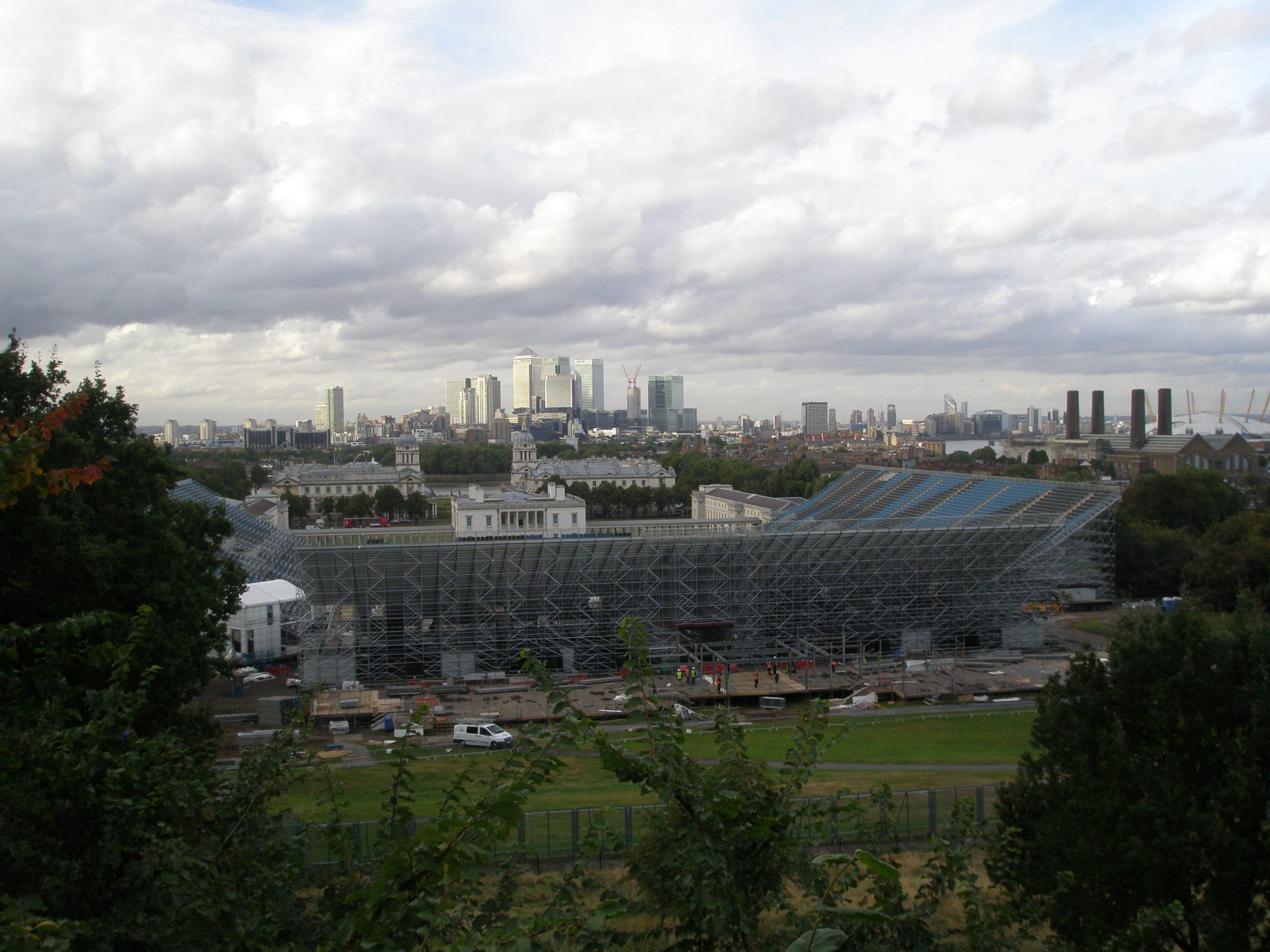
Olympic Grandstands, with The Queen’s House, Old Royal Naval College, The Thames & Canary Wharf in the distance
As evening approached, we detoured for a fast look at Nicholas Hawksmoor’s St. Alfege Parish Church…
…which reminded me that, having recently been introduced to Hawksmoor’s artistry at Venice’s Architecture Biennale, my next trip to England must also include a scavenger hunt for Hawksmoor’s many London buildings.
We returned to the rain-scoured waterfront…
…and looked pityingly at the land-locked Cutty Sark:
Night fell, and we rode a Clipper Boat back to the London Eye dock as we admired the glitteringly illuminated buildings alongside the Thames.
As David hailed me a cab near Parliament Square, and I hugged him and Anne and Janet goodbye, I didn’t know whether to weep from the joy
of having been blessed by their generous friendship and jovial companionship, or to despair that our visit was ending. As my cab pulled away down Victoria Street, I decided to ditch the weeping as I recalled the fun we’d had together.
Wednesday, September 26th. London.
My good friend Dr. Richard Stein refers to my way of spending time abroad as “Triathlon-Traveling,” and he has a point. Cramming as much wonderfulness as possible into almost every single day has its cost; exhaustion is always waiting in the wings. After Tuesday’s excellent Greenwich-exertions, I thought it best to spend Wednesday quietly…enjoying the gentle pleasures of Sloane Square.
As always, I was transfixed by the view from my windows at the Hotel:
I dawdled over an early lunch of pea and mint soup, grilled veggie antipasti, and lemon sorbet at Gallery Mess–phone# 0207-730-8135. The friendly staff and the top-knotch kitchen, combined with an elegant dining room that overlooks the green at Duke of York Square, make this my new-most-favorite place for a relaxing meal in Sloane Square.
Next up was a Signature Massage, at the Ushvani Day Spa (1 Cadogan Gardens—www.ushvani.com). The Spa’s 90 minute long massage is a highly artistic and deeply therapeutic treatment that combines techniques from Malaysia and Bali. For Americans accustomed to Swedish deep-tissue massage, Ushvani’s approach to complete body care is a revelation. Ushvani’s therapists must undergo an intensive 4-month, in-house course of training before they’re able to administer the ritualistic, calming and healing treatments pioneered by the Spa’s founder, Usha Arumugam. The massages are costly, but, for an achy traveler, they’re worth every penny.
I rounded off my day of rest at another Sloane Square favorite: The Cocomaya Café, a tiny, mostly-quiet haven on a pedestrians-only thoroughfare, just steps away from the Peter Jones Department store (186 Pavilion Road, phone# 020-7259-0164). With only 6 marble-topped tables, Cocomaya is best visited on weekdays BEFORE the local schools get out, because, after about 3PM, it’s mobbed with the local Yummy-Mummies and their beautifully-uniformed, but not-always-beautifully-behaved little ones, some of whom had me mentally reciting these lines: “The Goops they lick their fingers, and the Goops they lick their knives; They spill their broth on the tablecloth, Oh they live disgusting lives!” Cocomaya offers 2nd flush Darjeelings which are served in antique silver pots and in fine, unmatched china cups. Their chicken and tarragon sandwiches on multi-grained bread are lovely, and their pastries are beautiful to behold, and even better to consume.
Thursday, September 27th. London.
On this, my last full day in England, I decided that a Mindless Wallow in Serious Grandeur would be perfect, and so I caught a train at Victoria Station and headed to Hampton Court Palace.
Properly recounting the history of Hampton Court isn’t something I have the space—or stamina—for here! Suffice it to say that in 1514 Cardinal Thomas Wolsey acquired the site, upon which a manor house stood. Using the enormous wealth he’d acquired as Henry VIII’s administrator, Wolsey quickly began to expand and transform the property into a palace; one which
would be a place worthy to receive the visits of his king. Unfortunately, this expansion of Hampton Court coincided with Henry’s attempts to divorce his Queen, Katherine of Aragon. Henry insisted that Wolsey prevail upon his Church to grant an annulment of Henry’s marriage with Katherine, but when Wolsey wrote to the King, asking that he drop his annulment suit, Henry exploded, and declared he’d give “a thousand Wolseys for one Anne Boleyn.” With this, Wolsey’s days of power were numbered. To try to appease his furious monarch, Wolsey formally presented Hampton Court to Henry, and Henry began to prepare and further enlarge the palace for his mistress and intended queen.
From the early 1500’s, and onward, the buildings and gardens at Hampton Court acquired layer upon layer of grandeur, as subsequent monarchs added their architectural and horticultural finger prints to the complex alongside the Thames. Given only this single day in which to explore these historical and artistic sediments, I chose to concentrate primarily upon the gardens instead of the hundreds of palace rooms. Mother Nature had gifted me with beautiful and brisk weather, and nothing could have pleased me more than several hours of walking in the almost-empty gardens that encircle the Palace.
But, to reach the 60 acres of Gardens, one must of course pass through the Palace, and so, to begin, a short tour of Henry’s Digs:
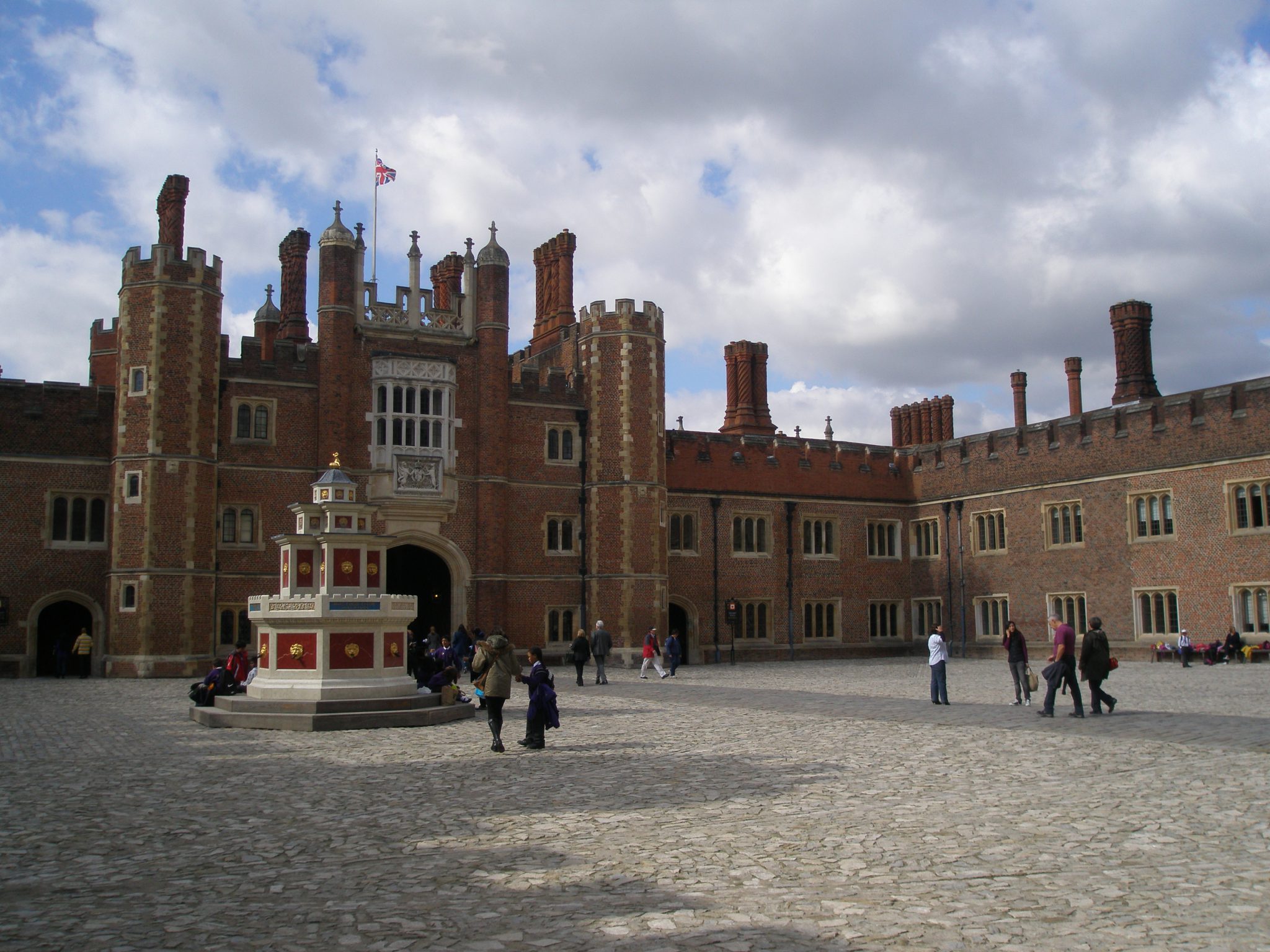
Base Court, the Palace’s largest courtyard, with a reproduction of the Wine Fountain made for Henry VIII in 1520
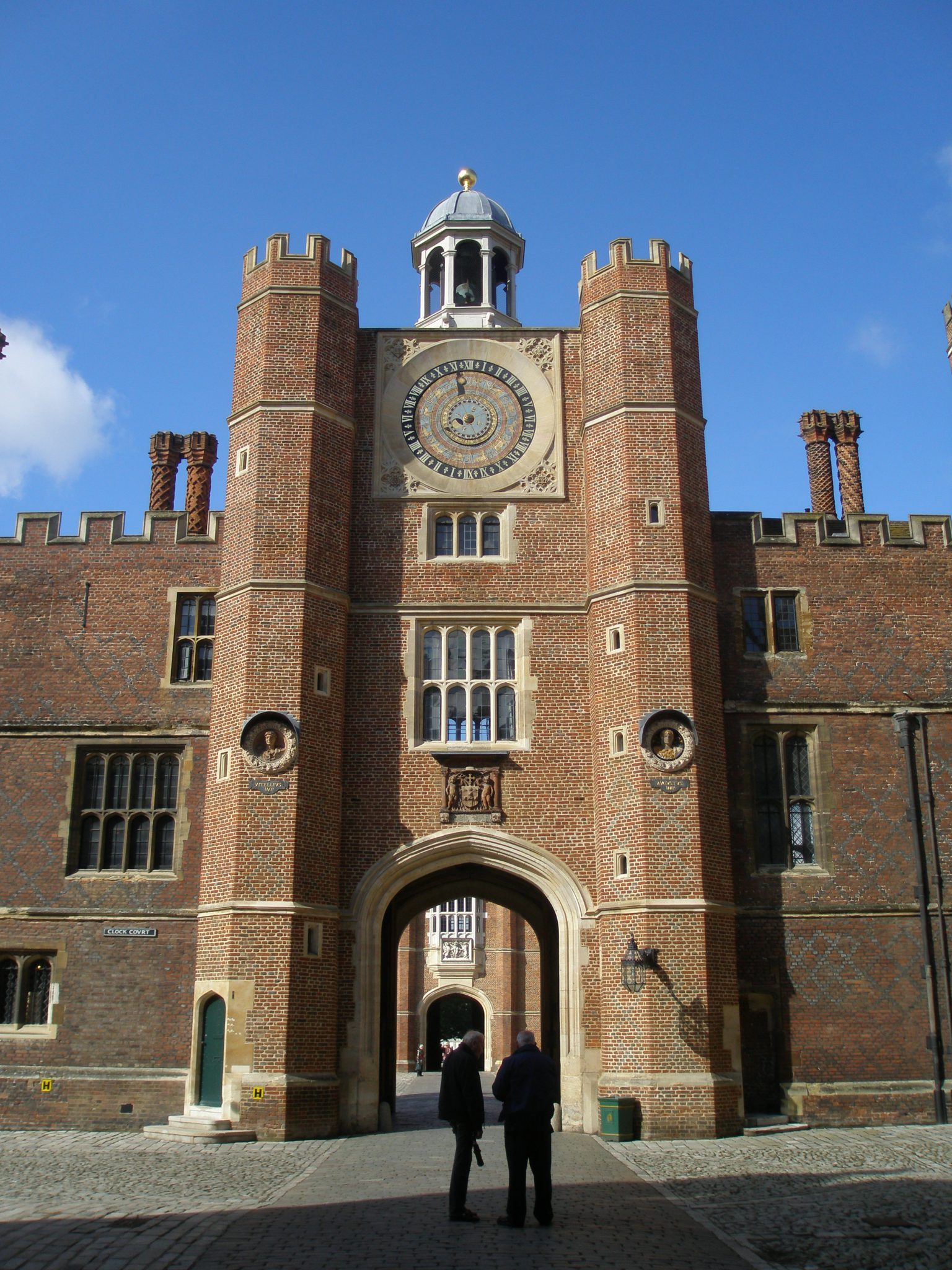
Henry VIII’s Astronomical Clock, which depicted a medieval world in which the sun orbits the Earth. This was crafted in 1540 and even indicates the time of high tide, which was useful for river-travelers.
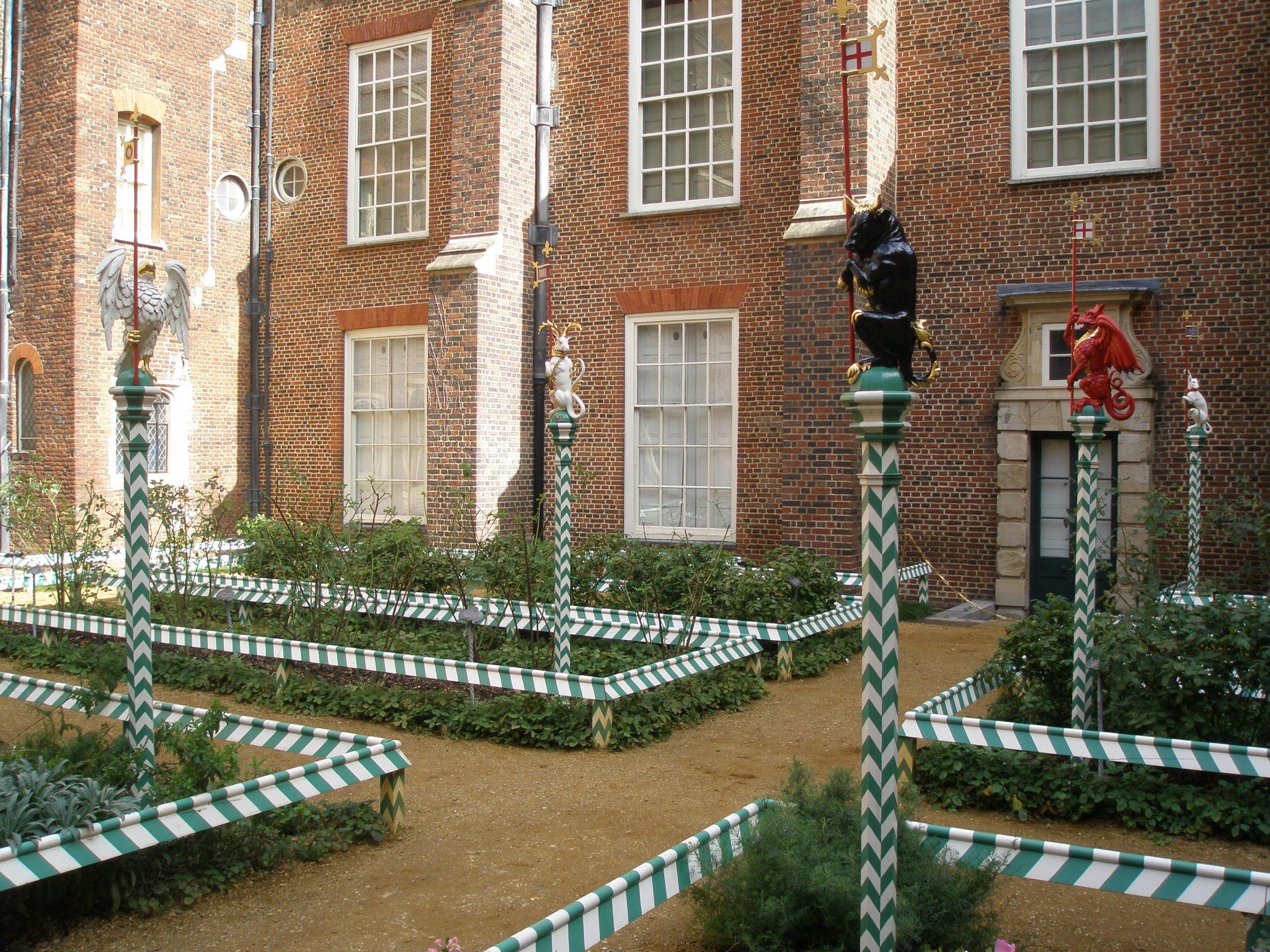
Chapel Court Garden, with low rails in the Tudor colors of white & green. Period plantings of primroses, strawberries & violets are still maintained. Henry created this garden in the 1530’s.
The next major expansion of Hampton Court Palace occurred during the reign of the last Stuarts: William, Mary and Anne. William III (reigned 1689—1702) and Mary II (reigned 1689—1694) did more than any monarchs to reshape the Palace into the form that exists today. The south façade of the new palace that King William commissioned was designed by none other than Sir Christopher Wren (assisted, as always, by his right-hand man, Nicholas Hawksmoor), but was built too hastily. In 1689 a main wall of the addition collapsed and killed some occupants, but the King was unscathed, and the physical damage repaired (the damage to Wren’s reputation was a bit harder to fix).
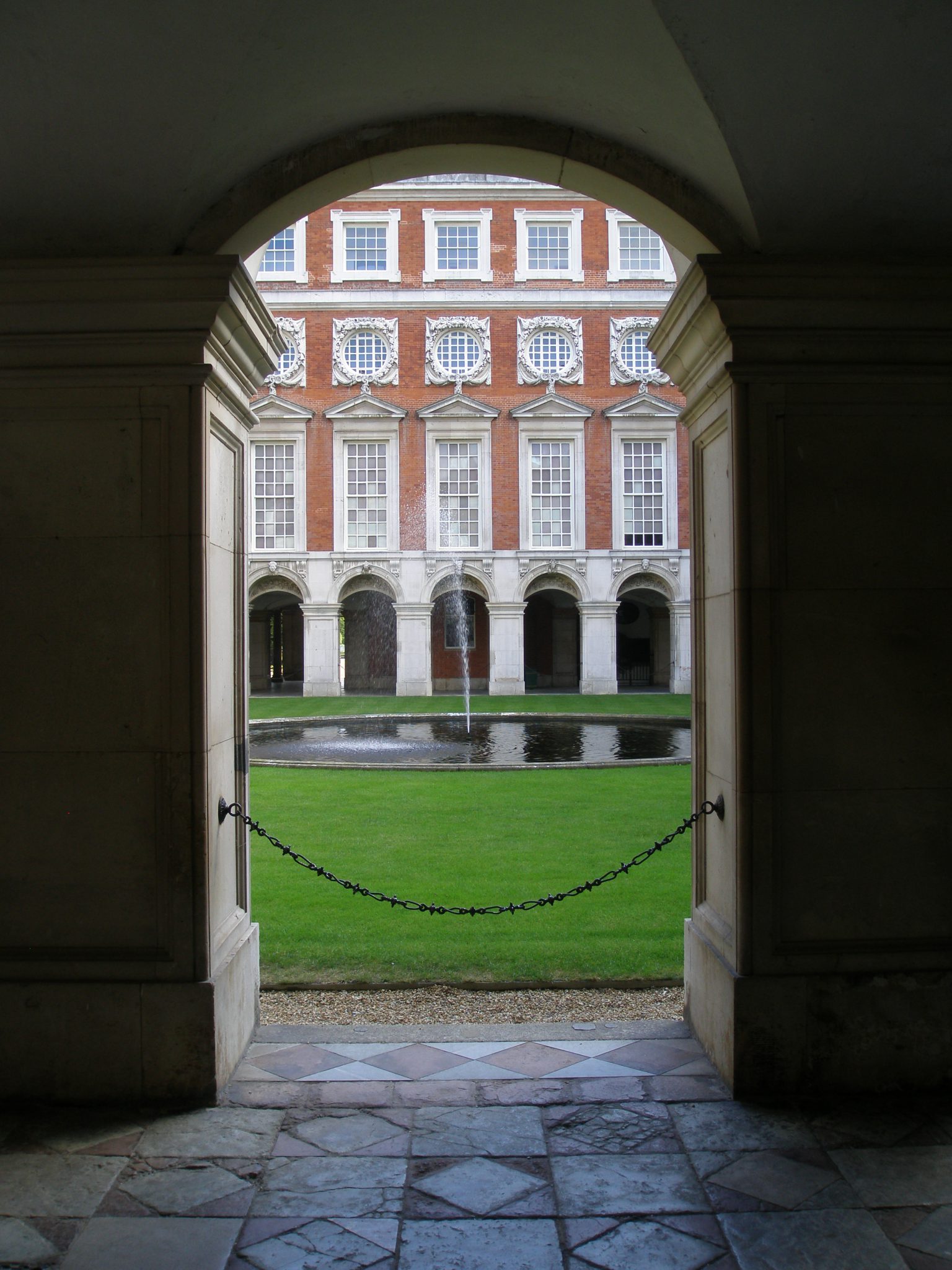
View from the Communication Gallery into the Fountain Court, part of Christopher Wren’s addition to Henry VIII’s old palace
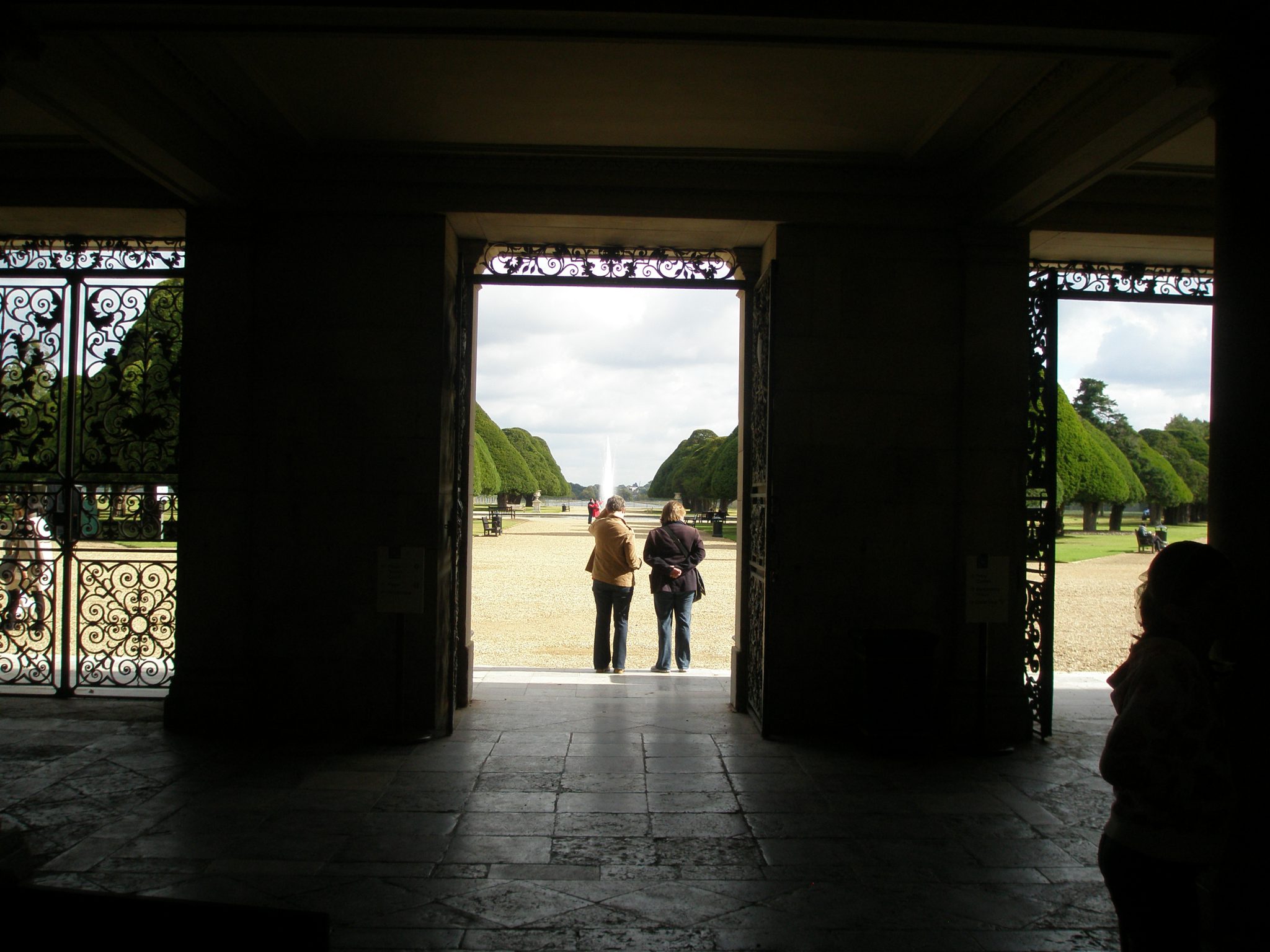
Exiting the East Front of the Fountain Court expansion, and looking out toward the Great Fountain Garden
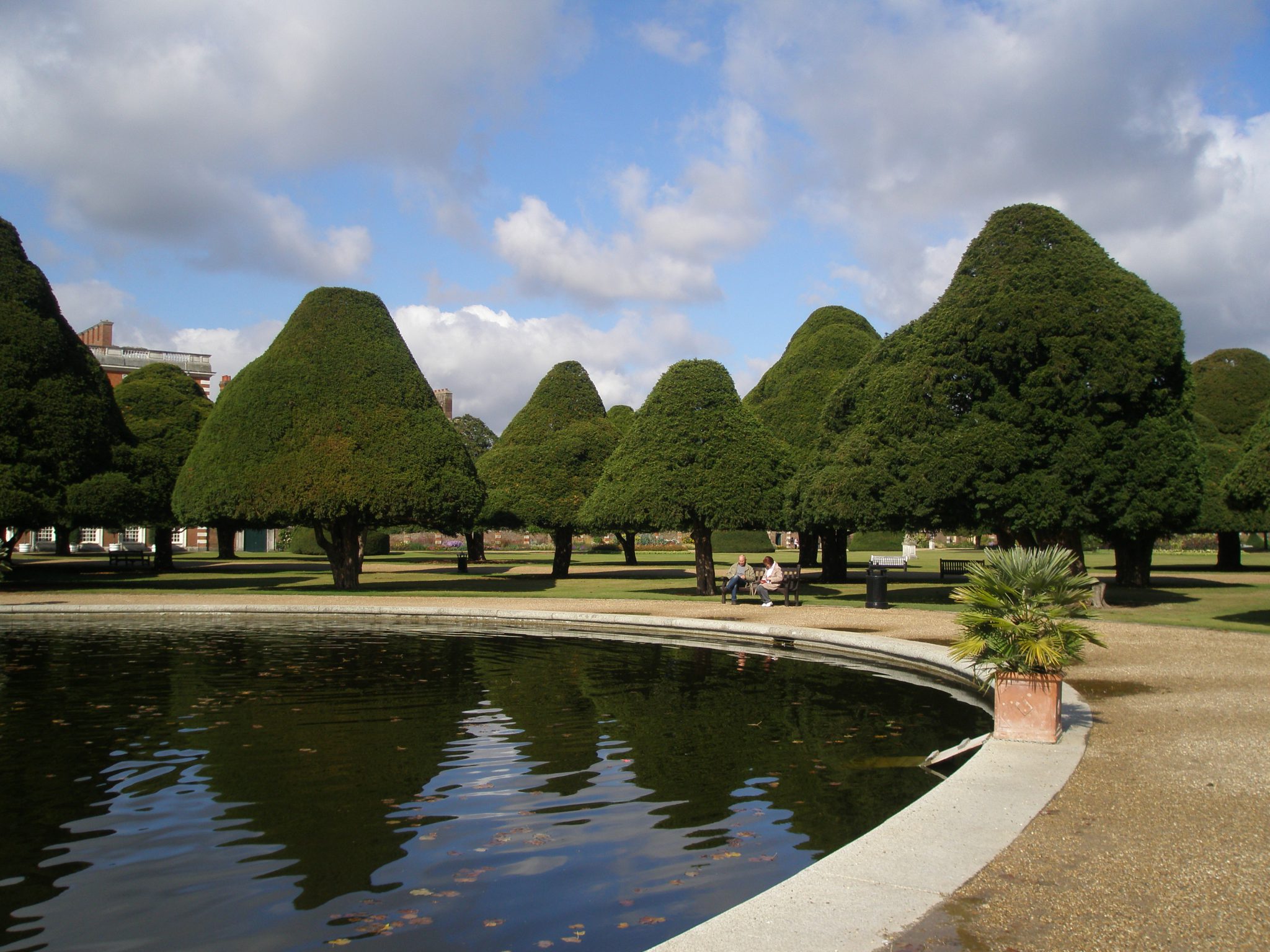
Giant-Topiary-Heaven. These yew trees grew to their present heights during Lancelot Capability Brown’s stewardship of the gardens in the mid-18th century, when he refused to prune them into unnatural shapes. Pruning was resumed in the early 20th century.
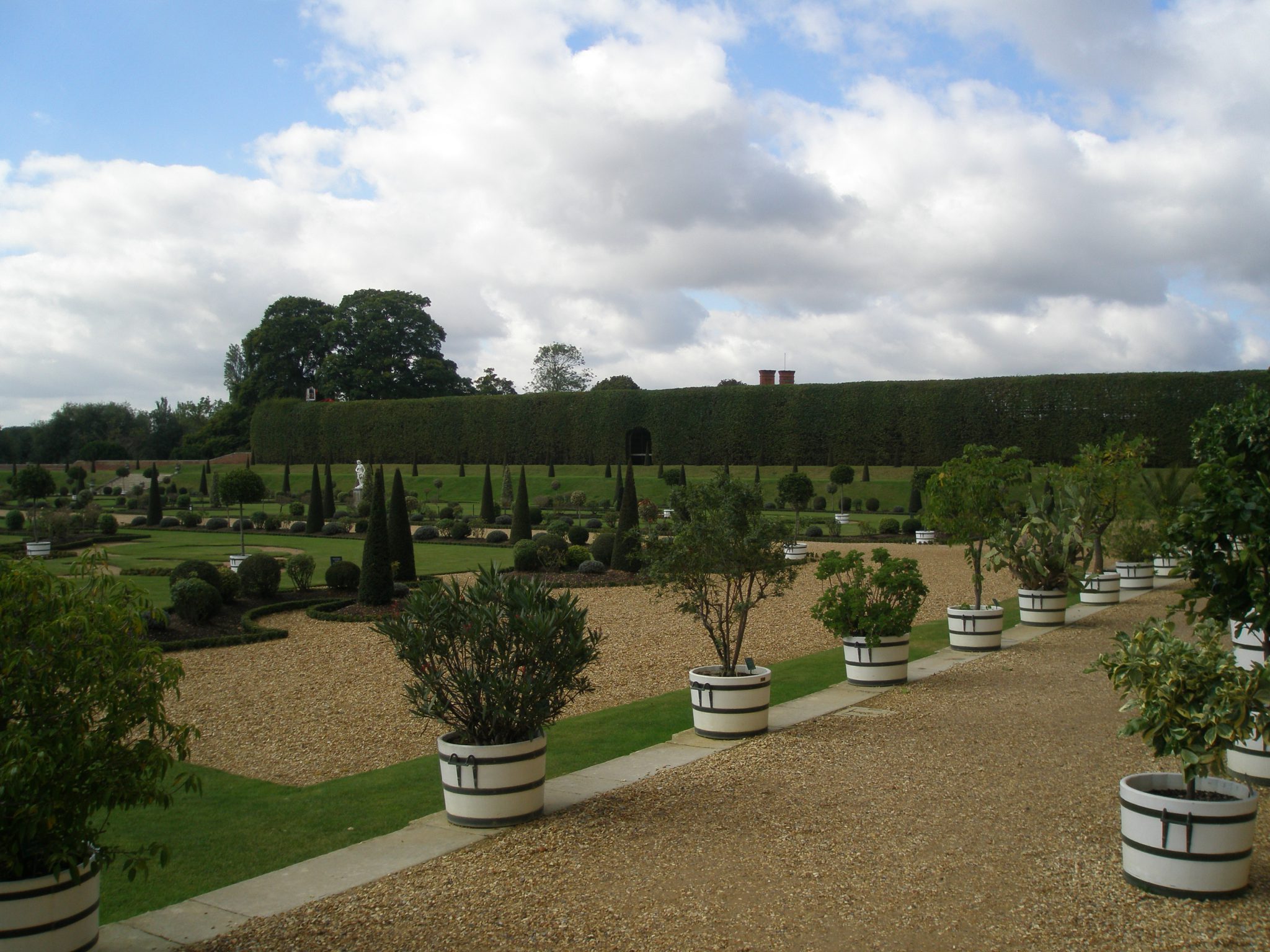
The Privy Garden, which was the monarch’s own, private plot. The garden we see today is a restoration of William III’s garden of 1702.
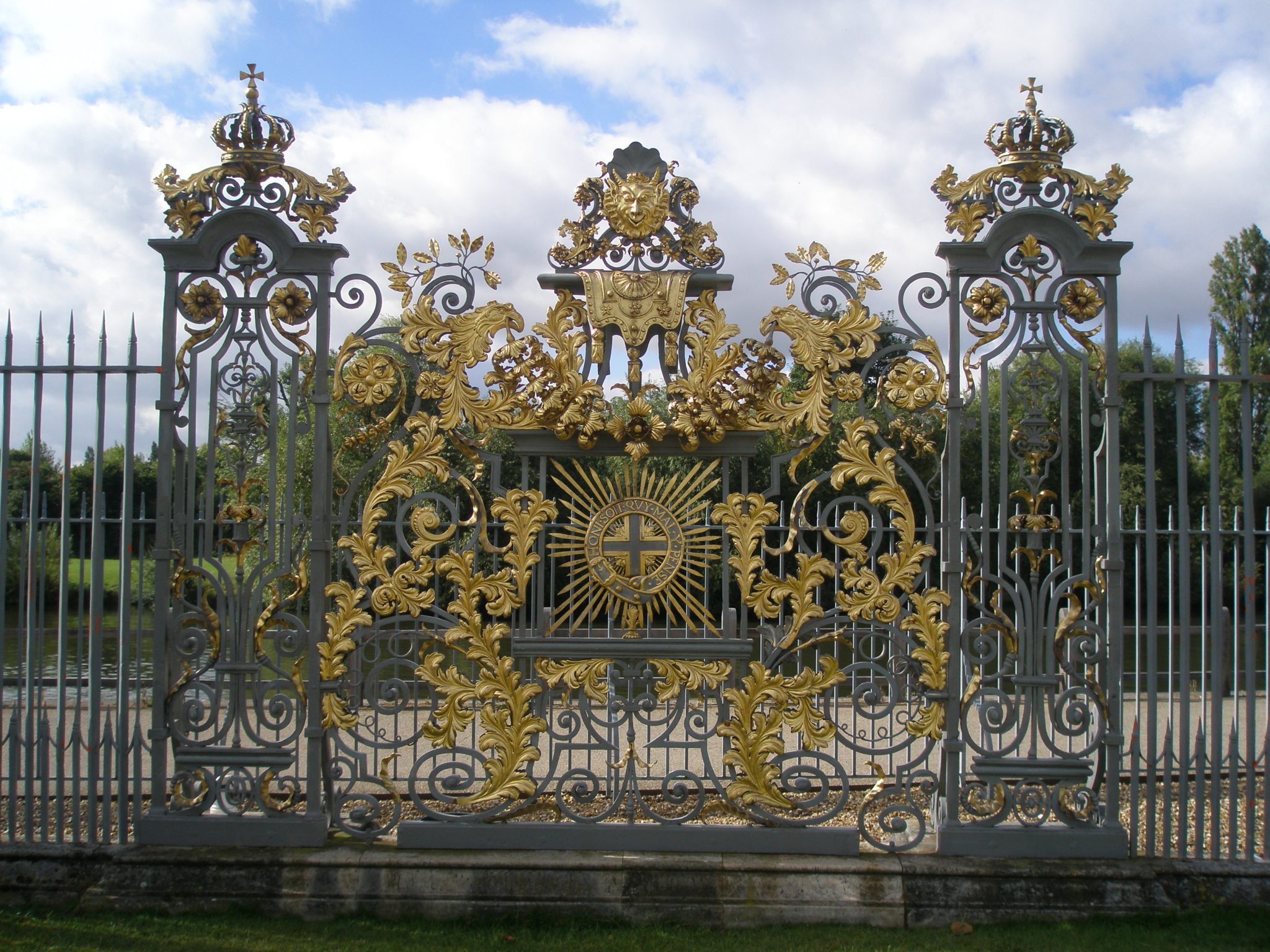
Gate, on the Thames-end of the Privy Garden. This ironwork was designed for William III by Jean Tijou, a French master blacksmith.
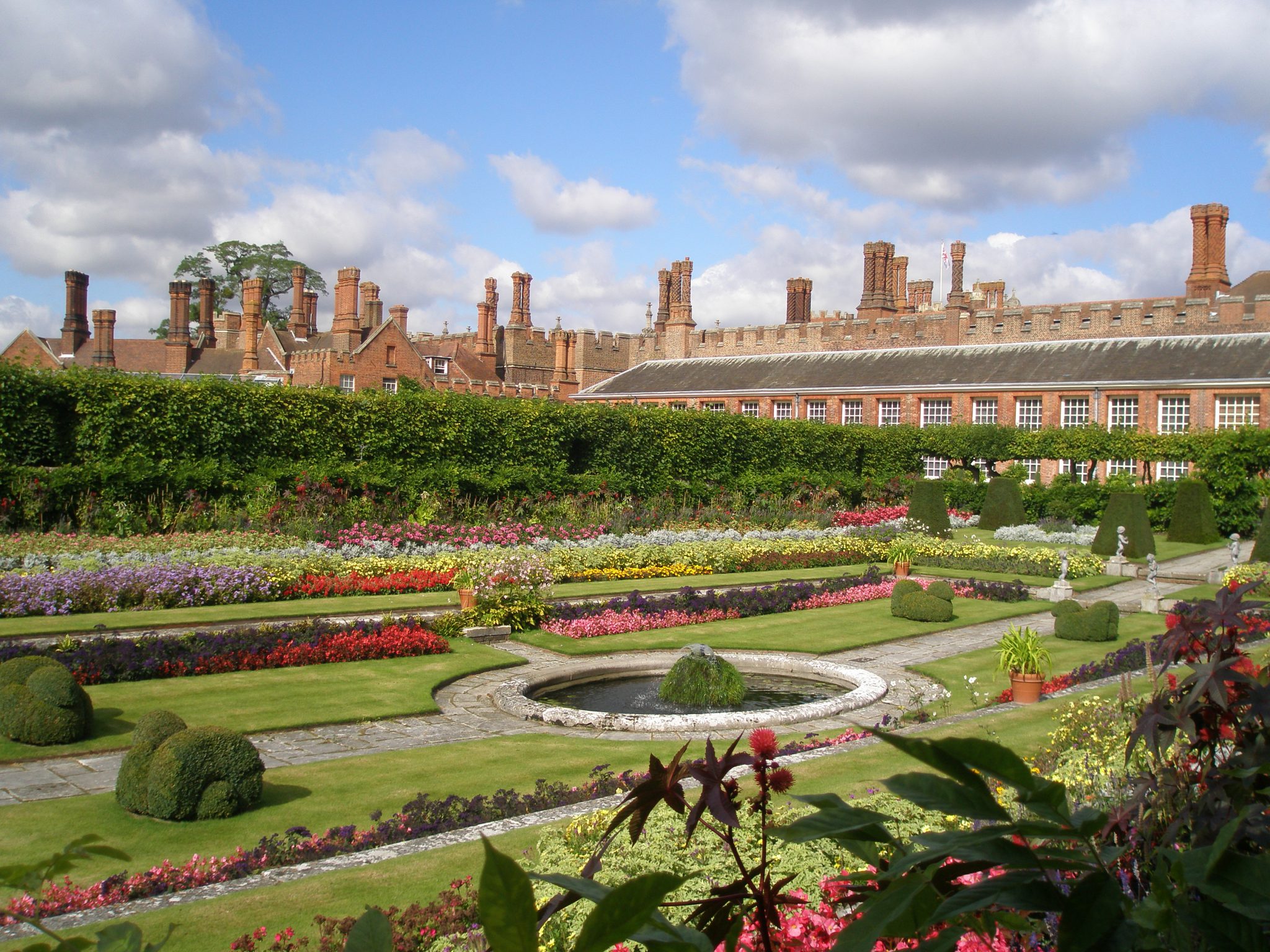
The sunken areas of the 2 Pond Gardens were originally filled with water and stocked with fish for the Palace Kitchens. In 1690, Queen Mary had the ponds drained. The sheltered depressions in the ground provided a perfect, sheltered environment for the tender and exotic plants that she’d brought with her from the Netherlands.
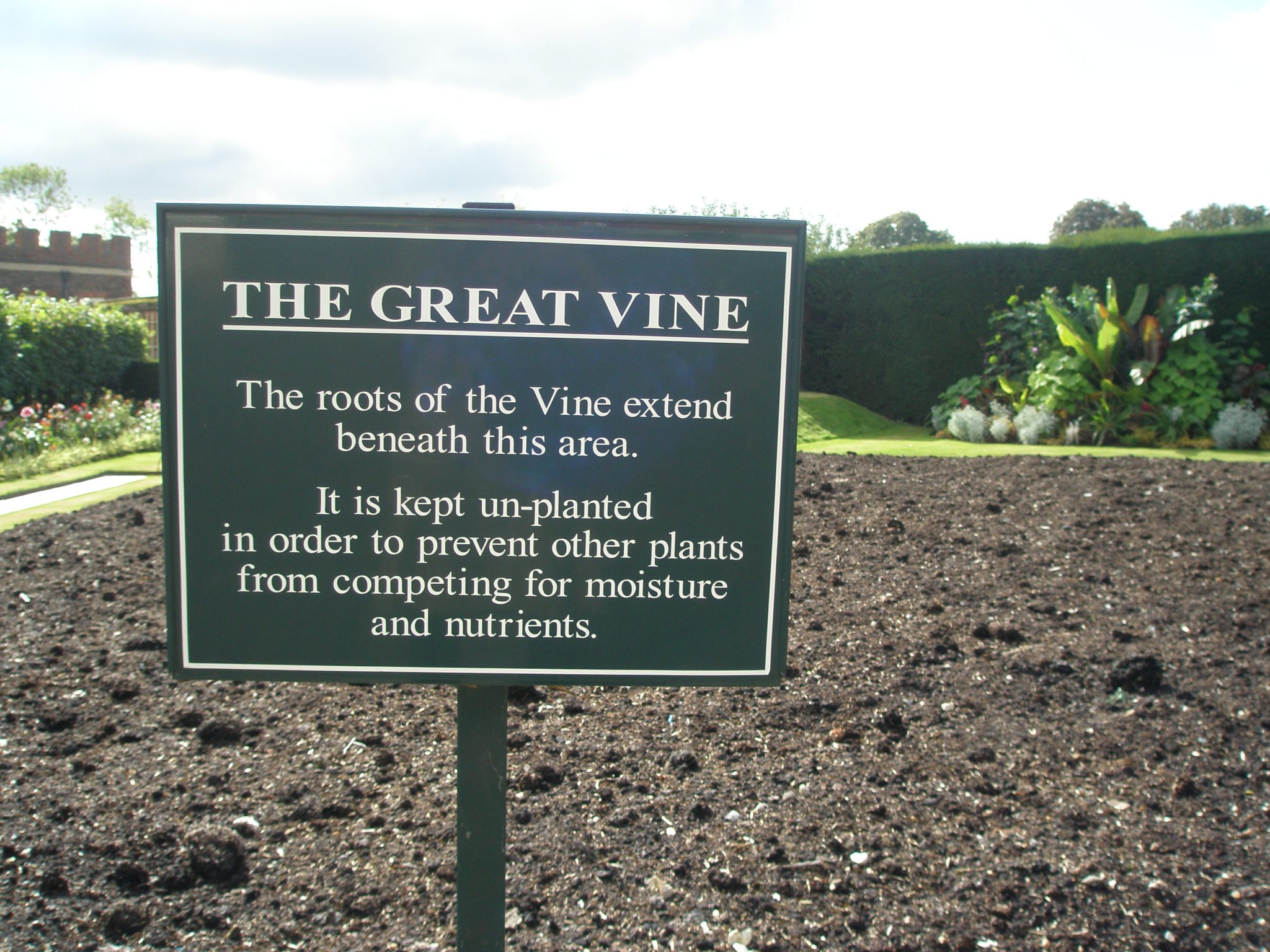
At the end of the Orangery Garden Walk is a glass-house almost filled with the largest vine in the world, a Black Hamburg Grape specimen that was planted by Capability Brown in 1768.
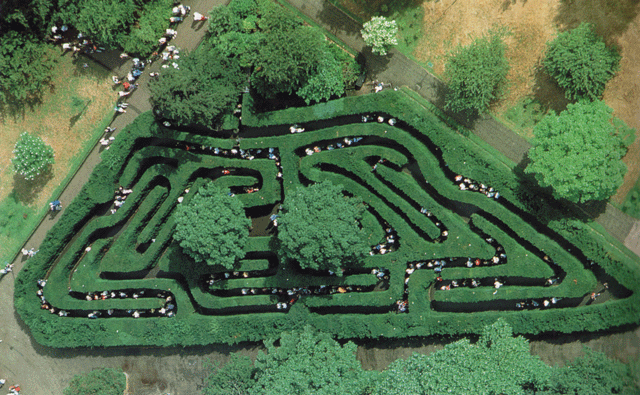
The Maze: the most famous part of The Wilderness…into which legions of schoolchildren attempt to disappear, on almost every day of the year.
Totally Saturated with Splendor, I called it quits, and took the train back to Victoria Station, surrounded by a gaggle of schoolchildren who’d also spent their day at Hampton Court. The excitement of those kids, as they chattered about the marvels they’d just seen, matched my own.
That evening at the Sloane Square Hotel, after I’d repacked my one, small suitcase (Ladies: If you’re curious about how the contents of that single bag kept me presentably-clothed for more than a month, I’ll be happy to send you a list of what I packed), I threw the curtains open, burrowed into my bed, and then gazed for hours at the sky and rooftops outside, trying to imprint every detail upon my brain.
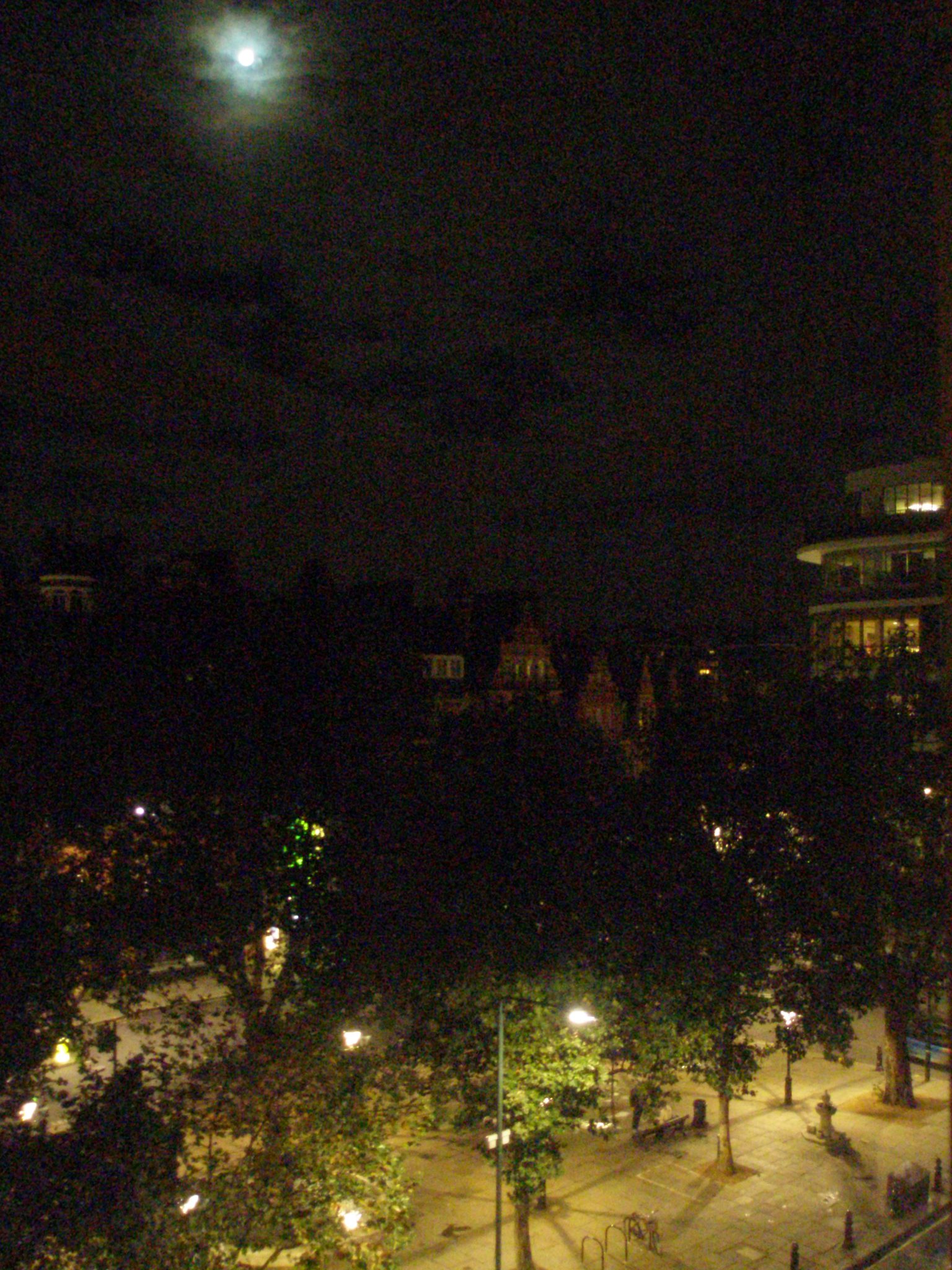
An insomniac’s view from my room at the Sloane Square Hotel, after all the sensible people in London had gone to sleep.
By the evening of September 29th, I was home again. As fall waned, I realized that my eyes, which had been taught to be more observant by my month-long travels in Italy and England, were newly-appreciative of the simpler beauties in my own back yard. December began, and though my longing for the infinite variations of London’s skies continued; I once again savored the sublime and reliable beauty of winter twilights, right here in New England.
Copyright 2012. Nan Quick–Nan Quick’s Diaries for Armchair Travelers. Unauthorized use and/or duplication of this material without express and written permission from Nan Quick is strictly prohibited.

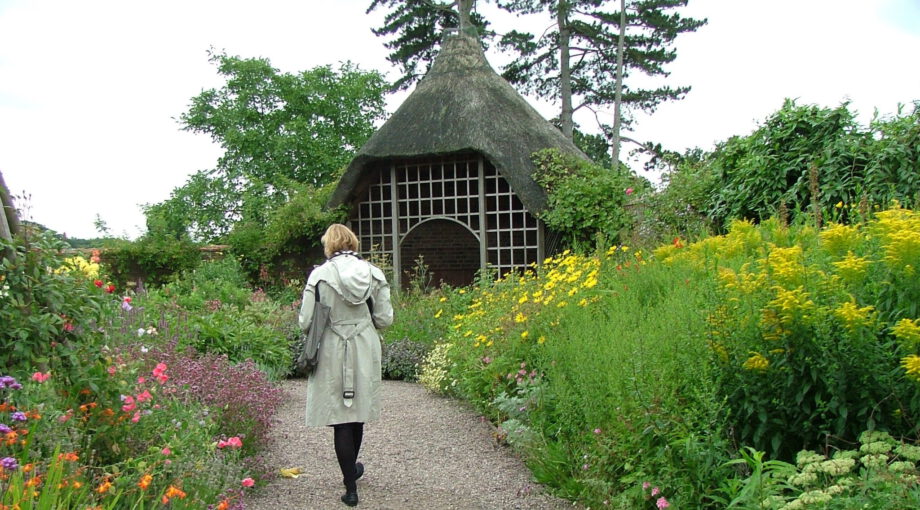

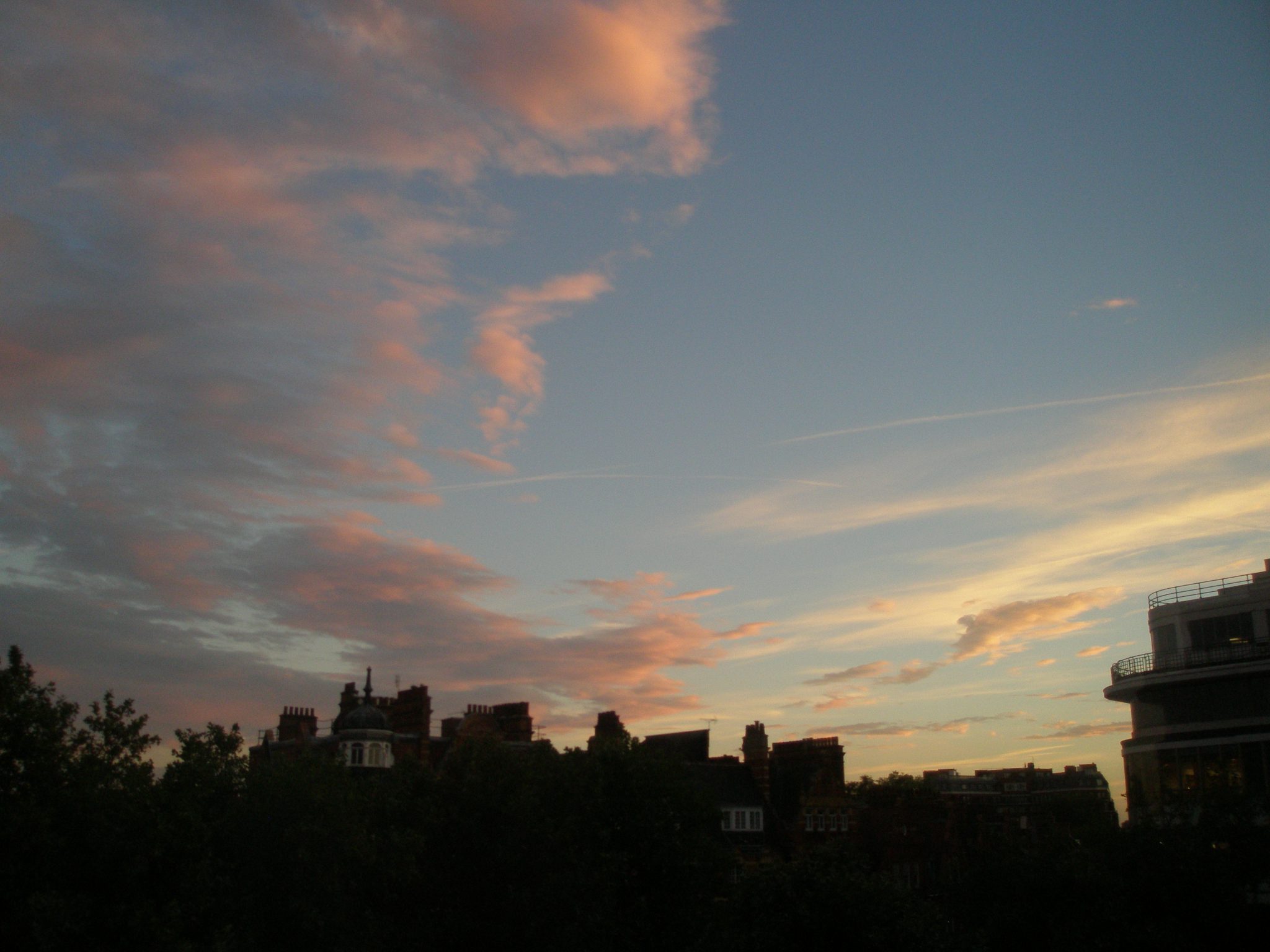
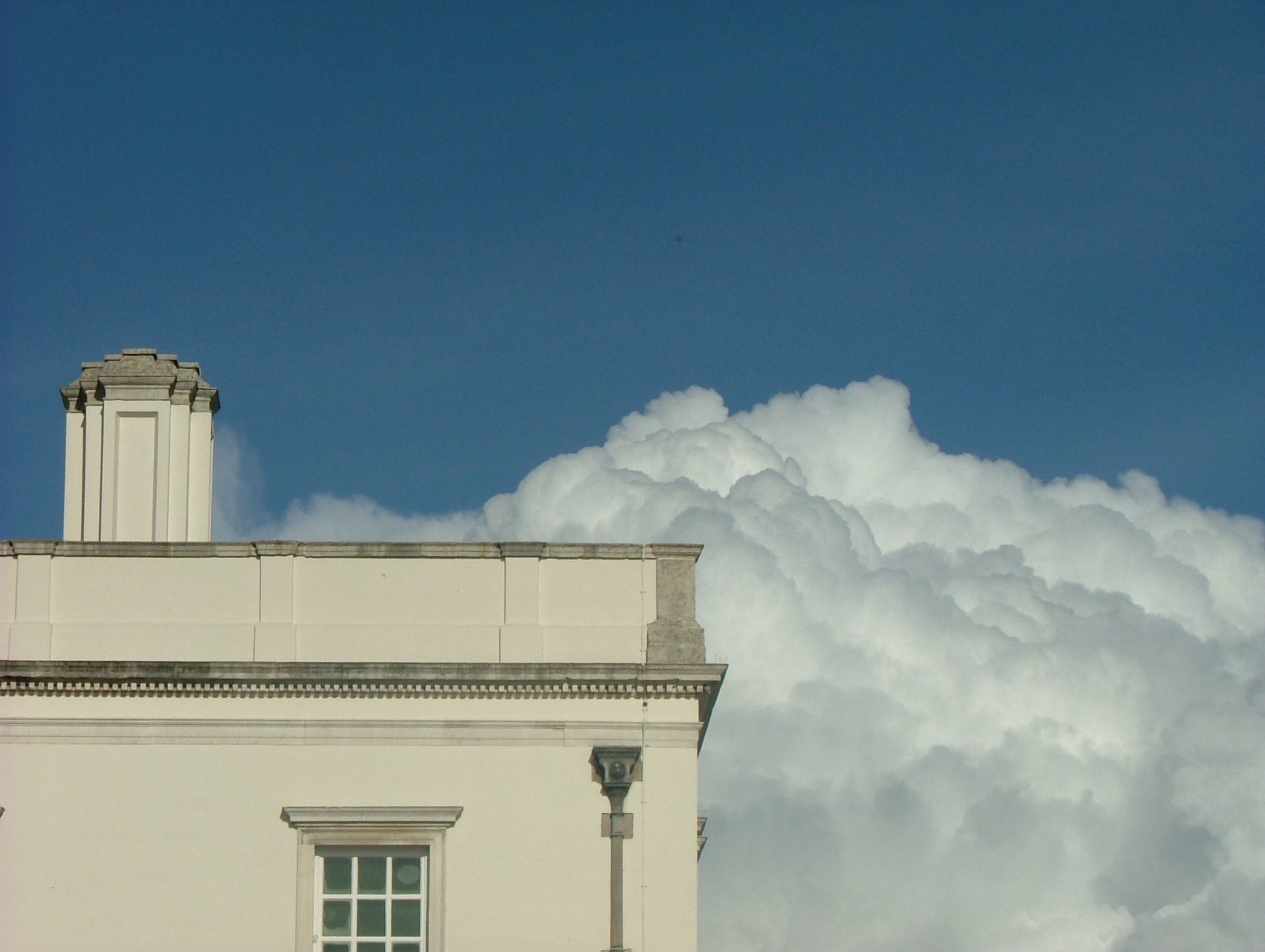
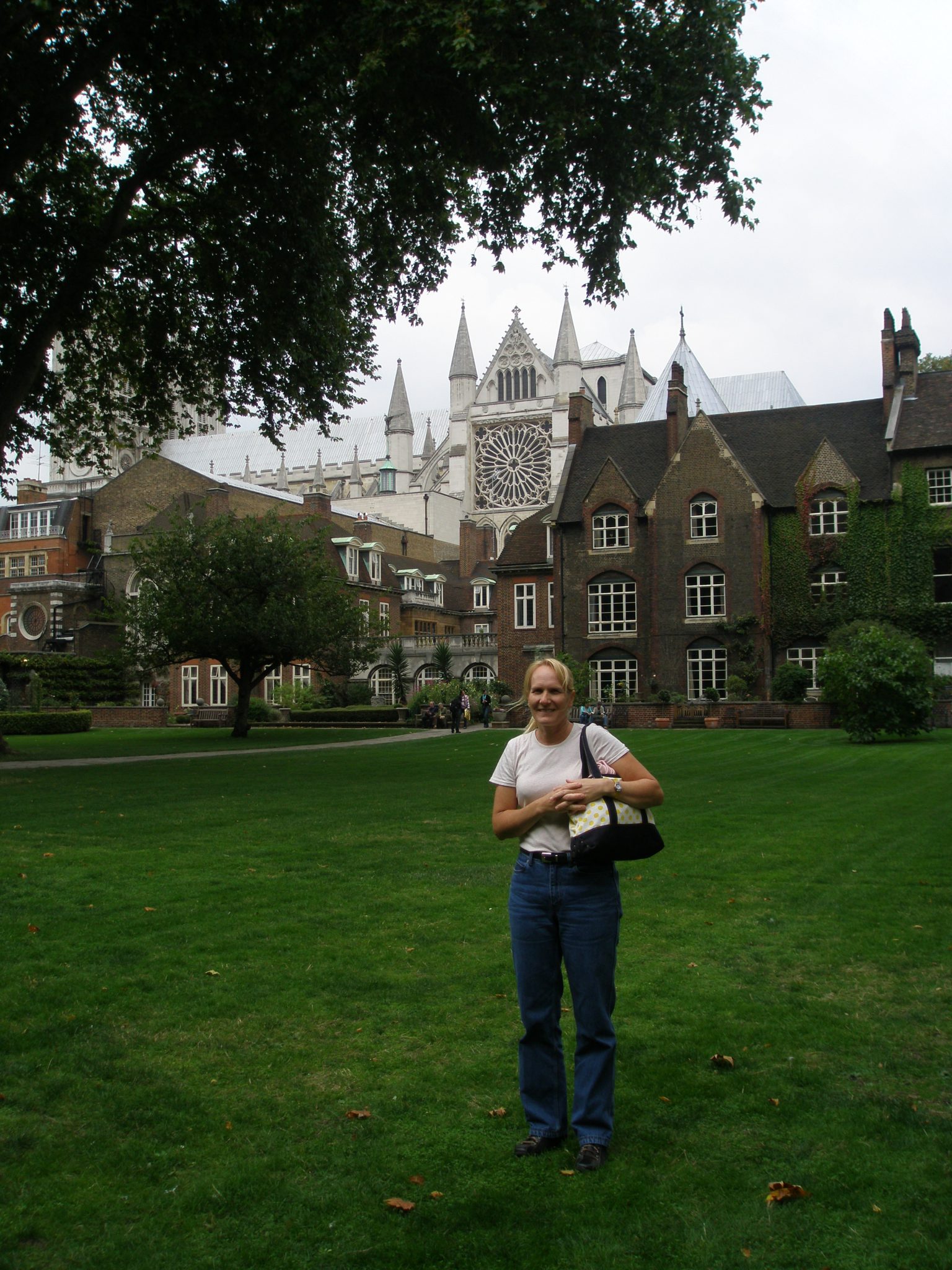
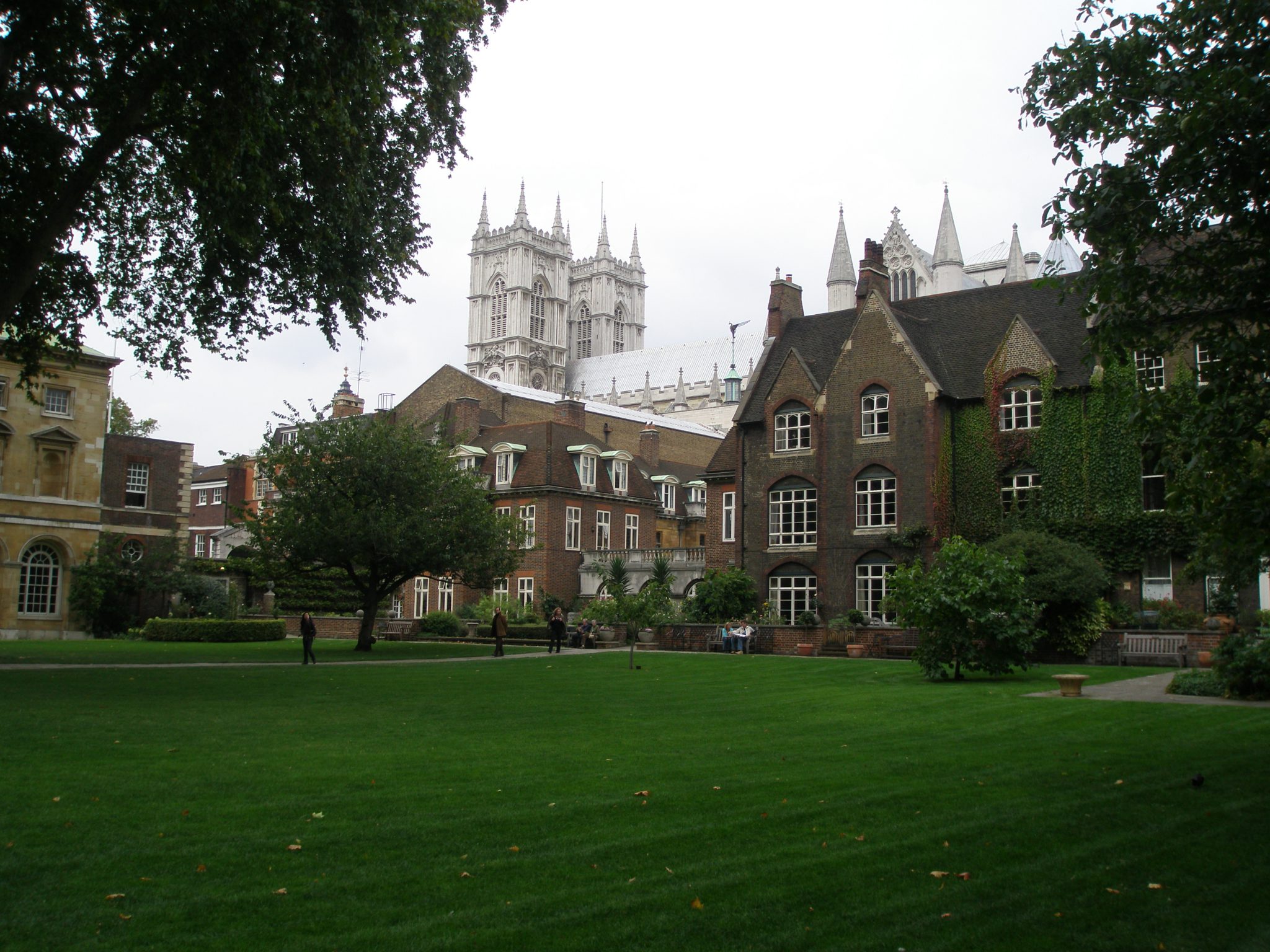
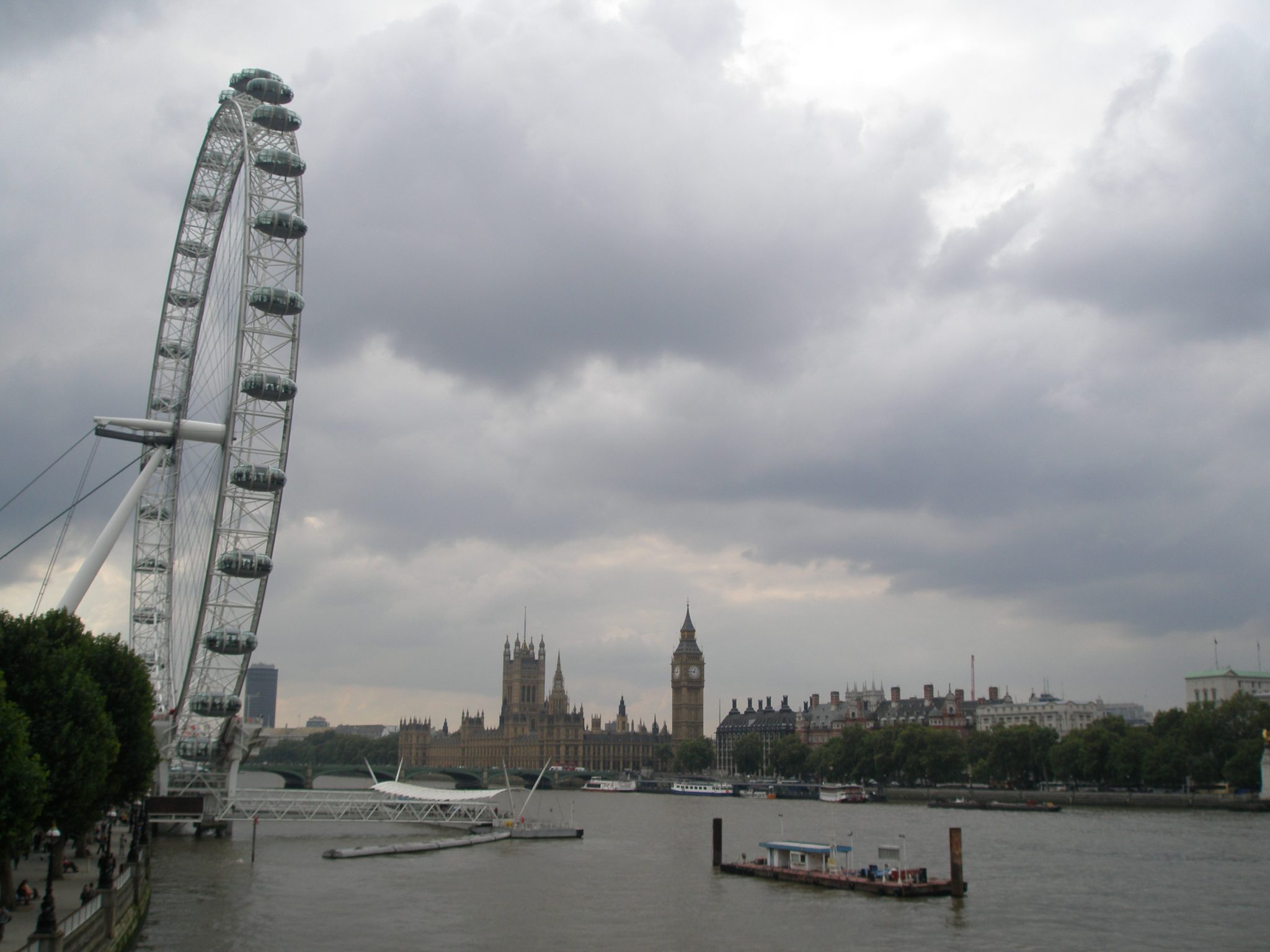
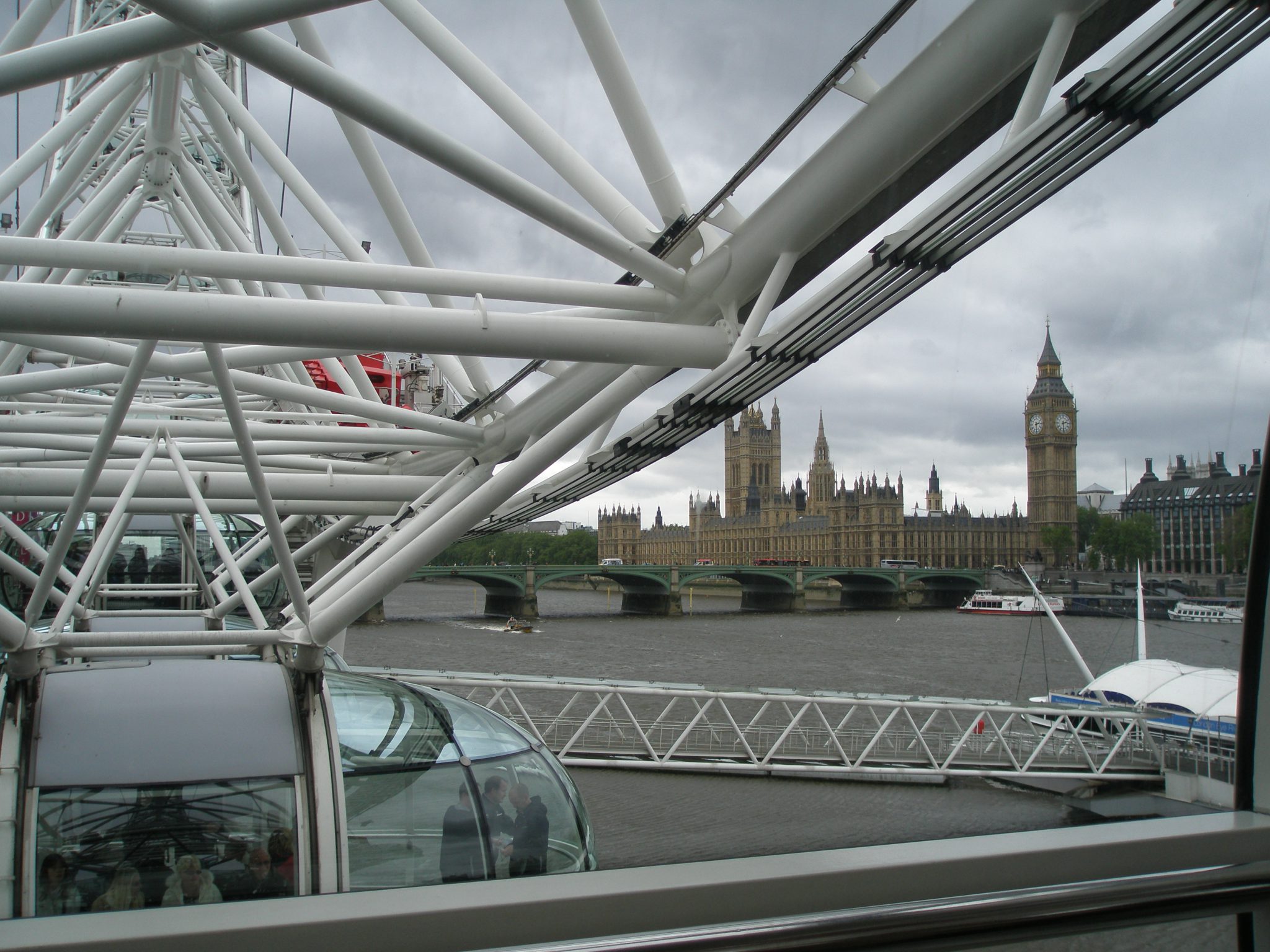
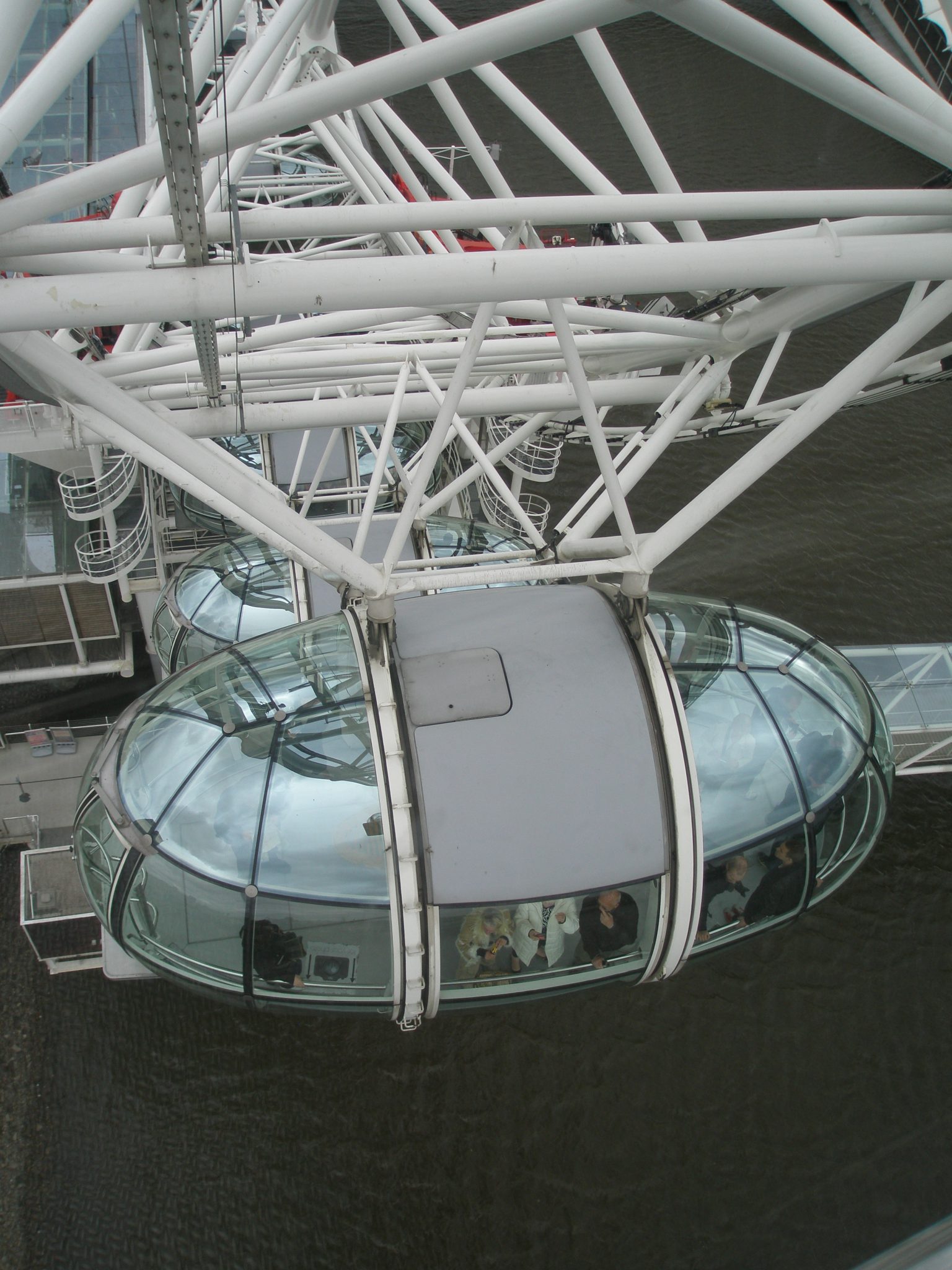
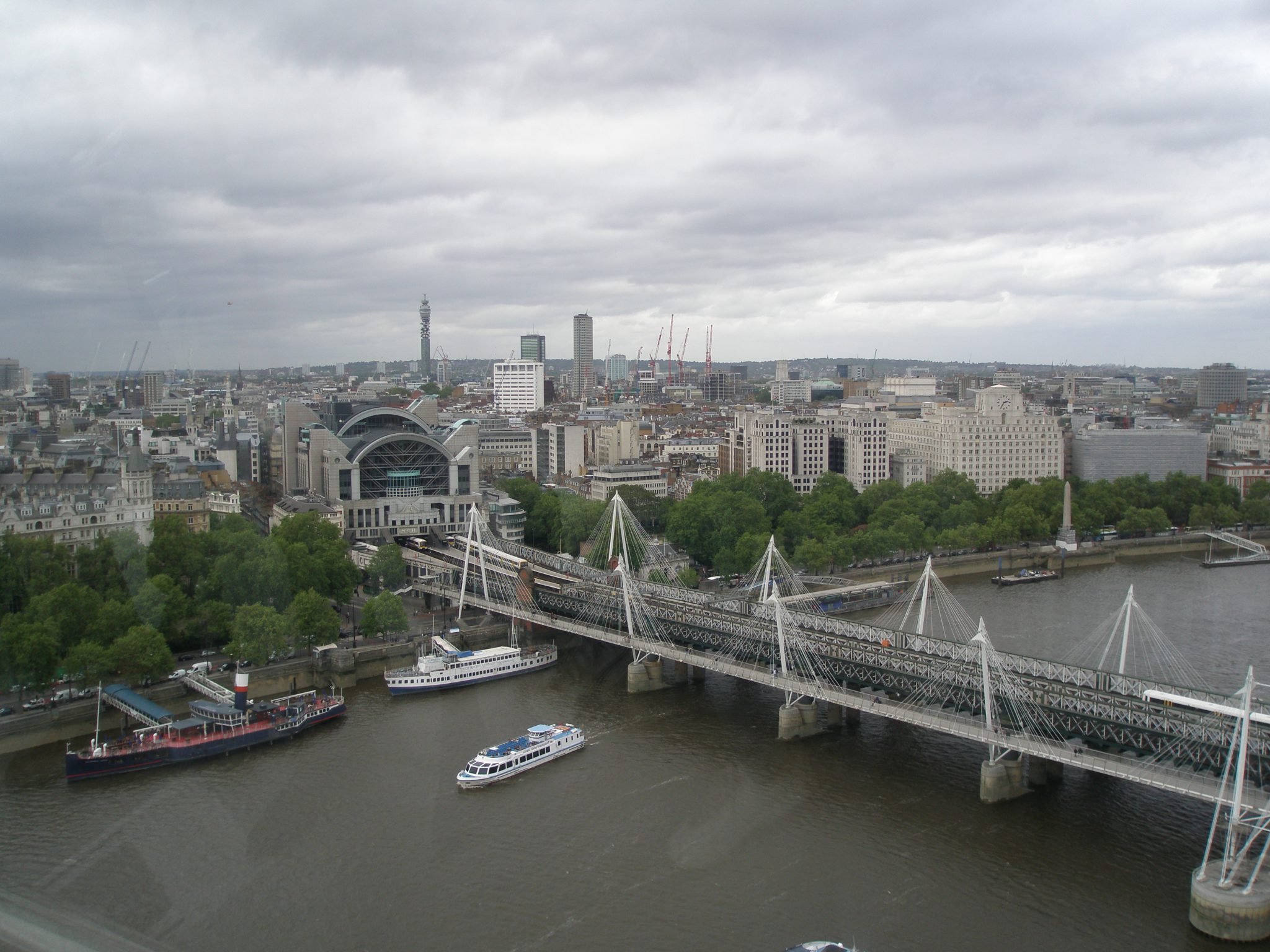
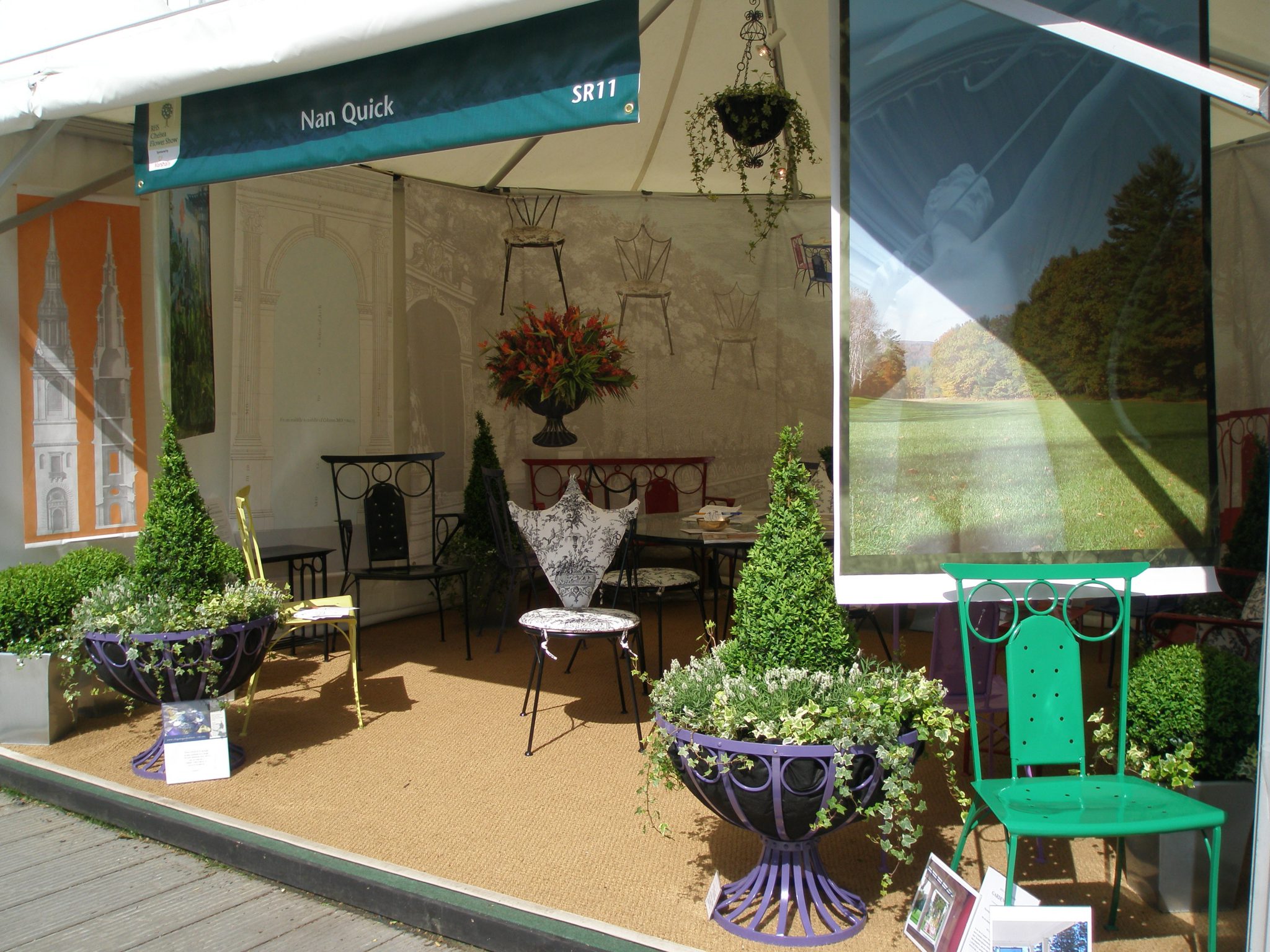
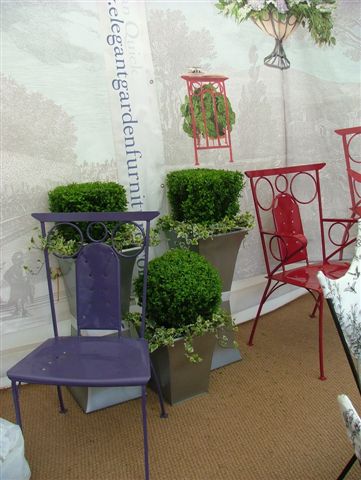
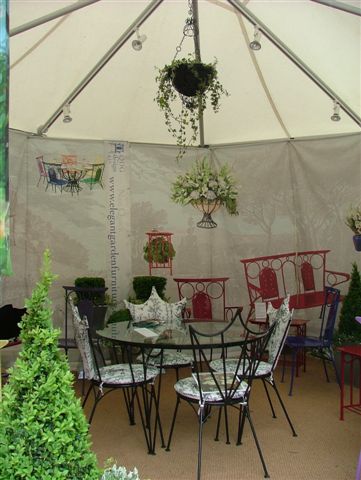
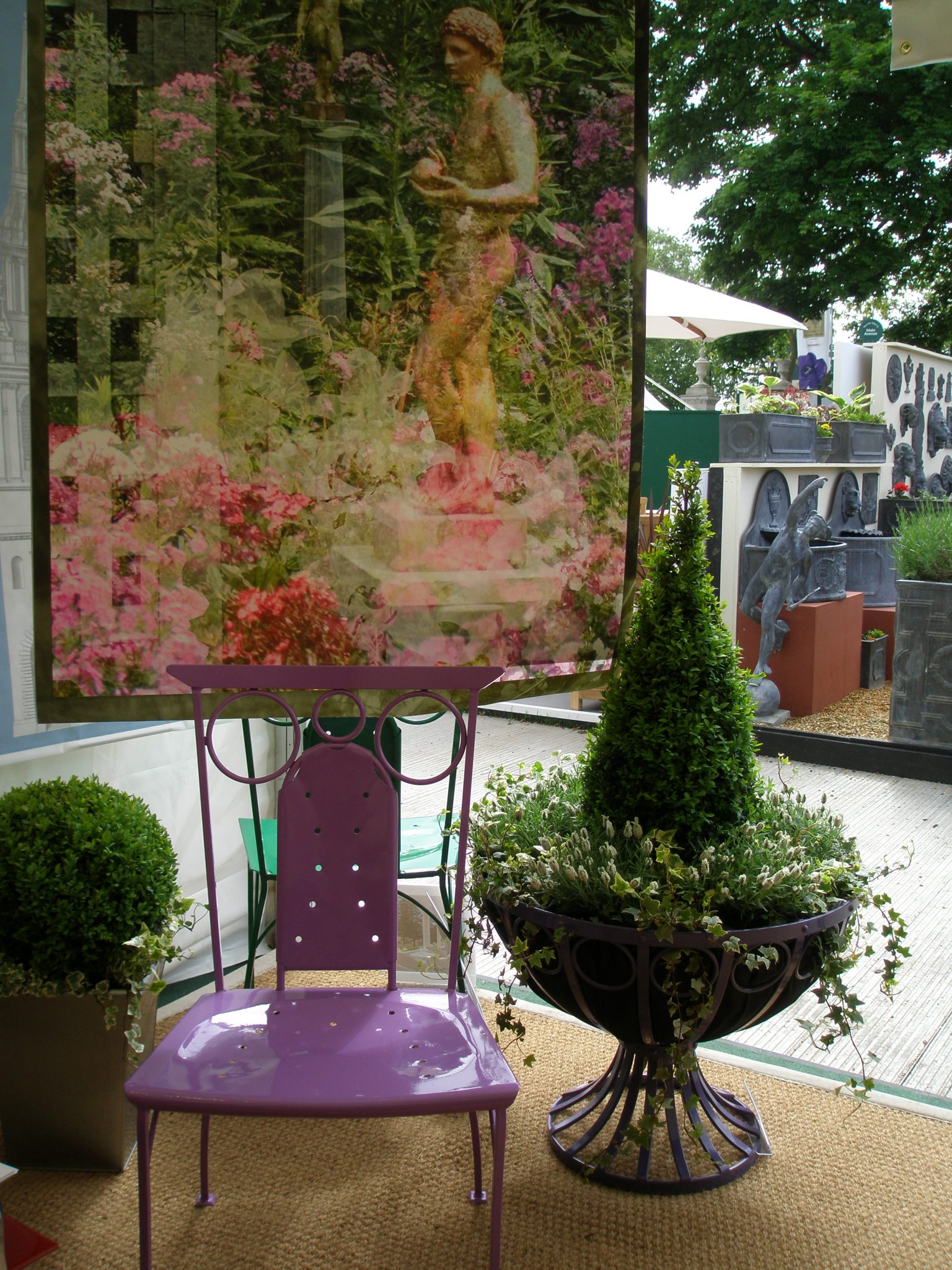
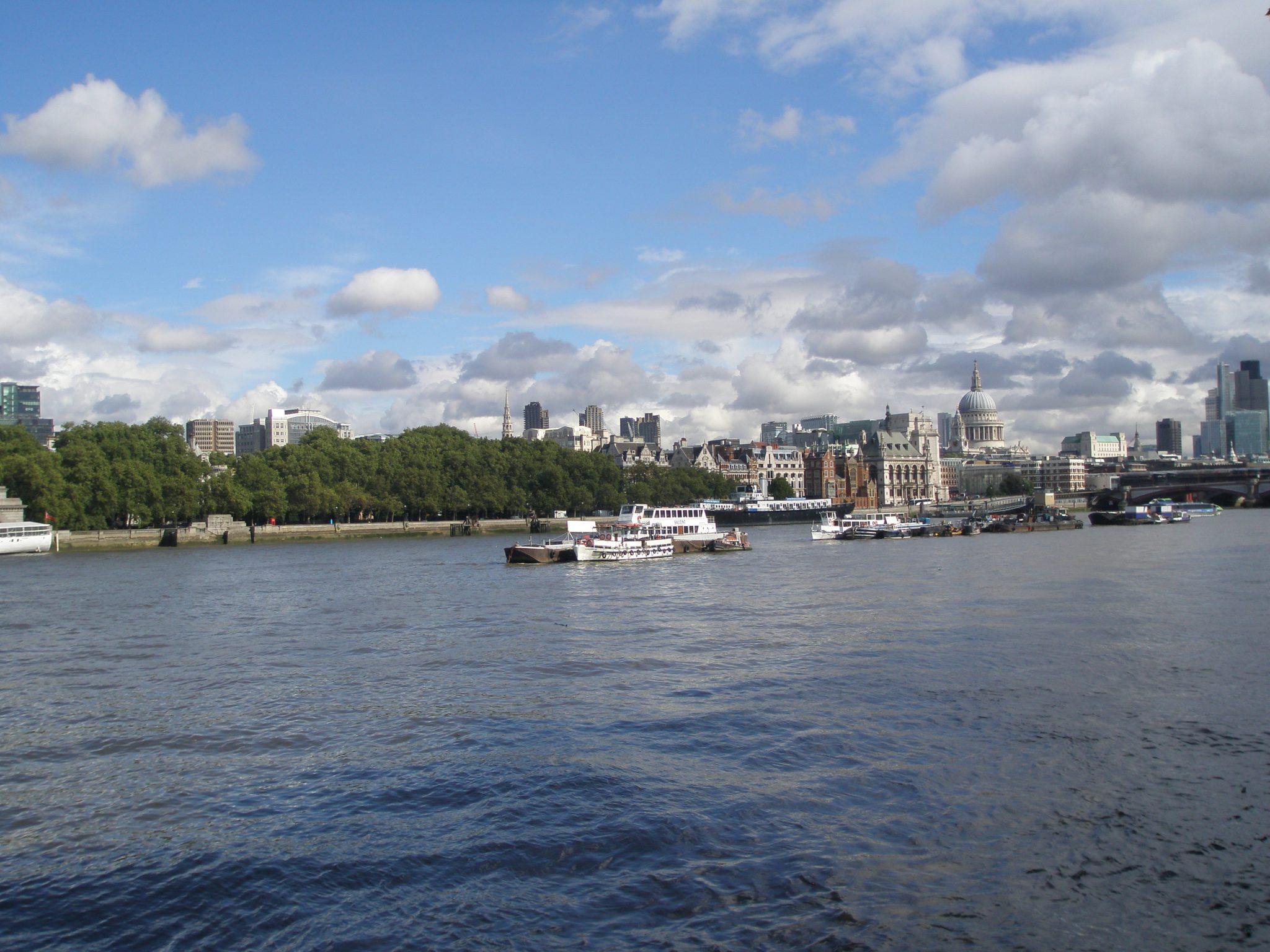
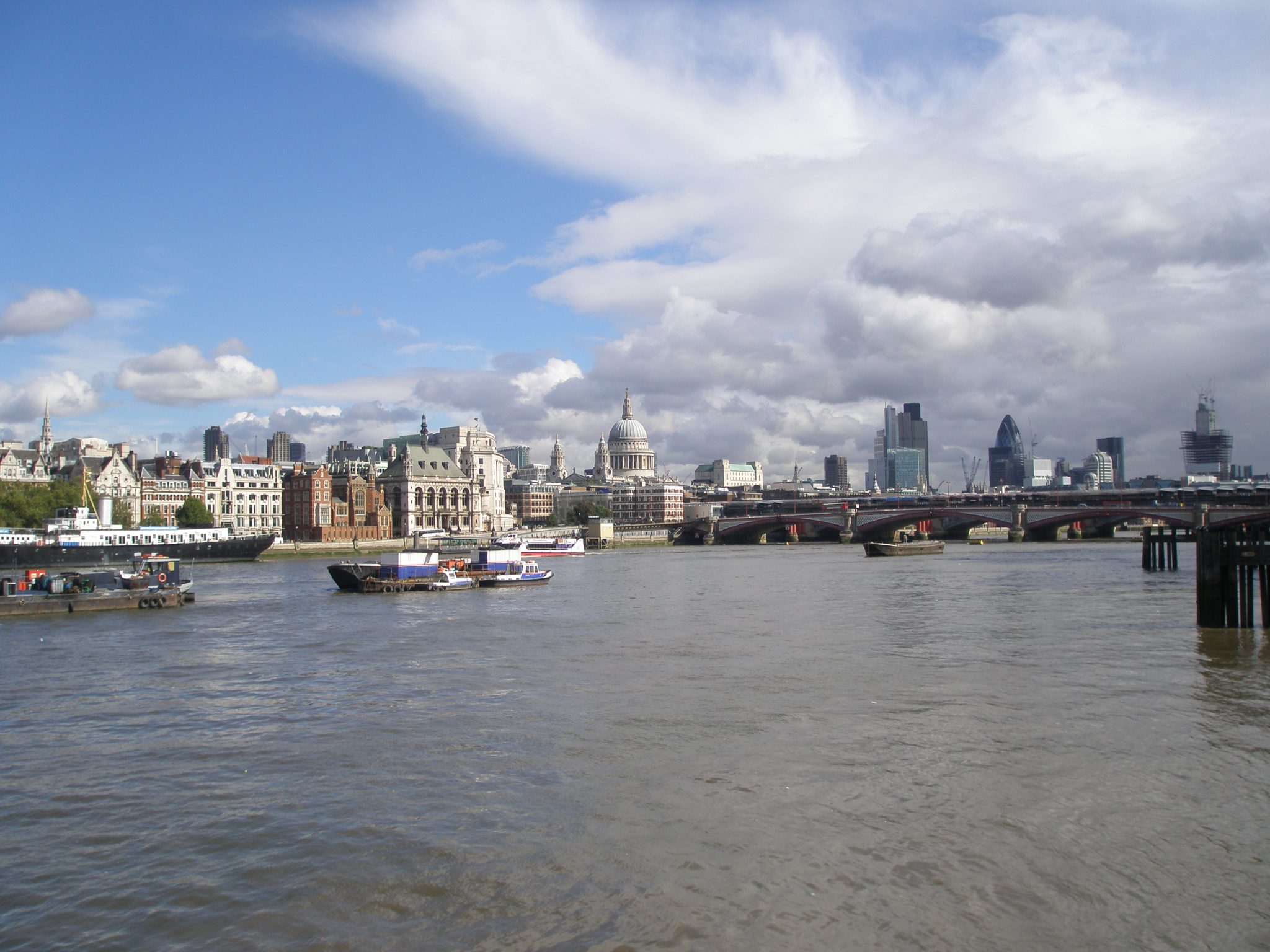
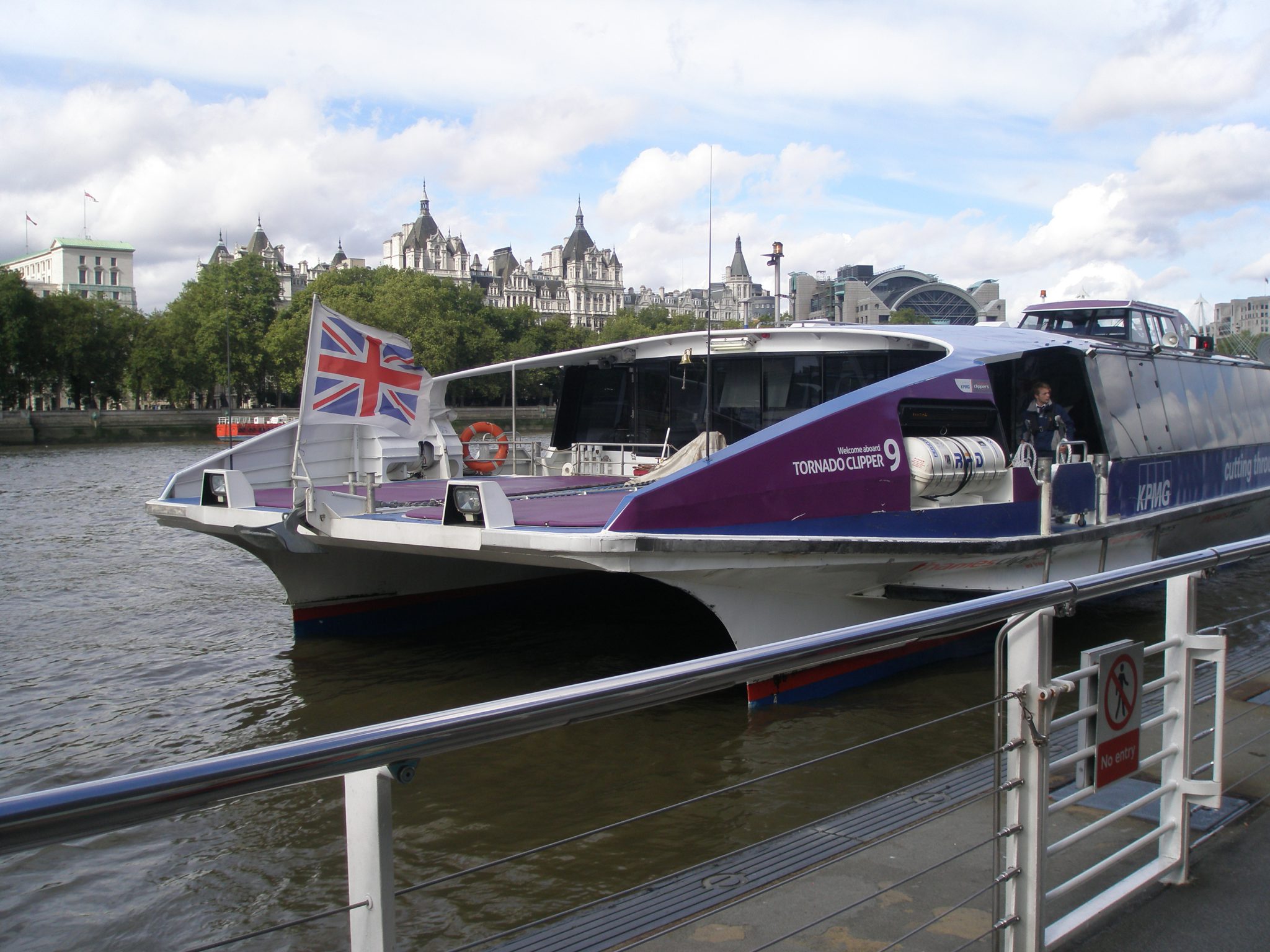
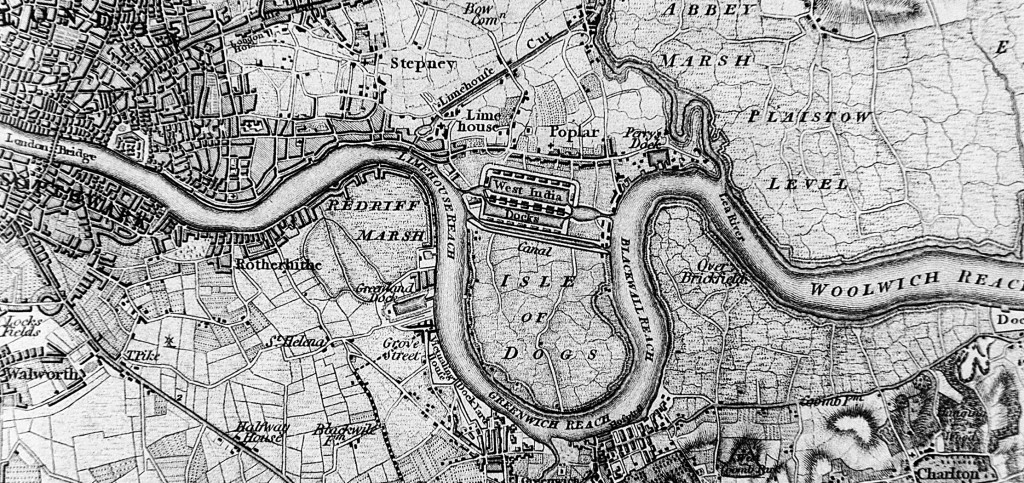
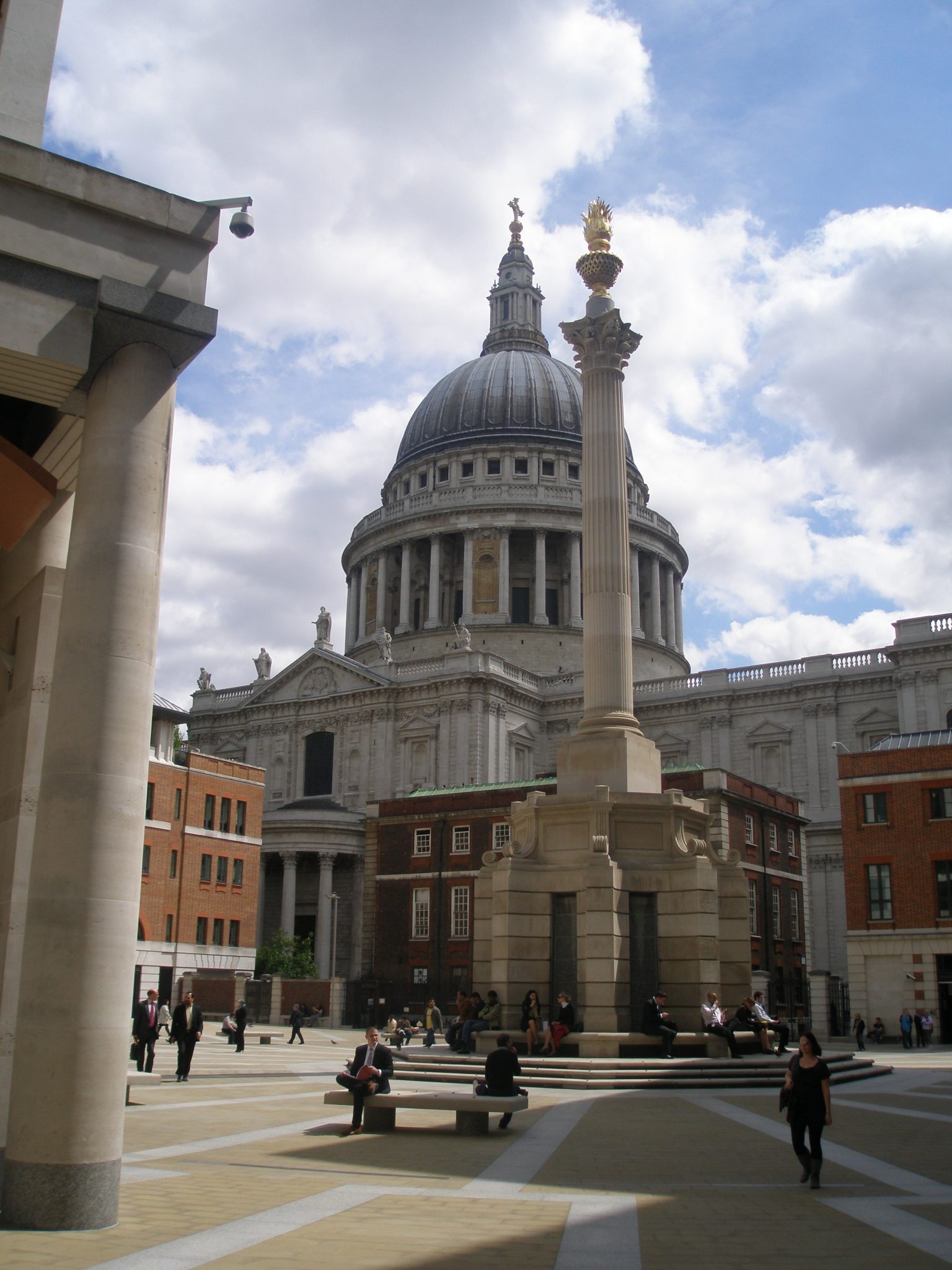
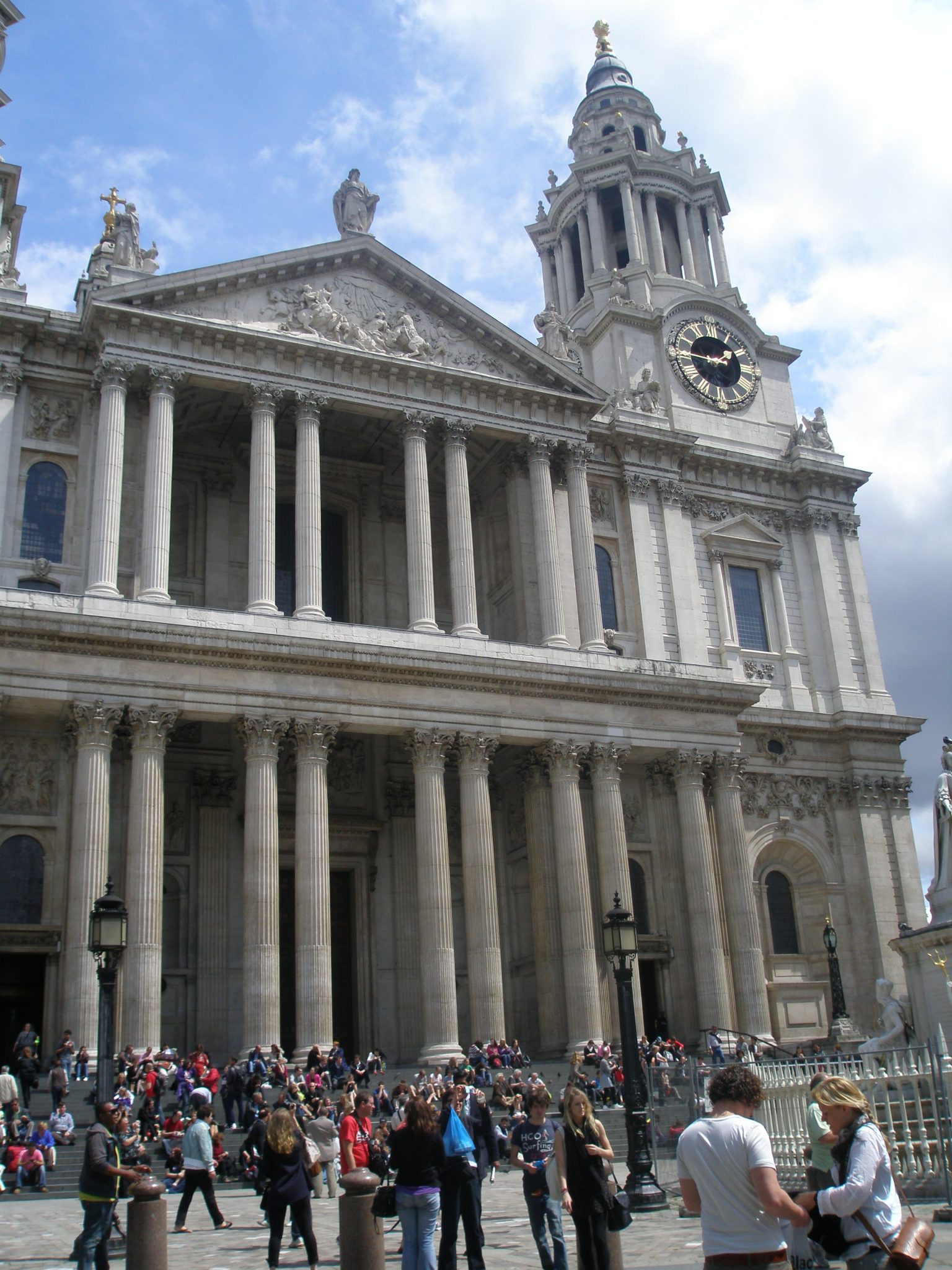
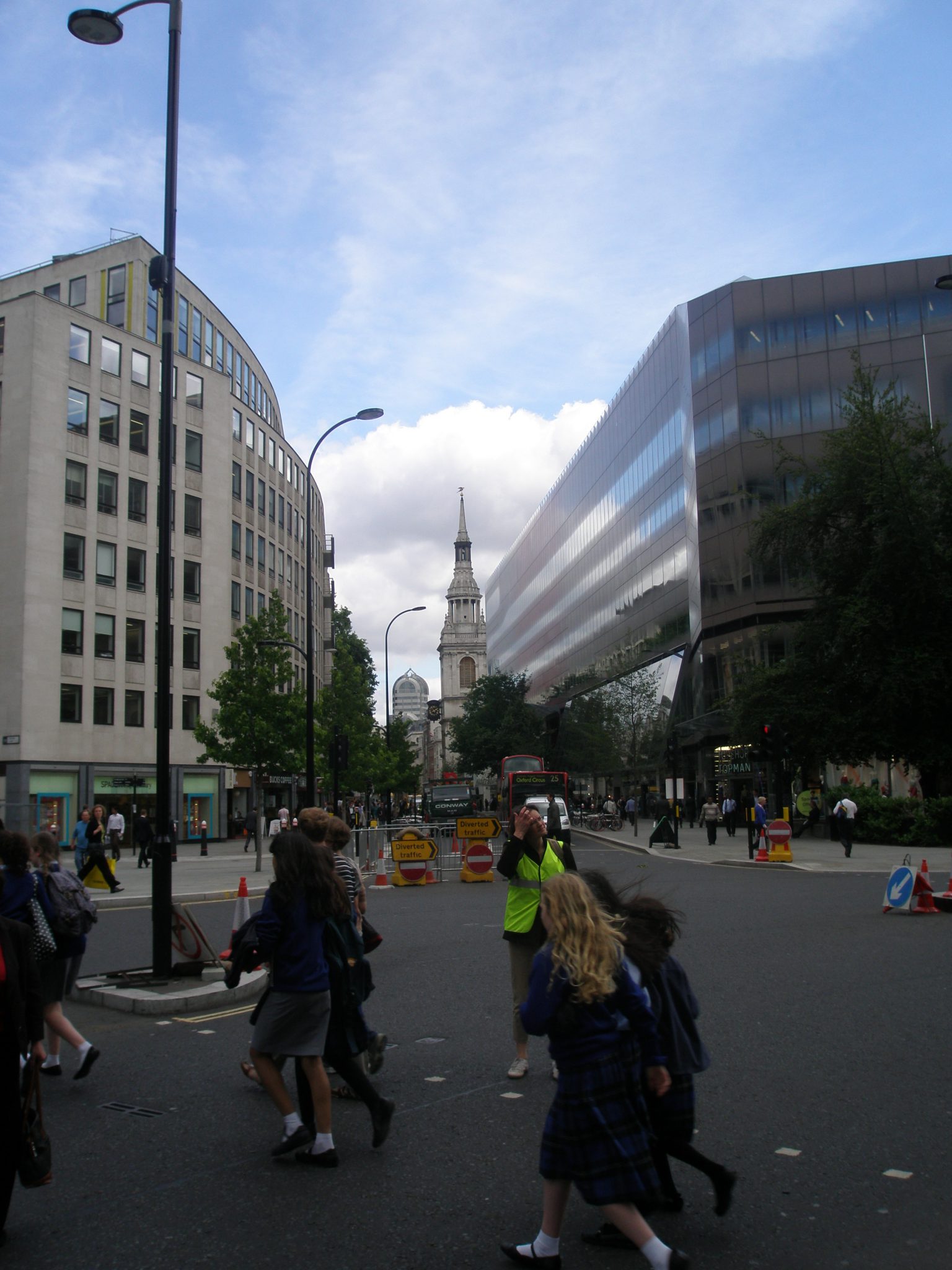
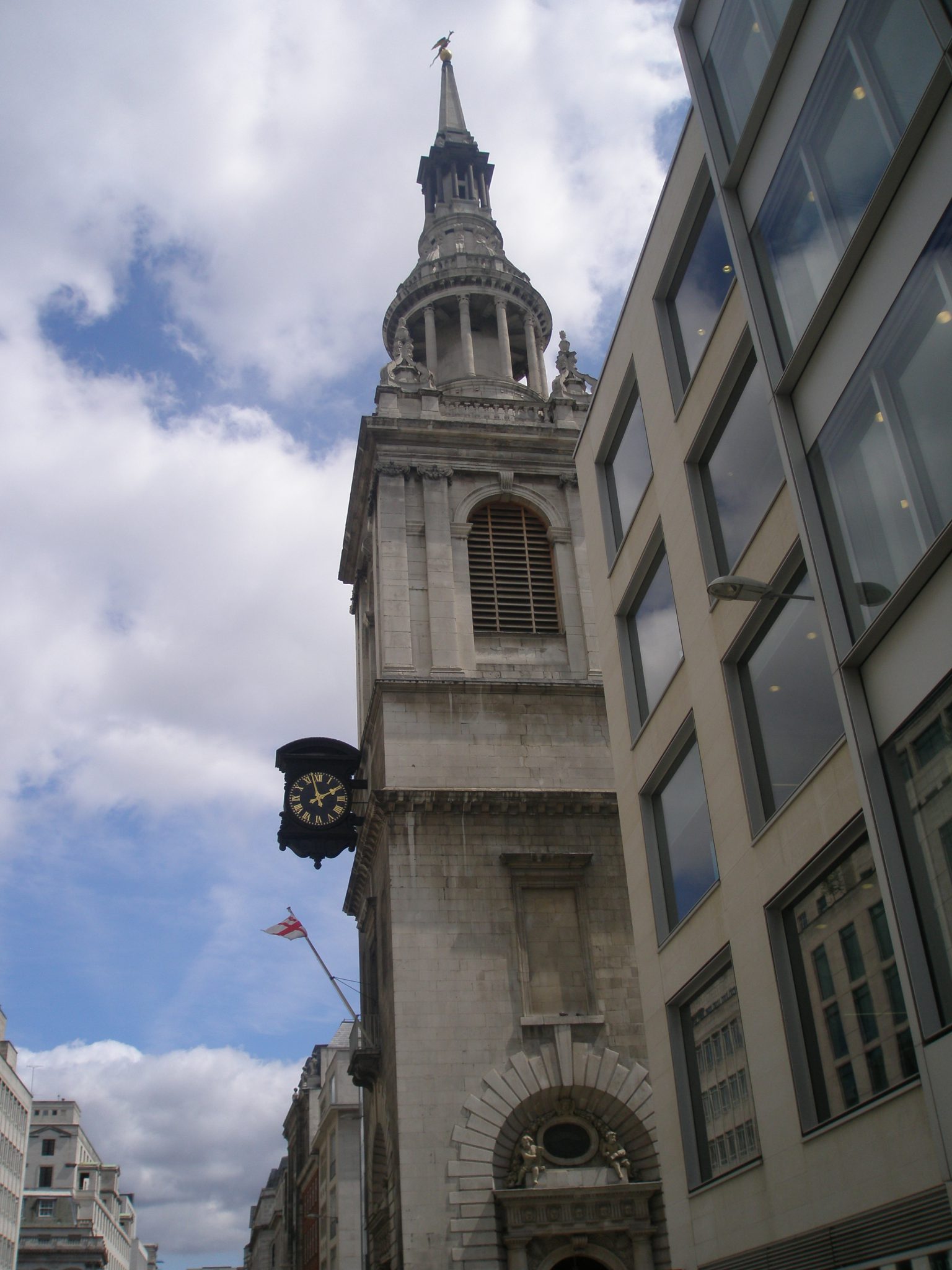
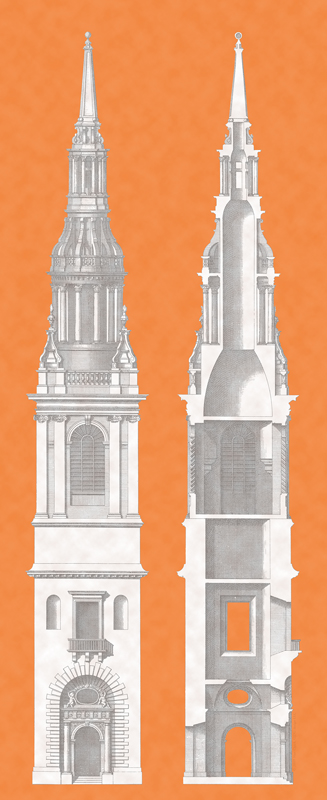
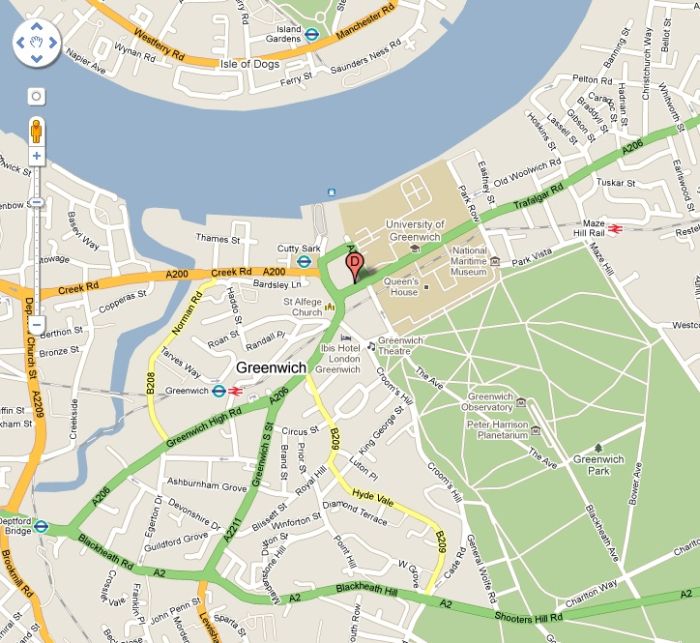
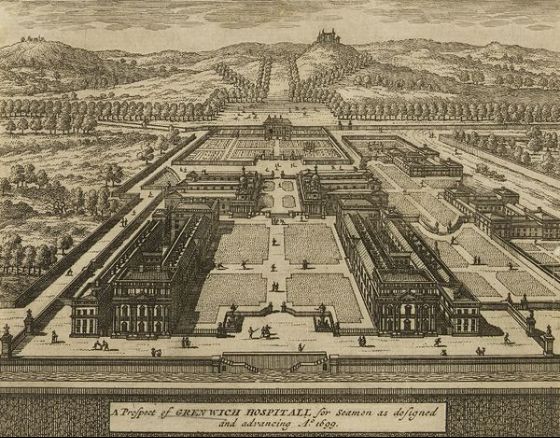
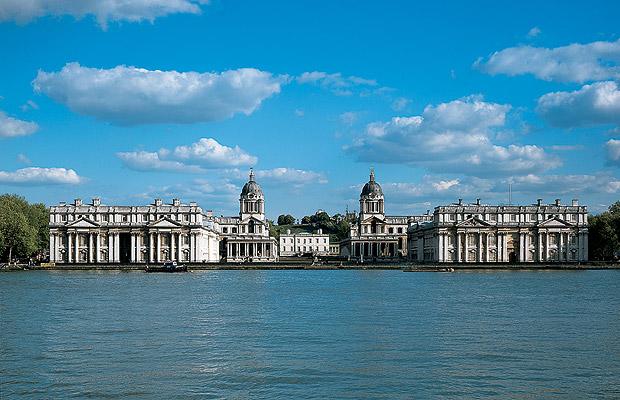

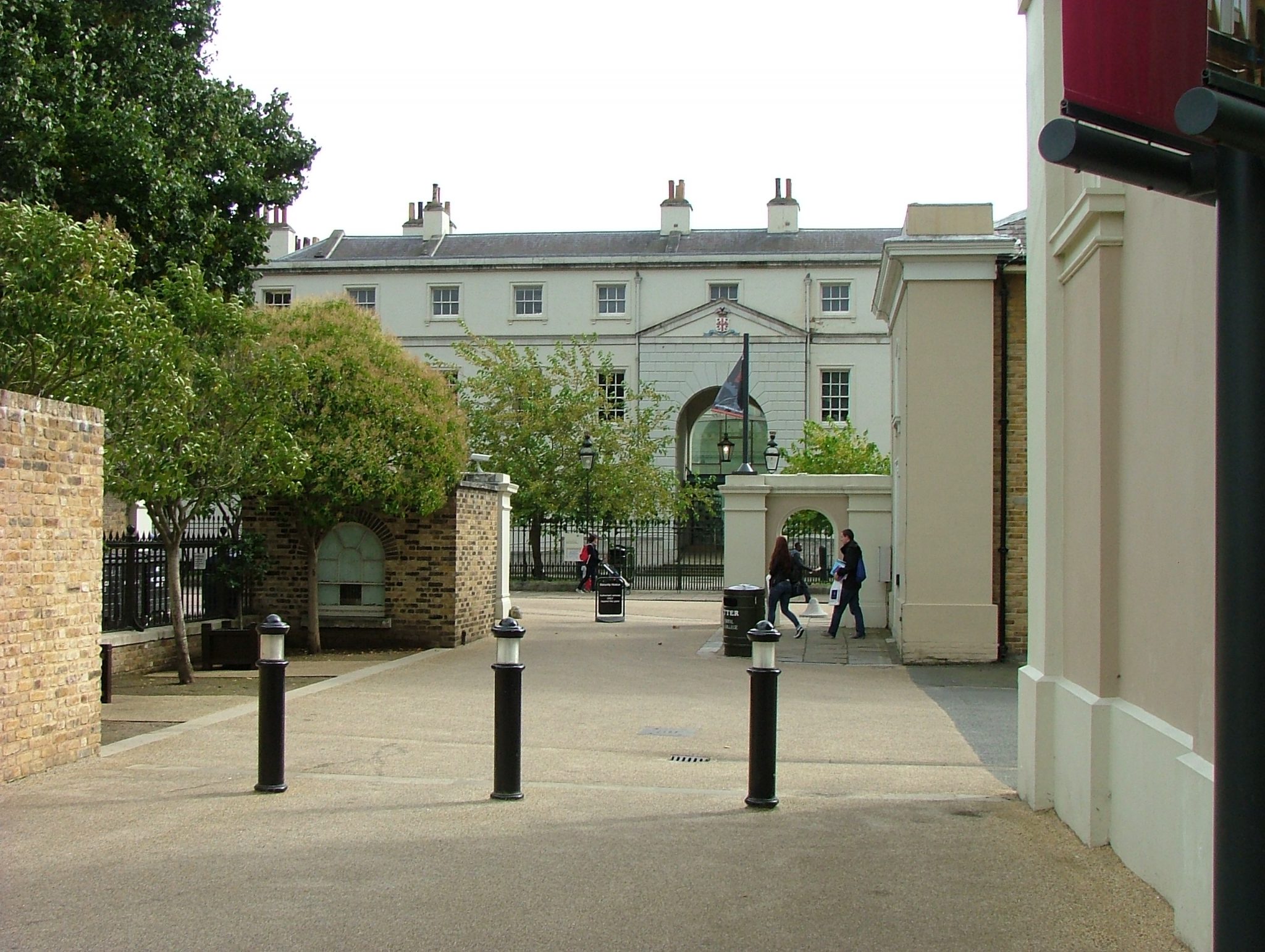

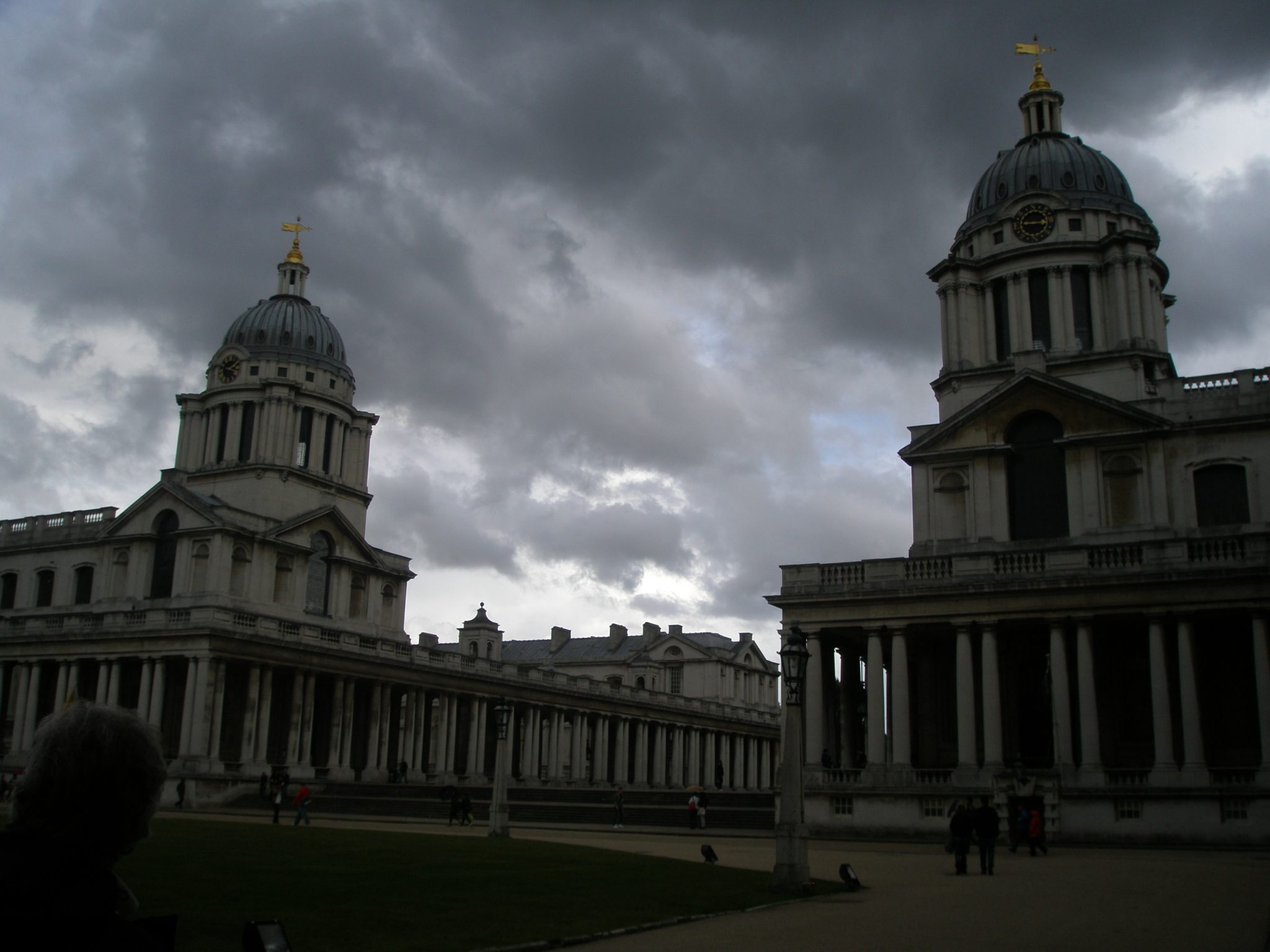
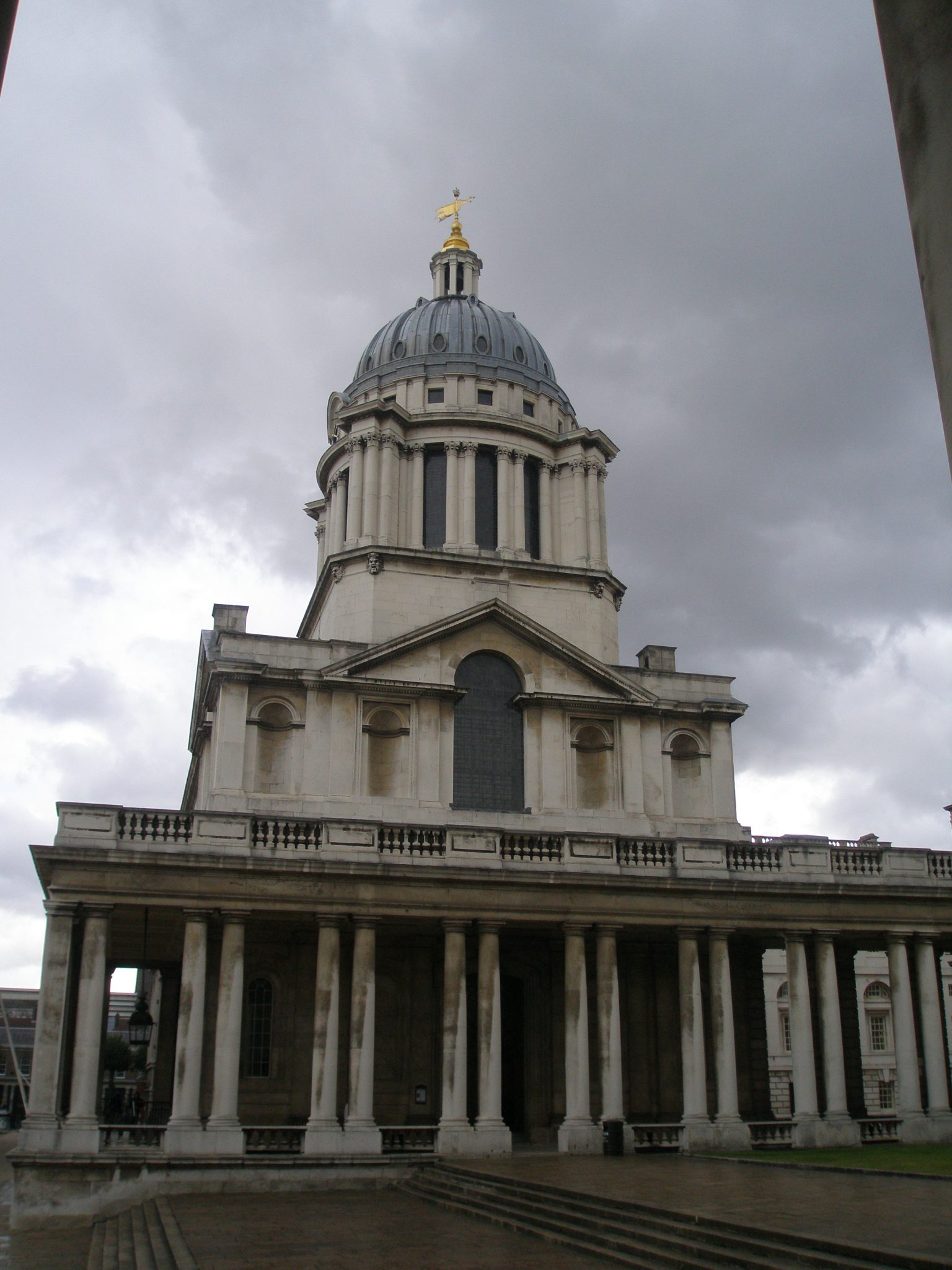
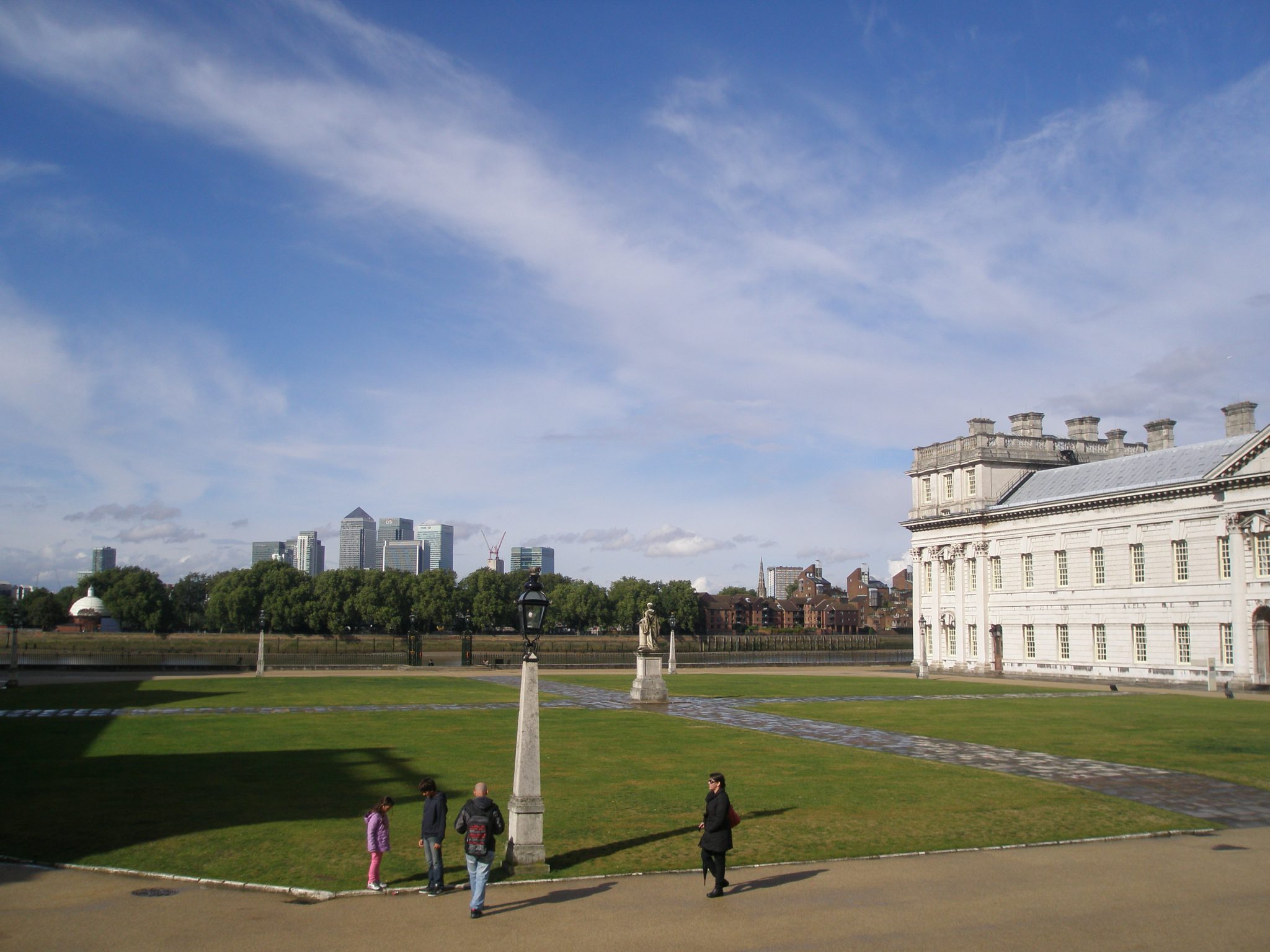
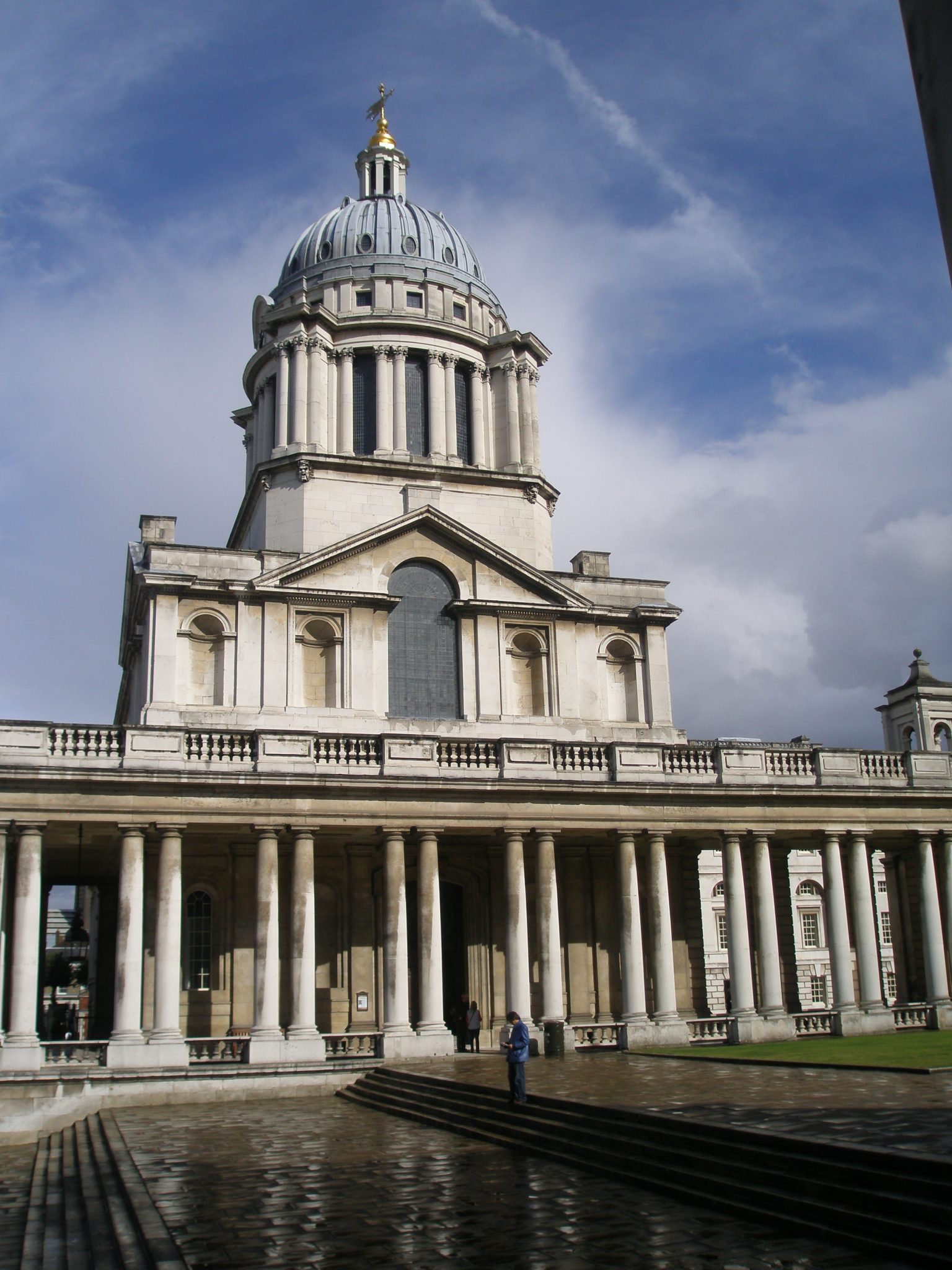
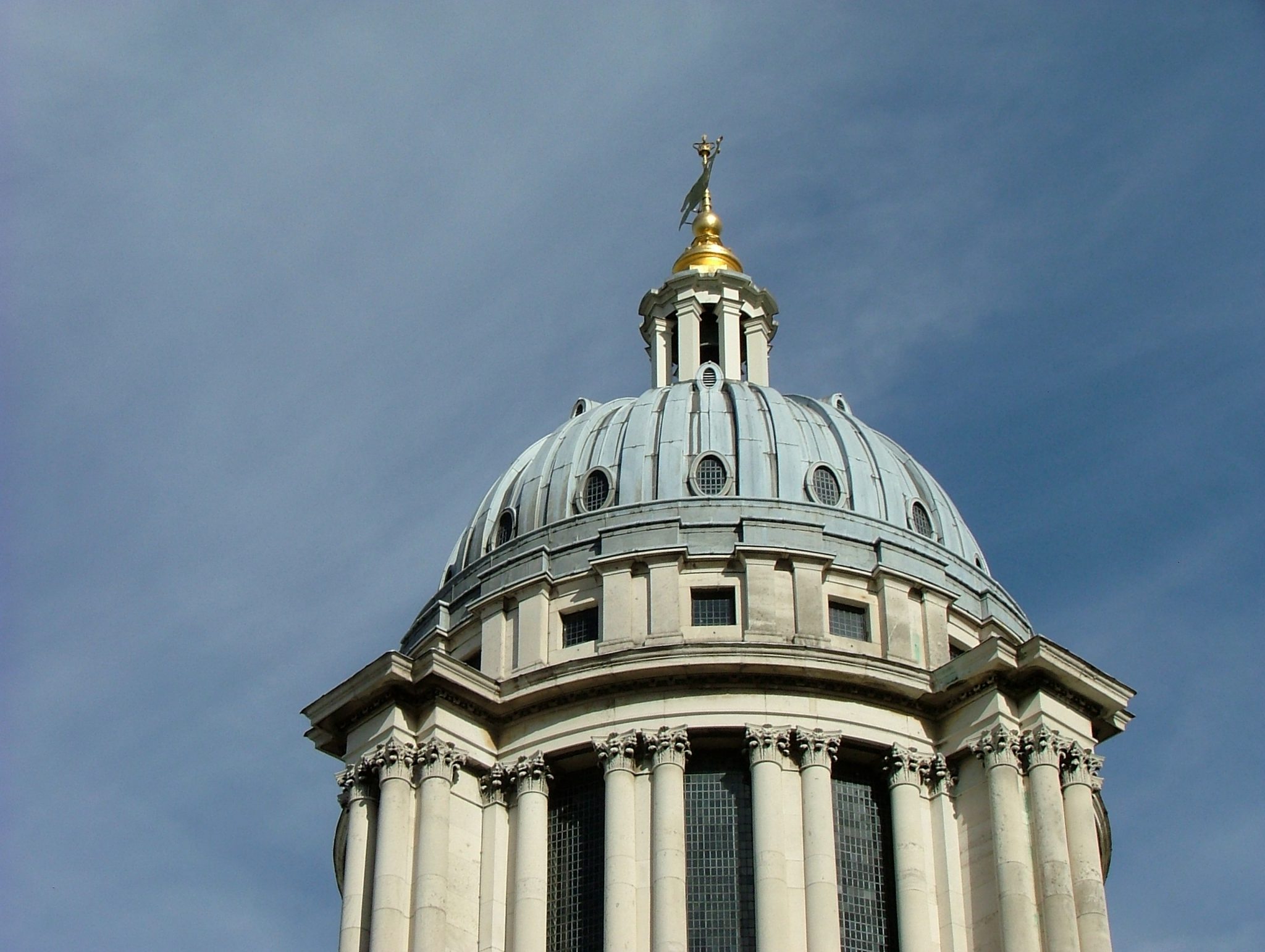
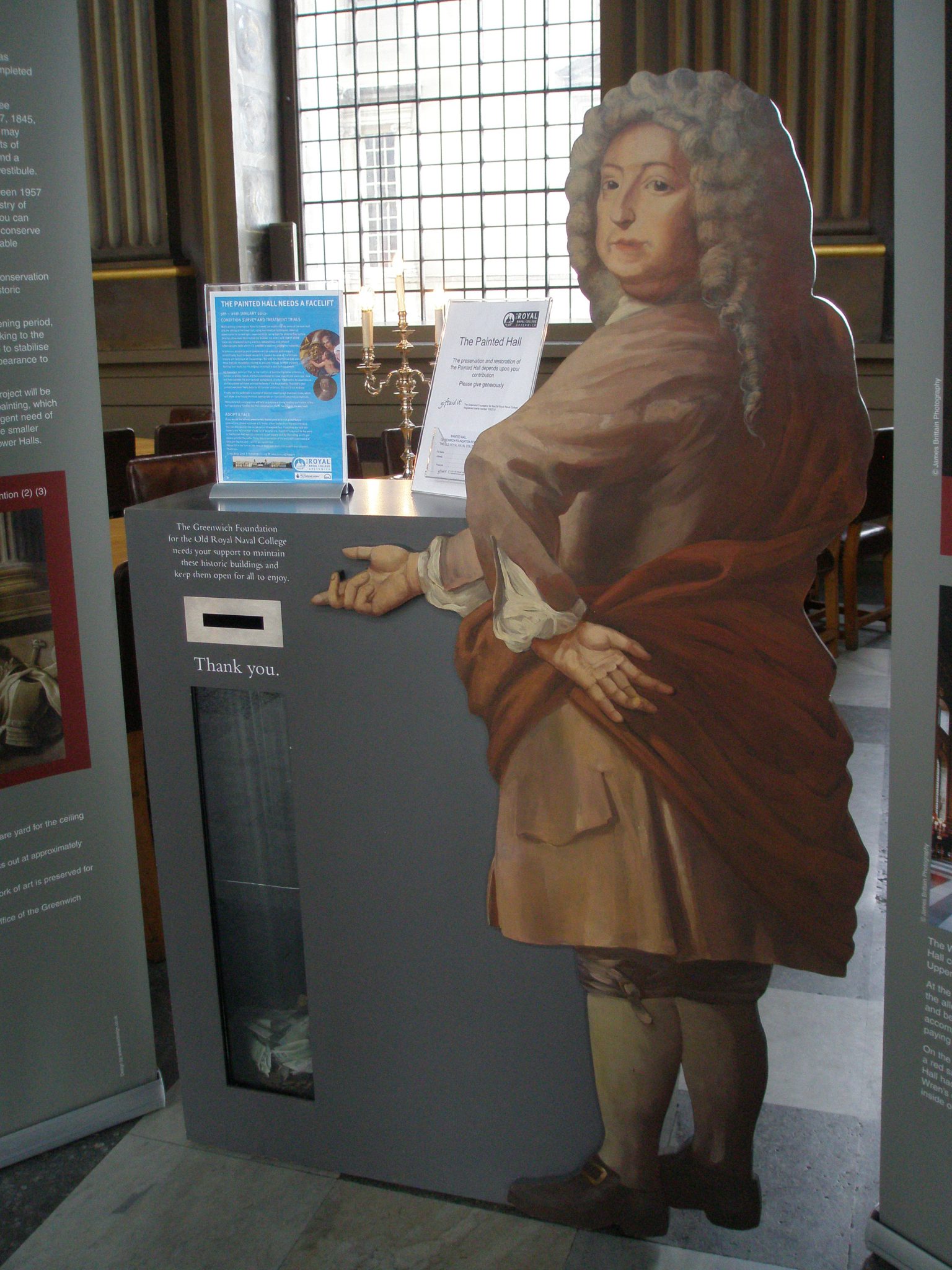
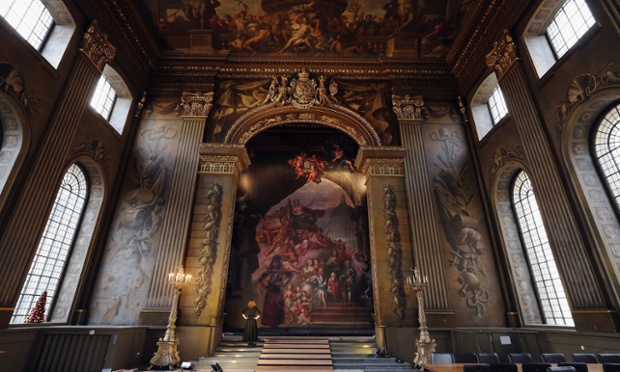
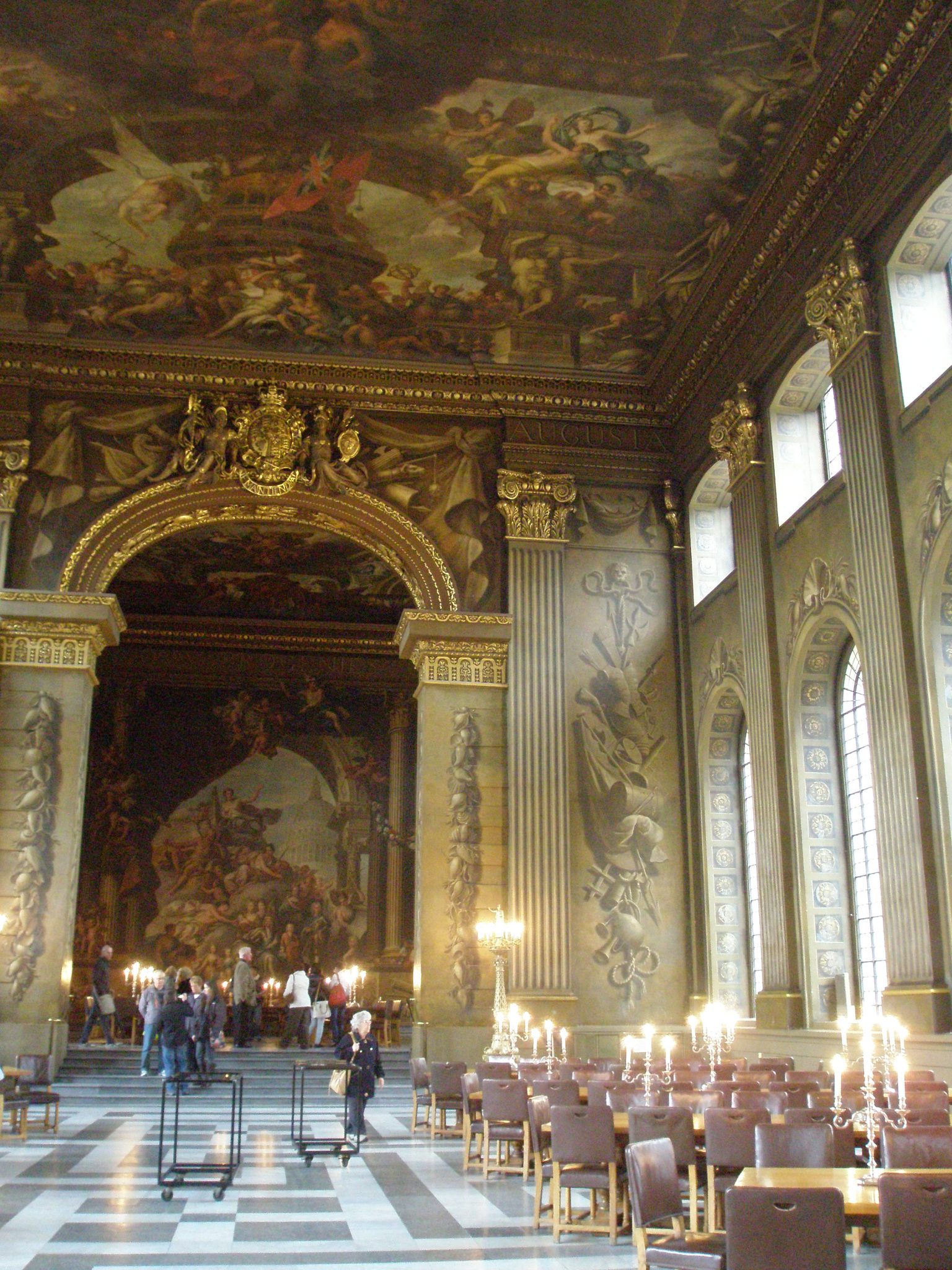
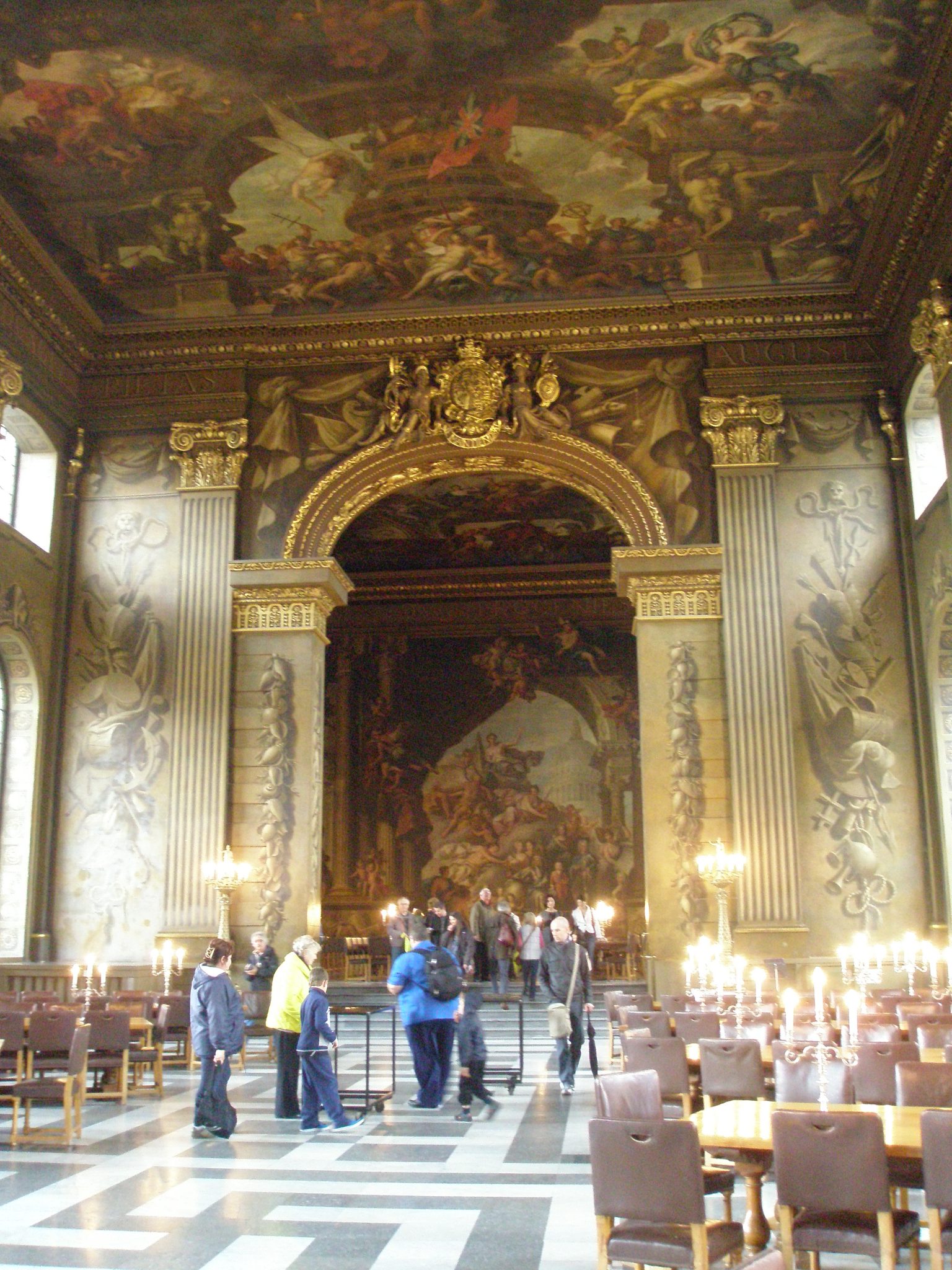
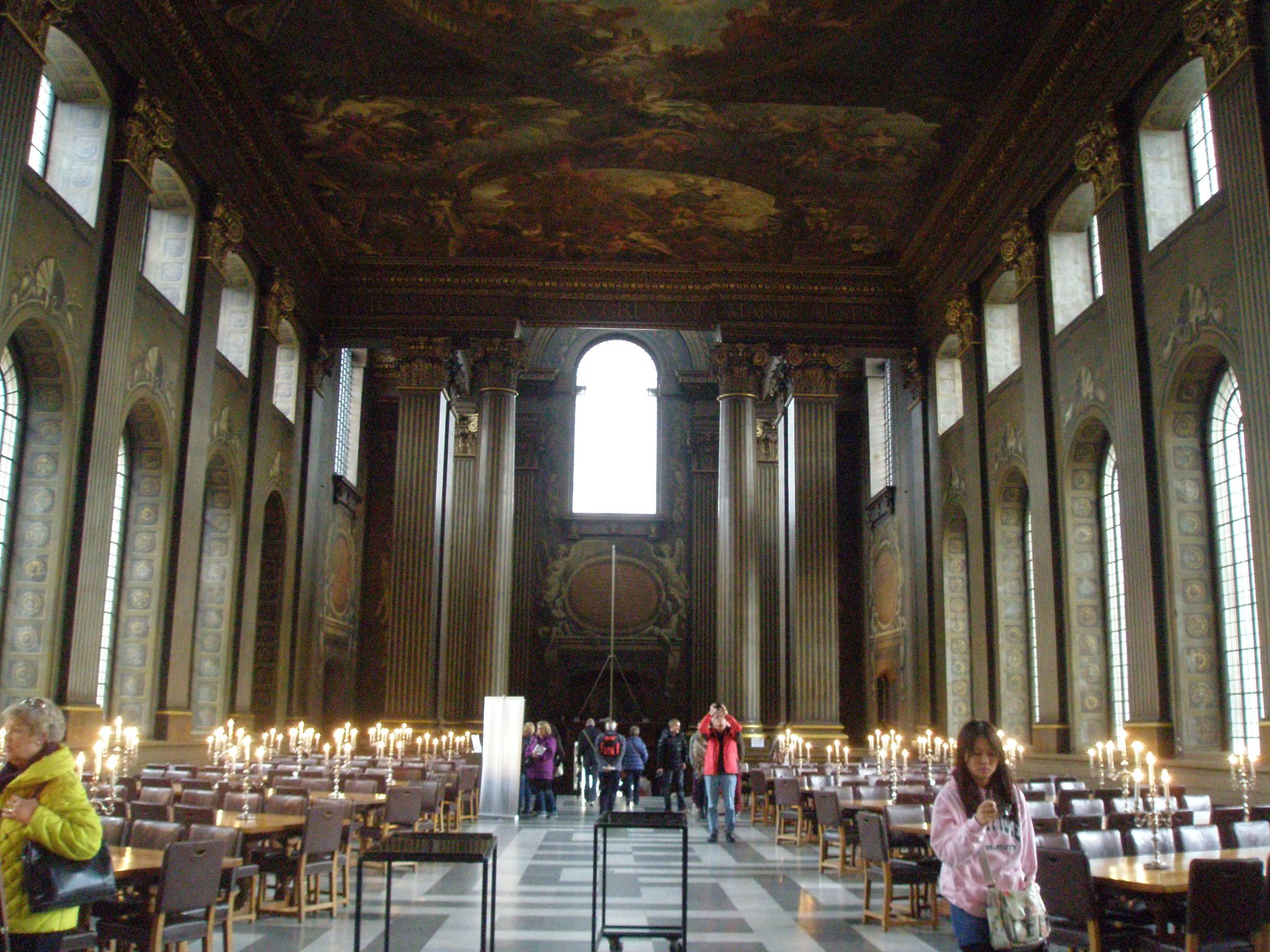
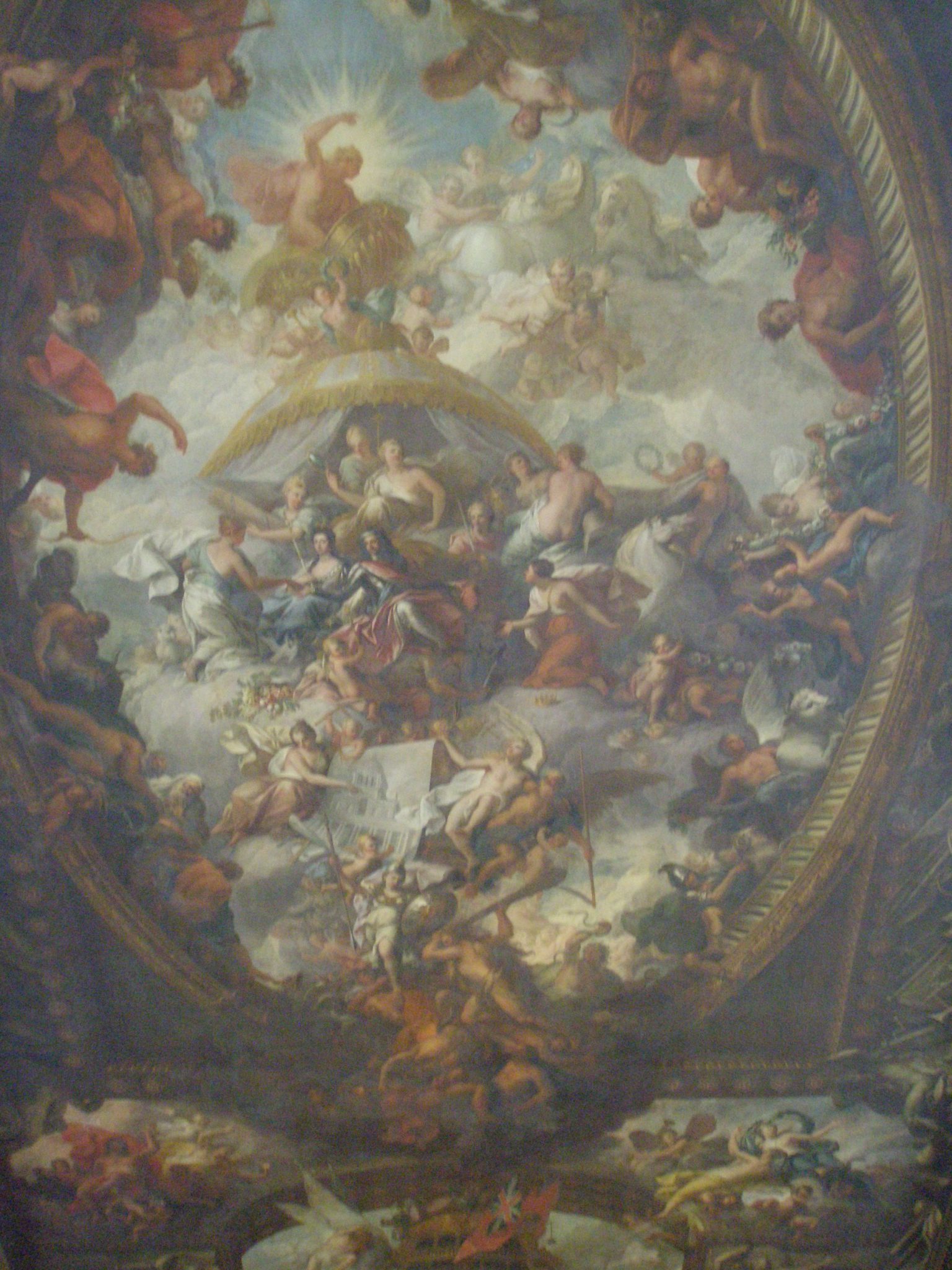
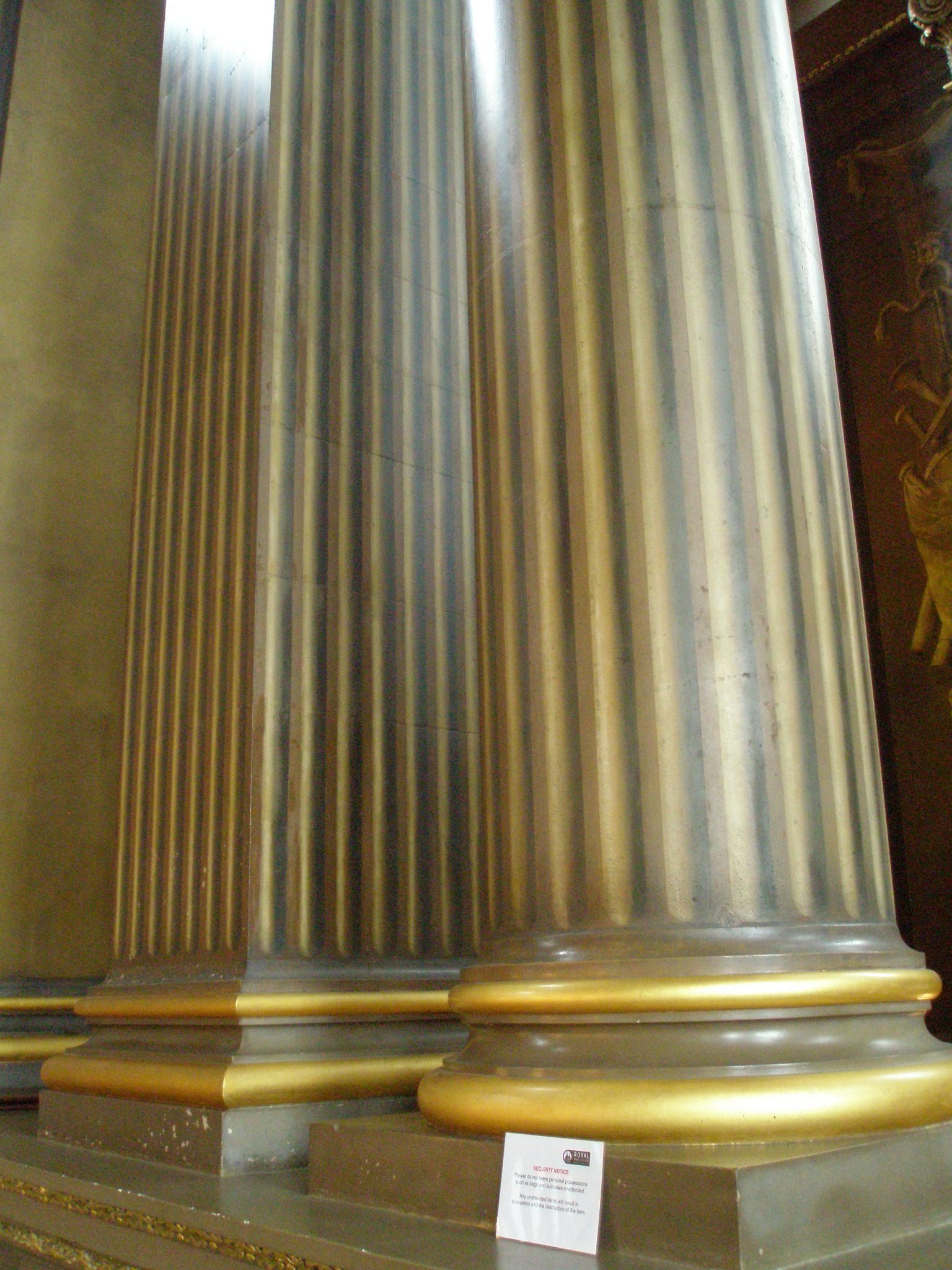
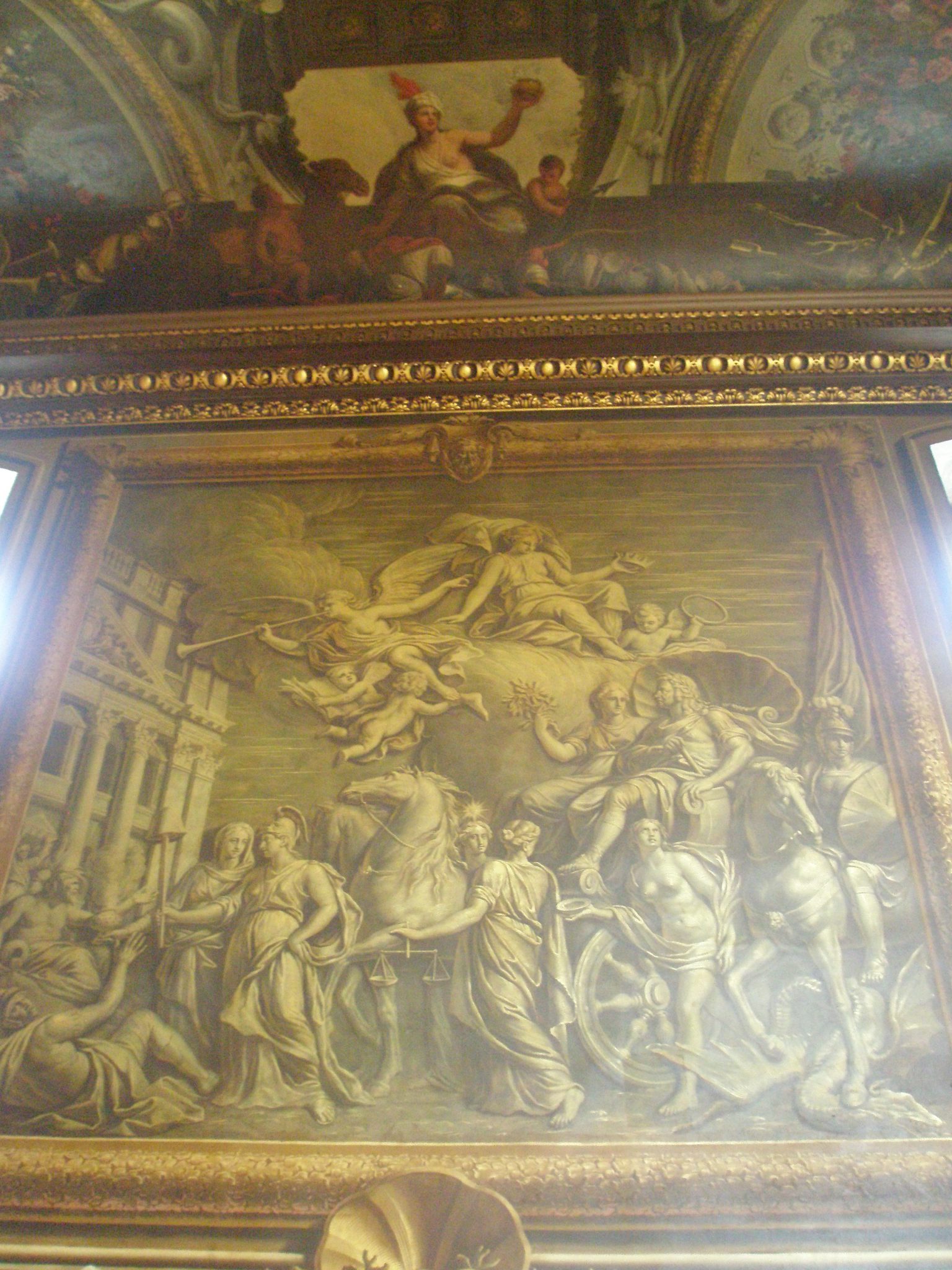
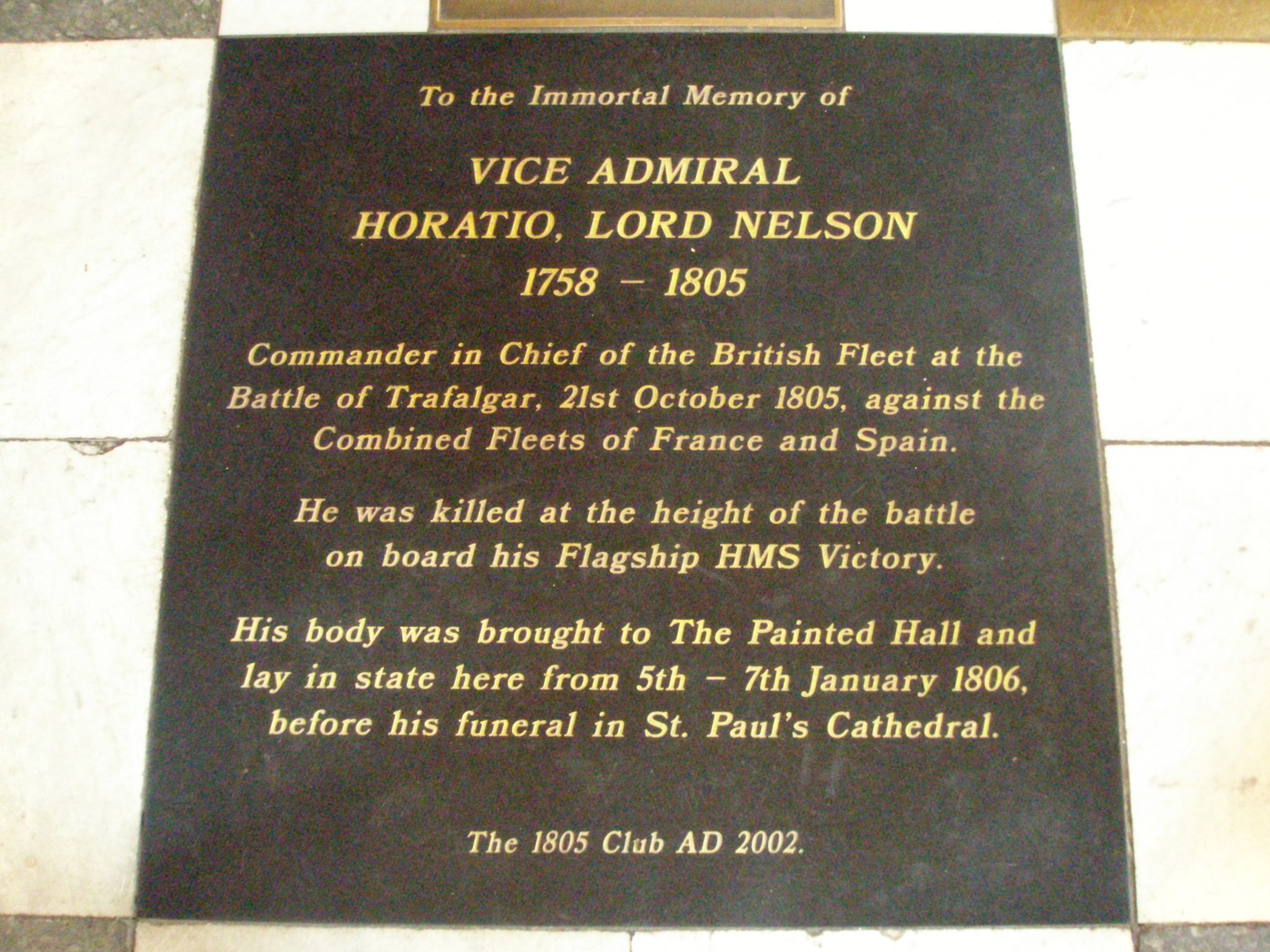
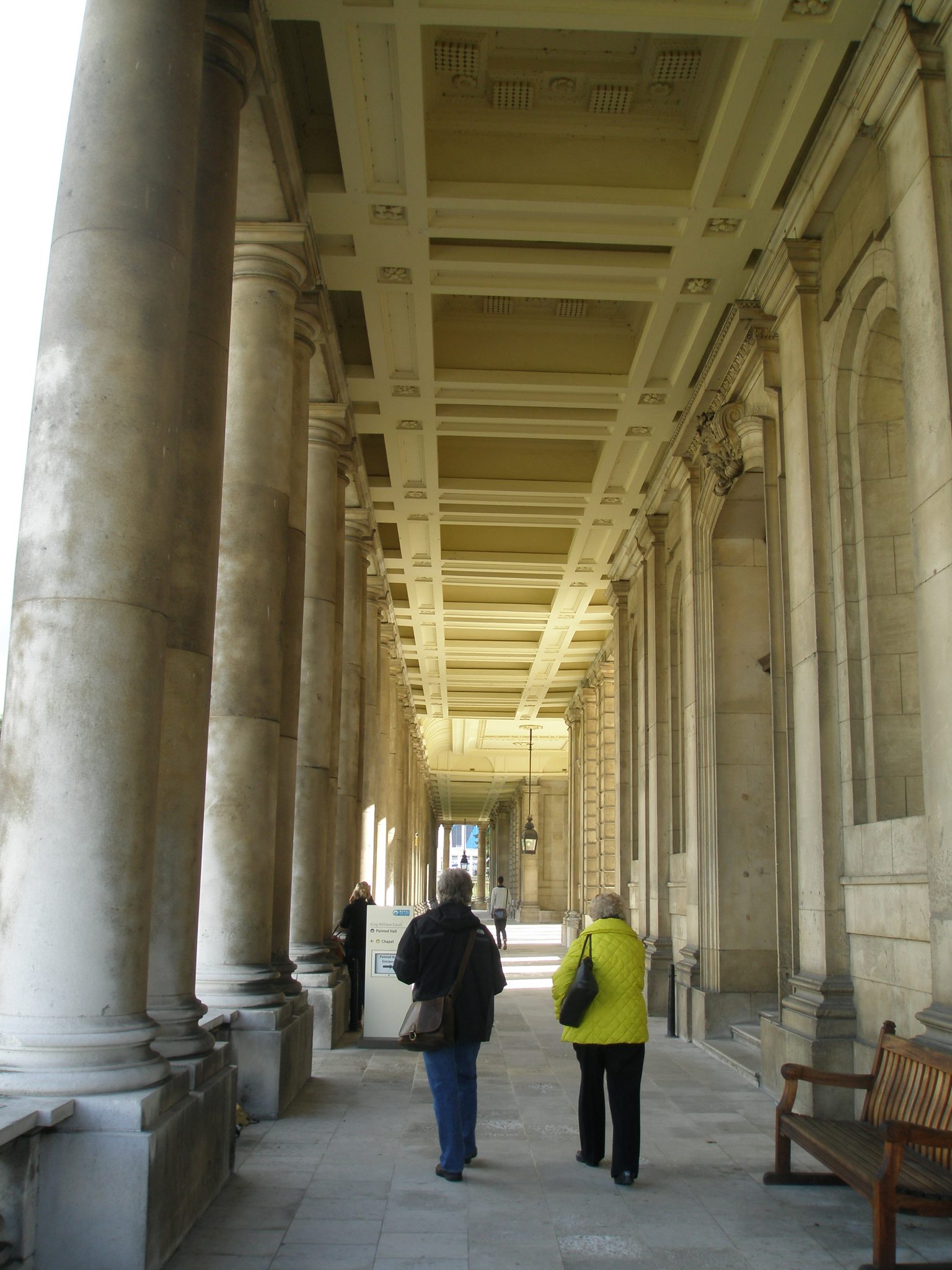

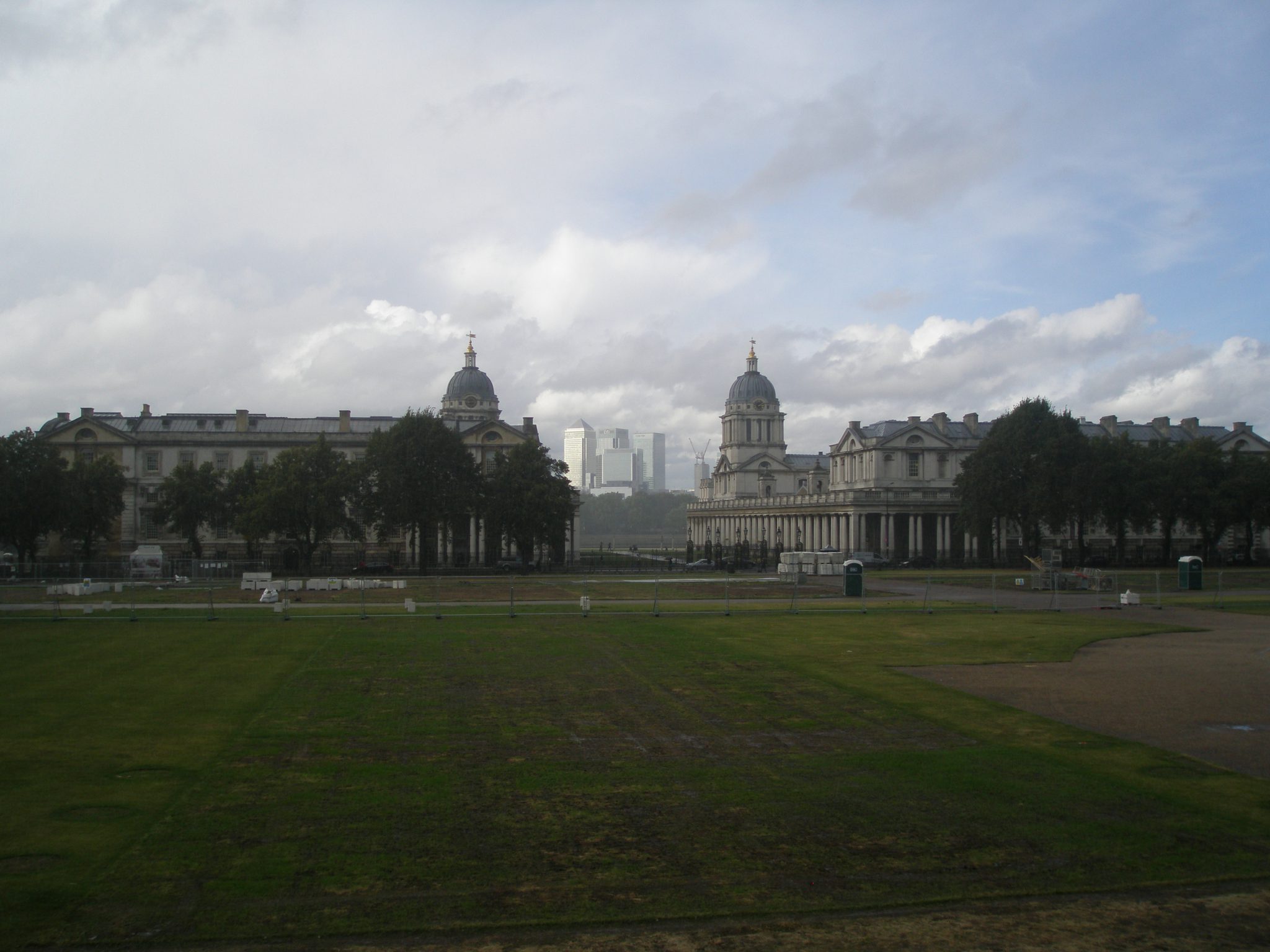
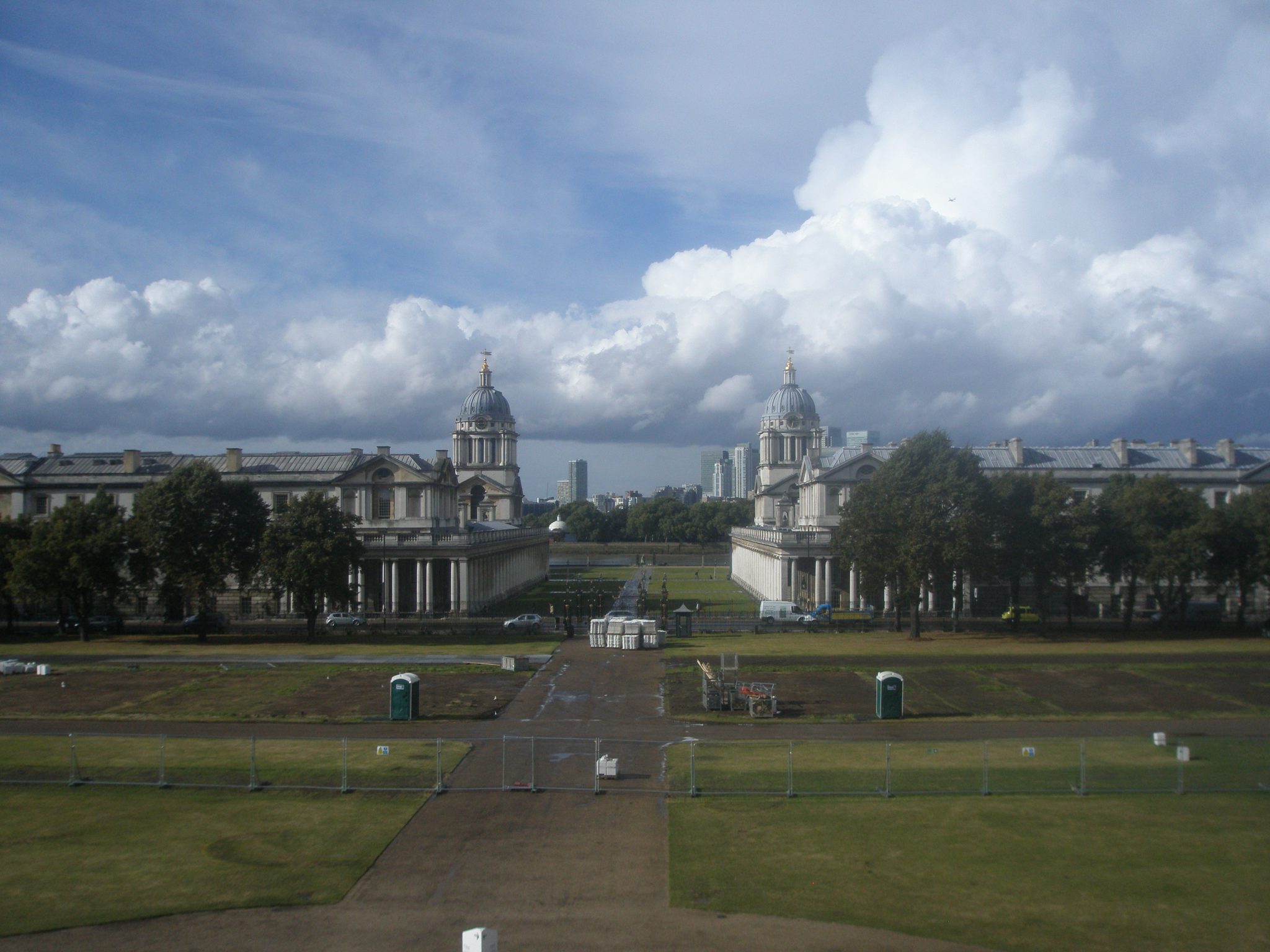
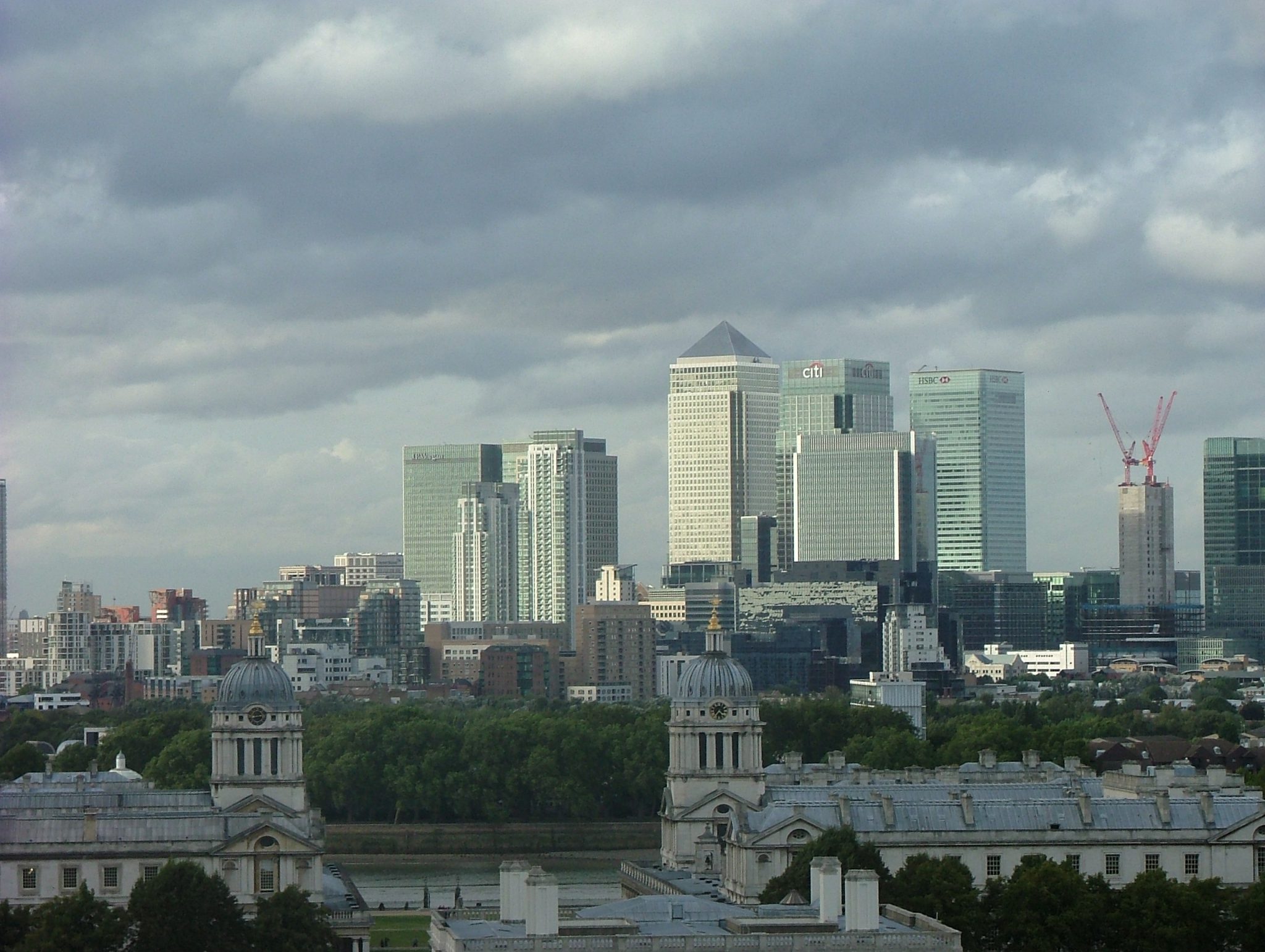
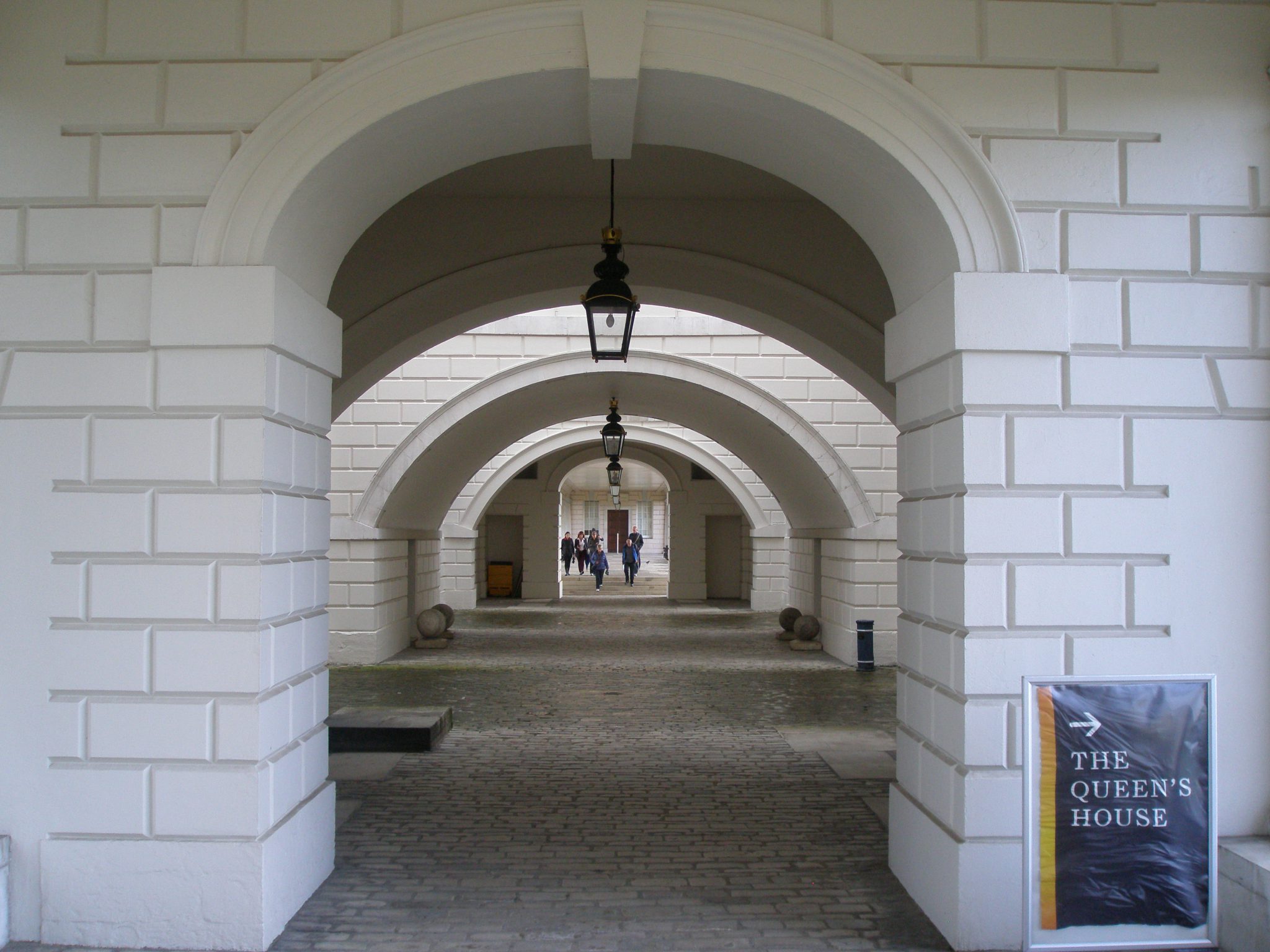
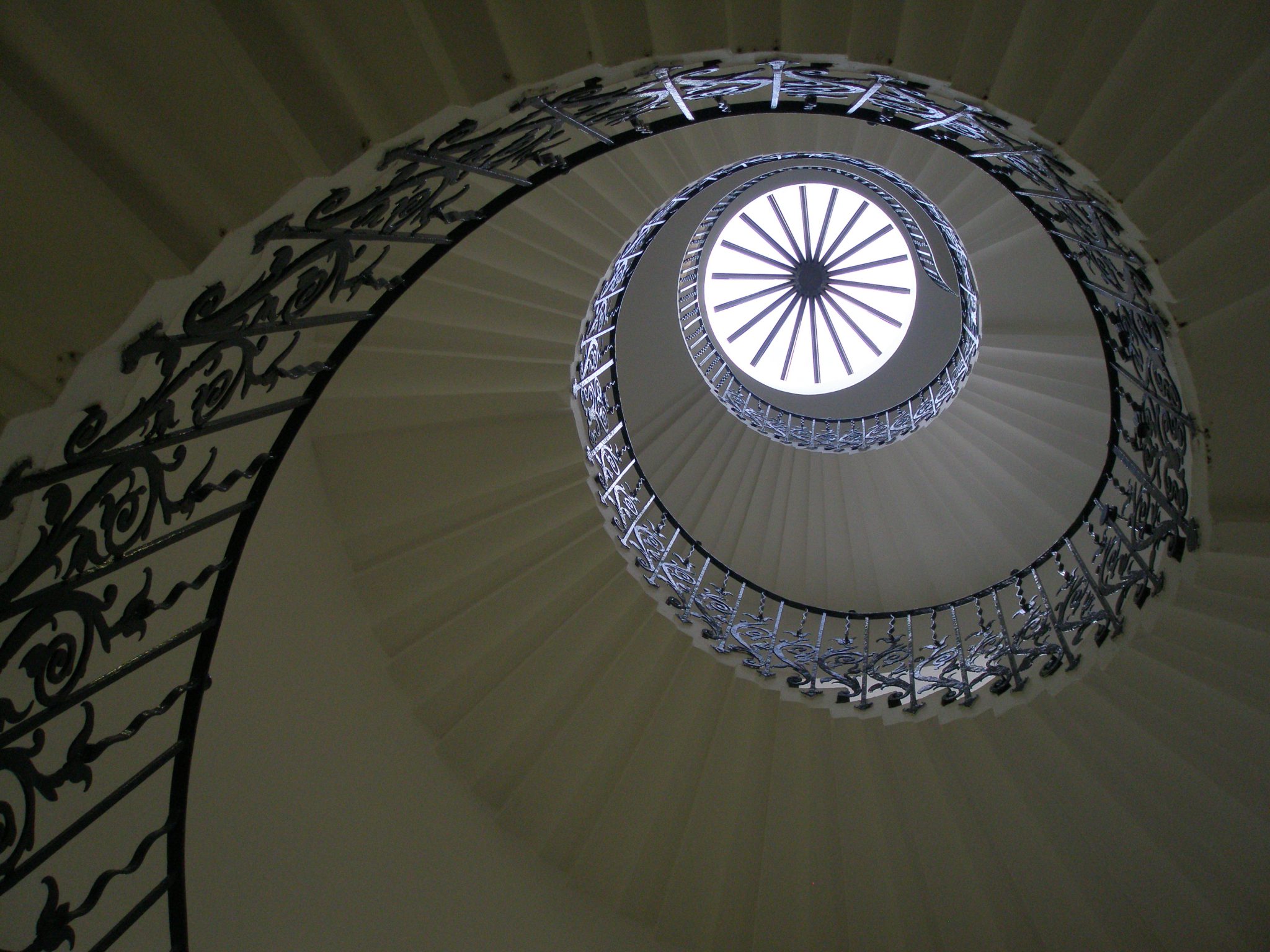
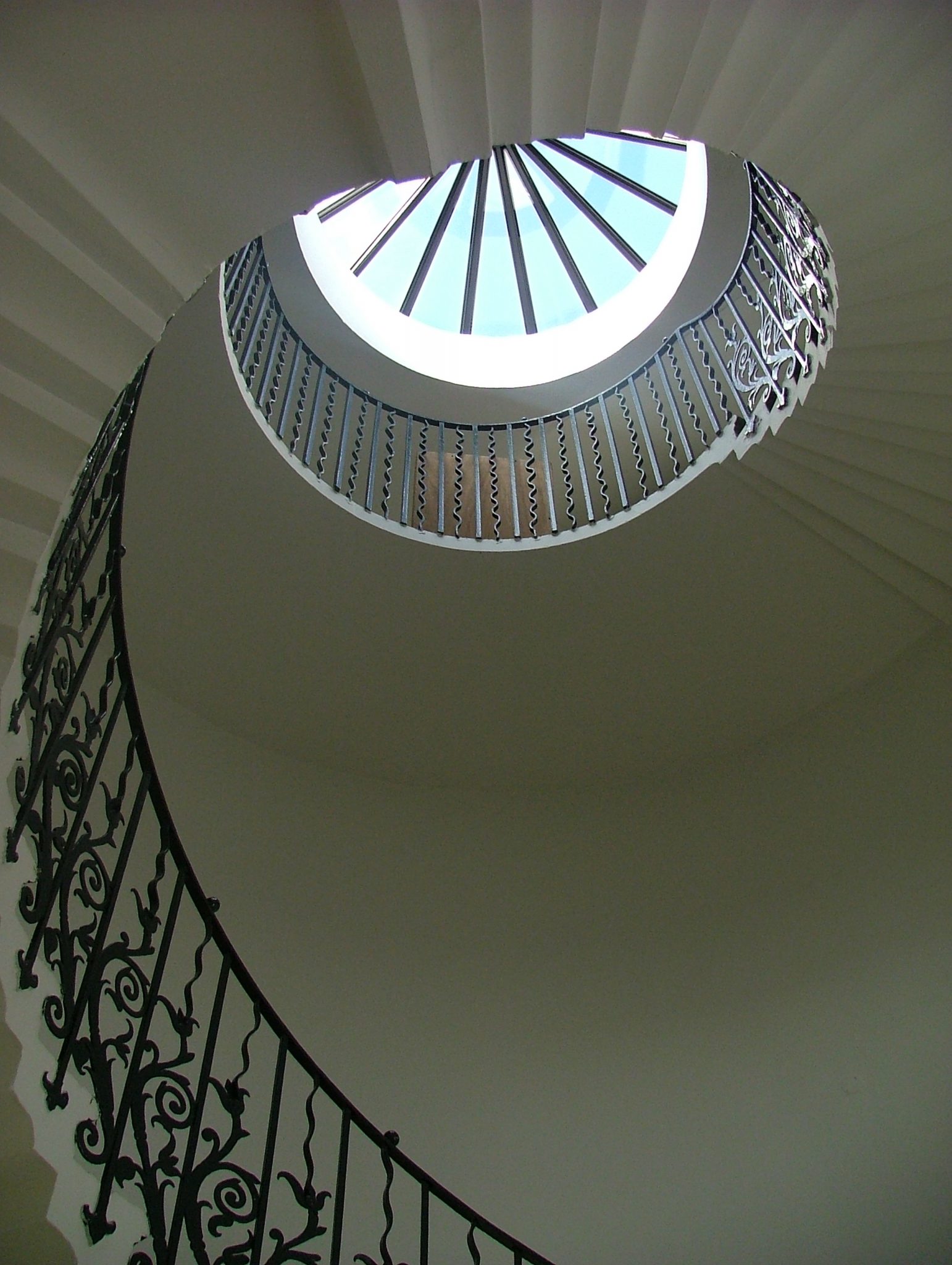
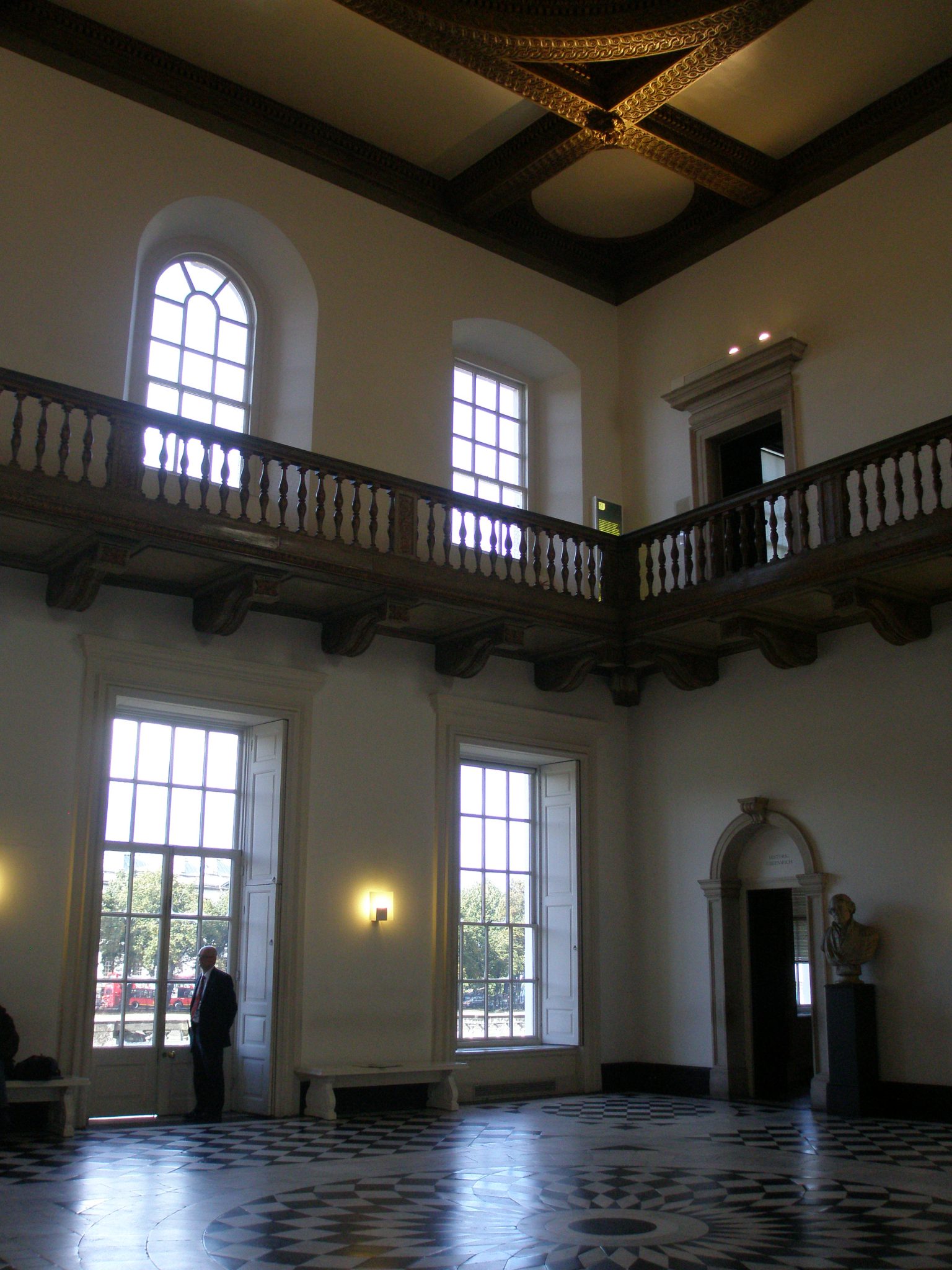
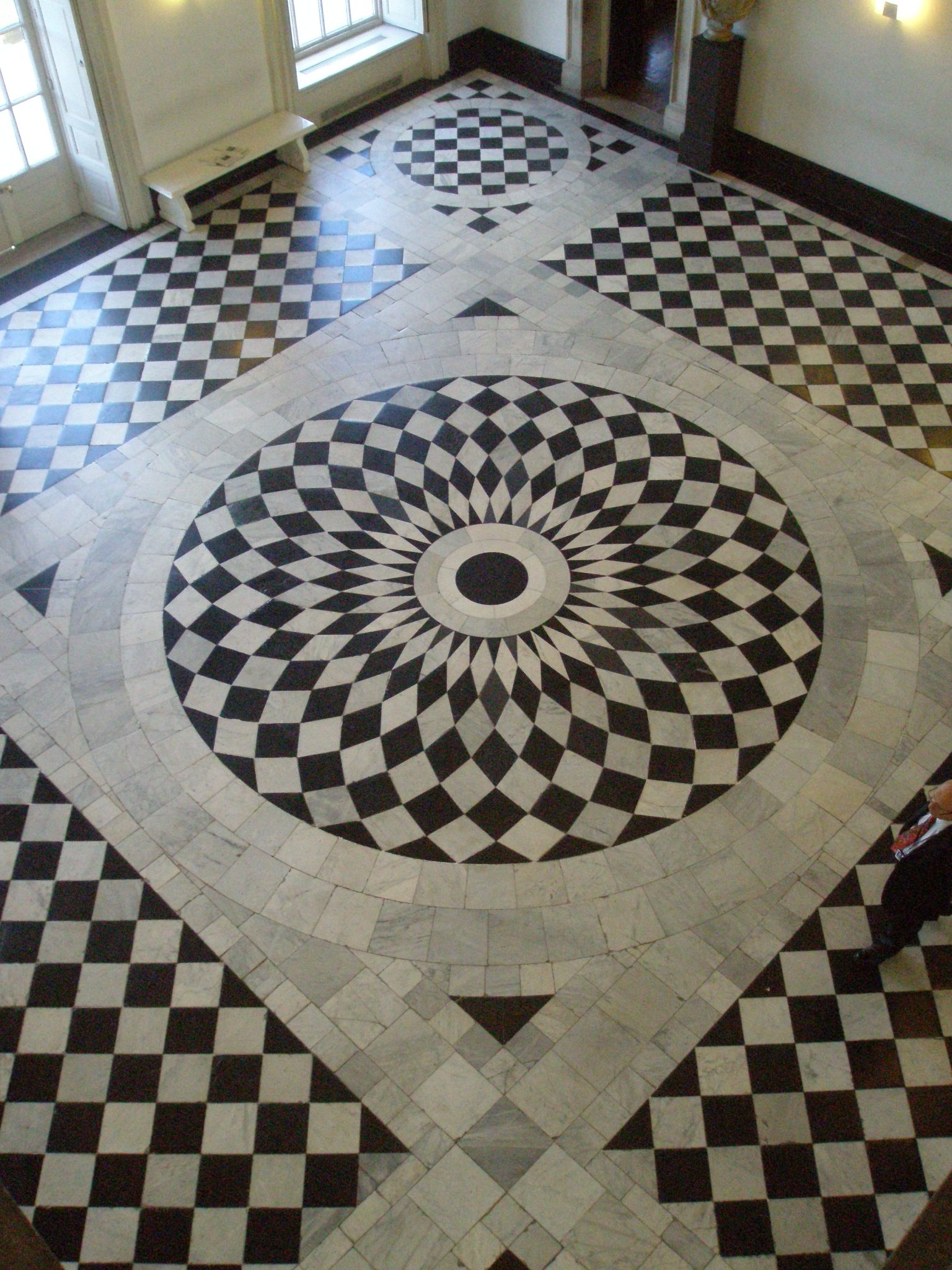
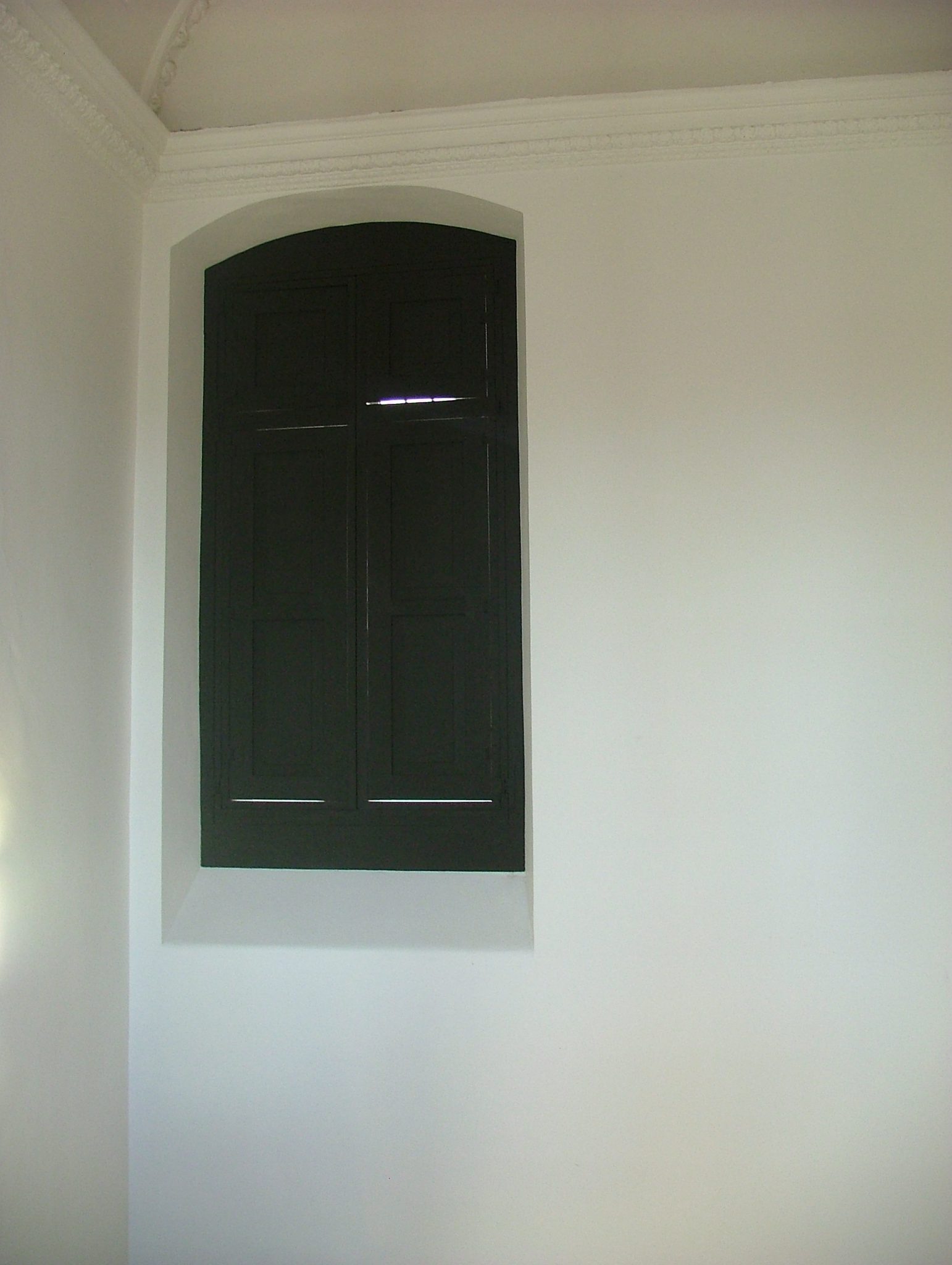
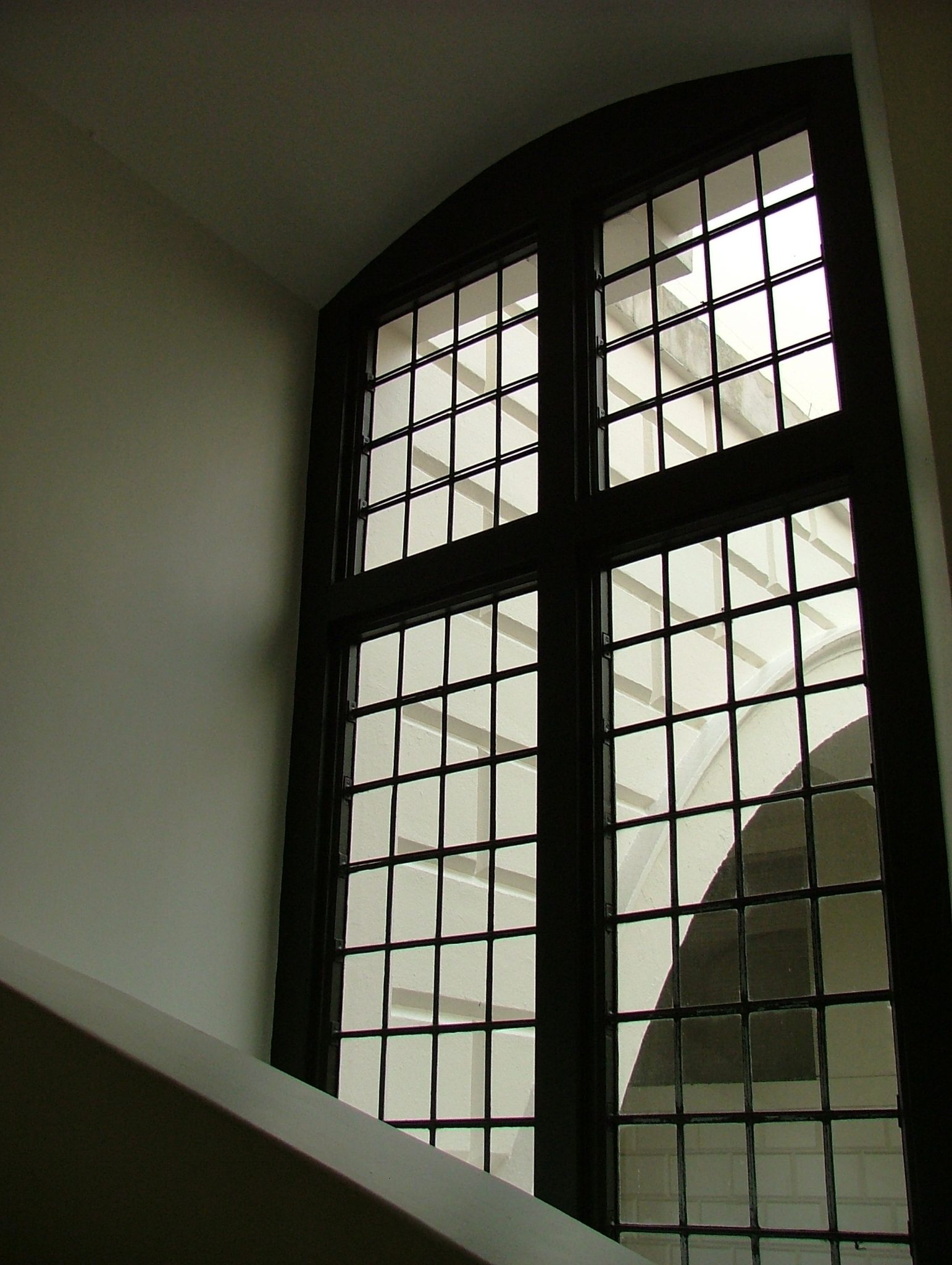

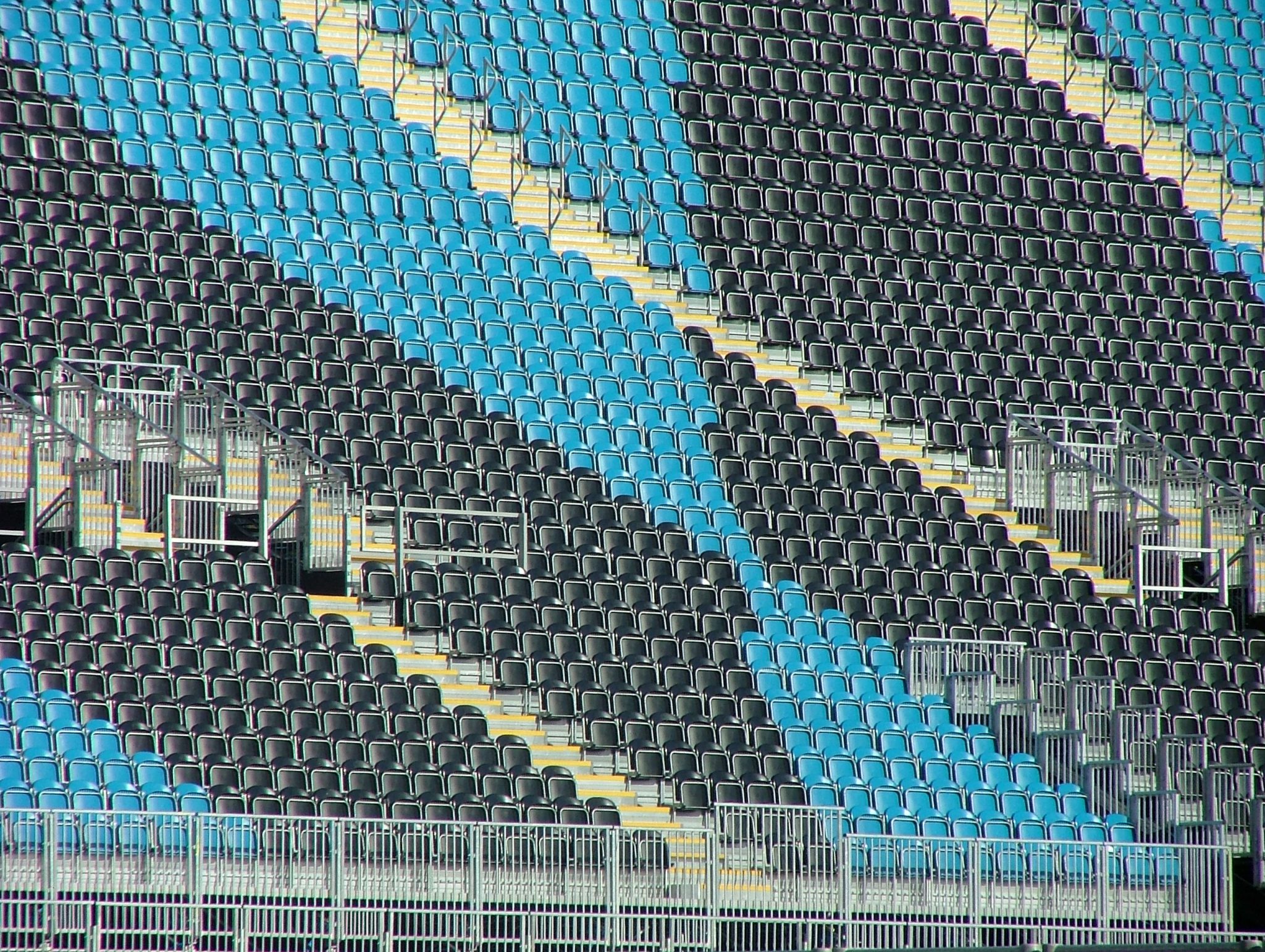
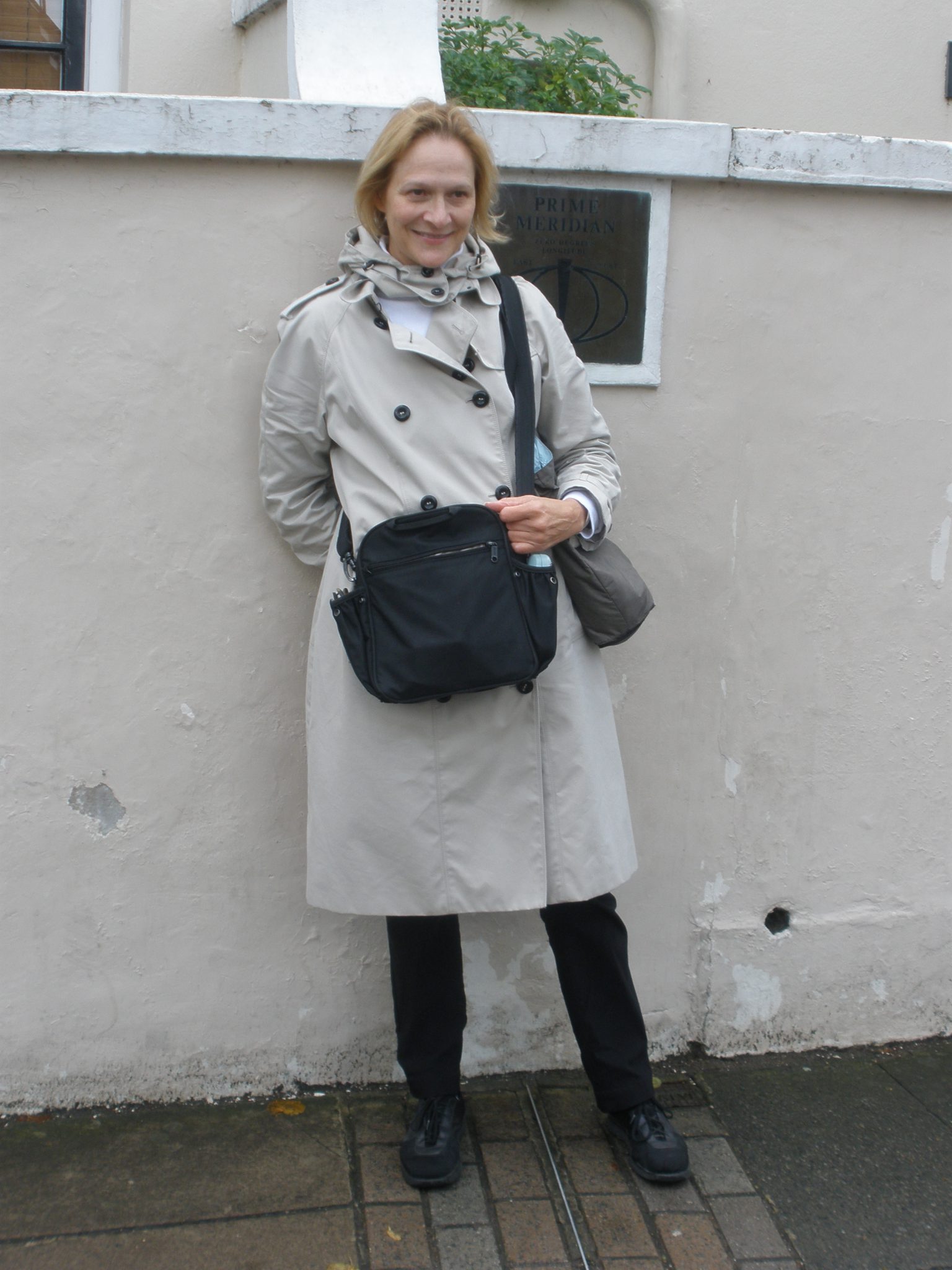
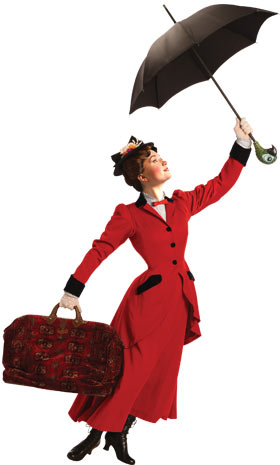


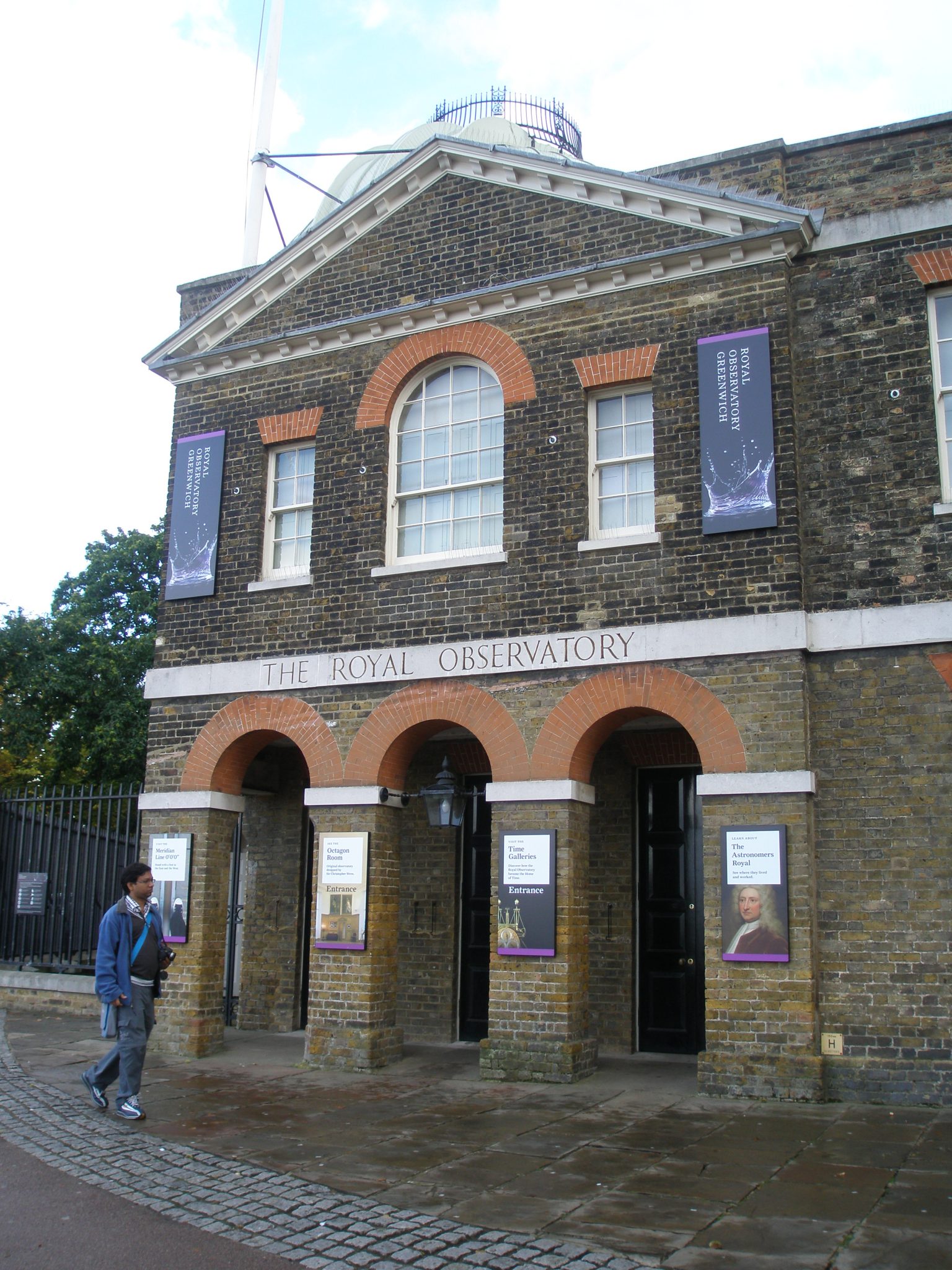
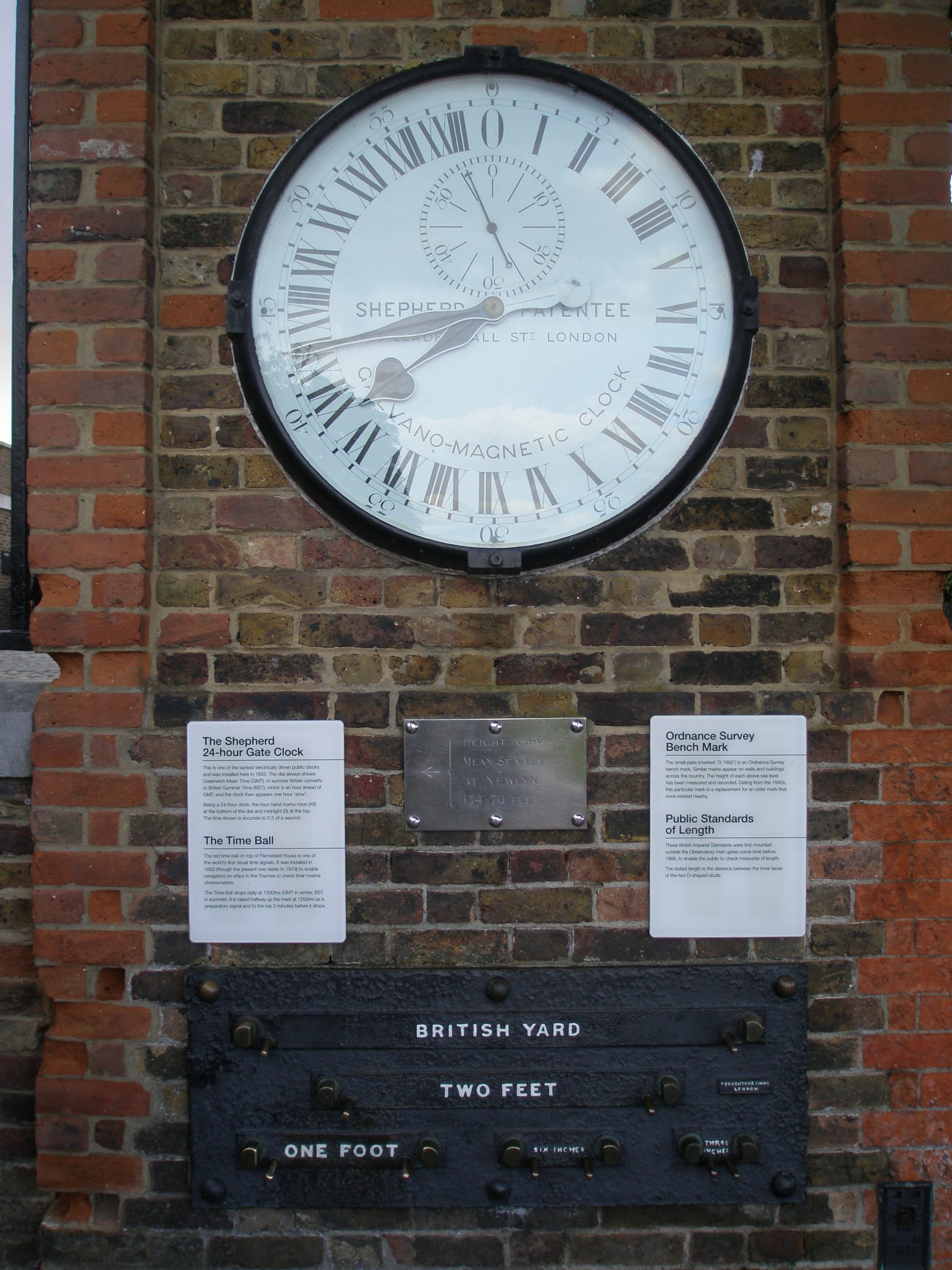
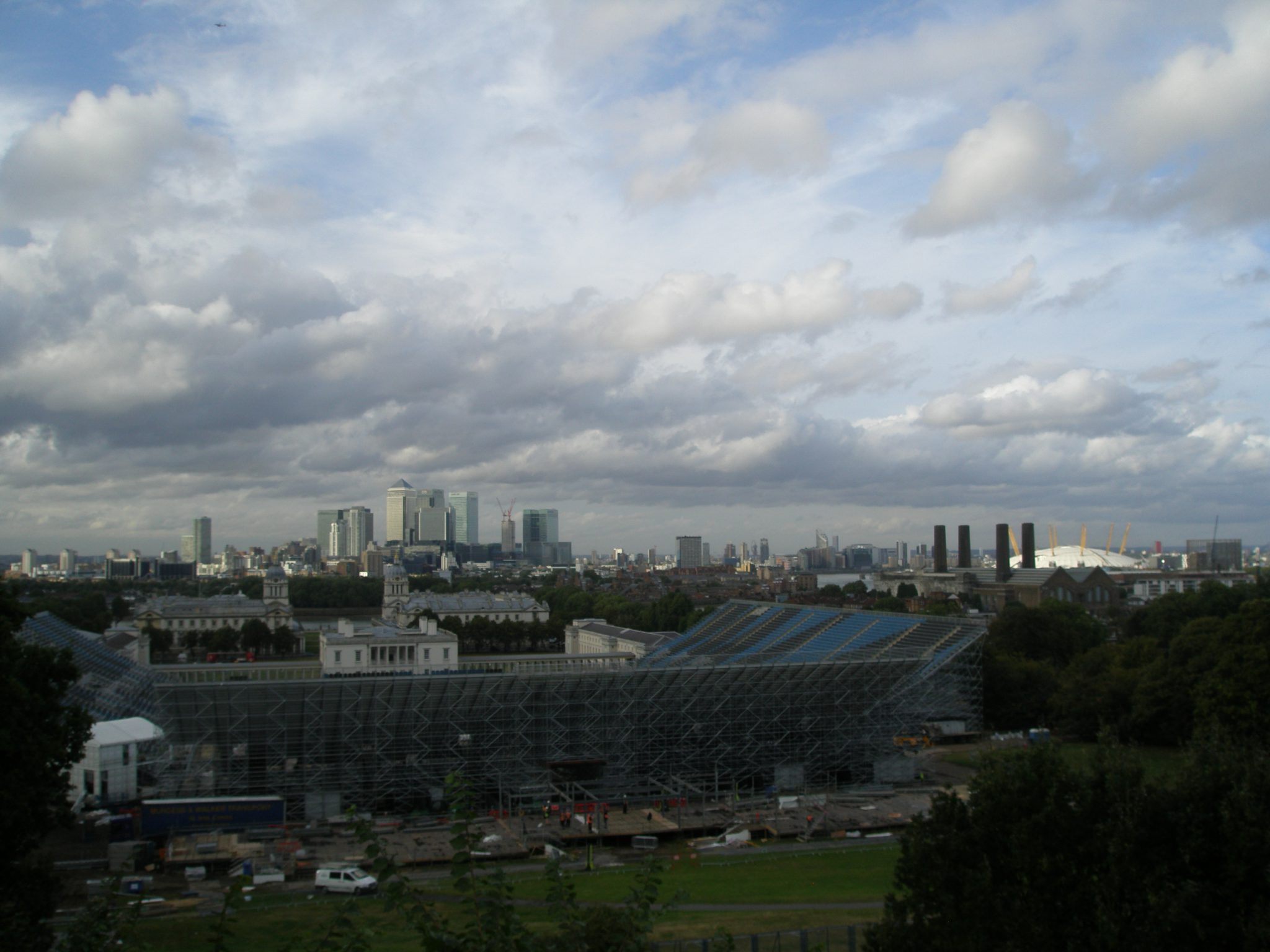
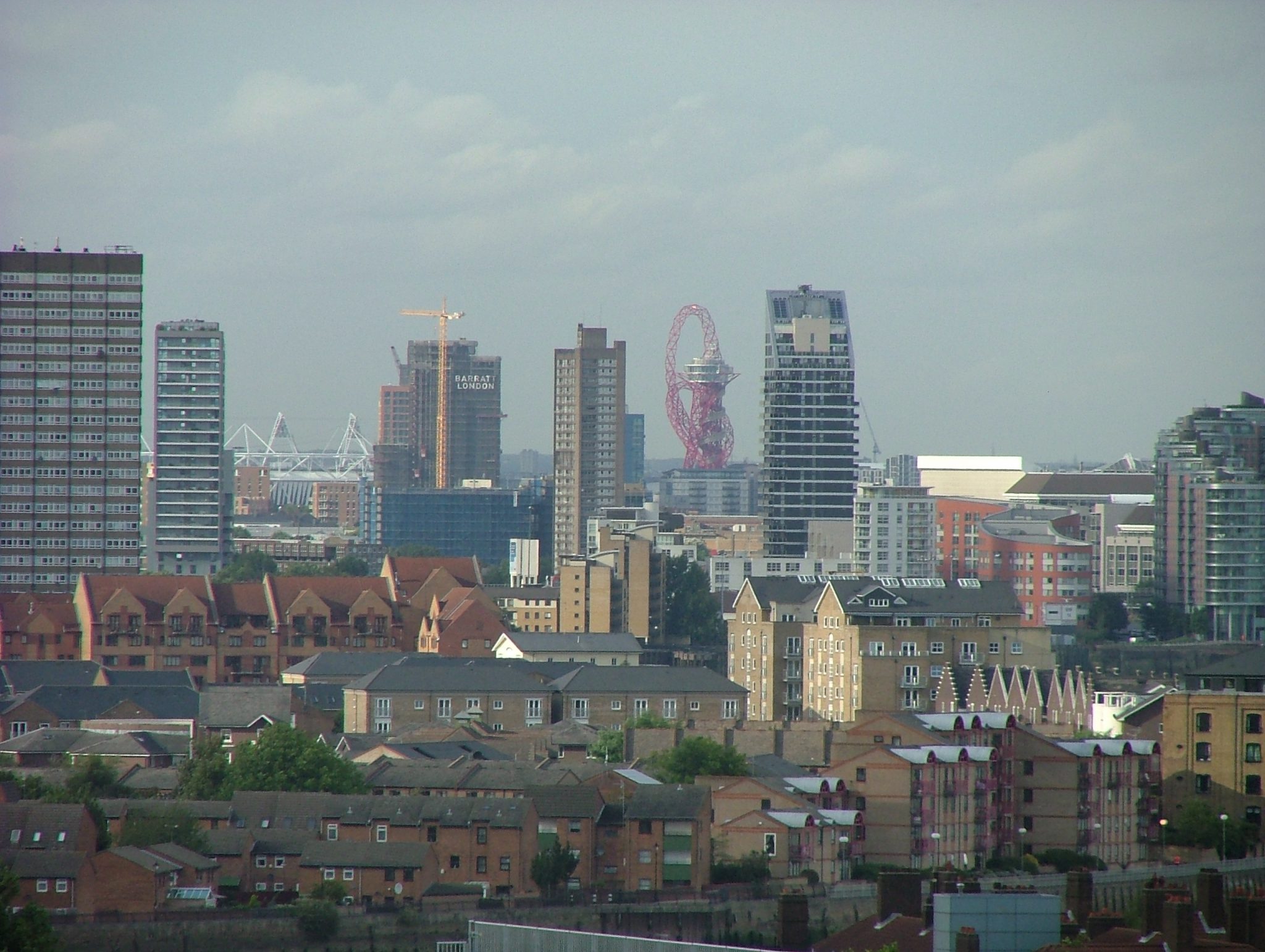
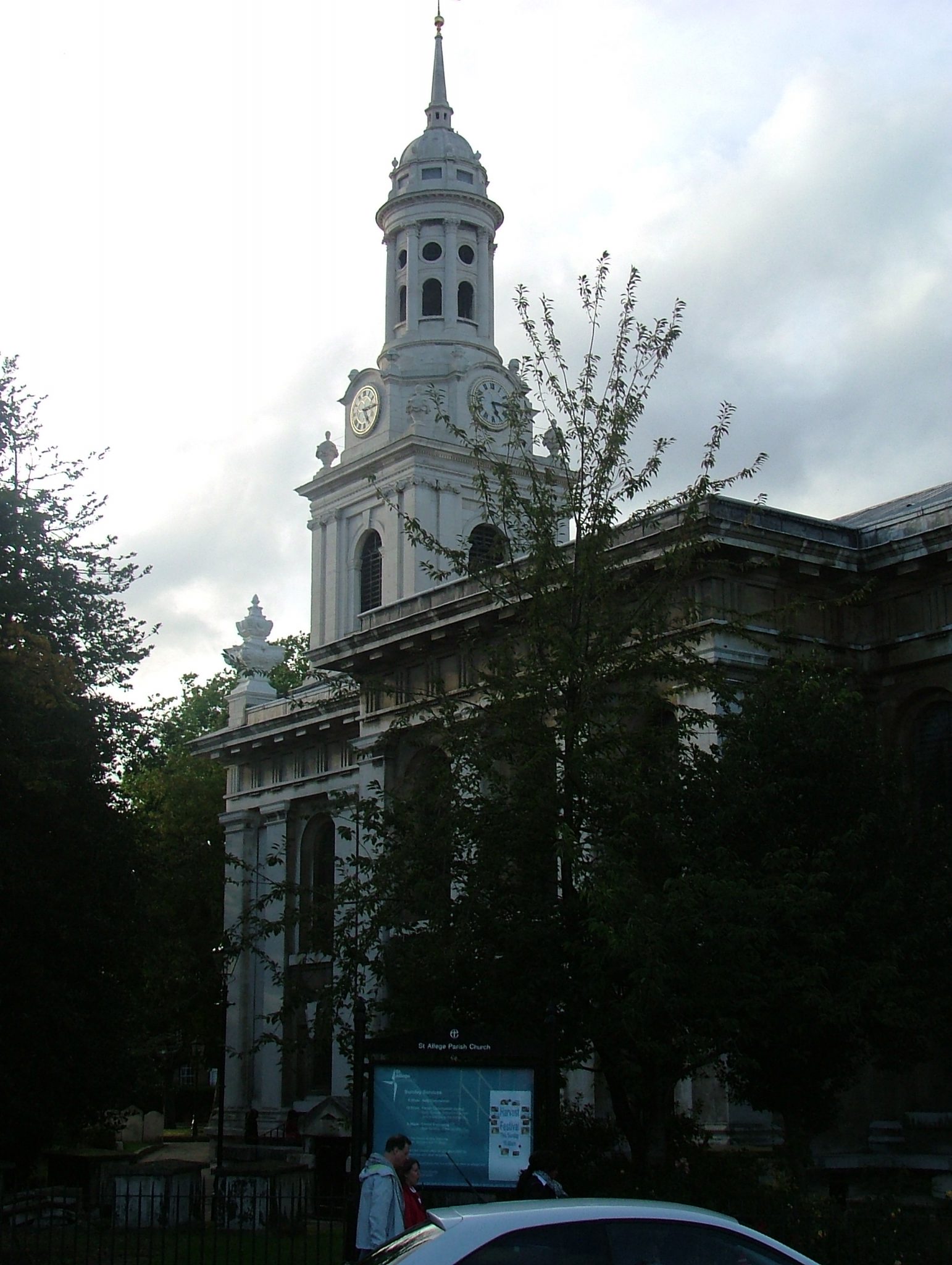
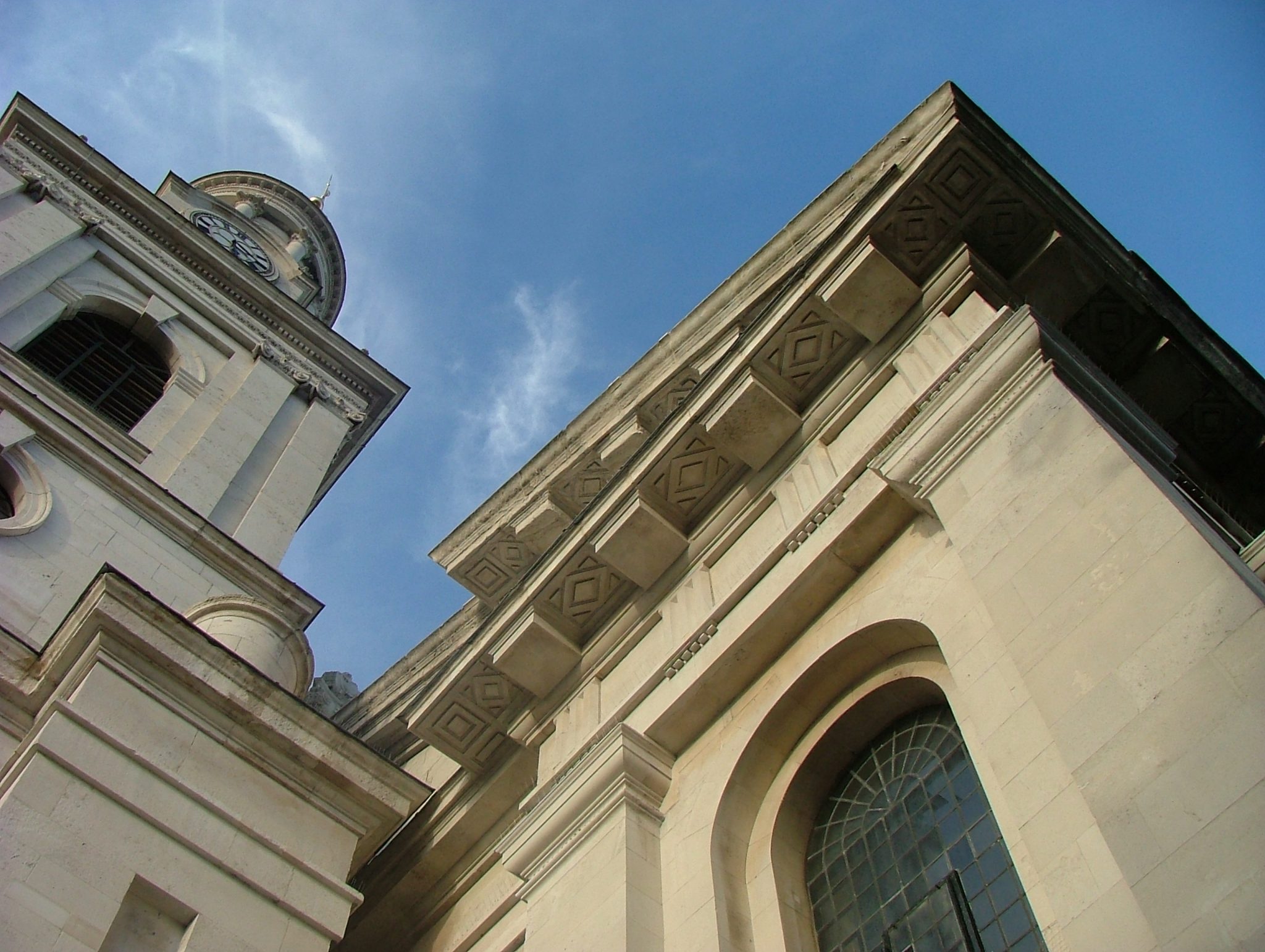
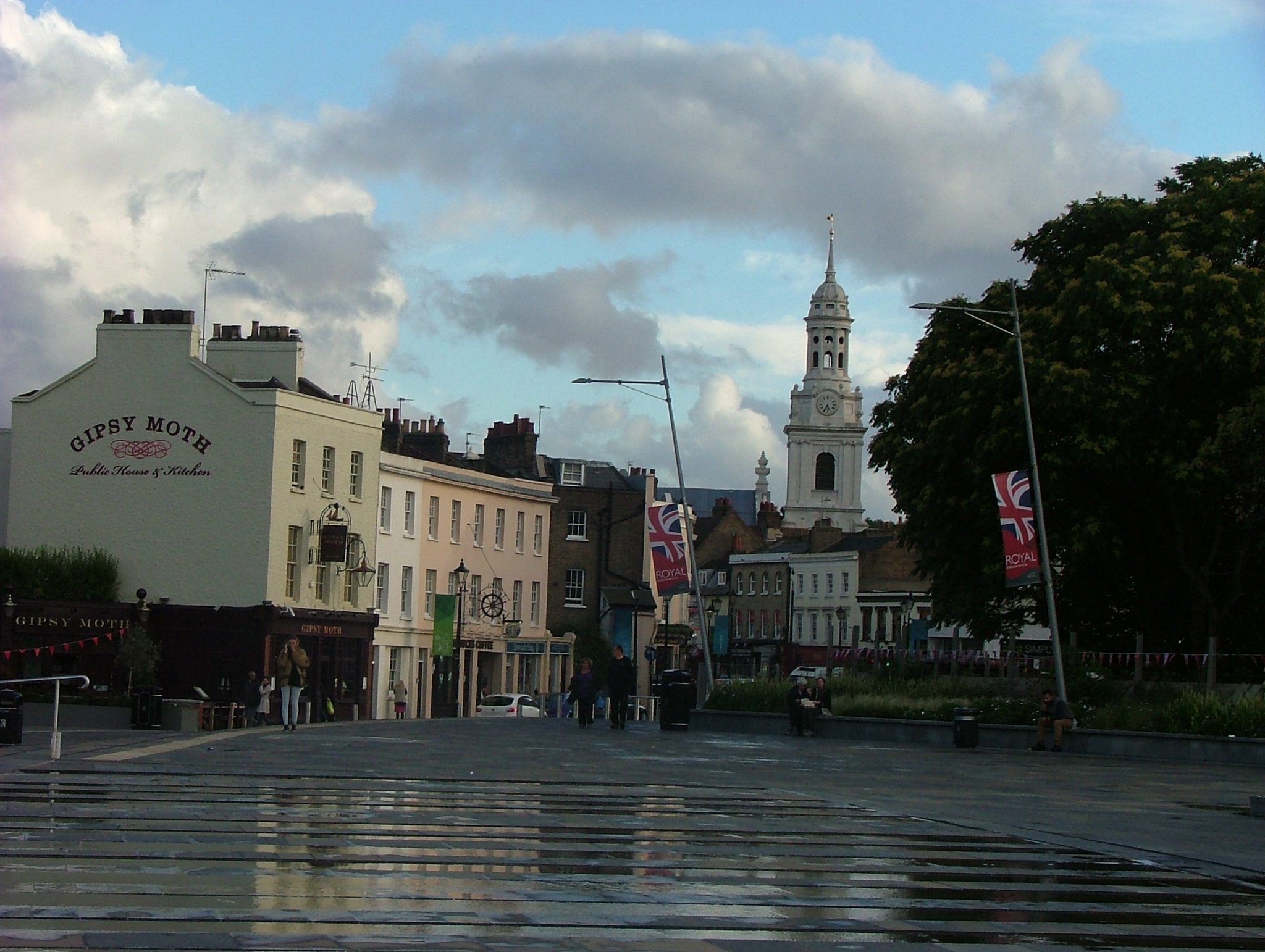
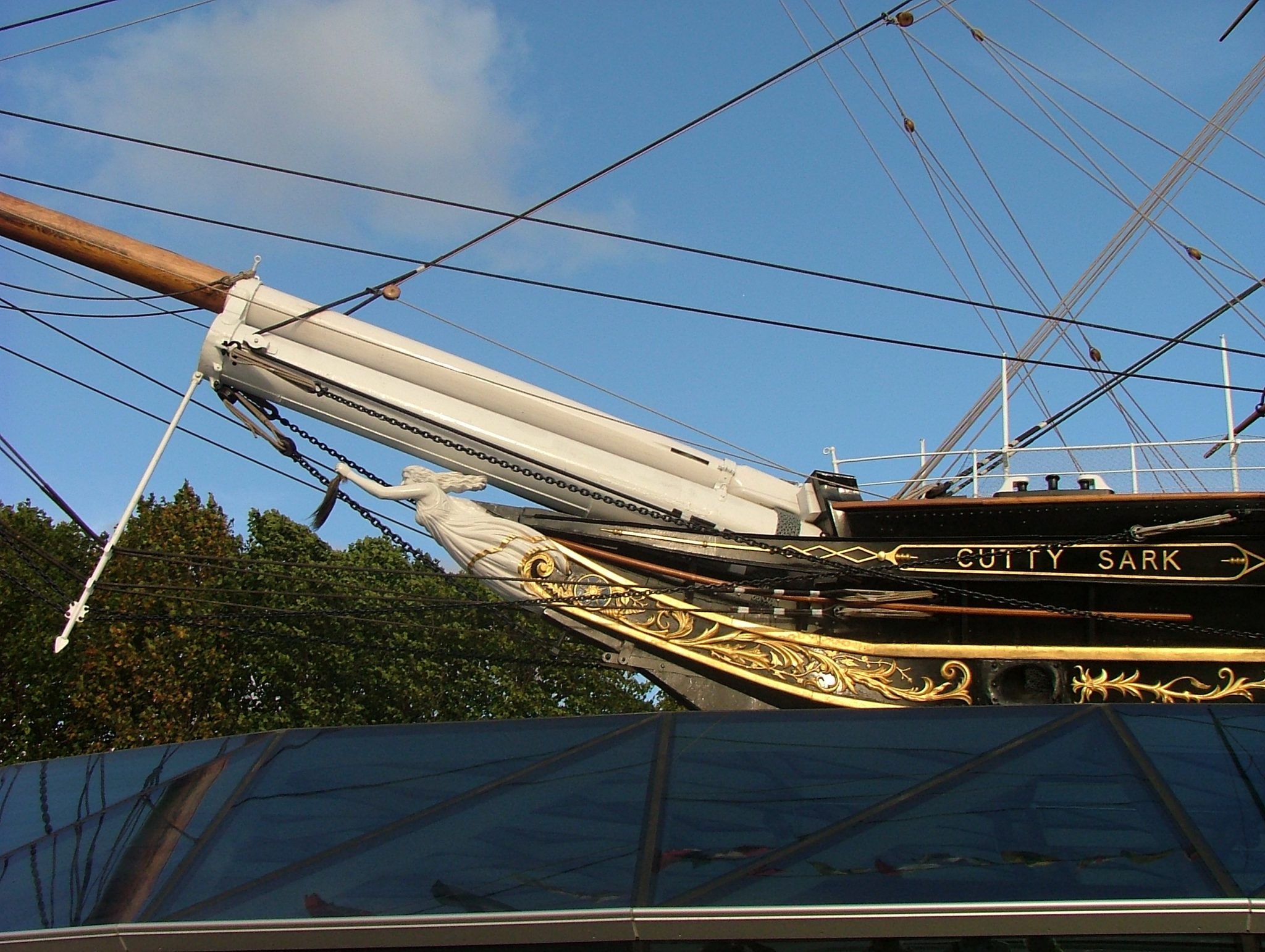

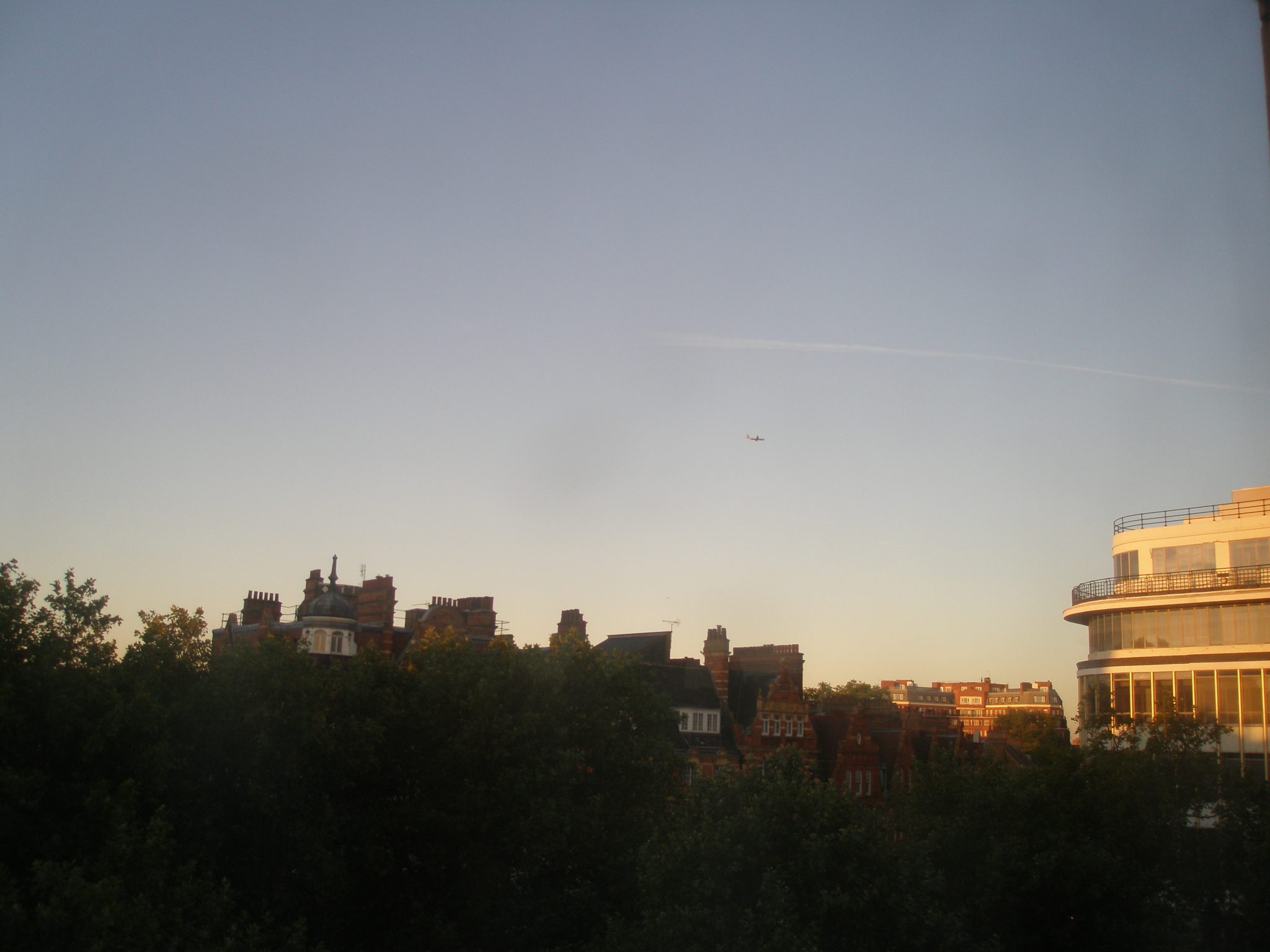
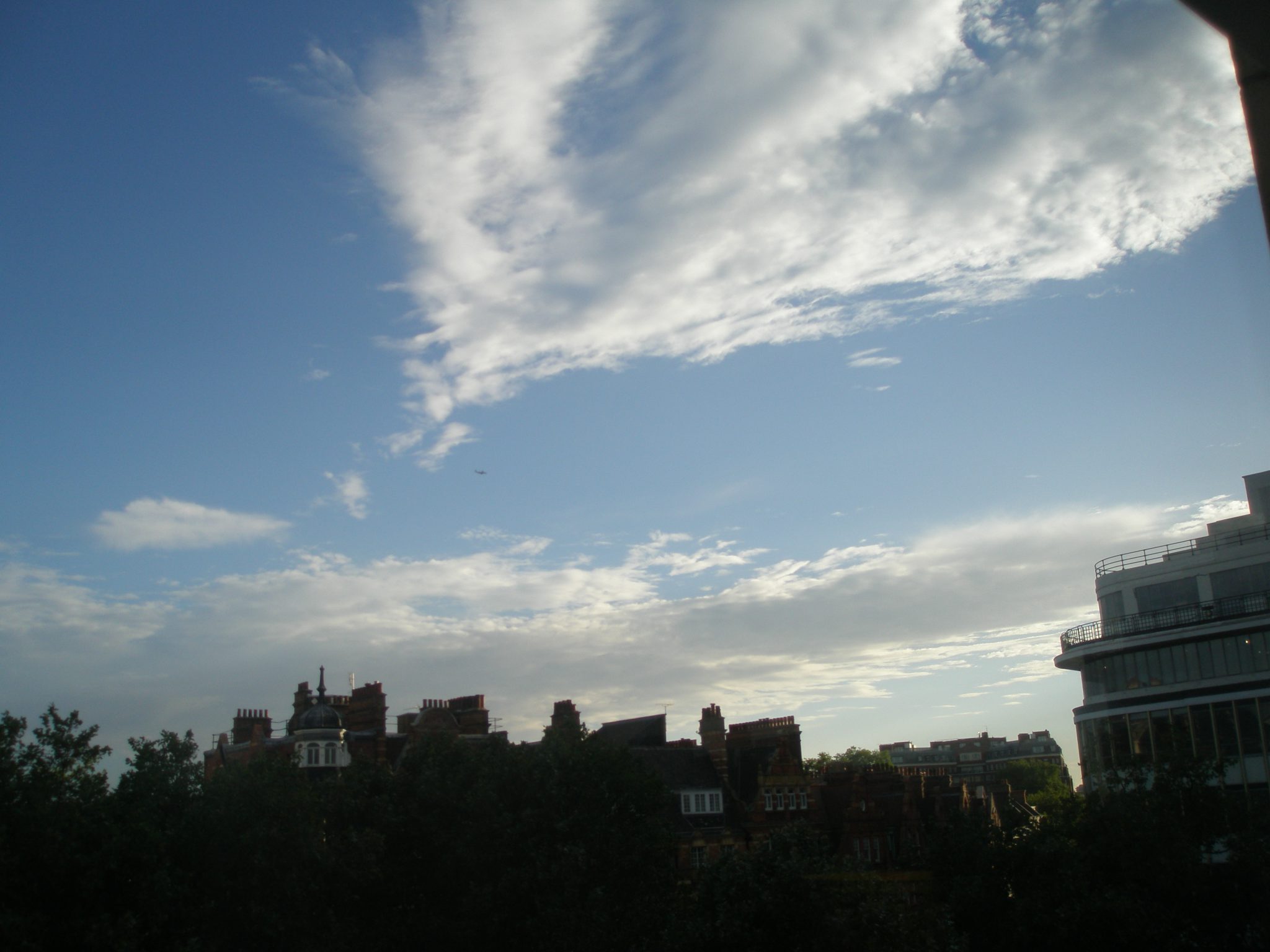
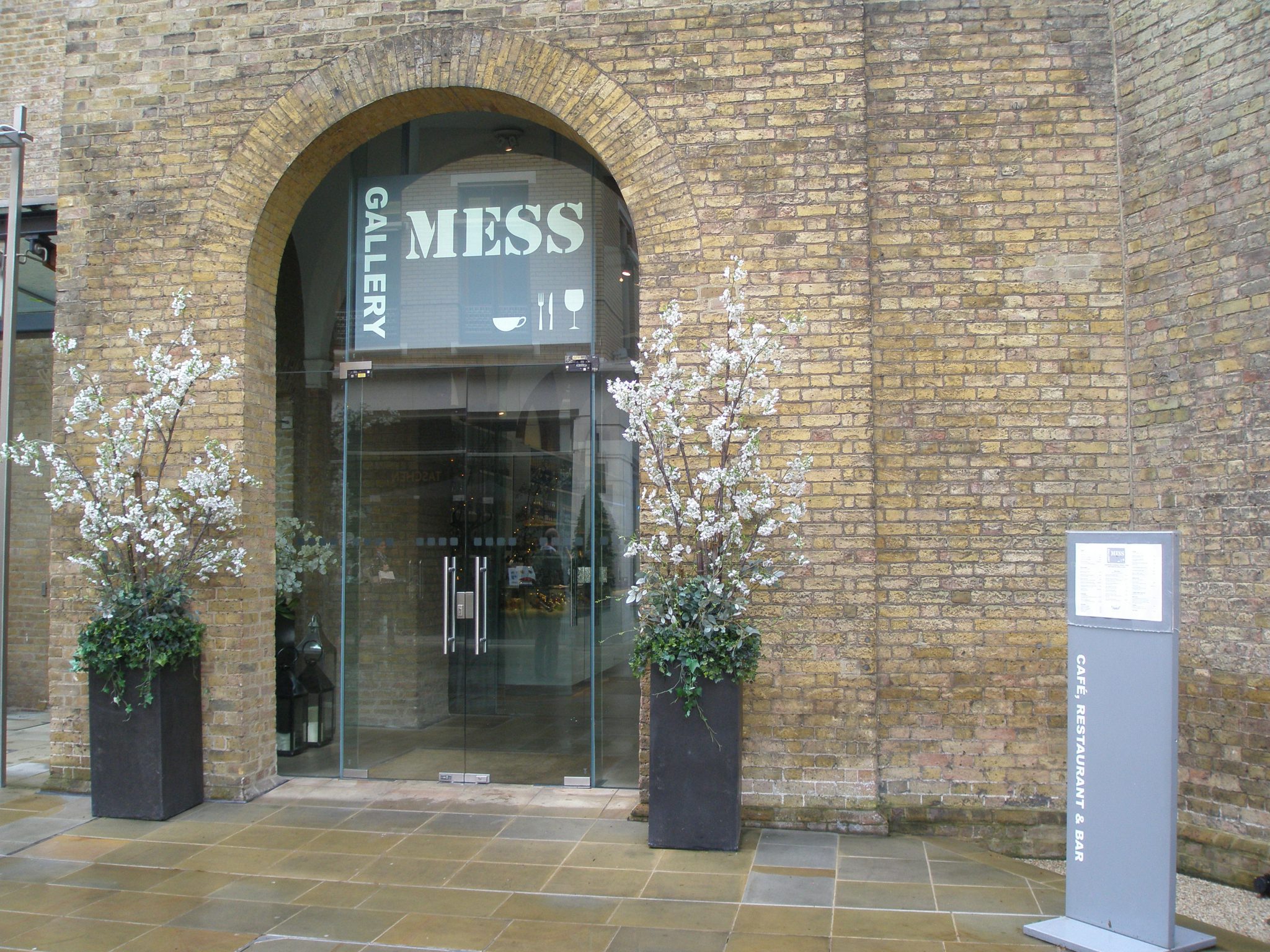
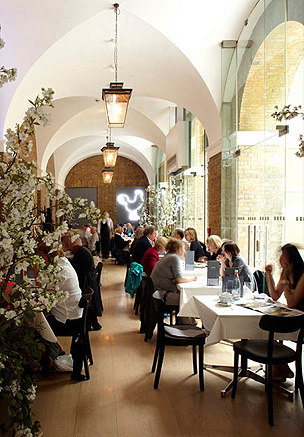

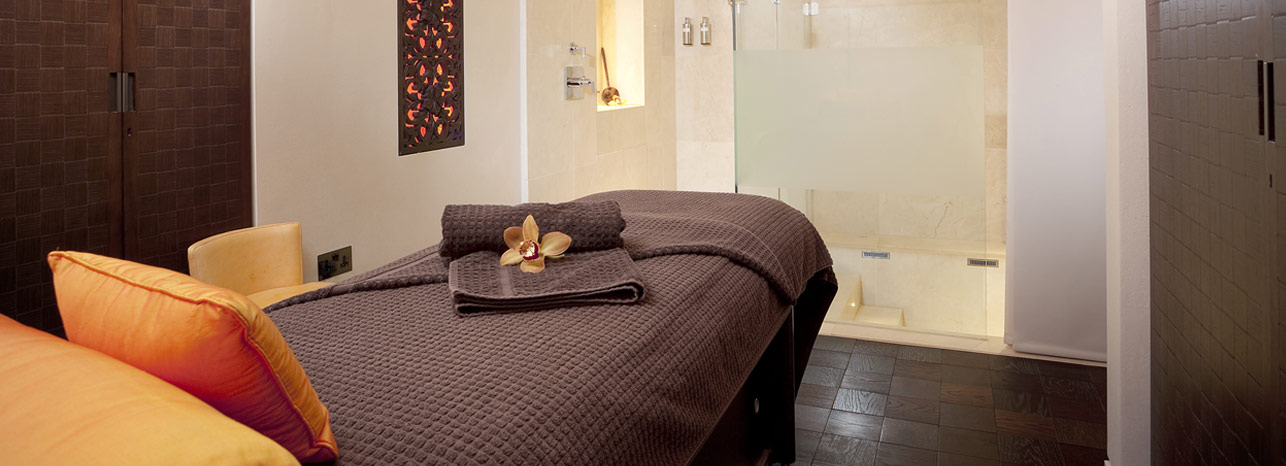
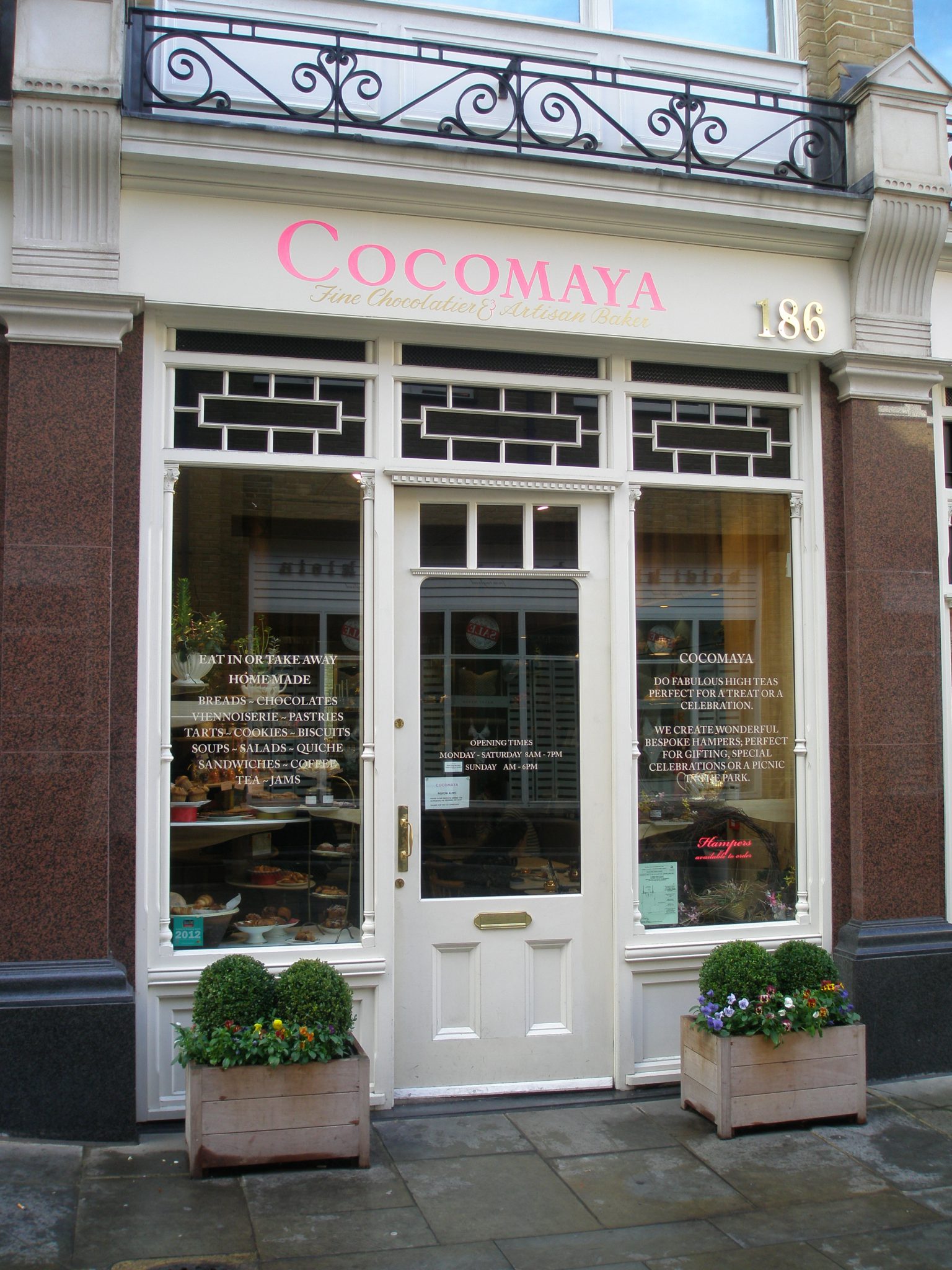
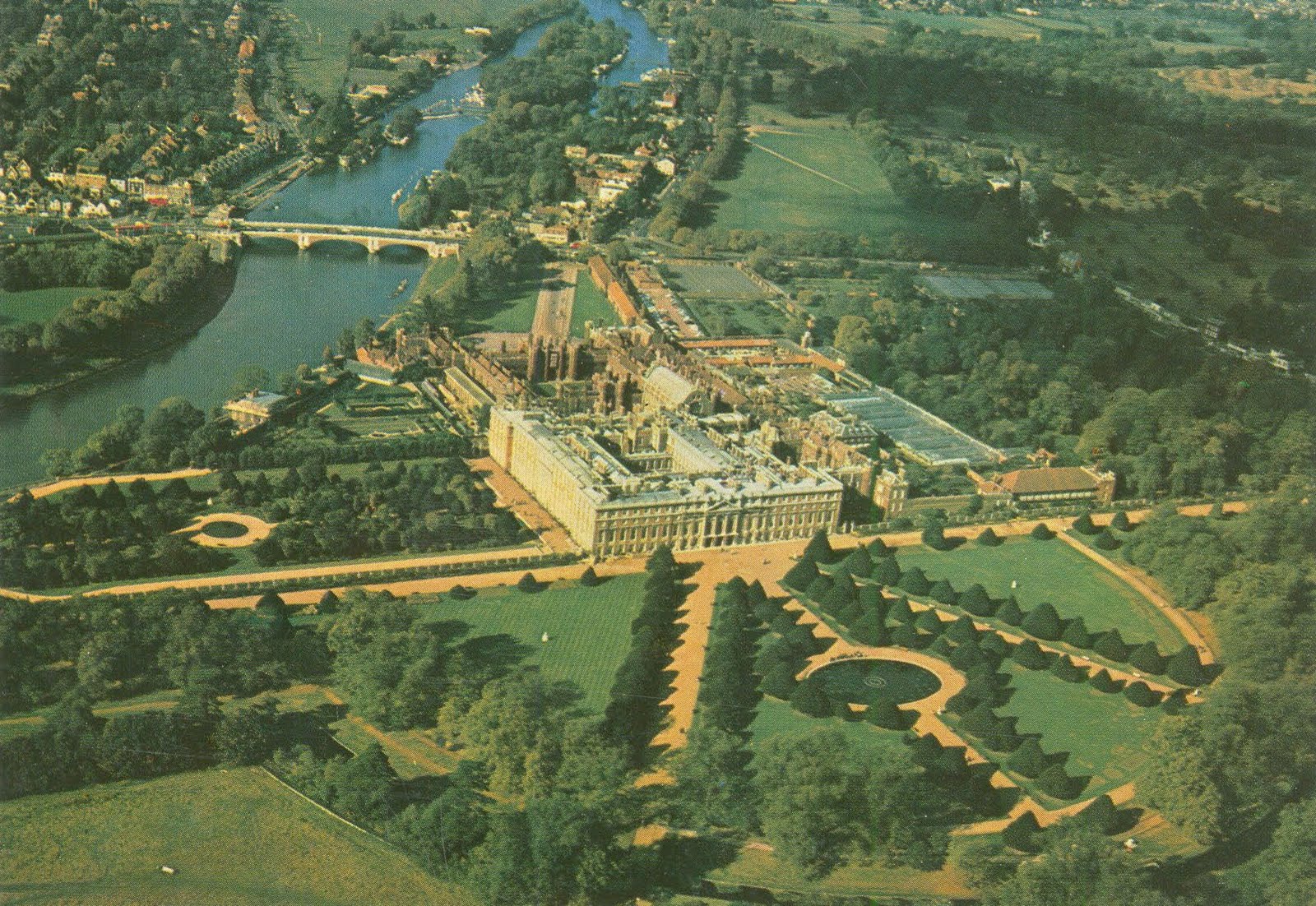

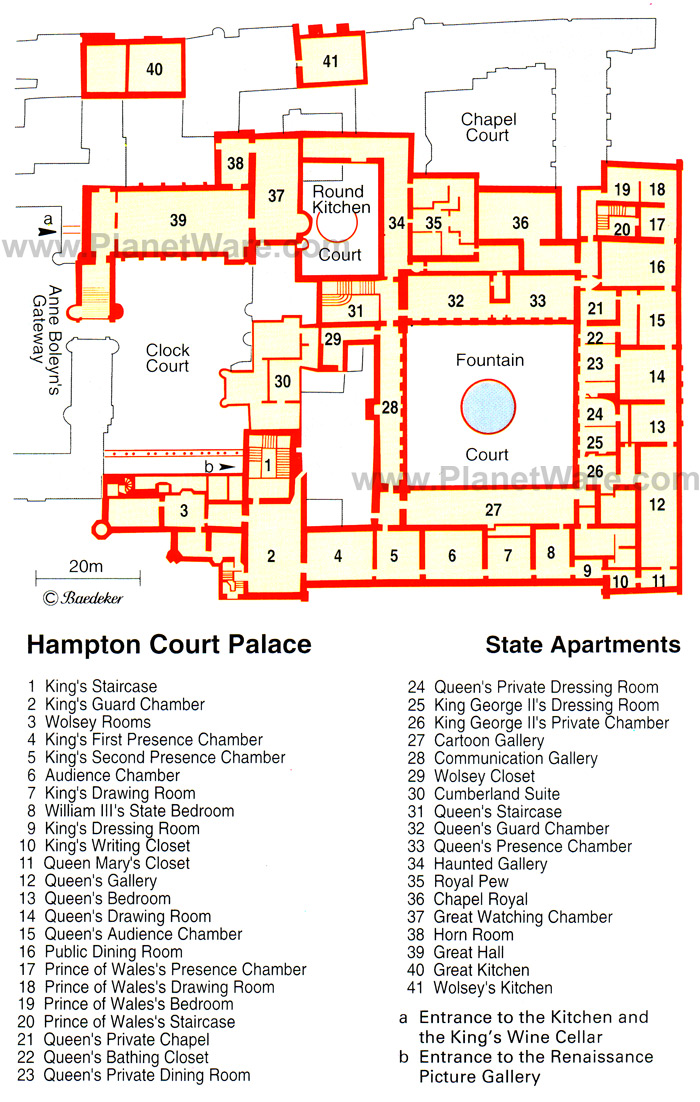
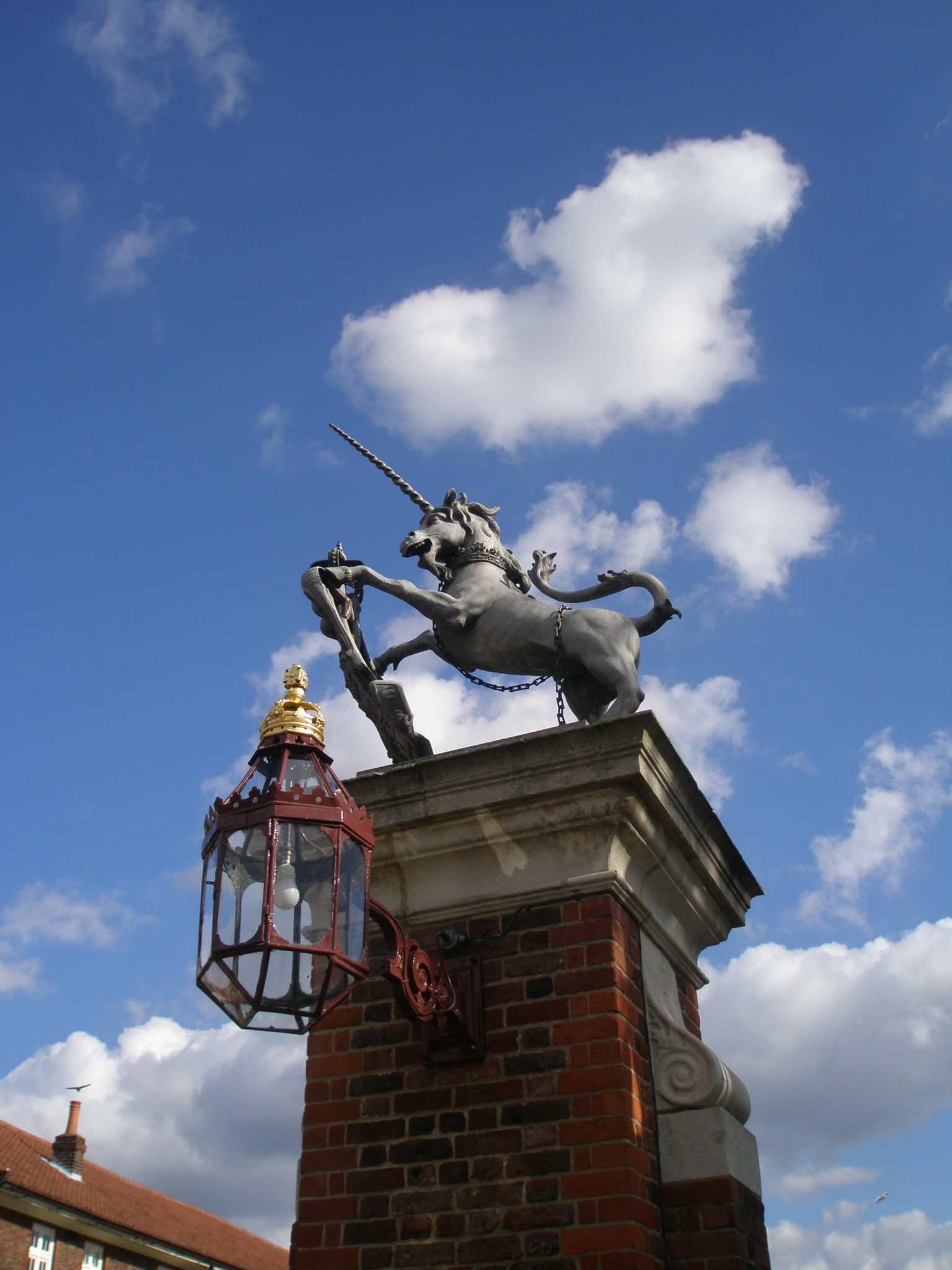
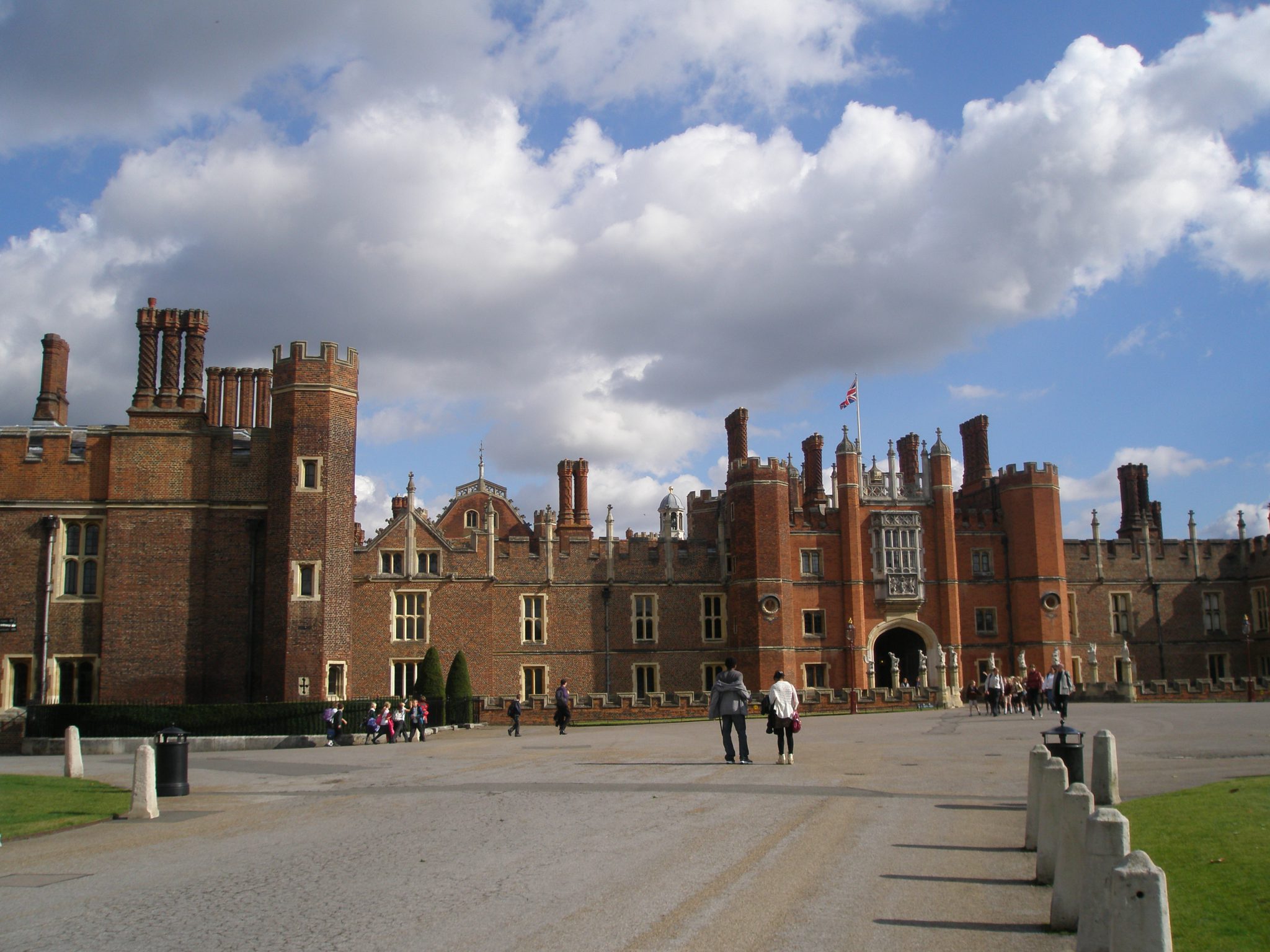
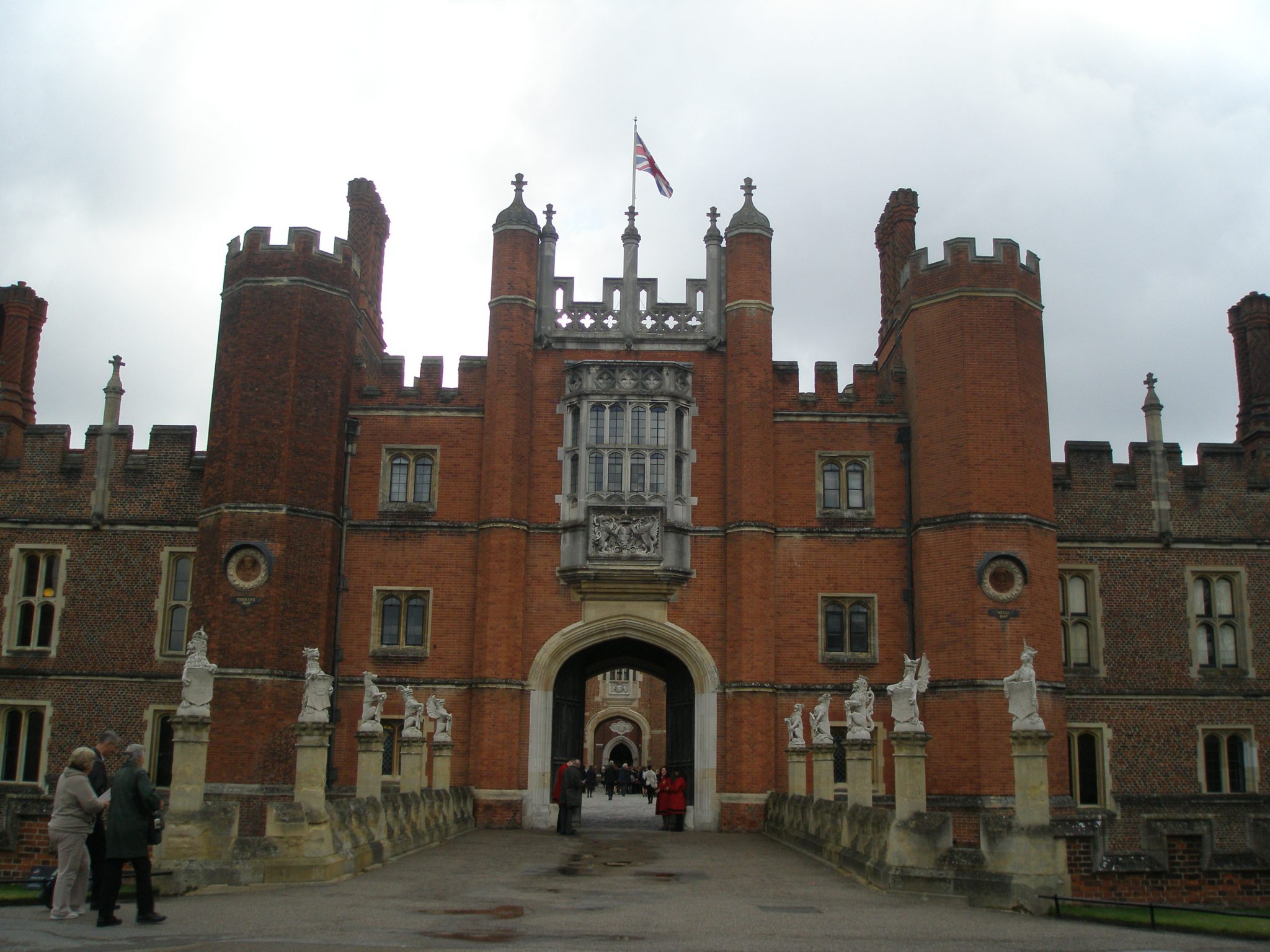
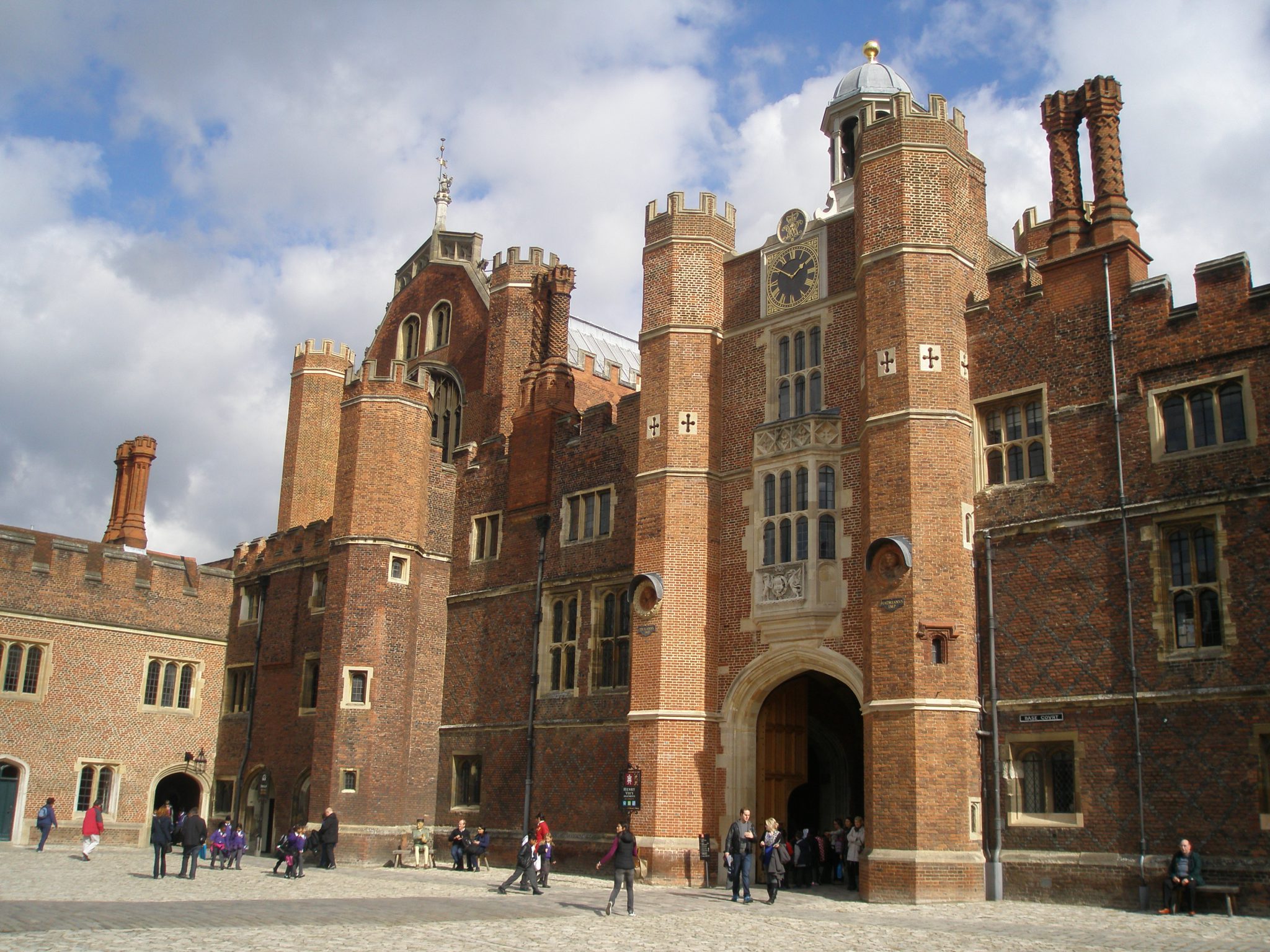
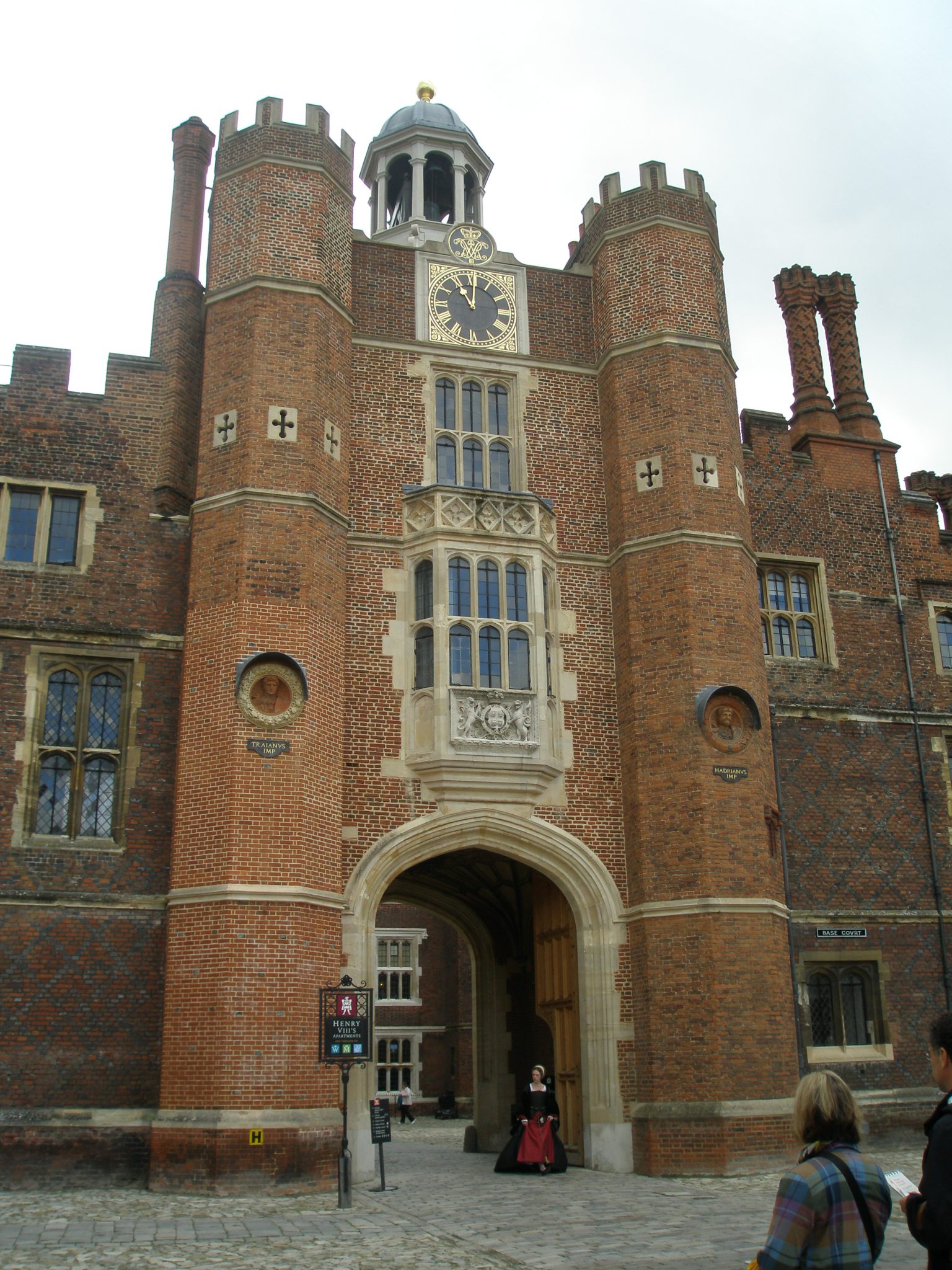
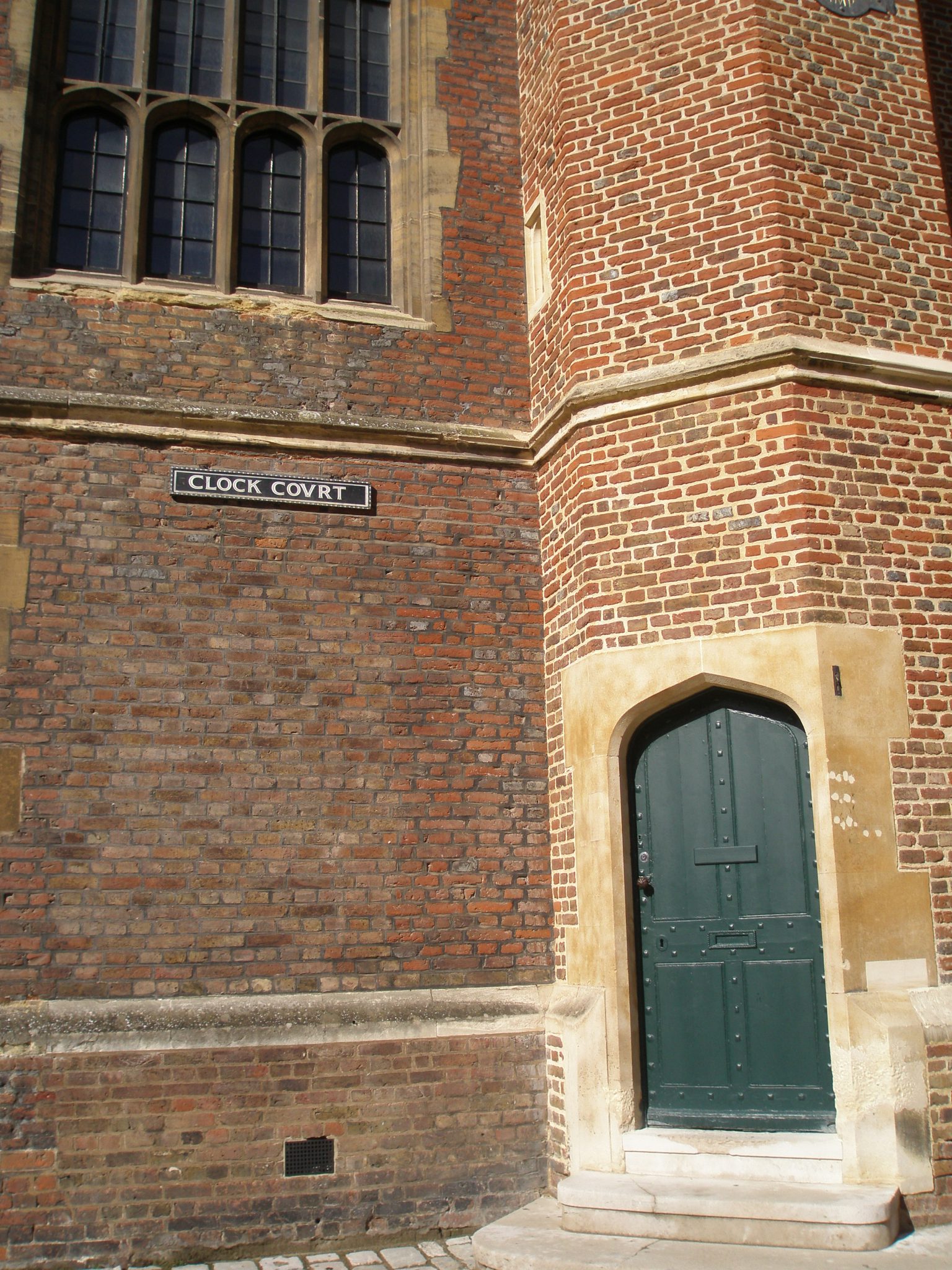
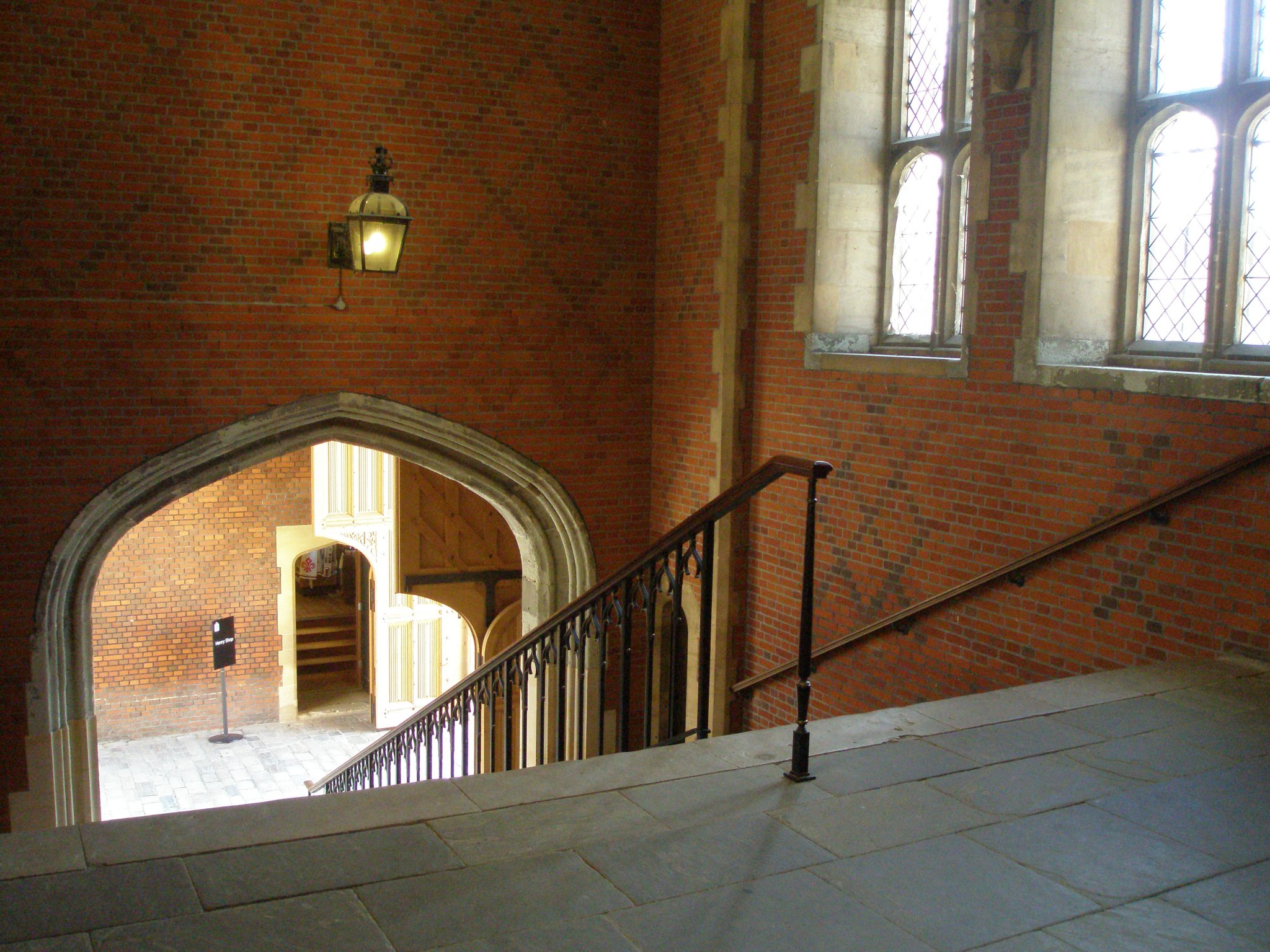
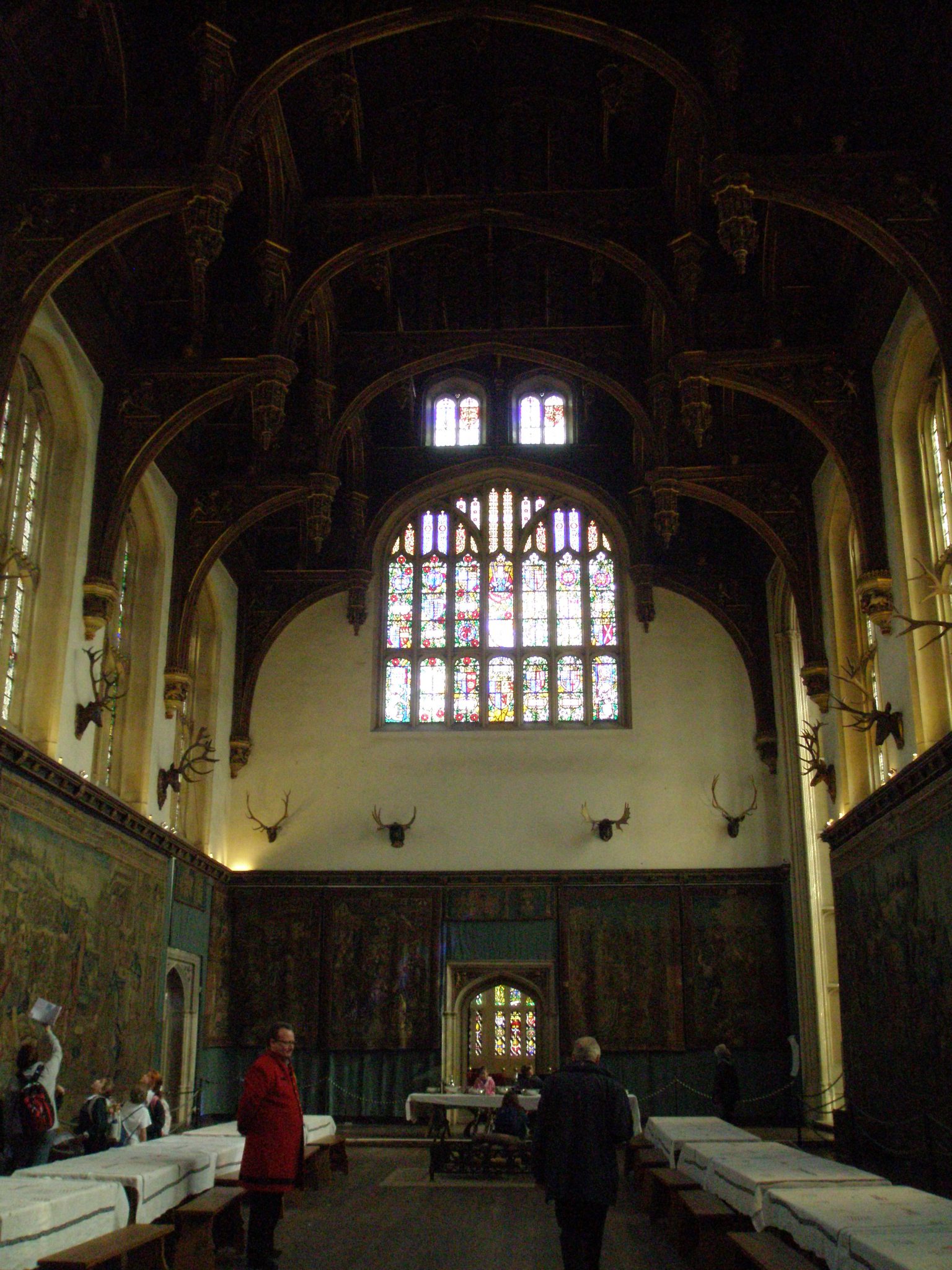
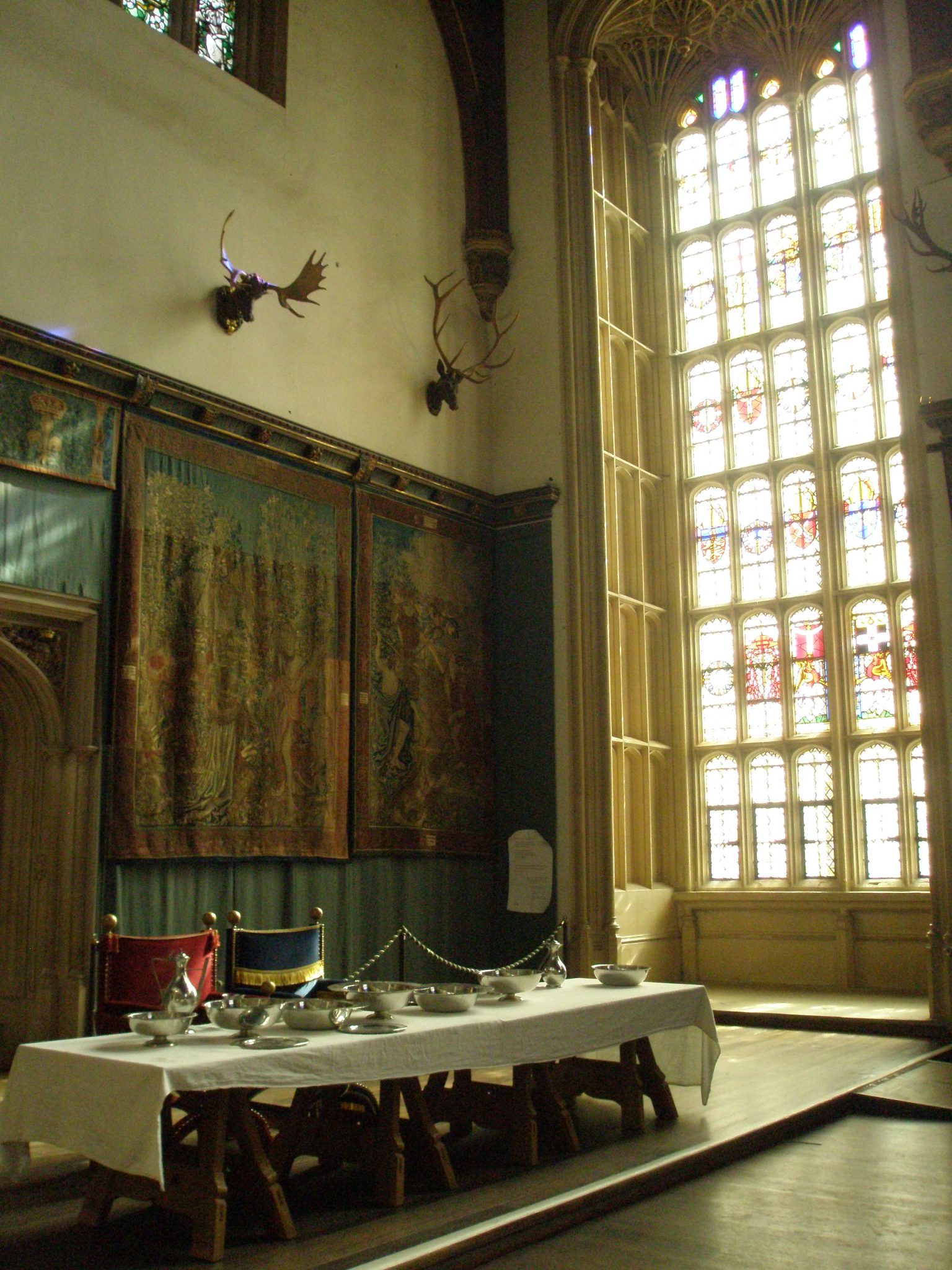
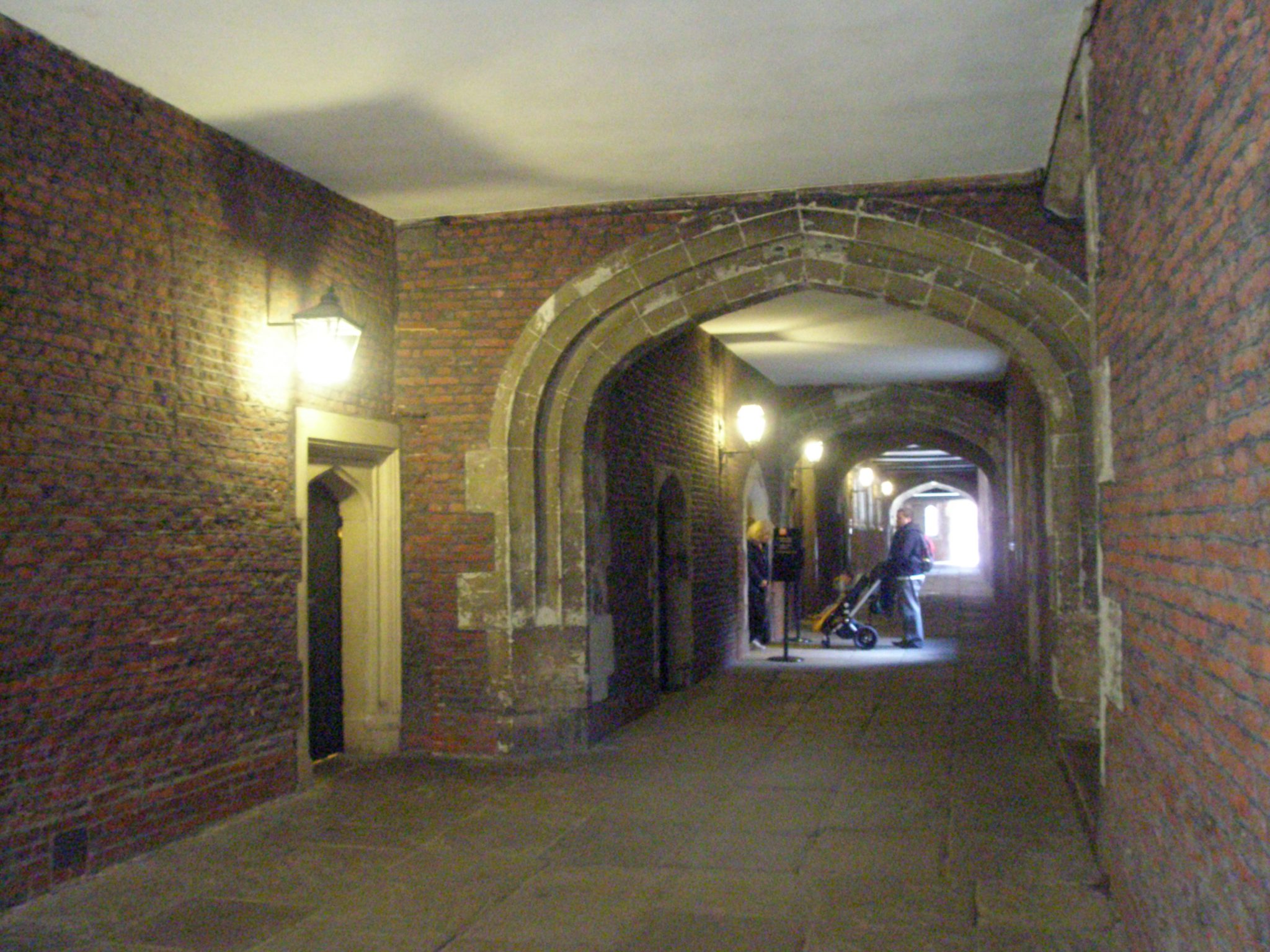
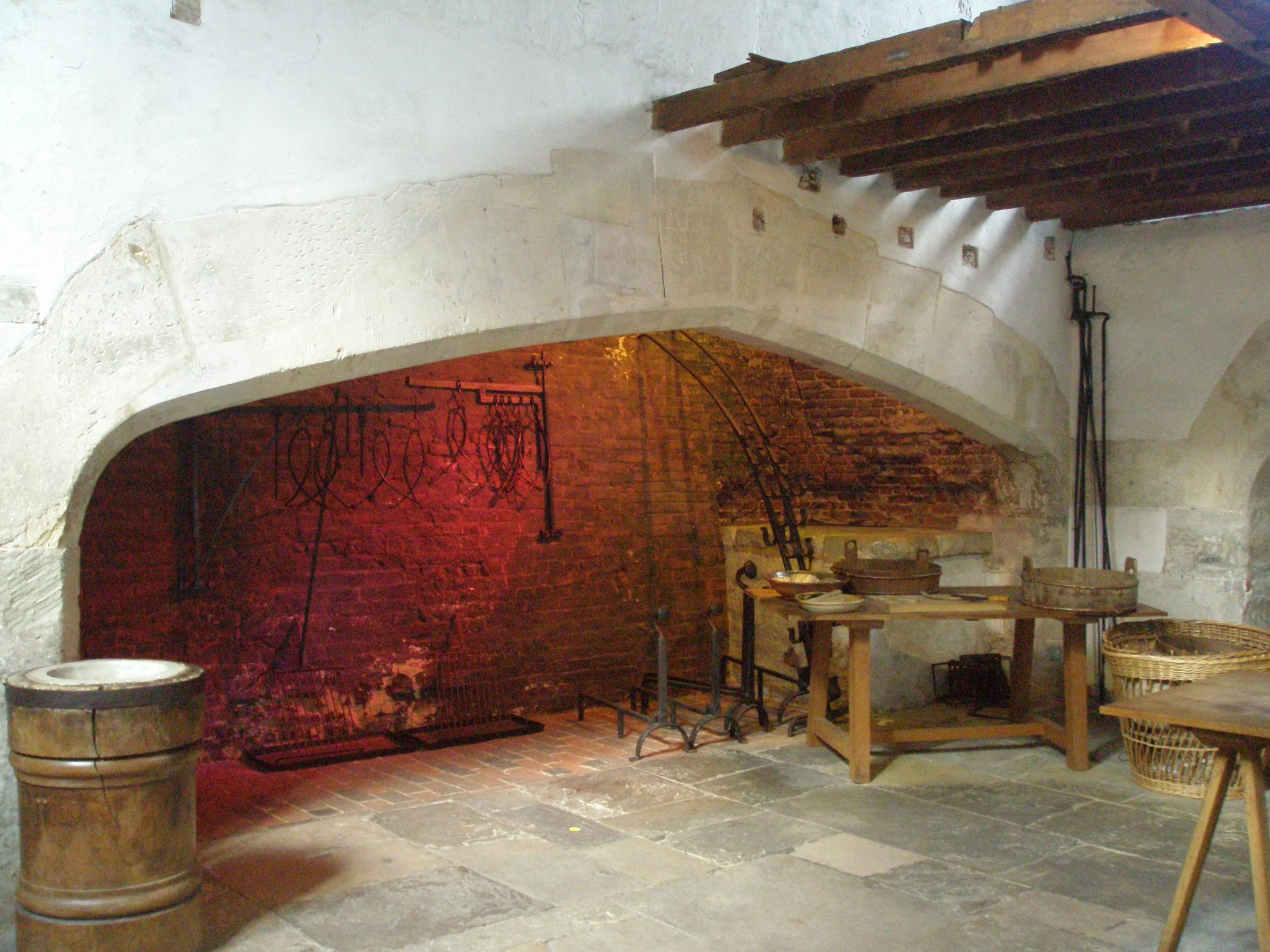
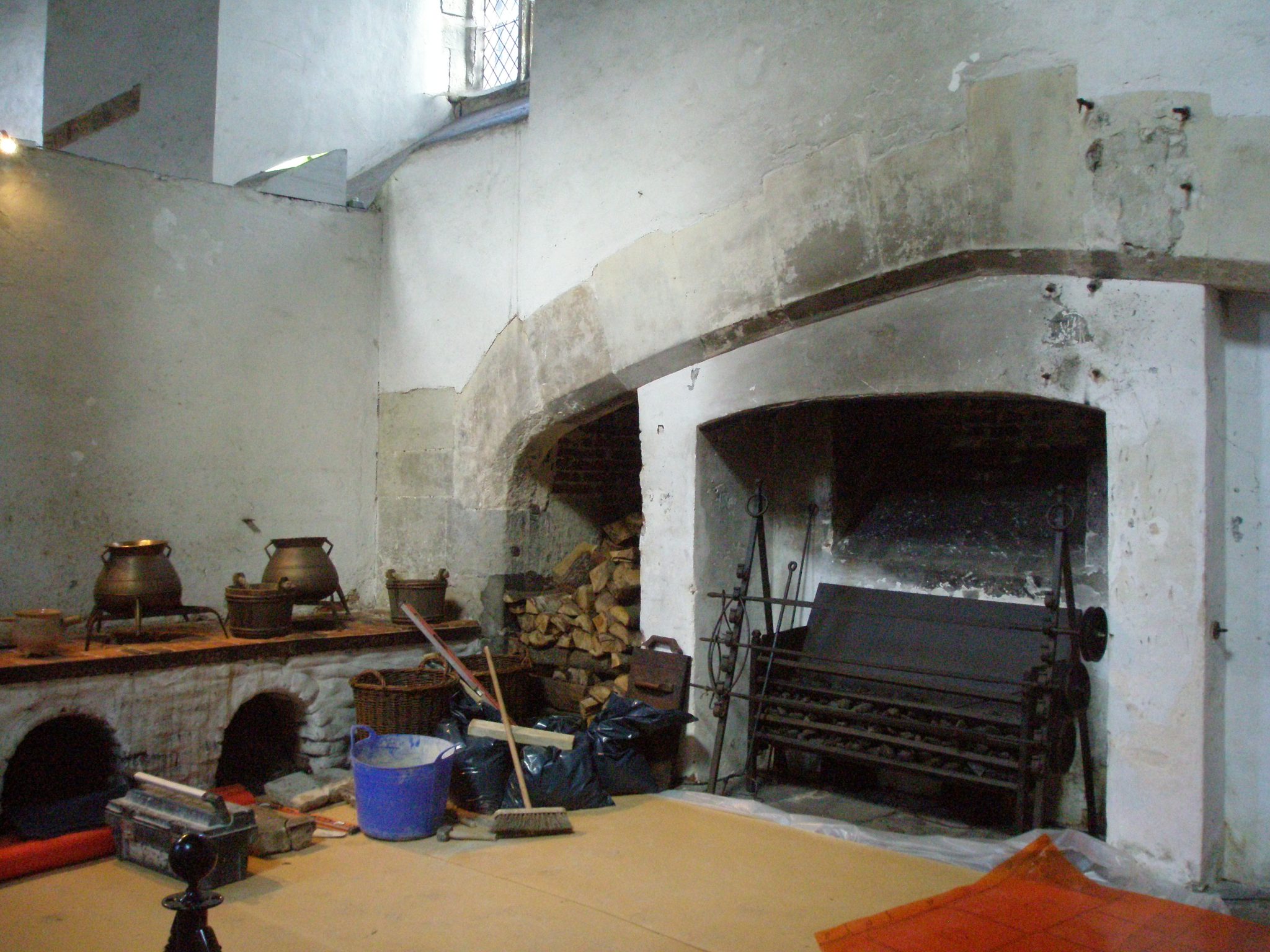
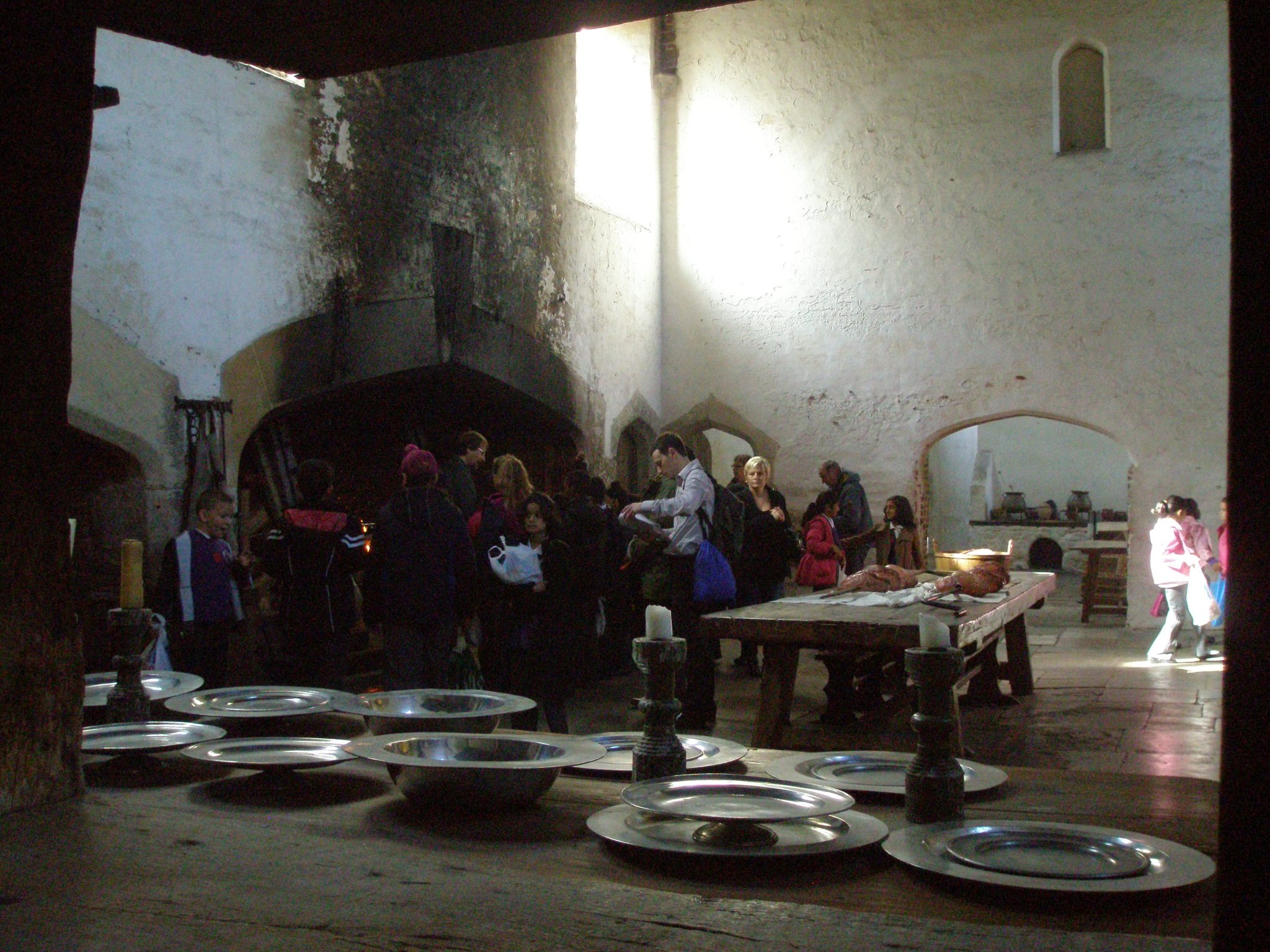
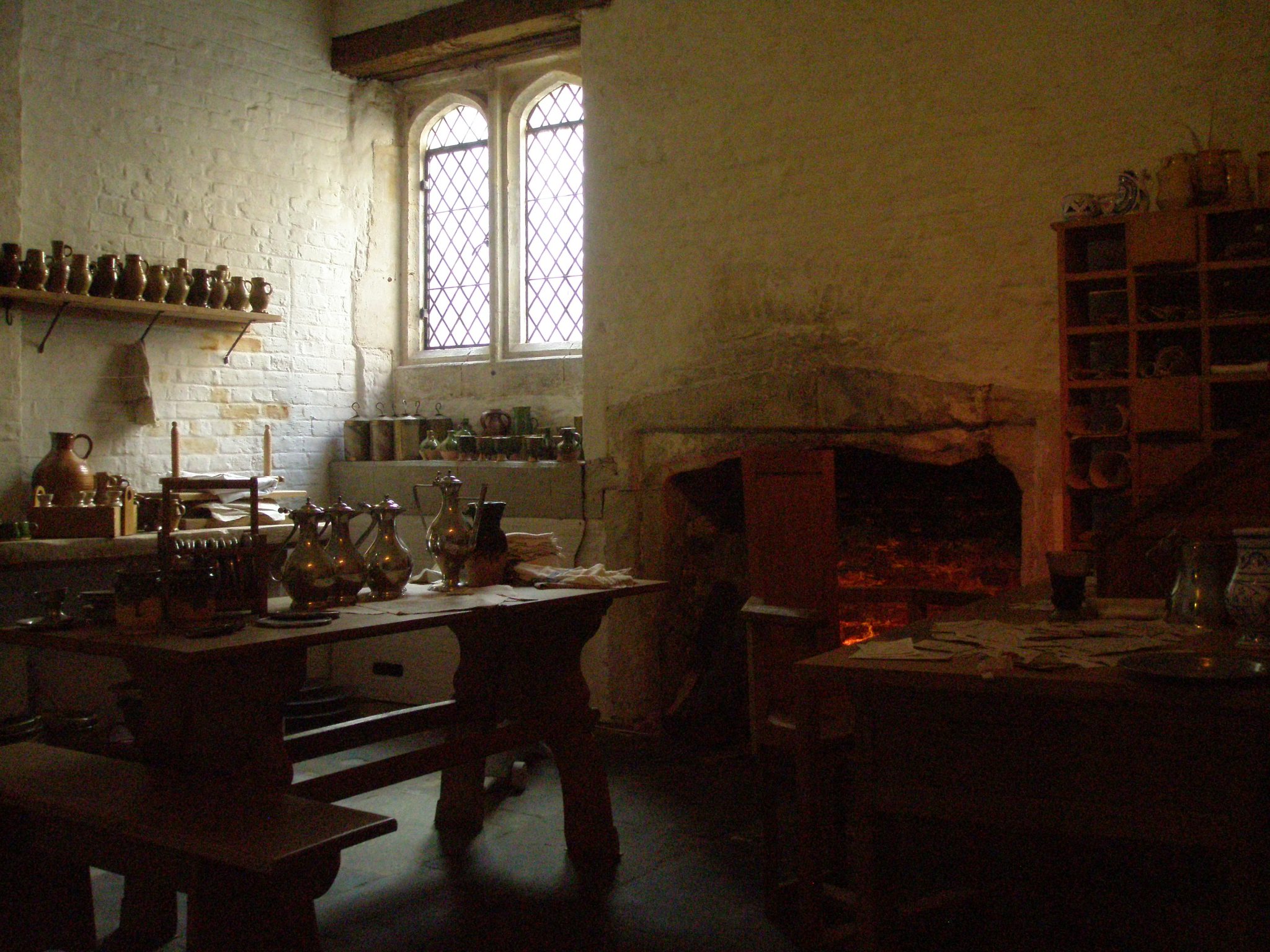
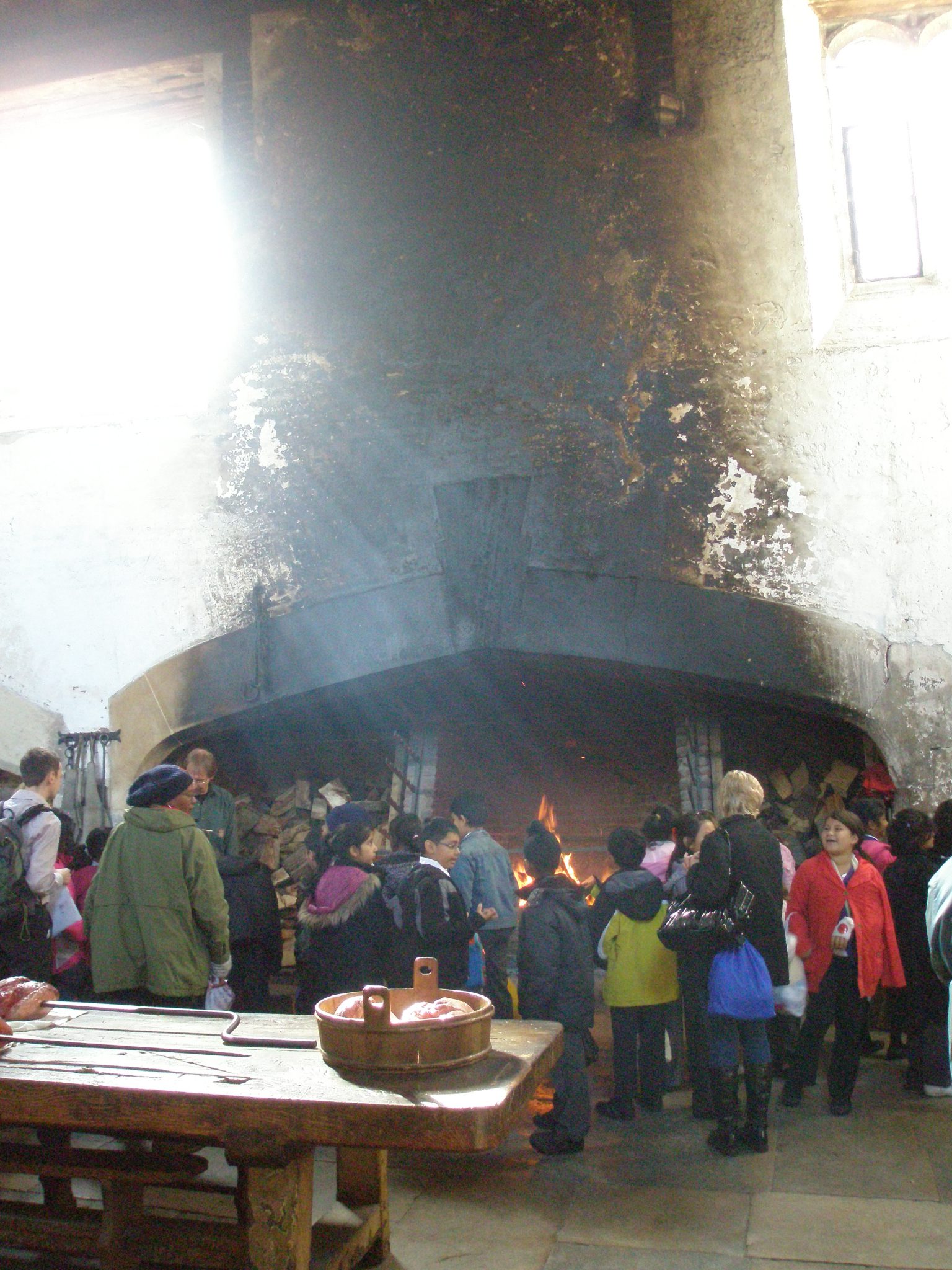
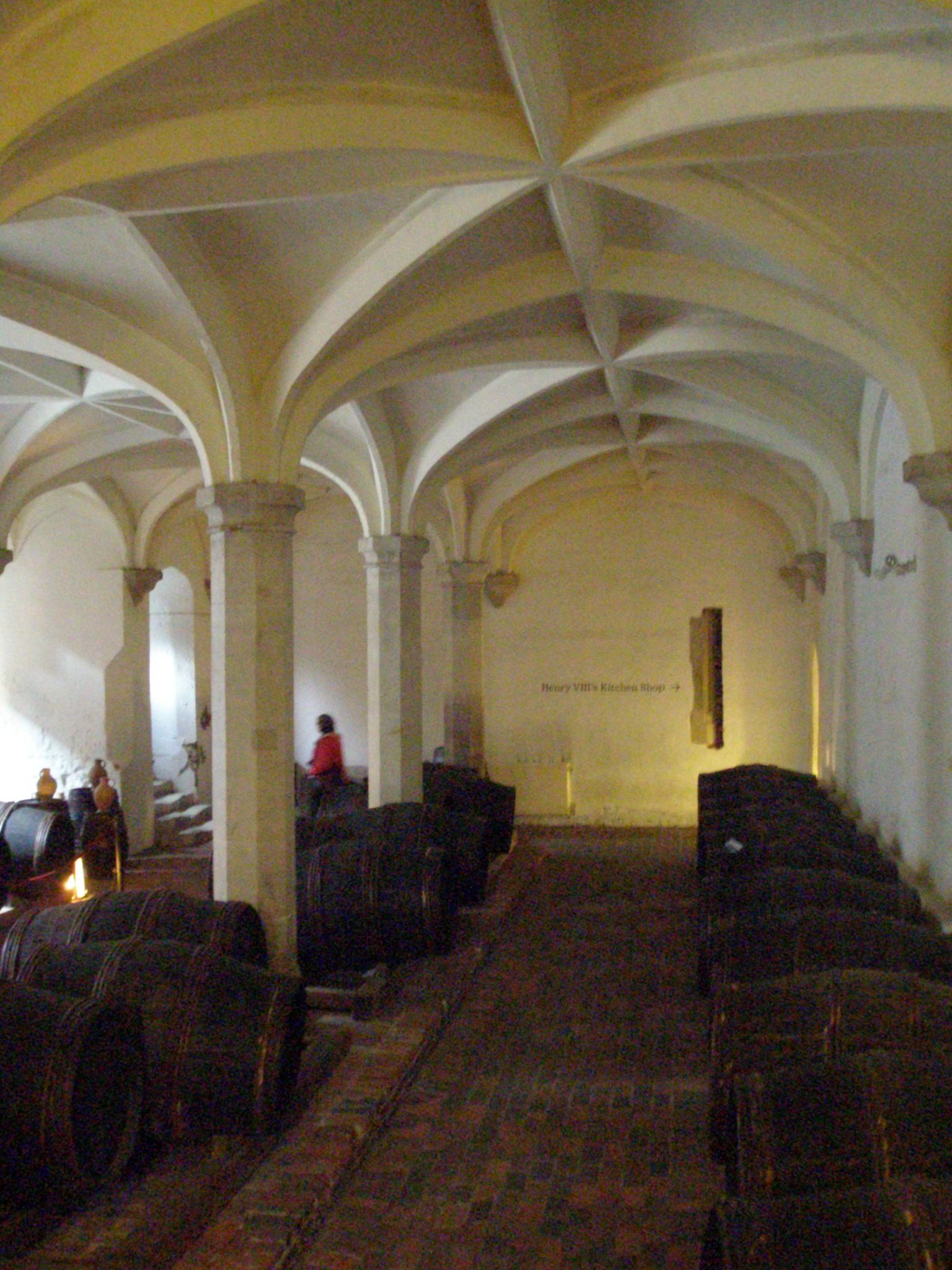
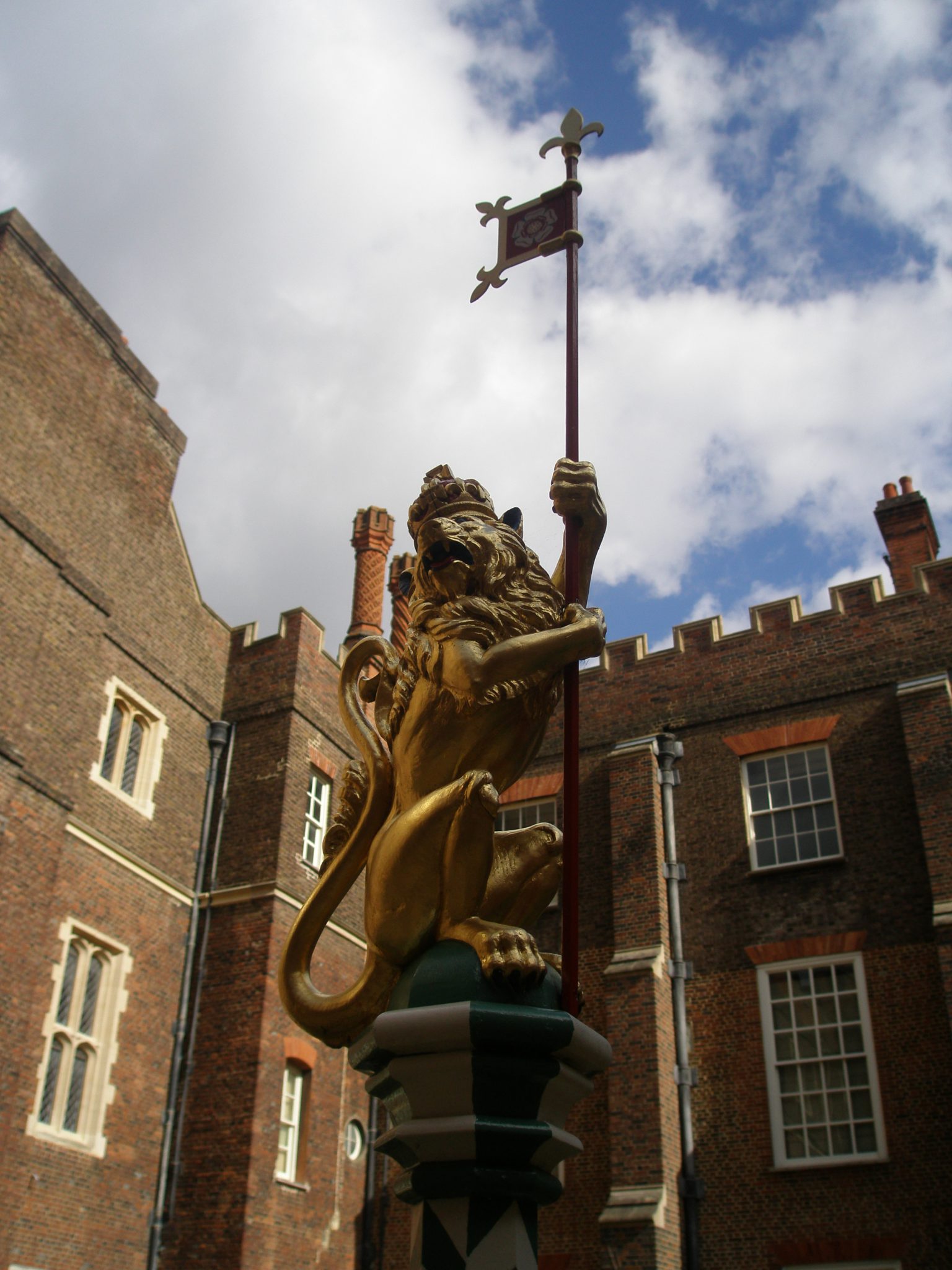
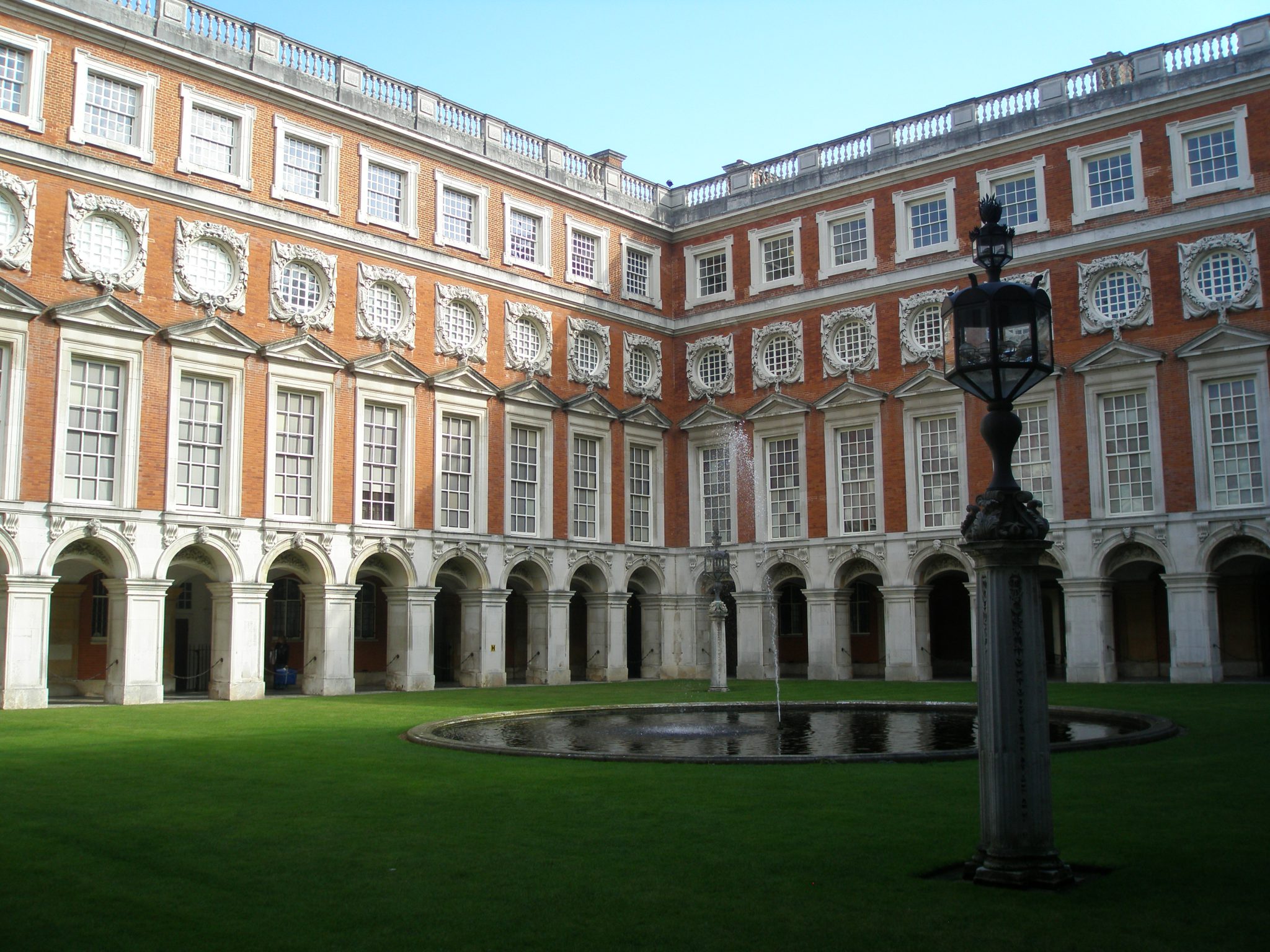
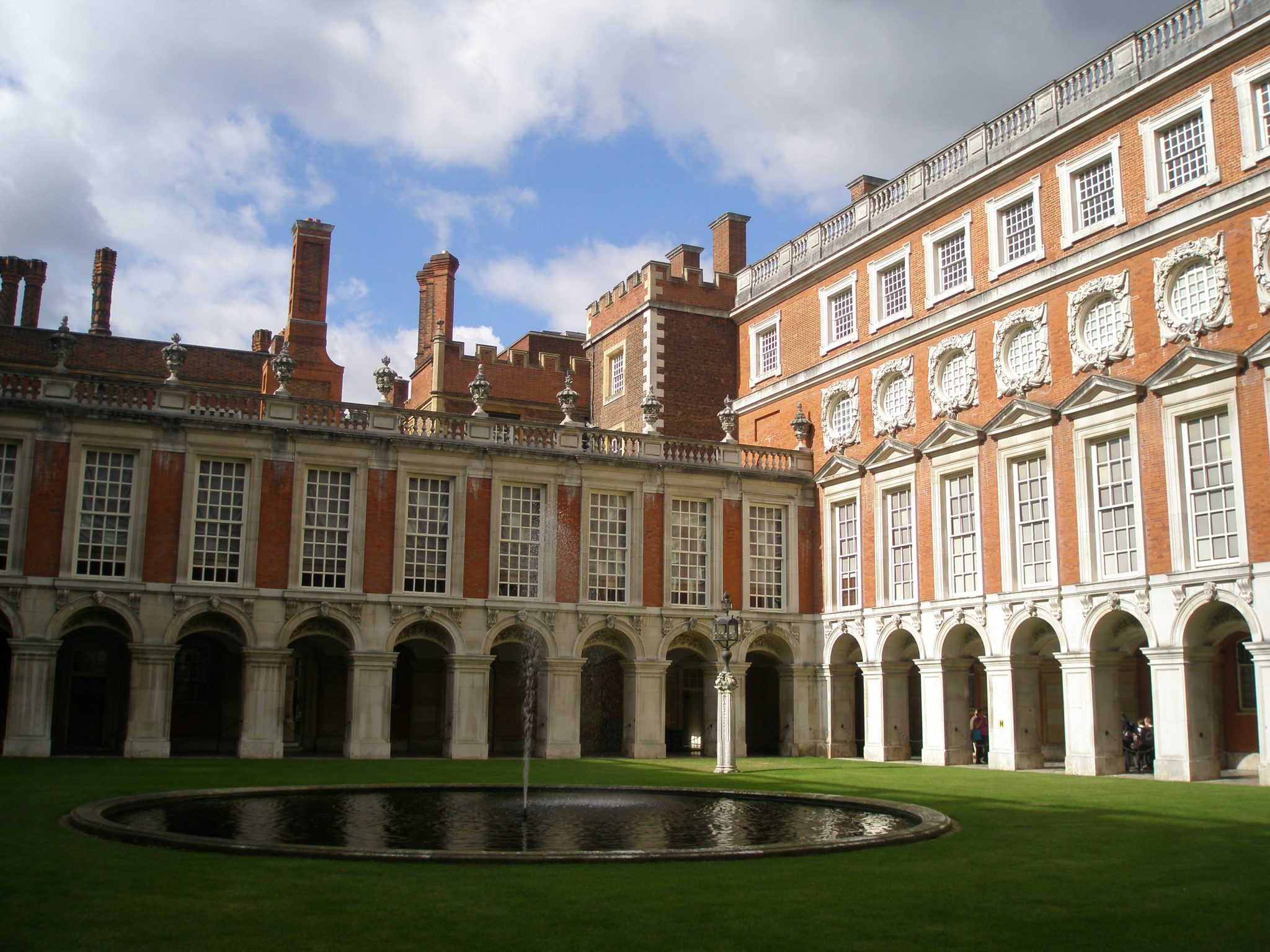
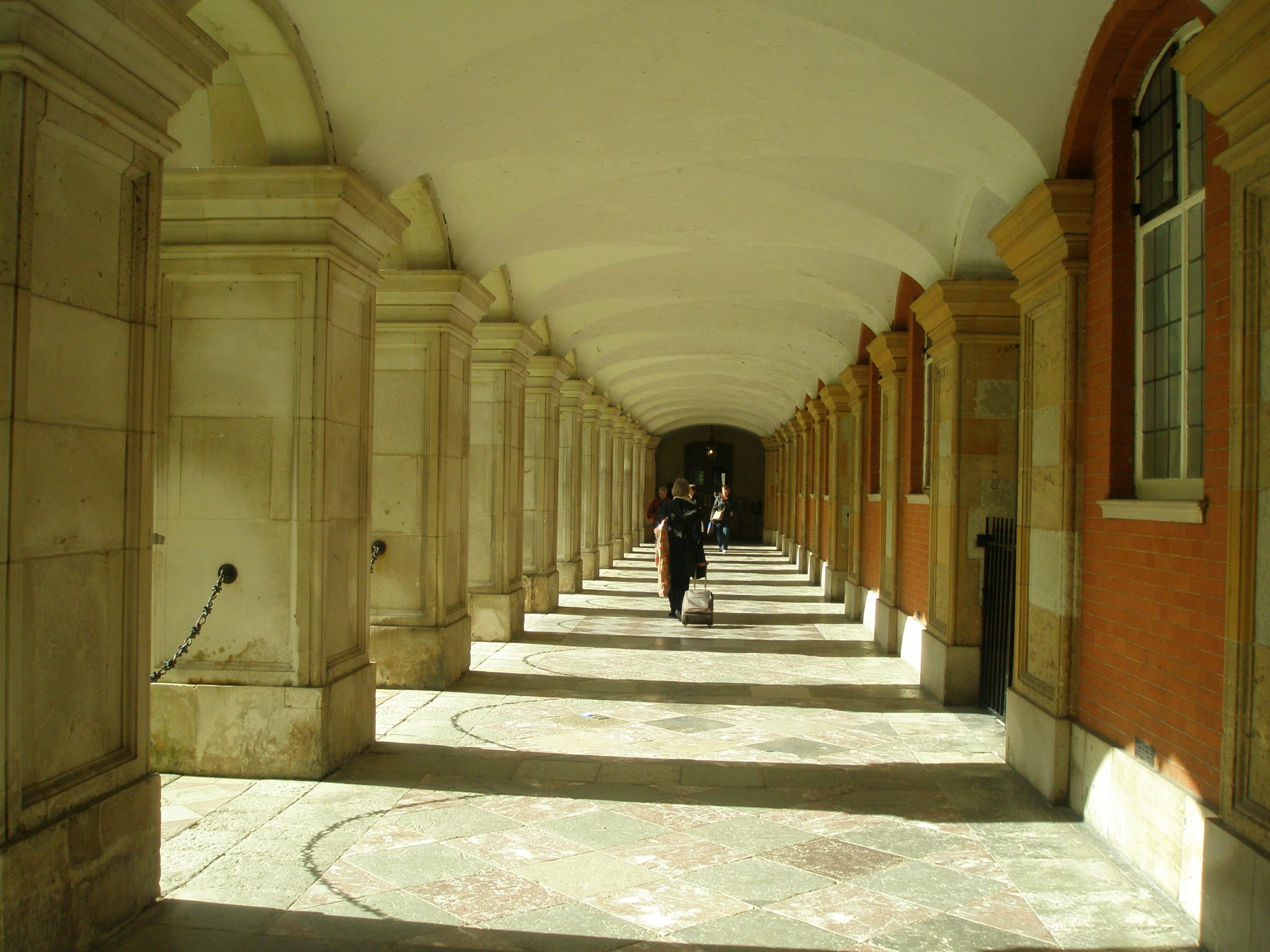
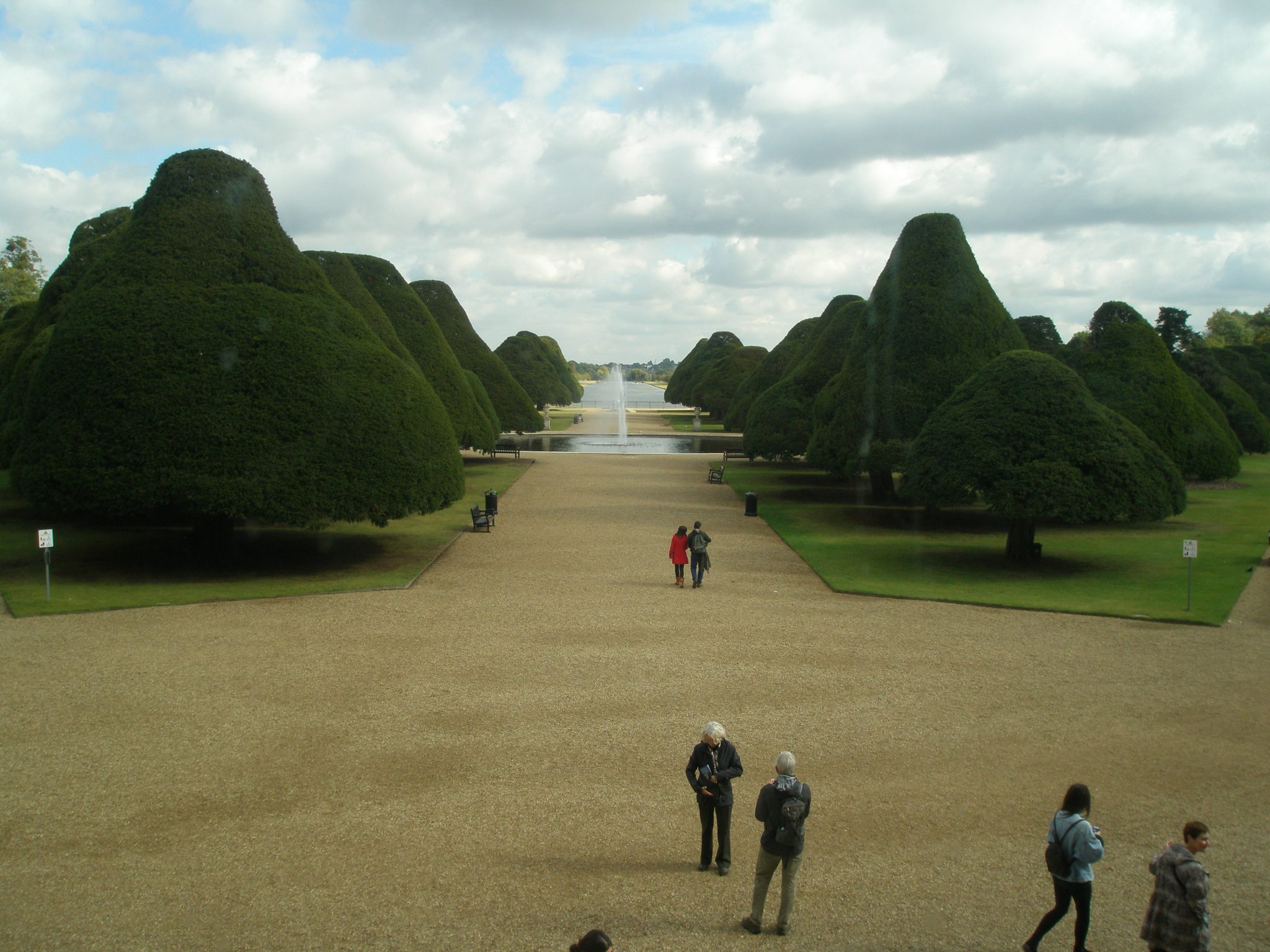
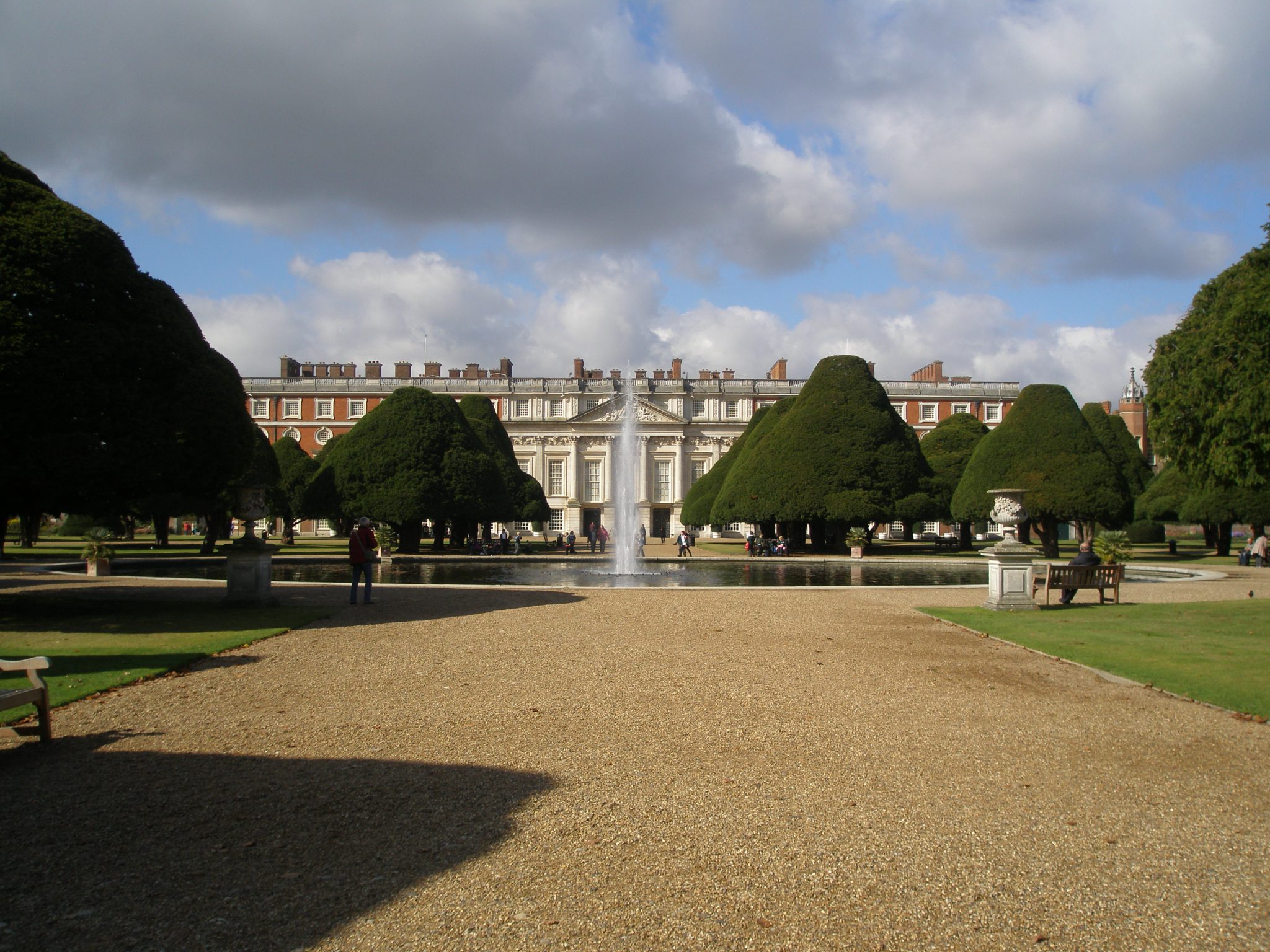
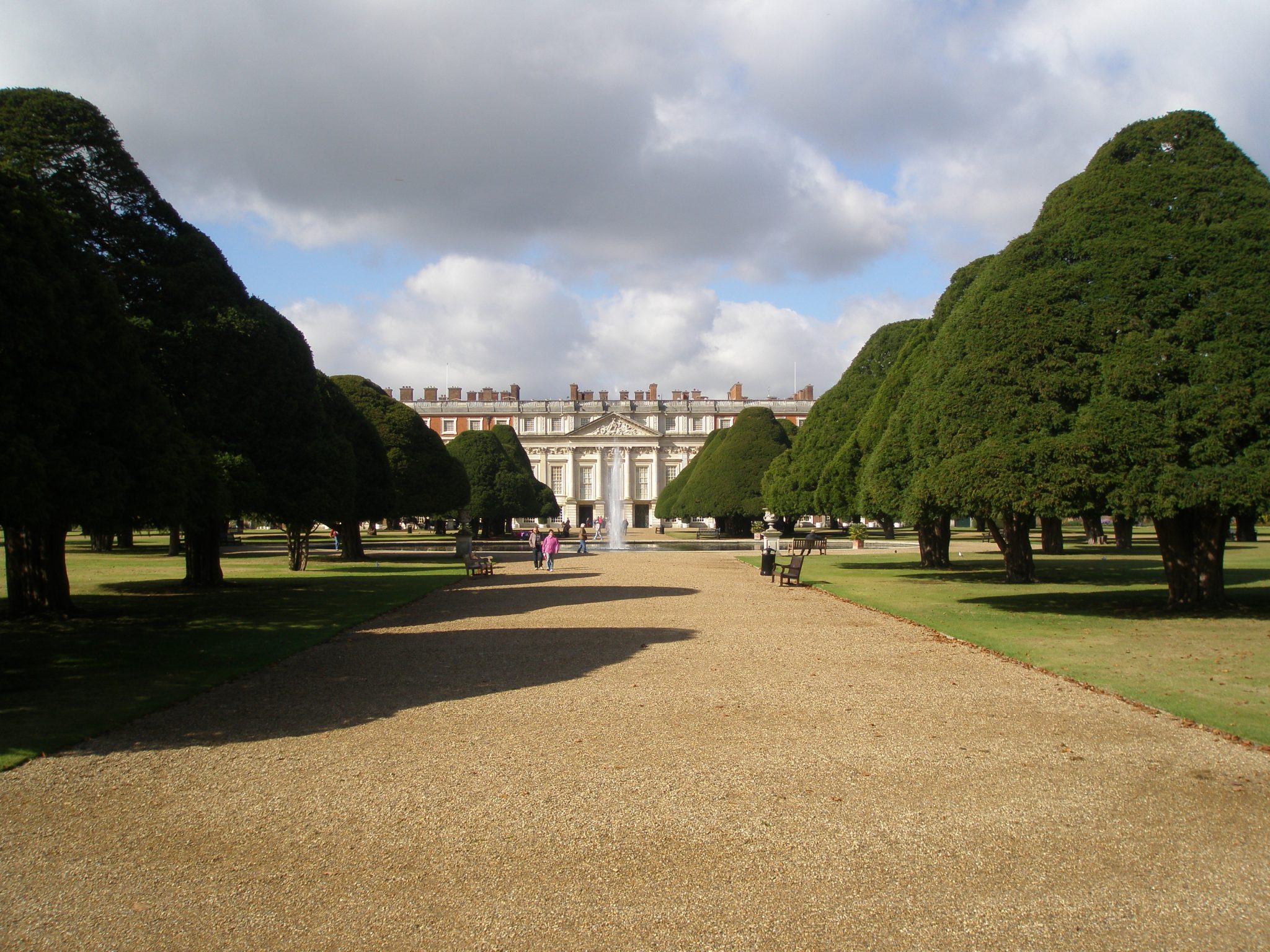
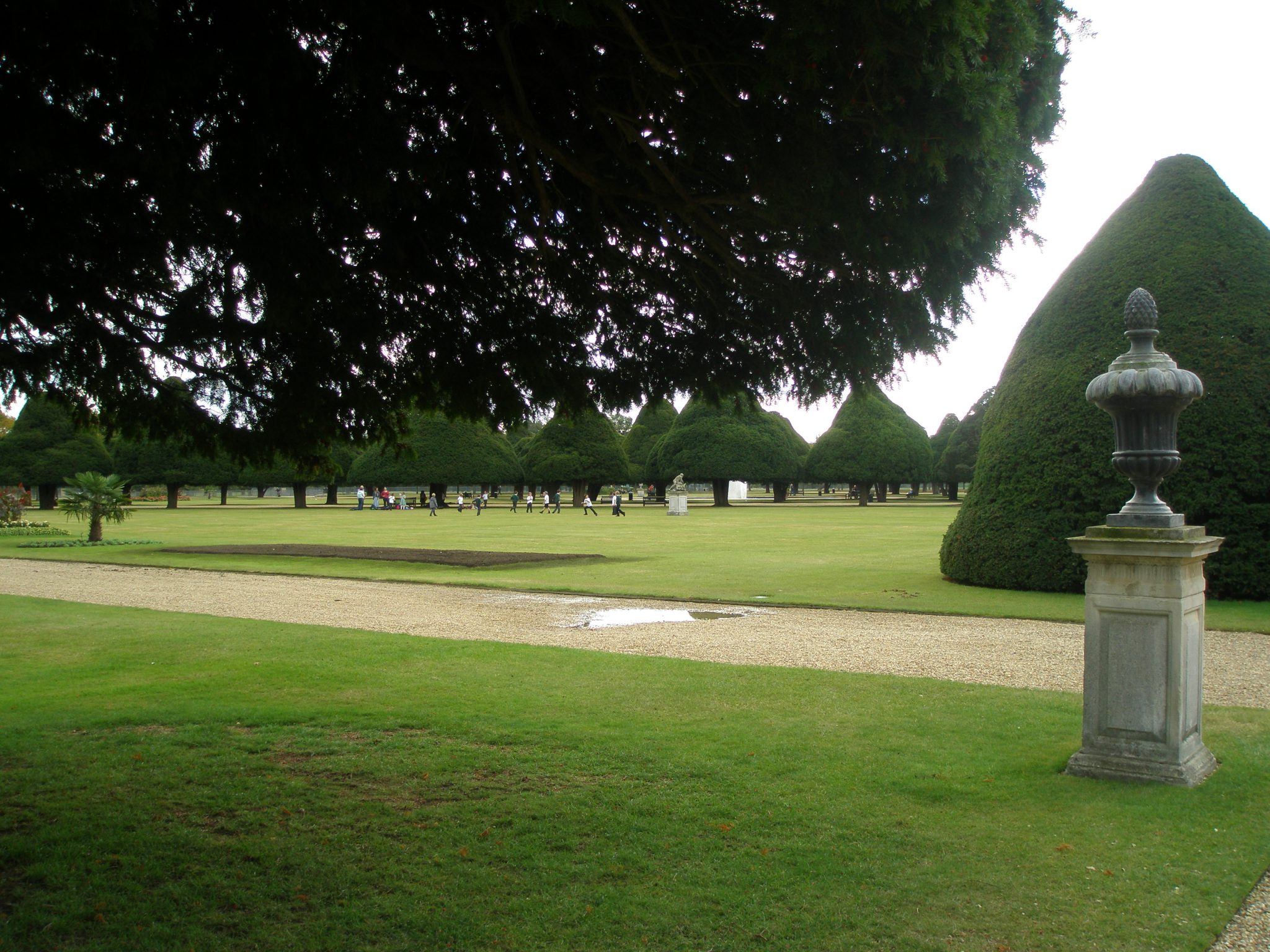
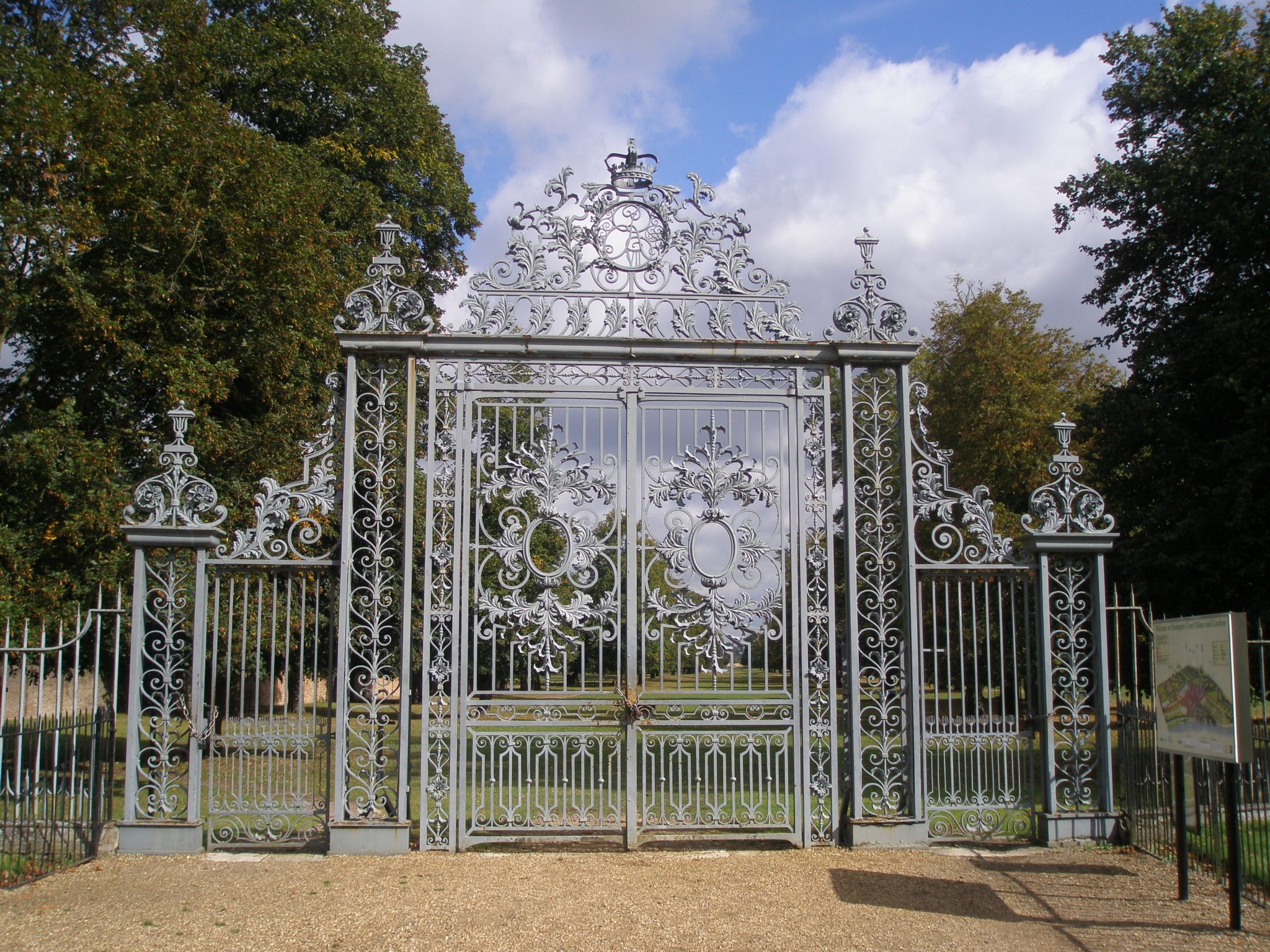
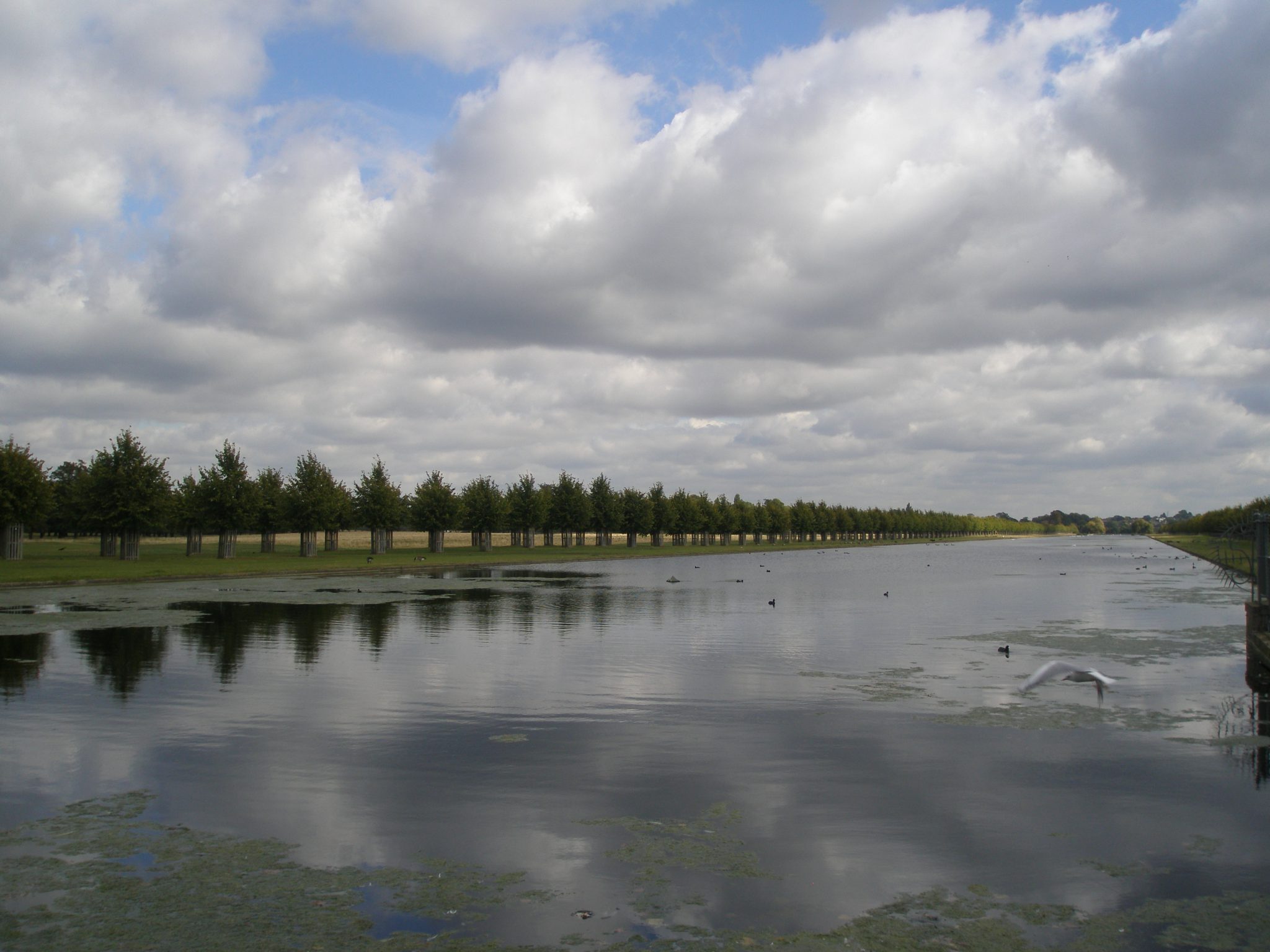
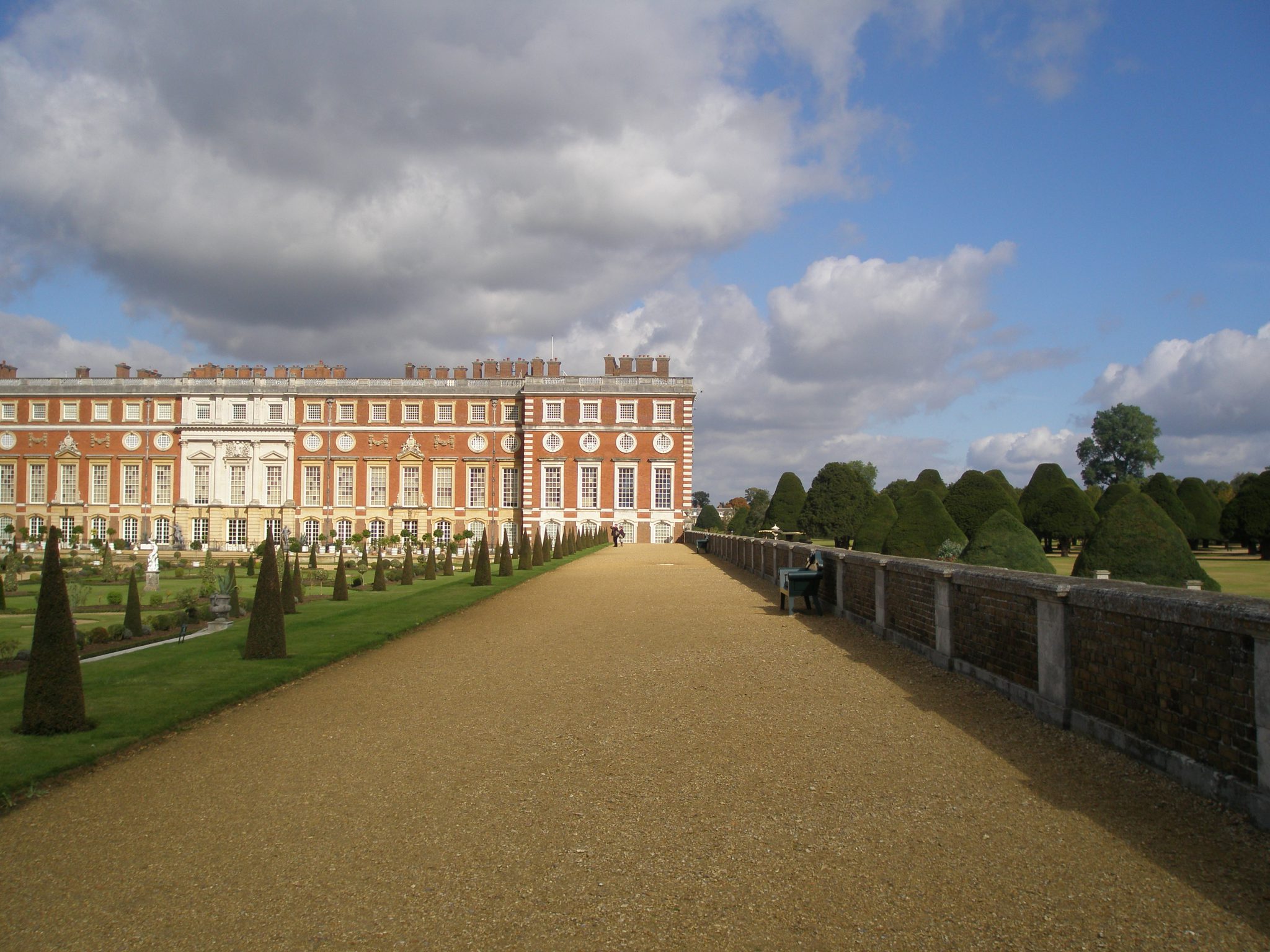
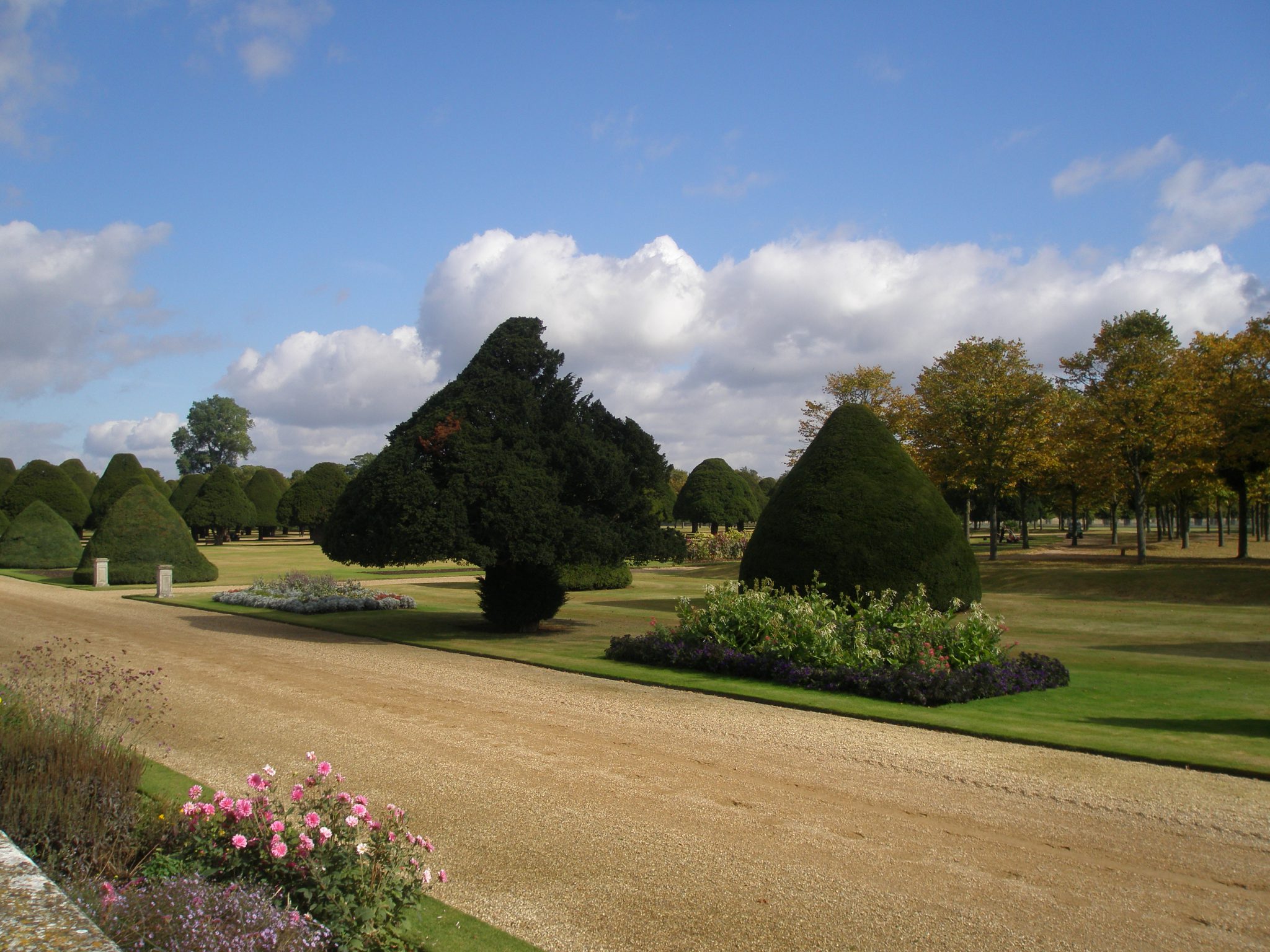
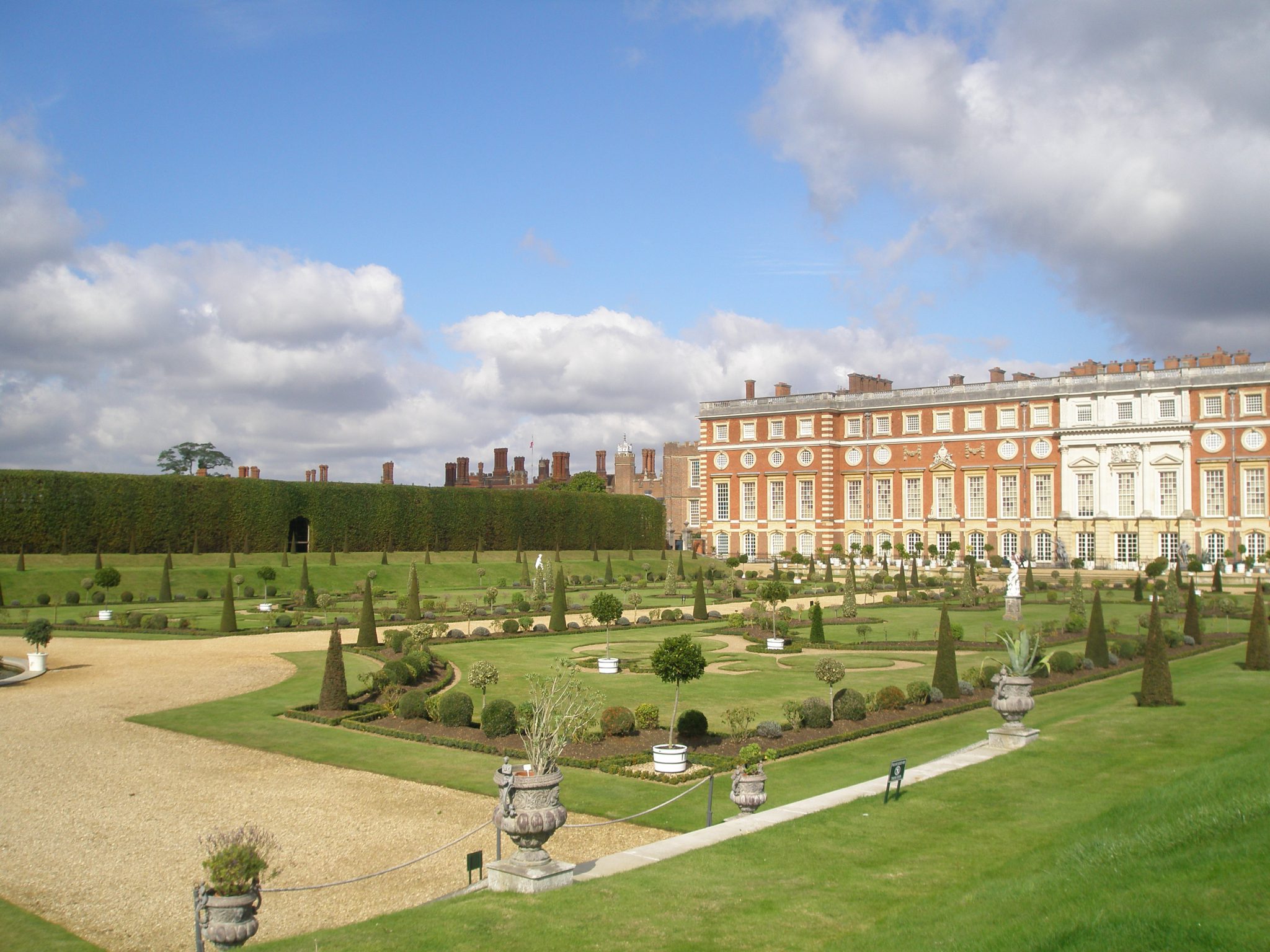
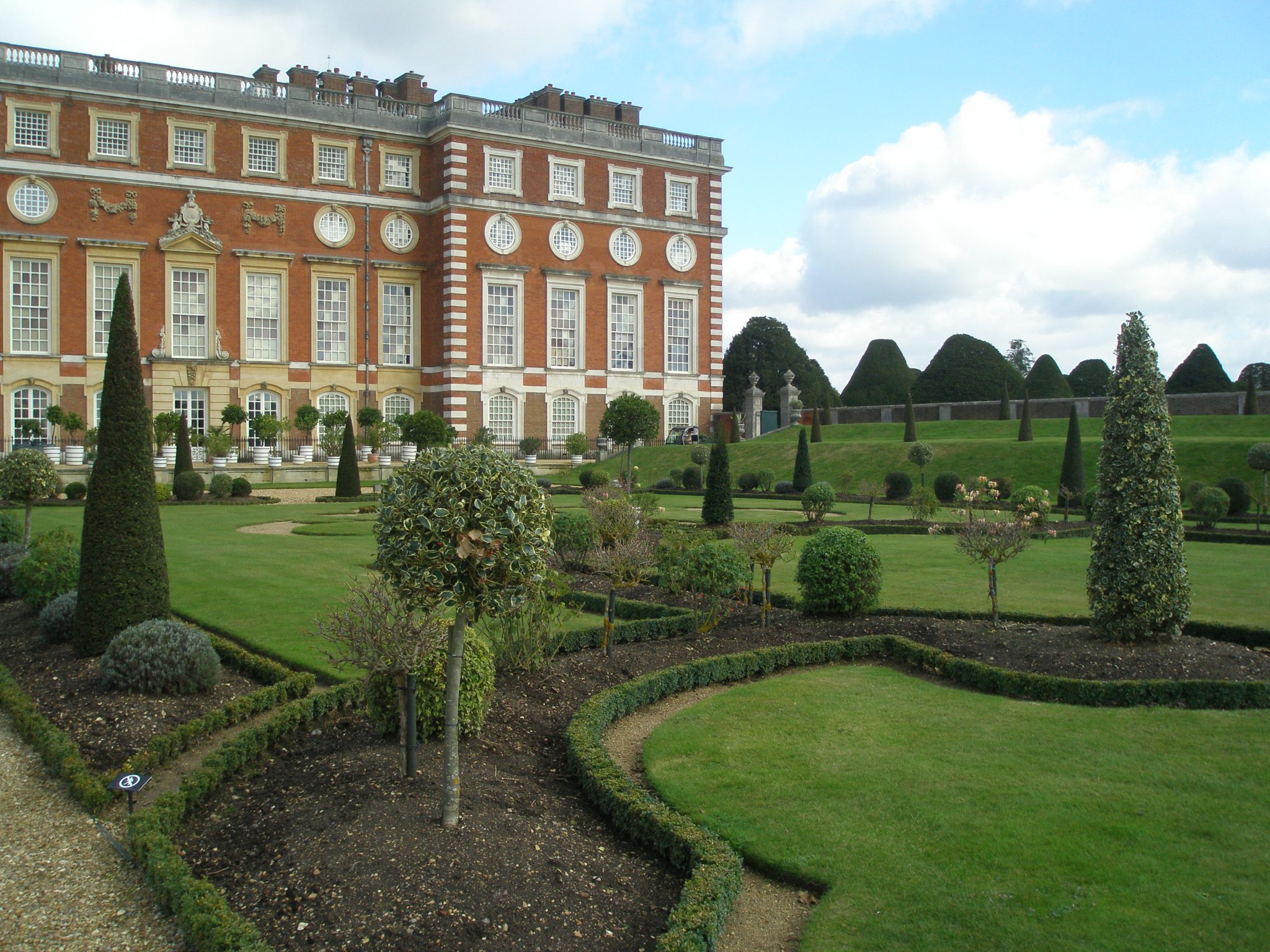
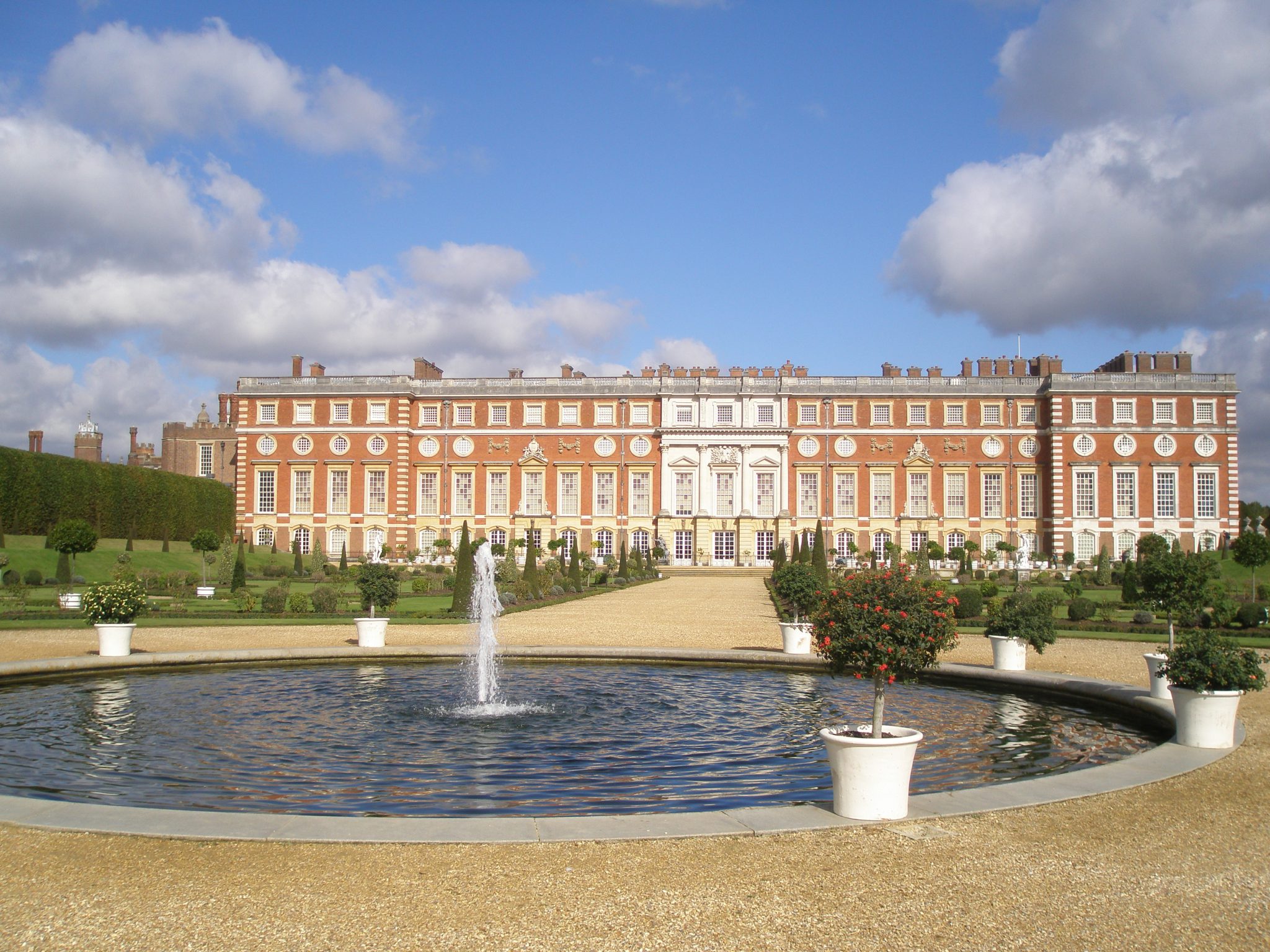
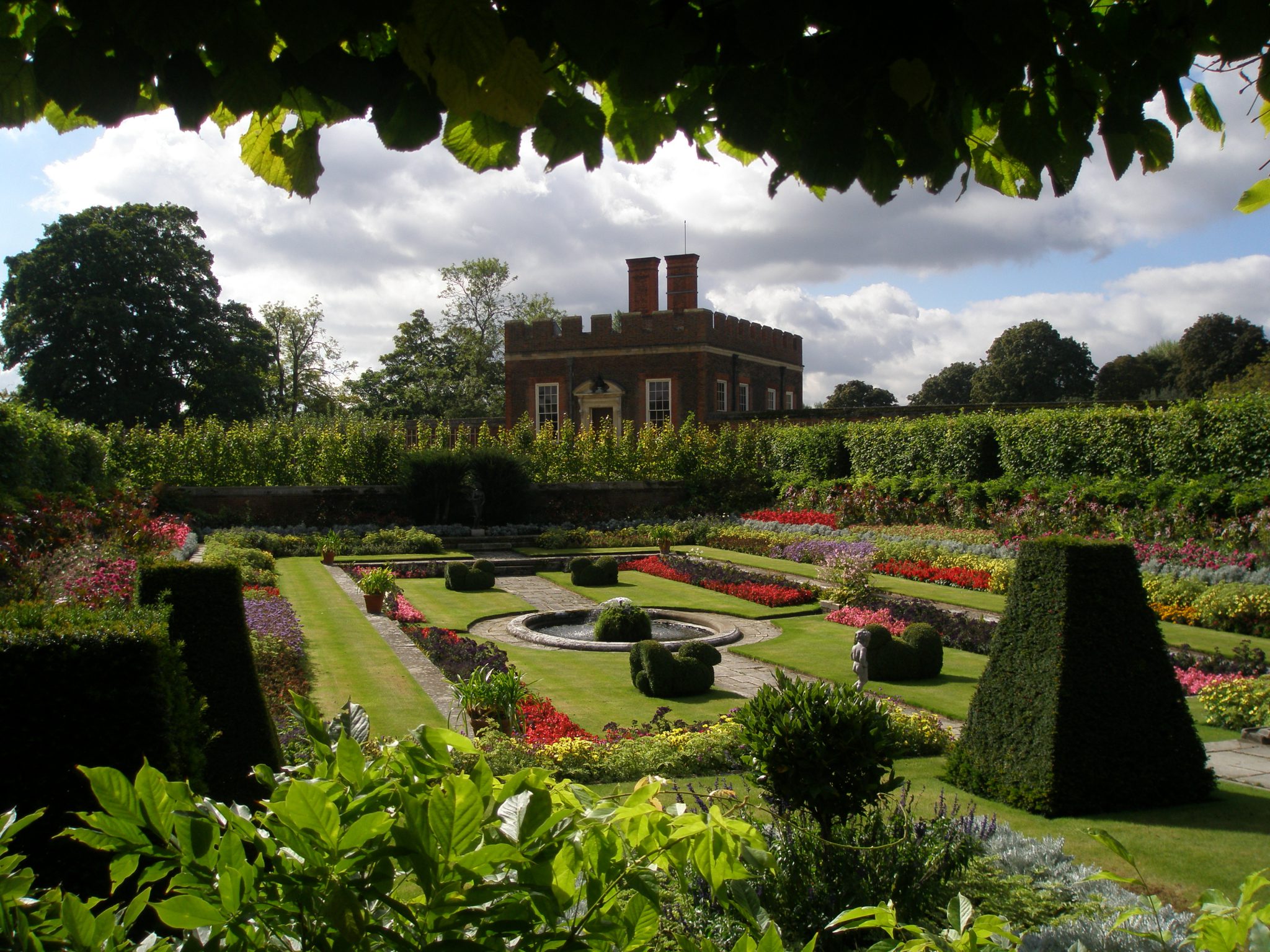
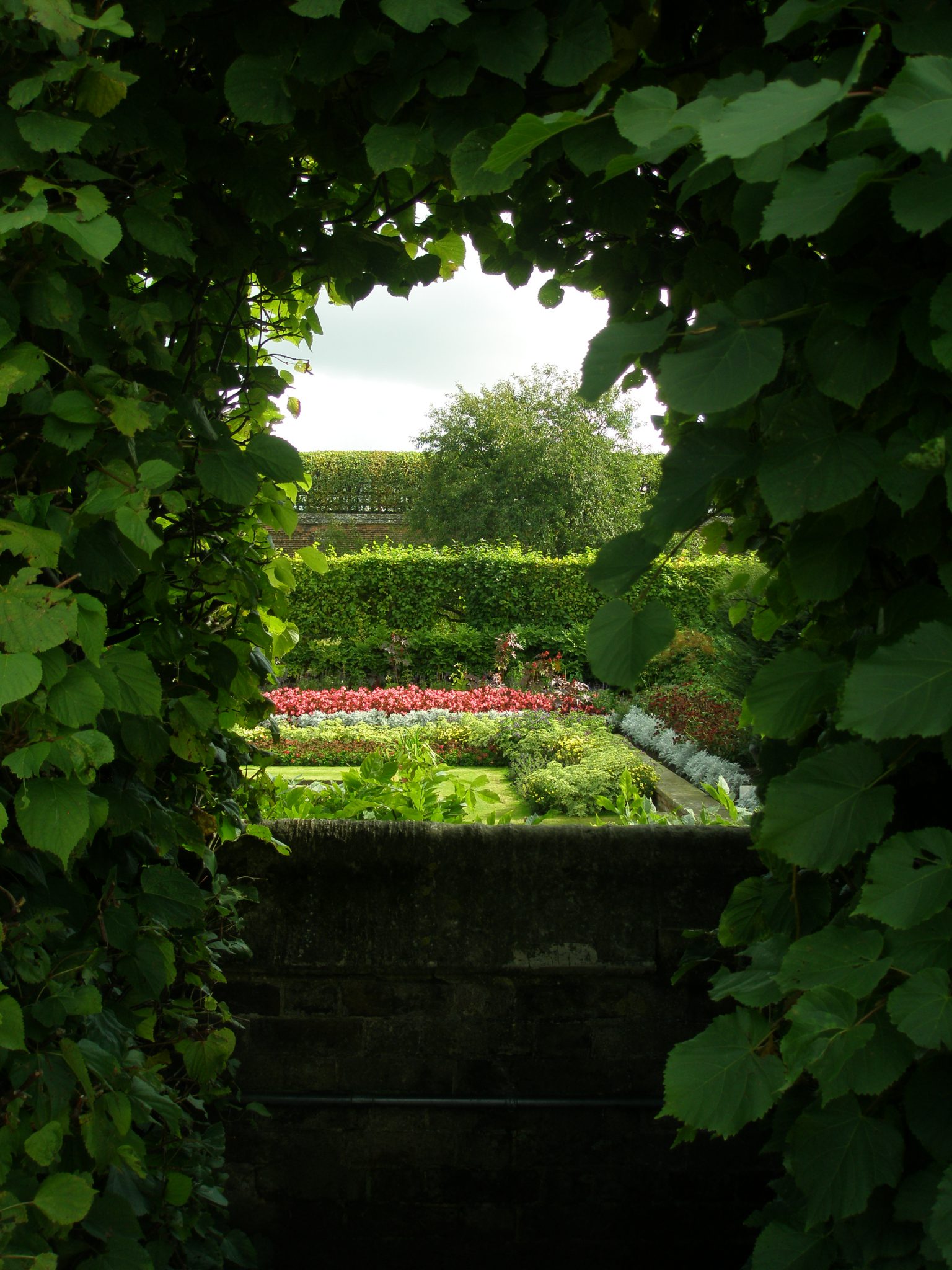
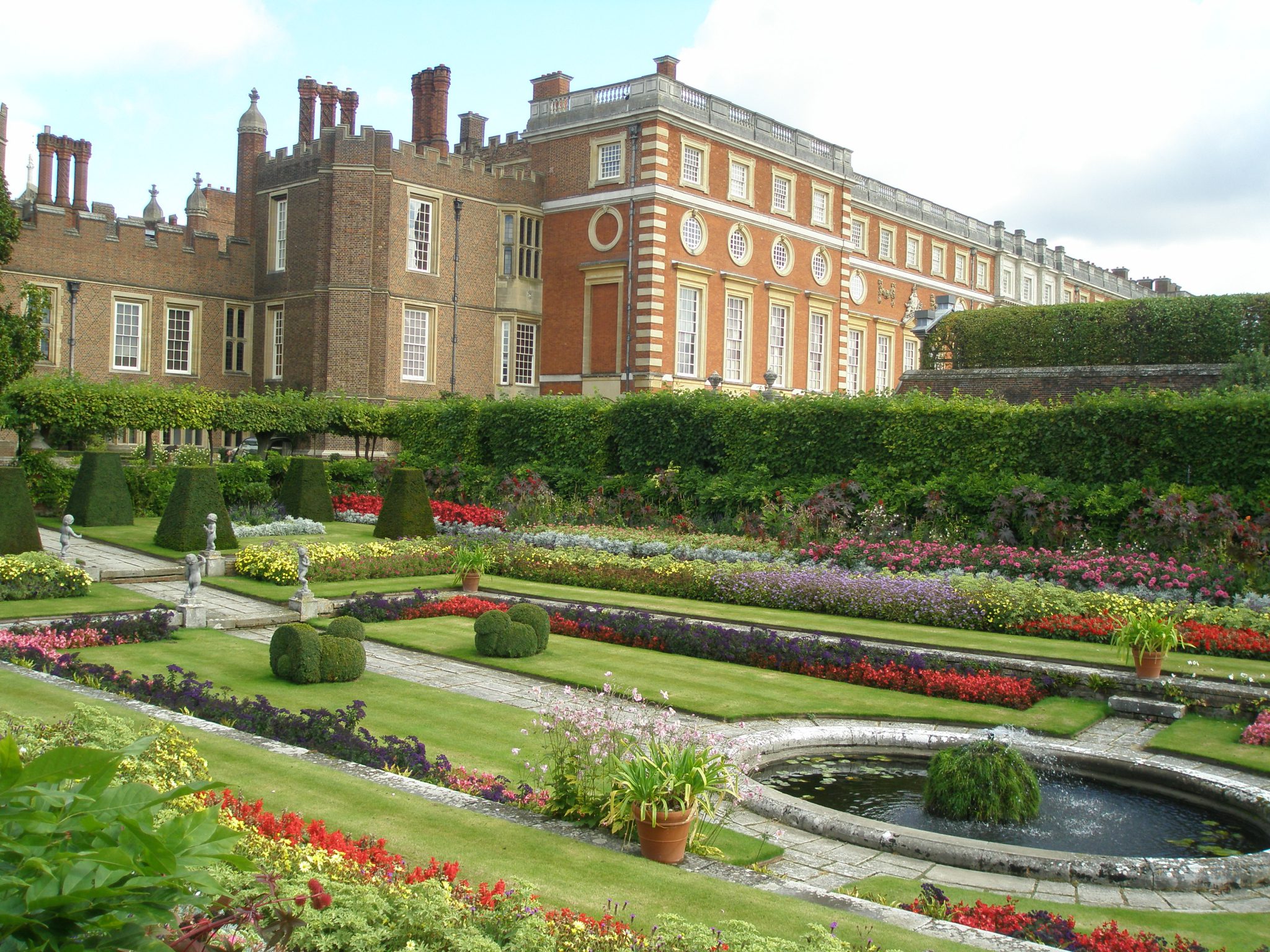
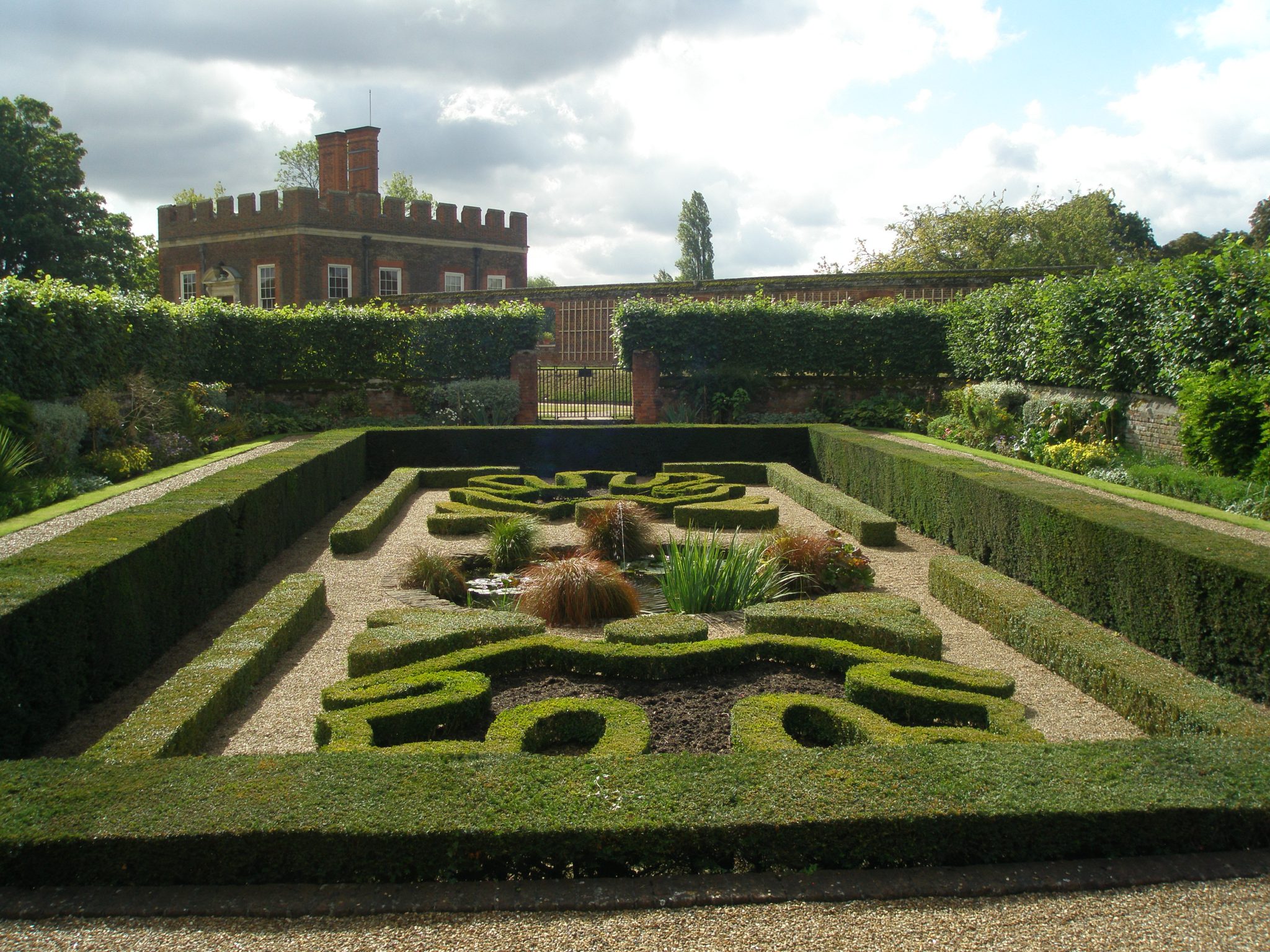
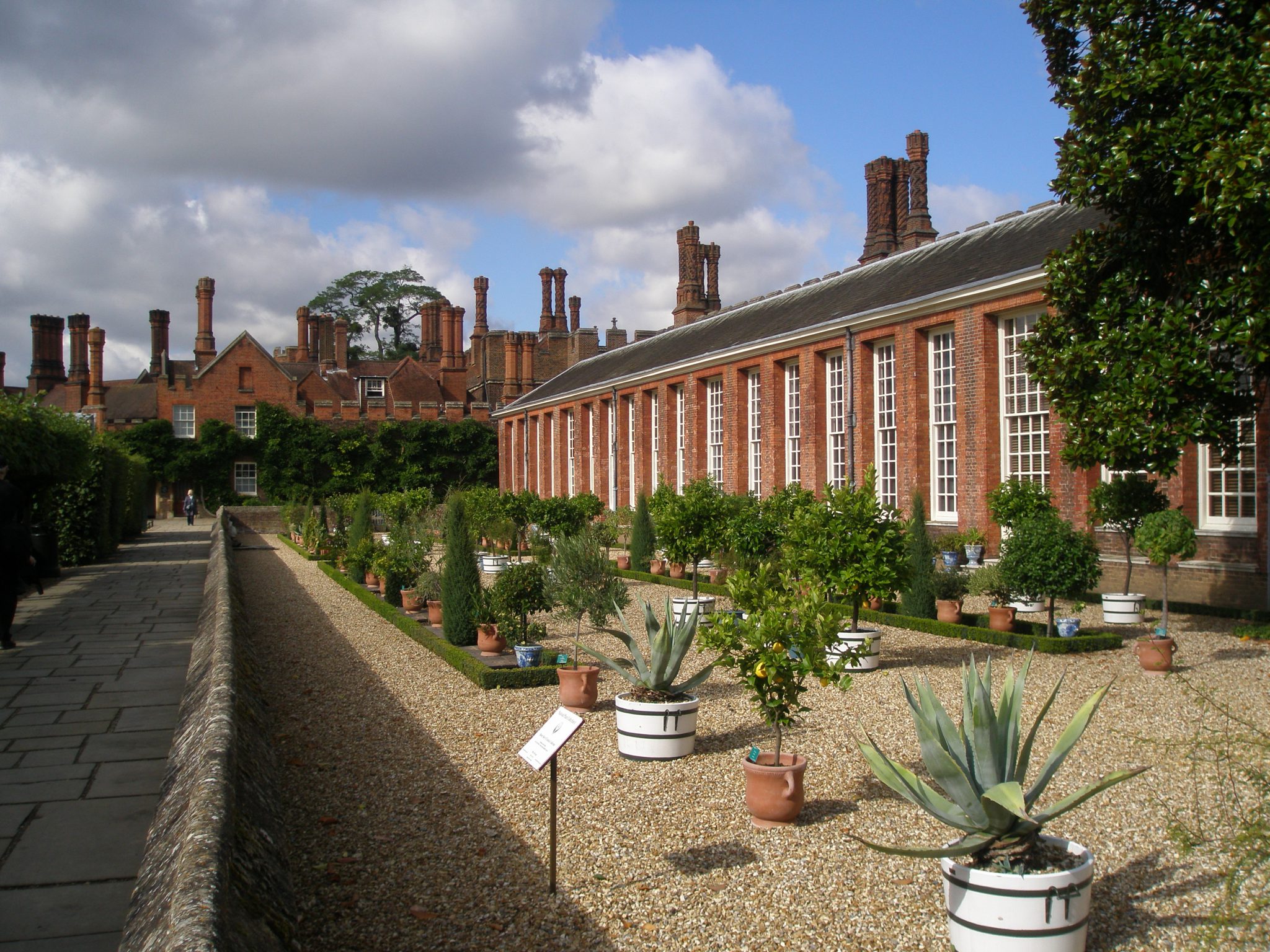
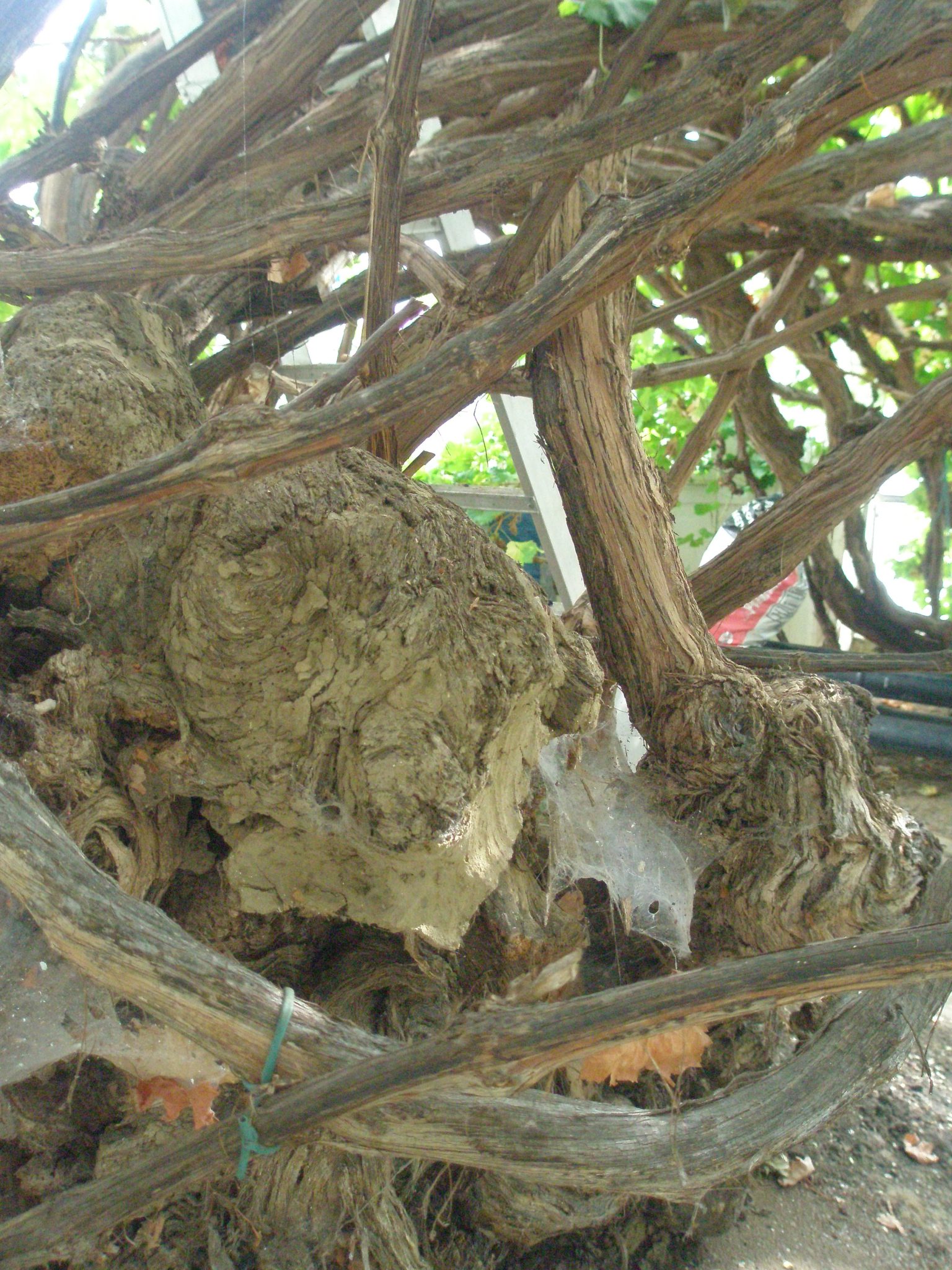
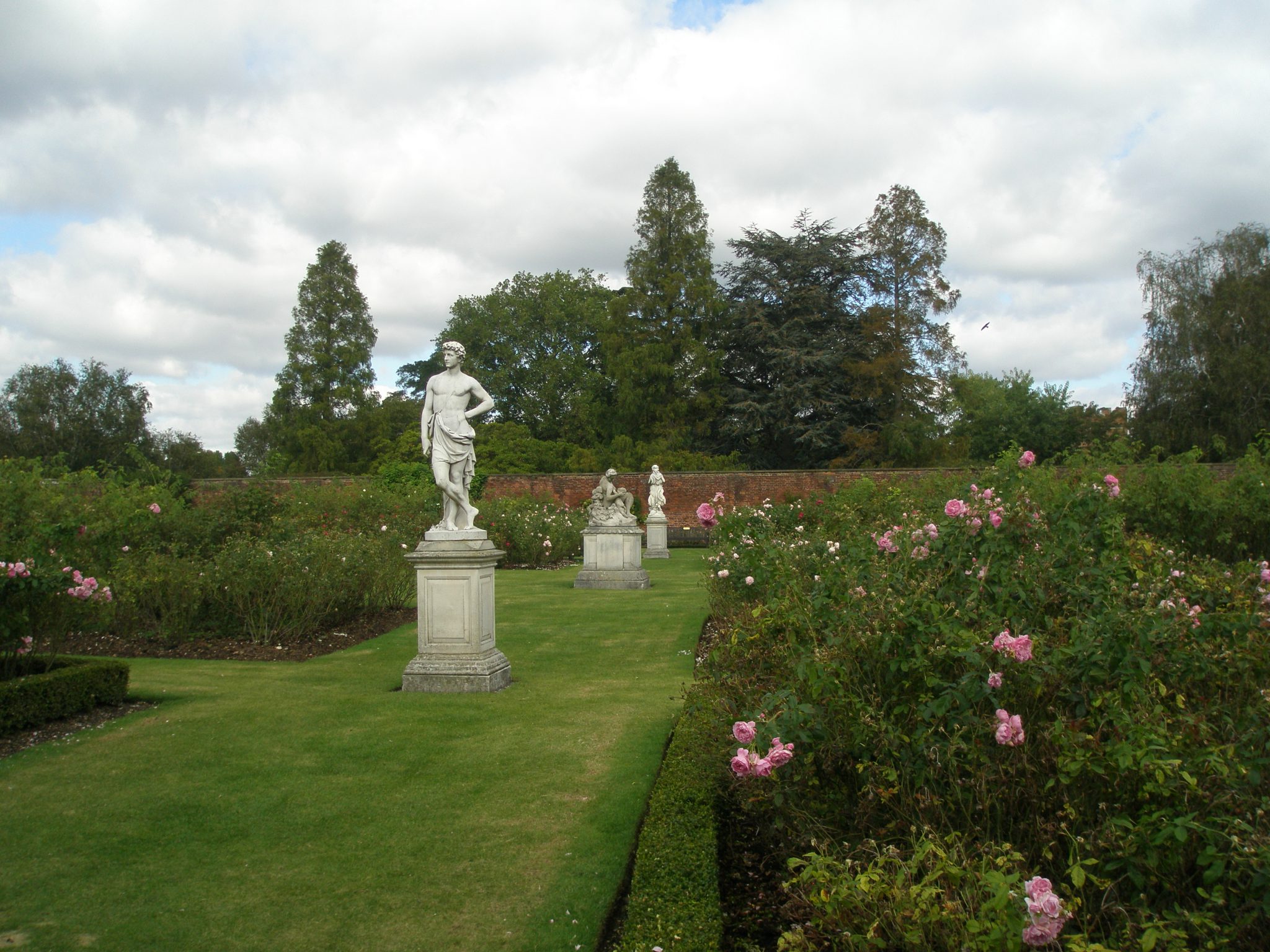
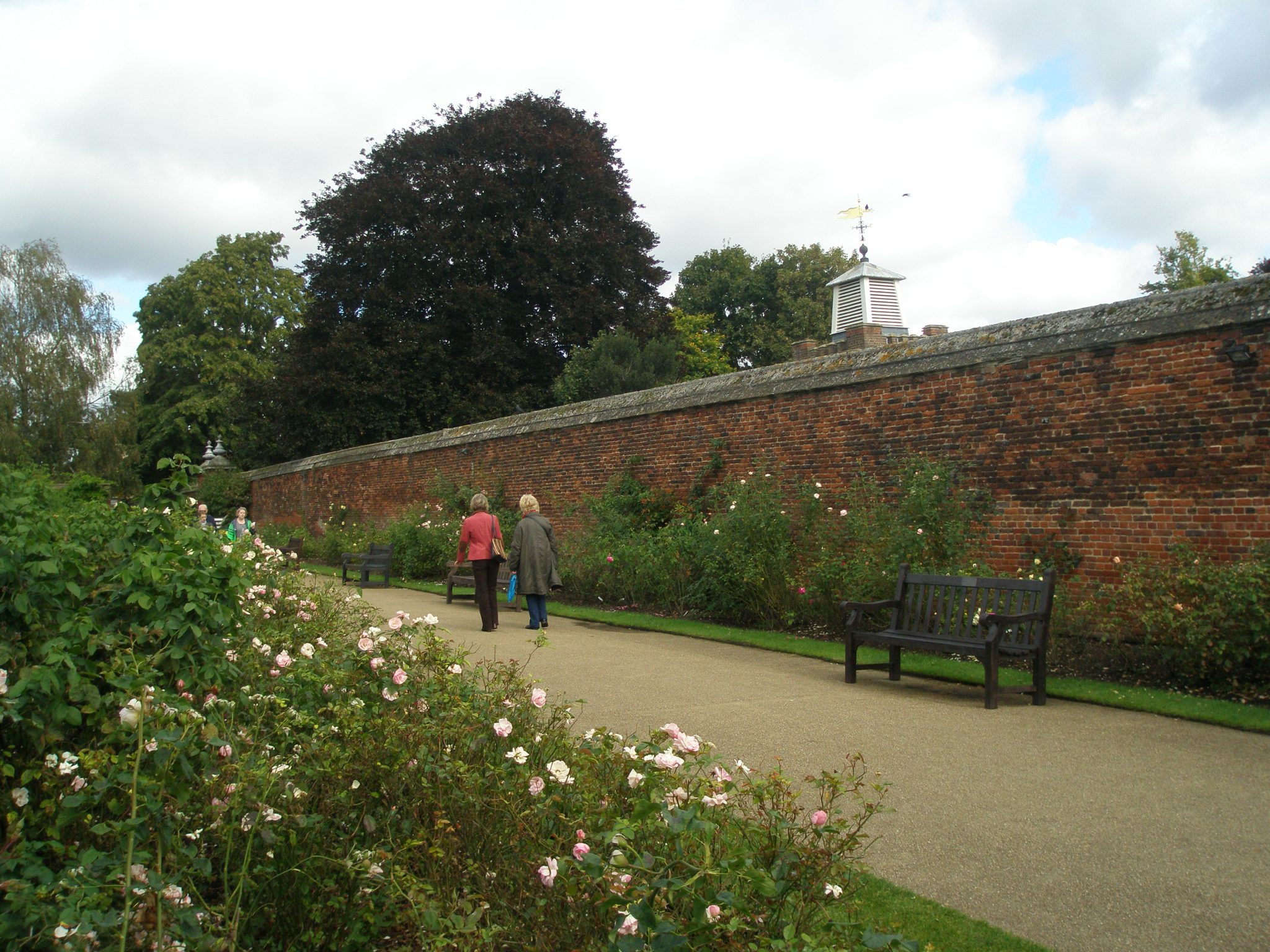
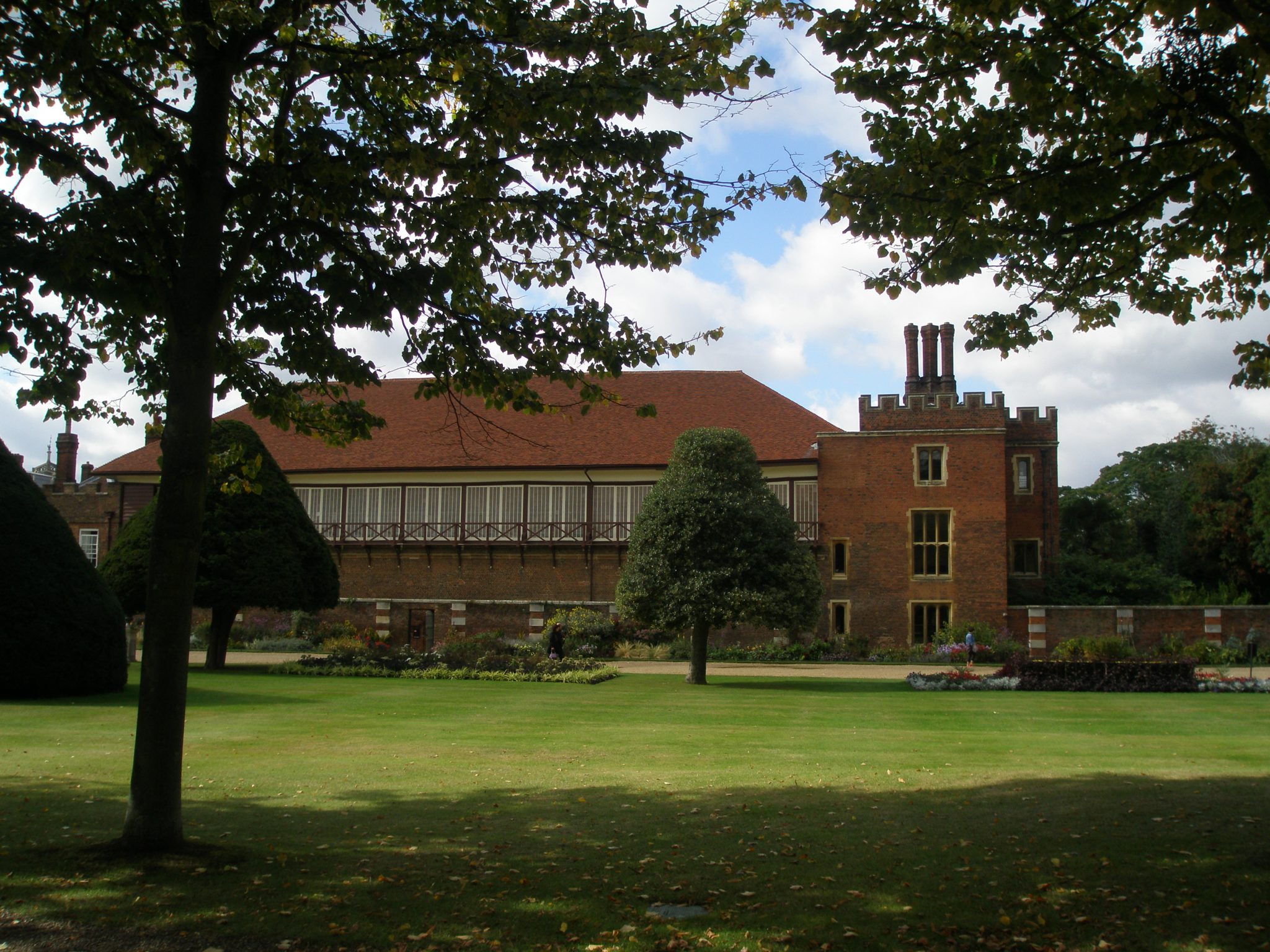
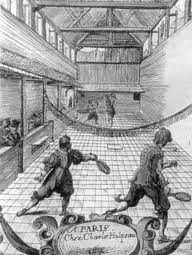

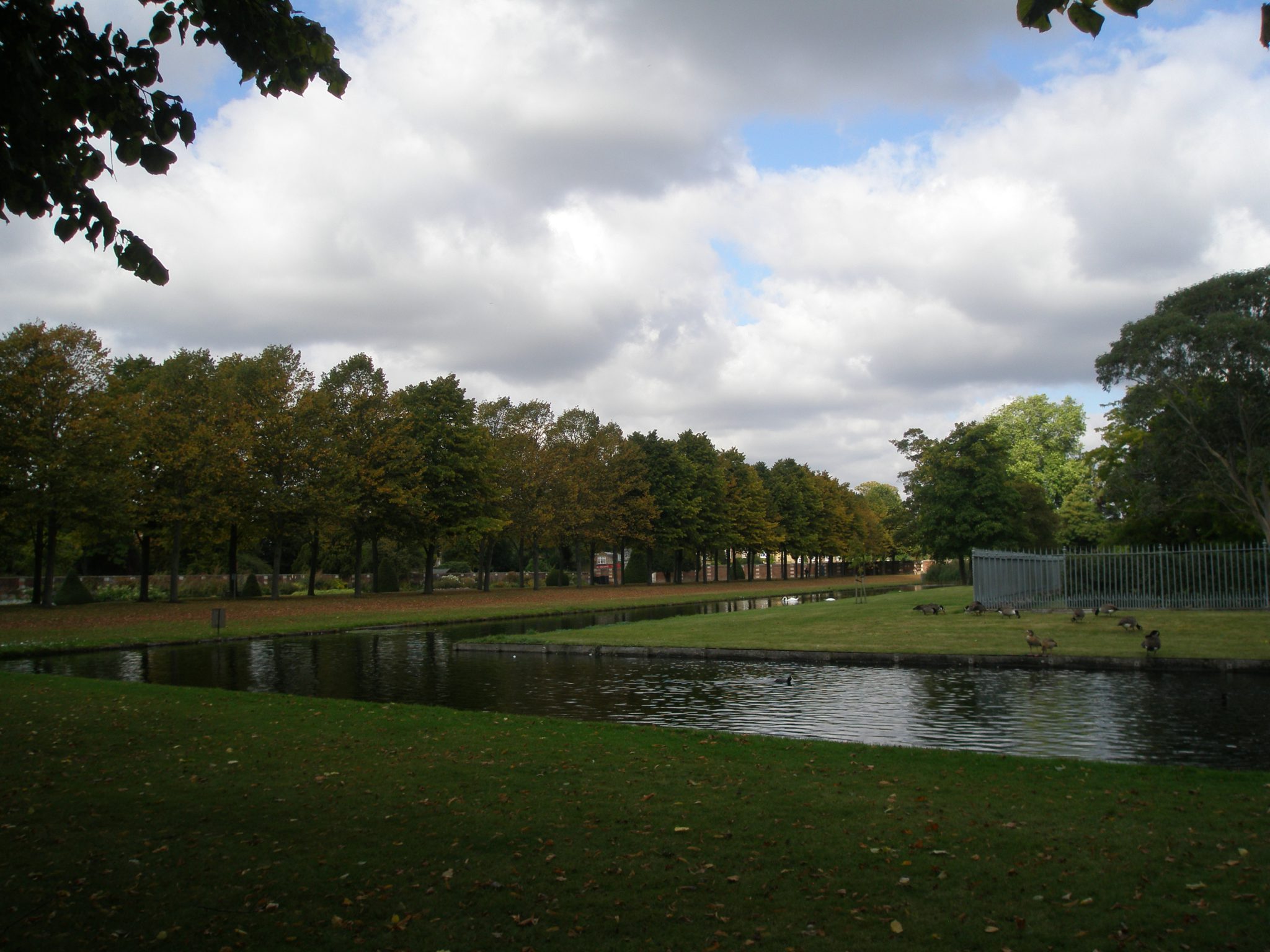
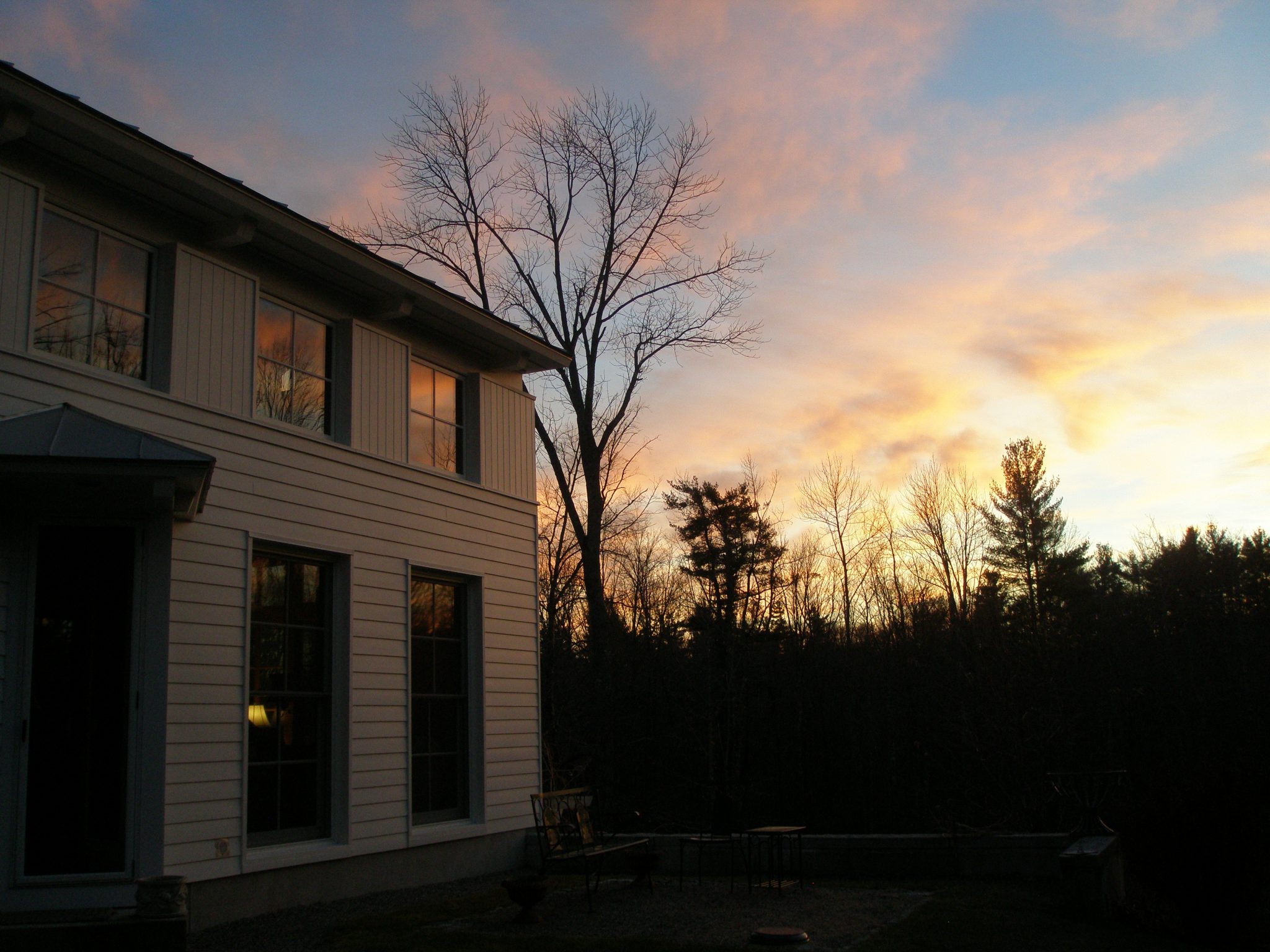
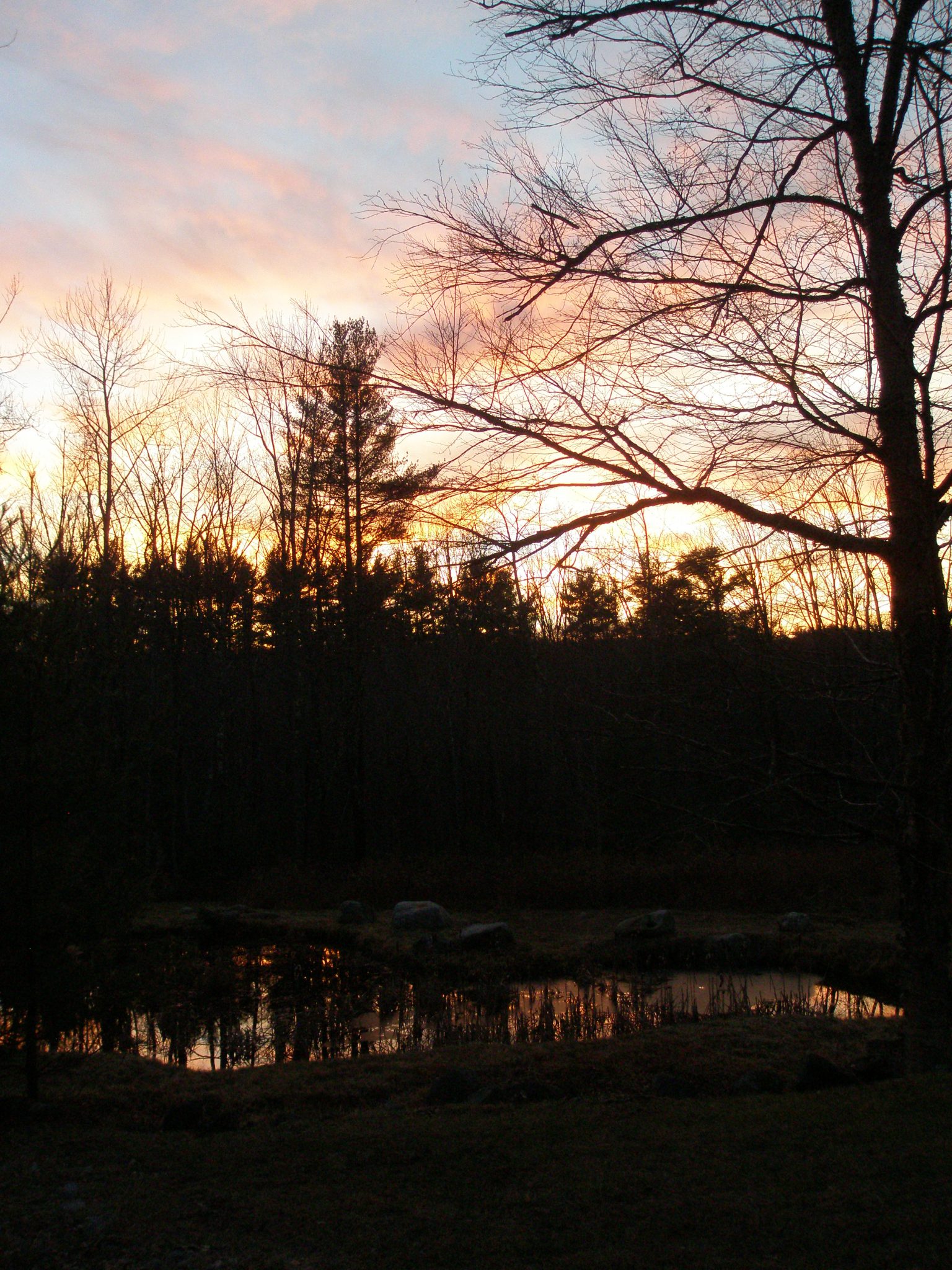
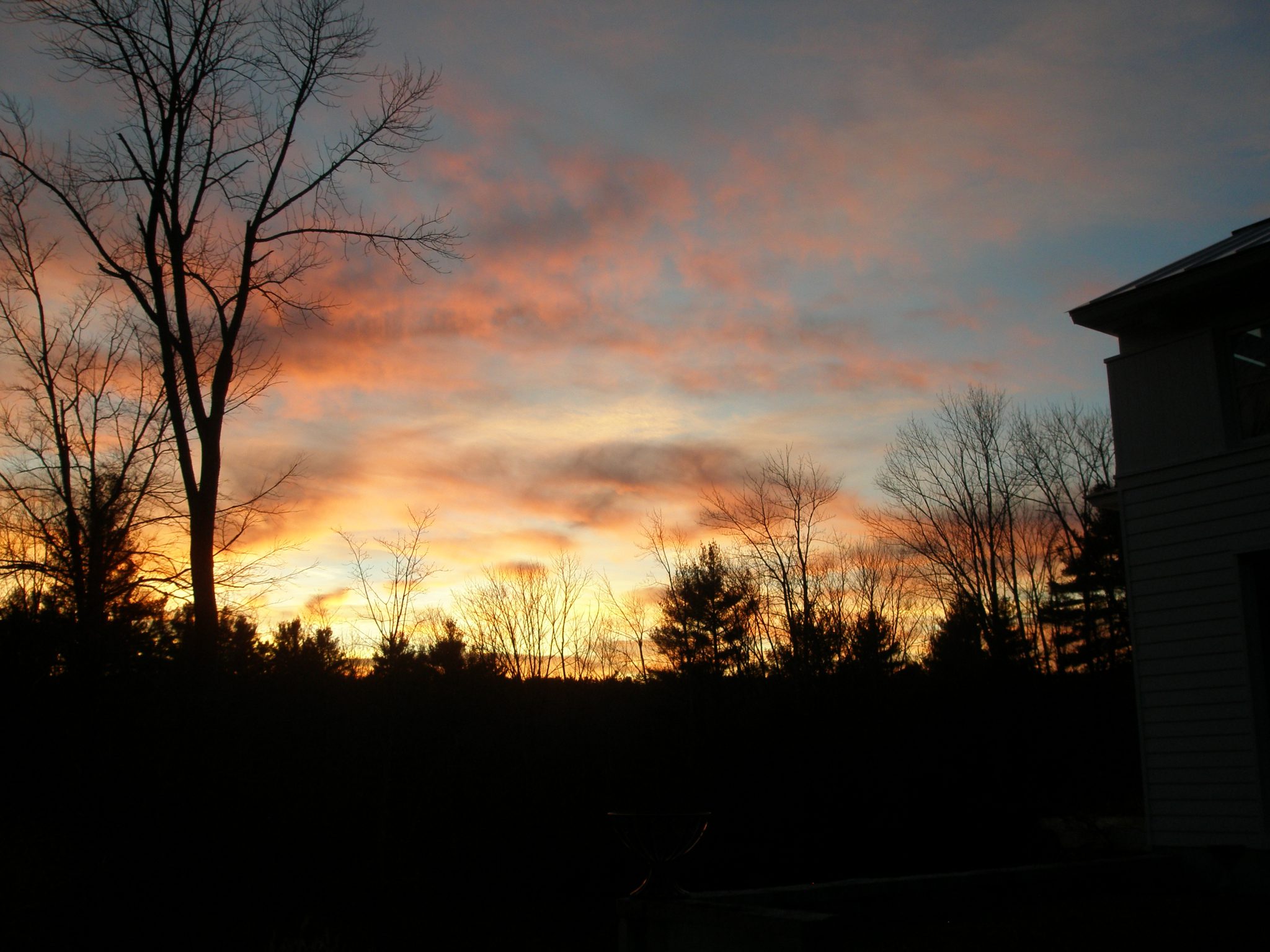
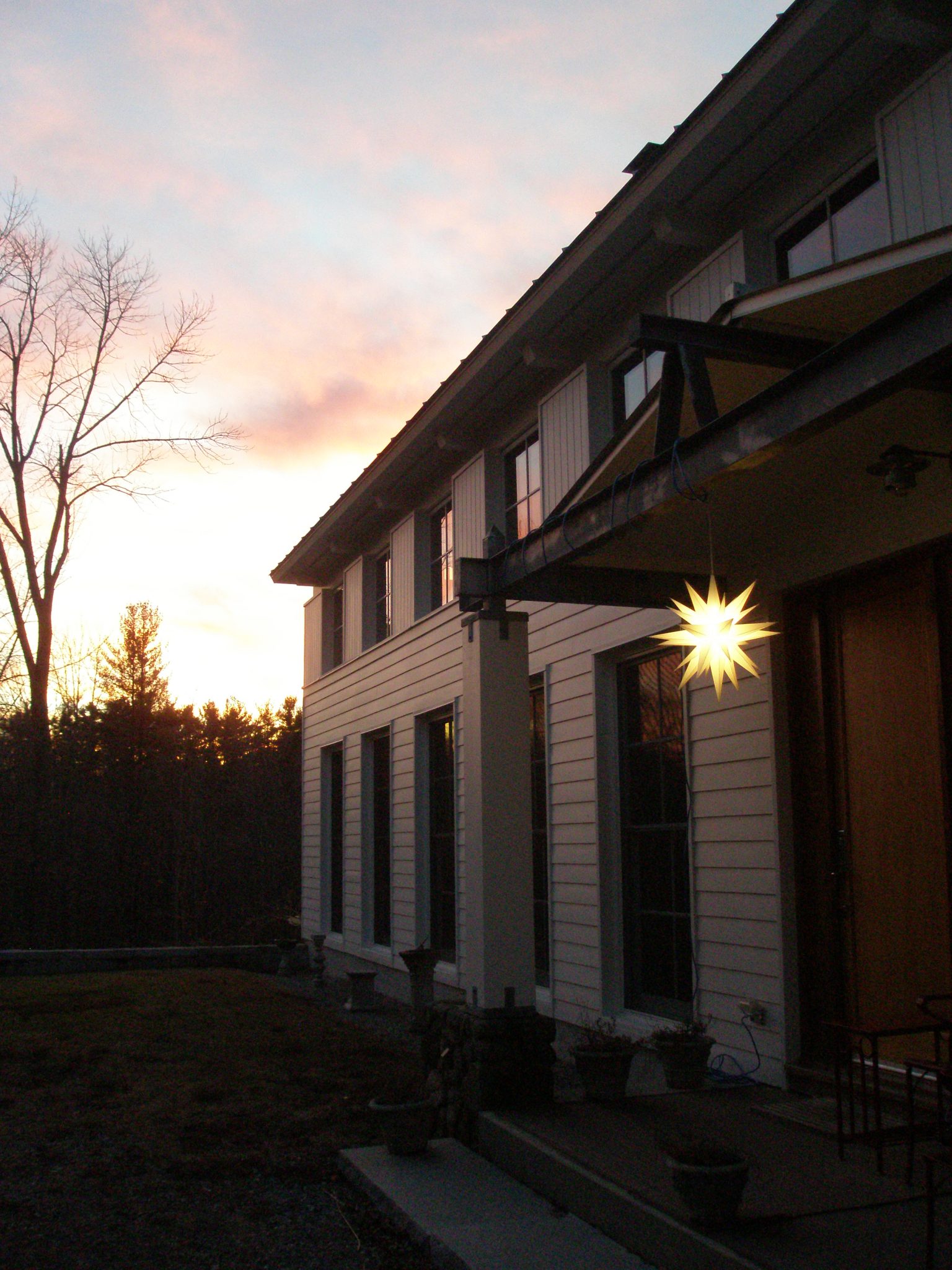
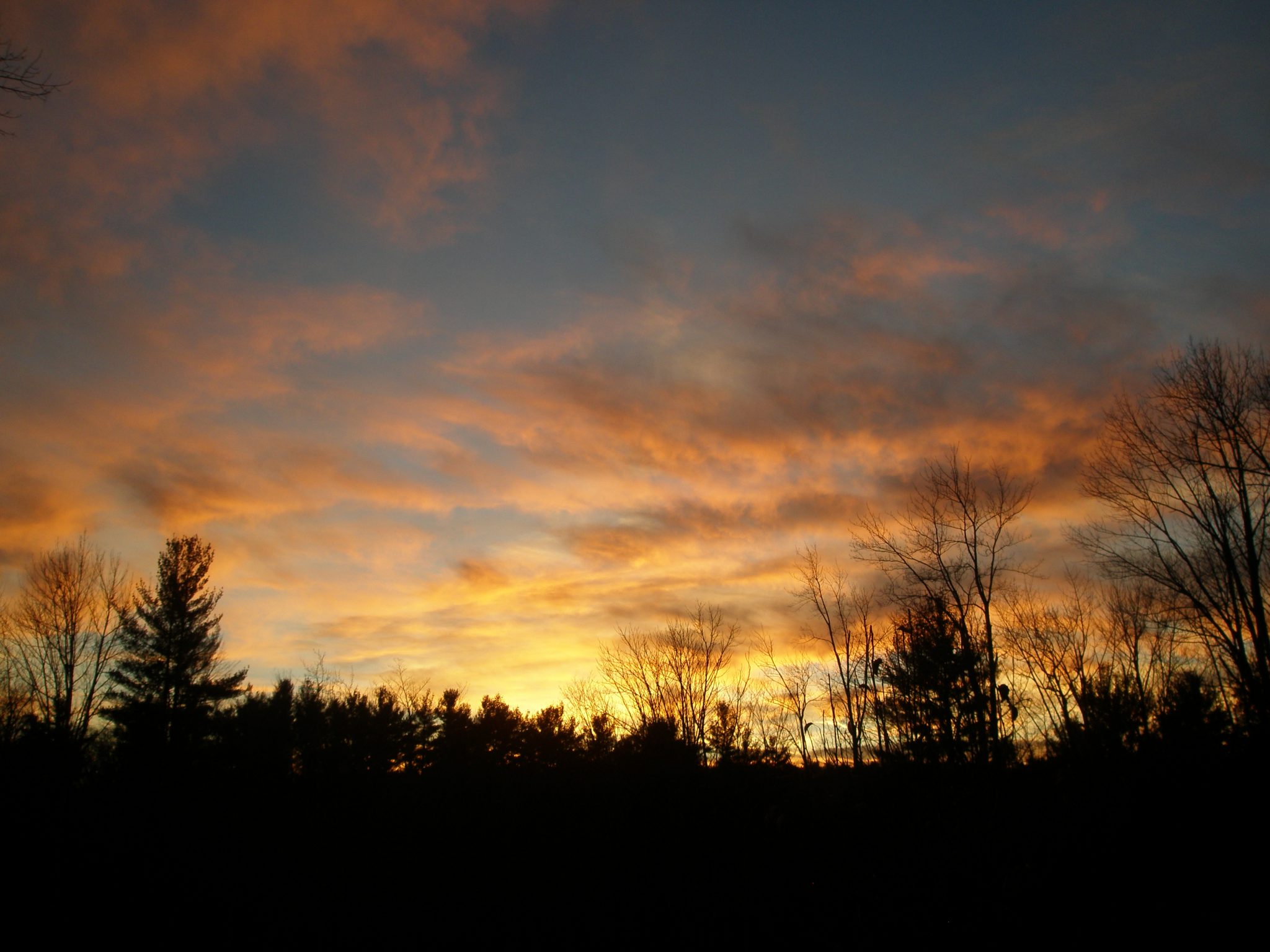
4 Responses to The Great Canopy of London’s Skies;Getting Older in Greenwich;& Garden-Strolling at Hampton Court Palace